April 18. Up at 5:30, breakfast, then boat across to our jeep with G. As the sun rises, we head out on our game drive—target cheetahs, and then, lions. As with the leopards on the mobile safari, we strike out on finding cheetahs, but do encounter other interesting game.
Kudus are not very unusual, but we found some in lovely early morning light, which made for good photo ops.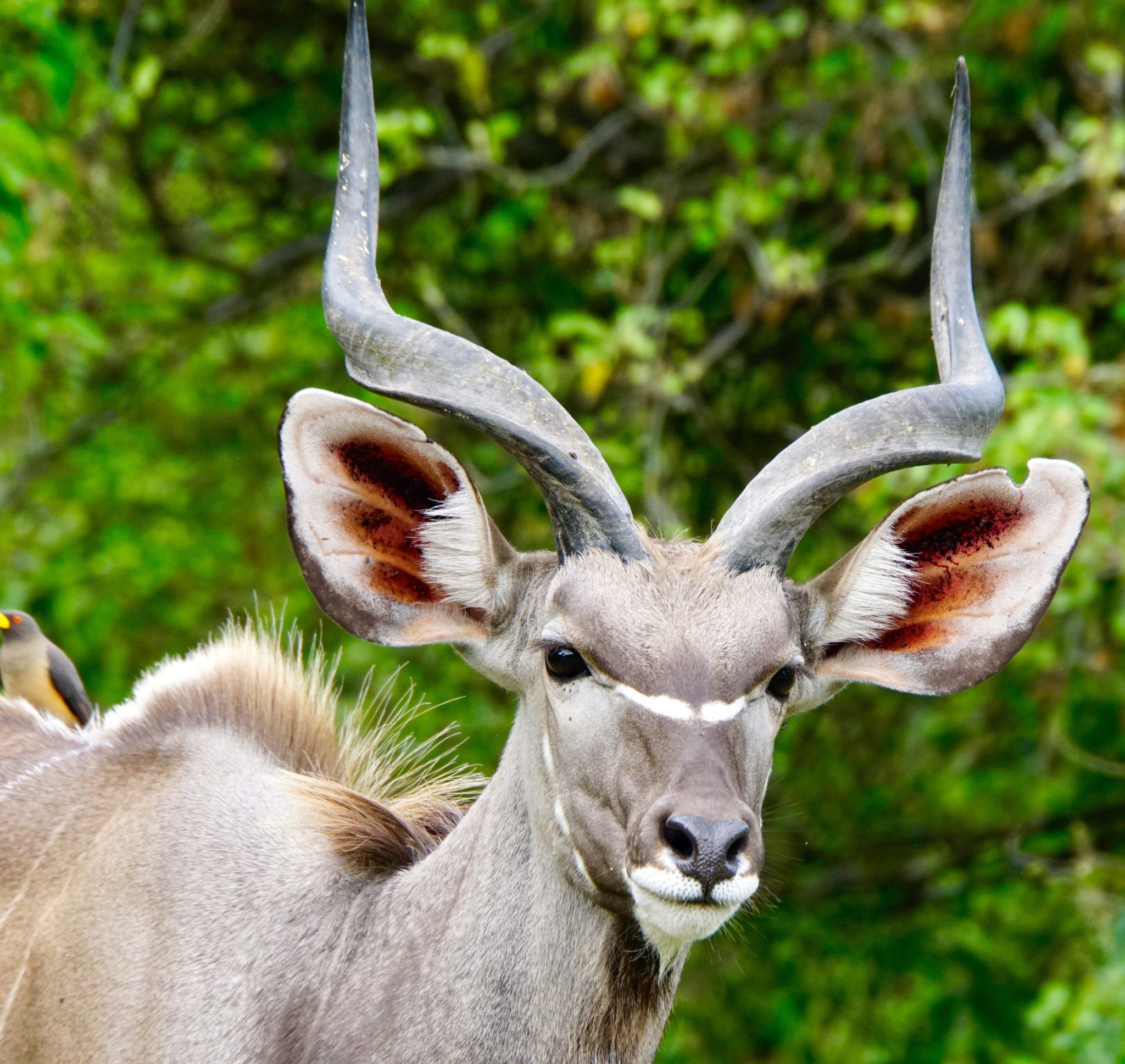
Sable are spectacular antelopes, and we find a large group that we stick with and drive around to photograph from various perspectives.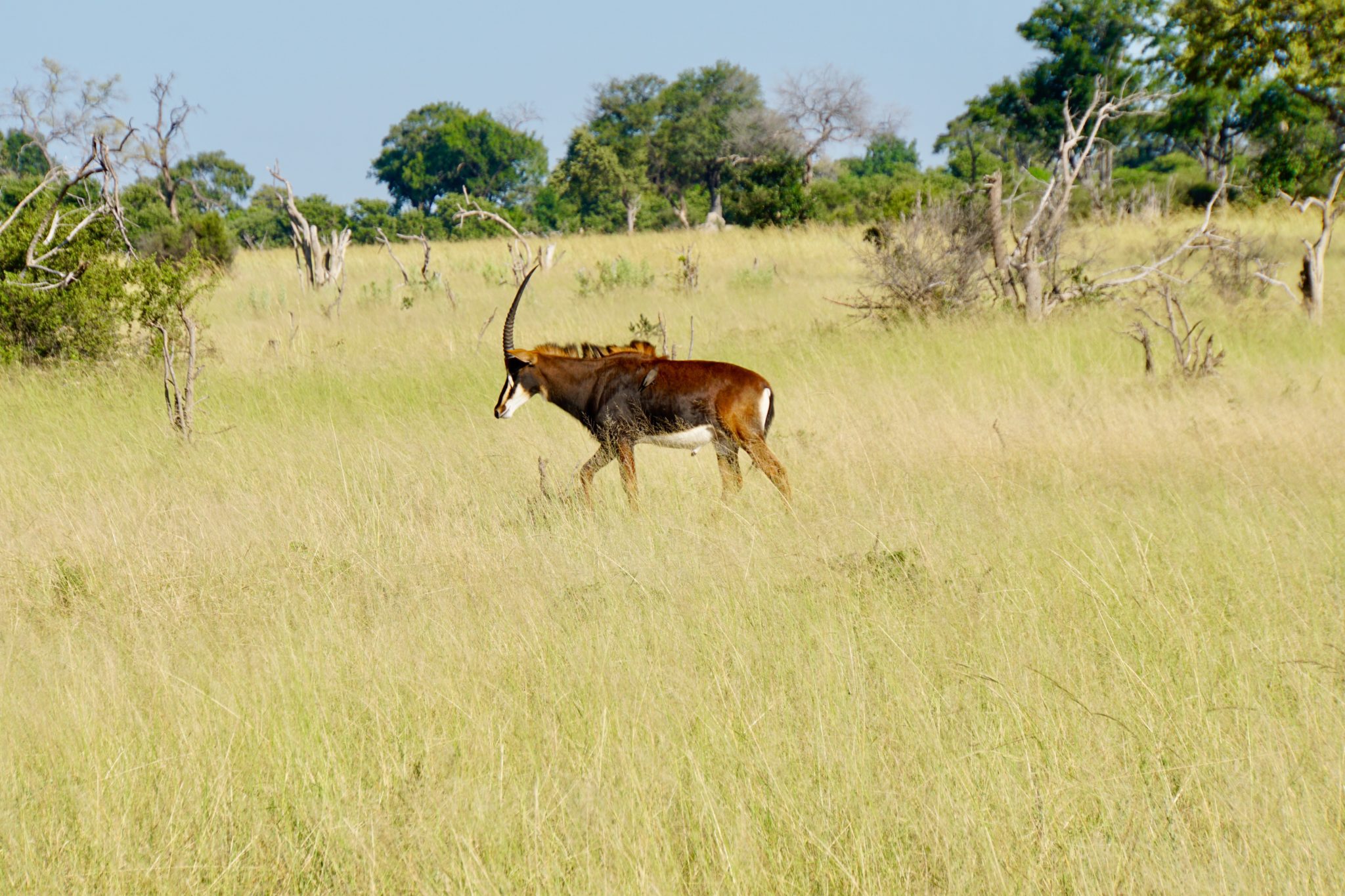 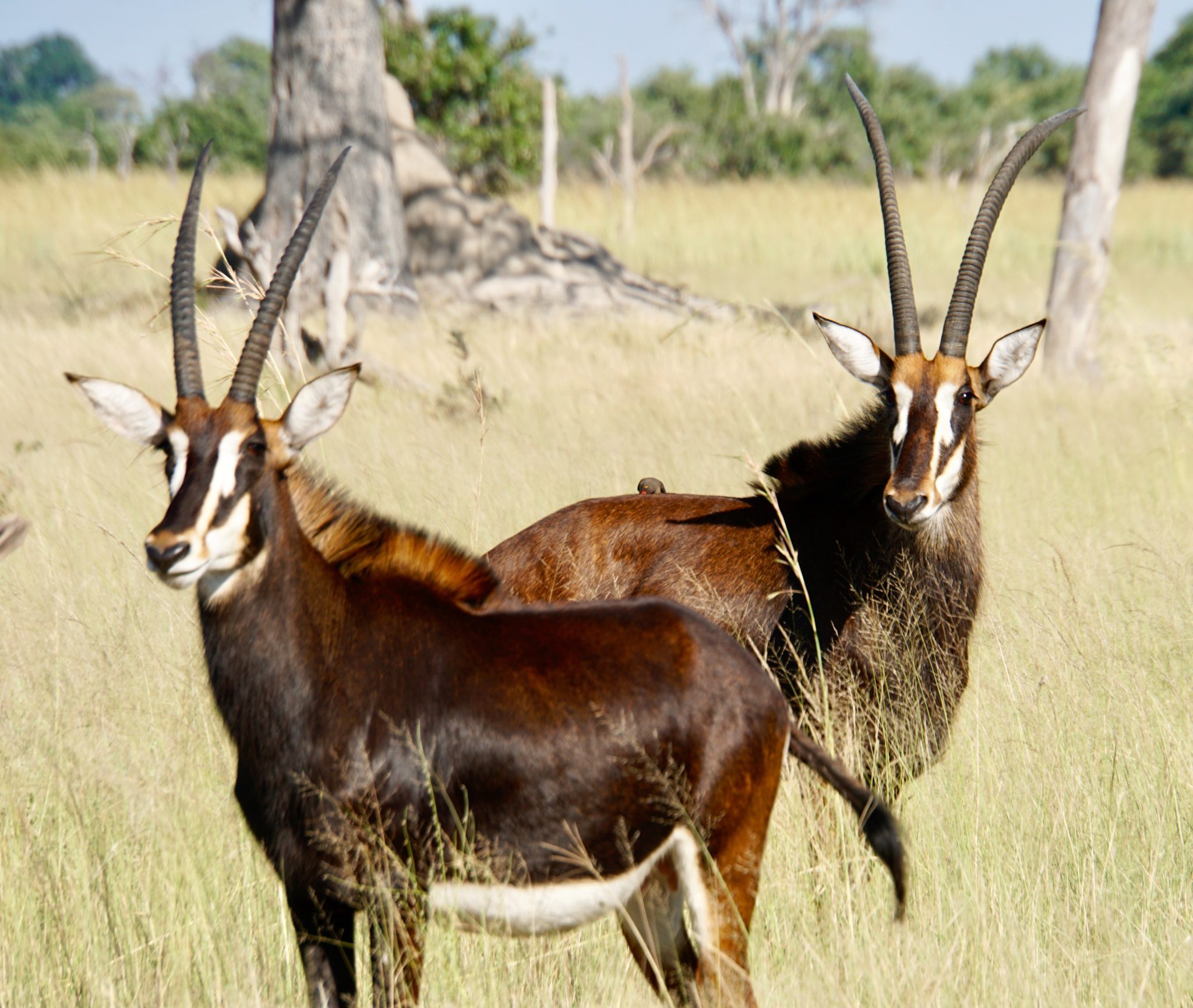 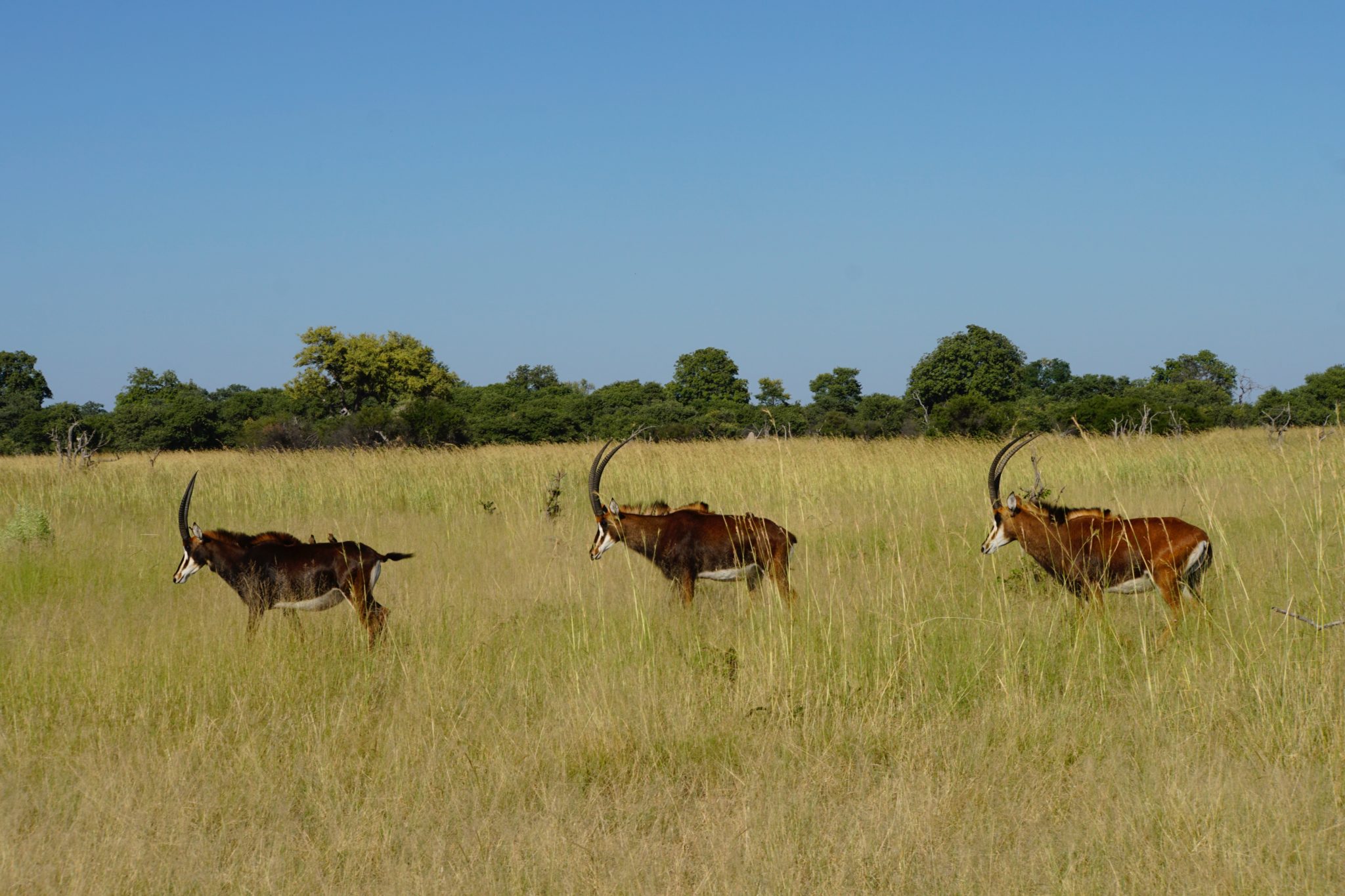
Jackals are quite rare, and we get great looks at a pair of them, as they set out to try to find some breakfast.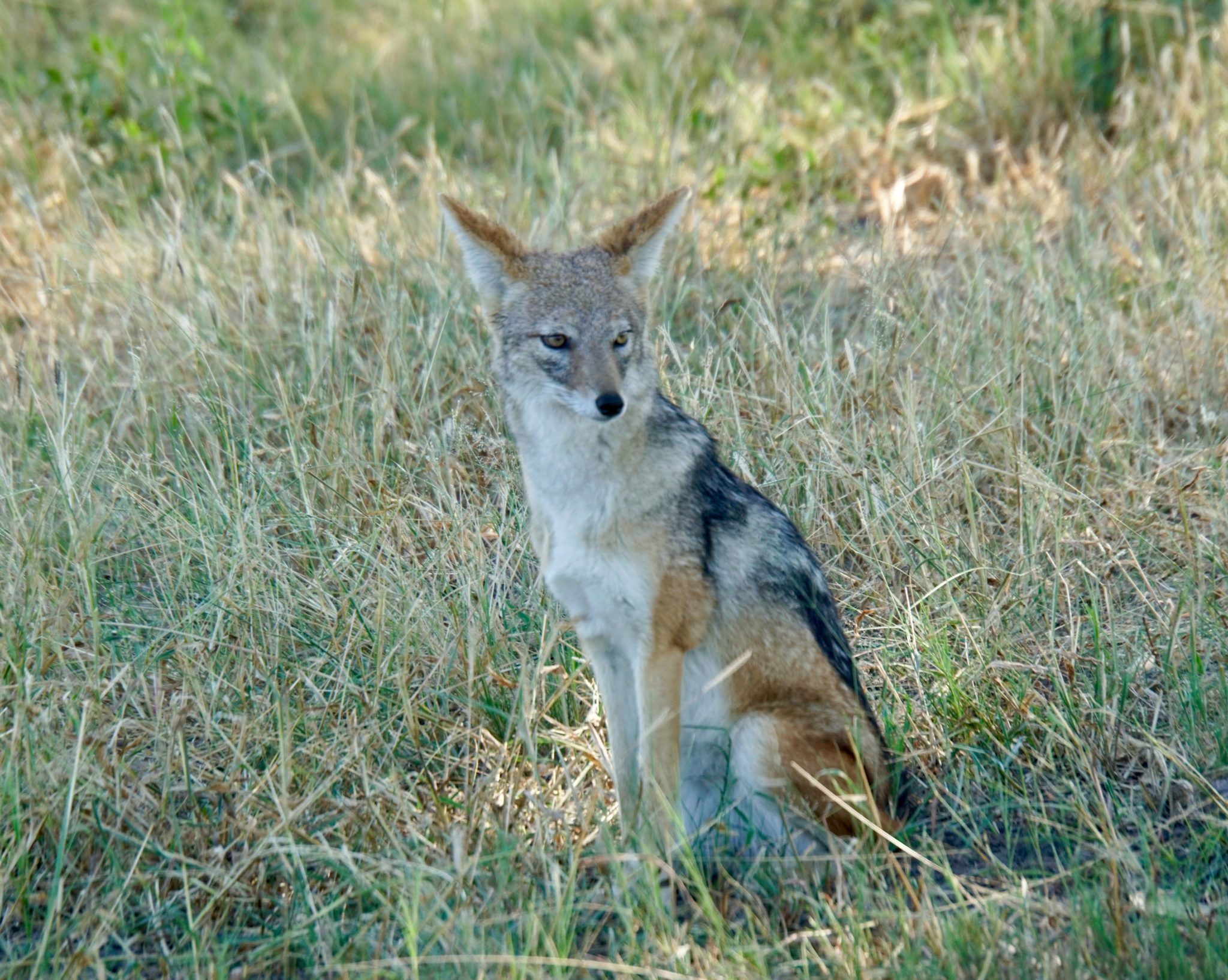 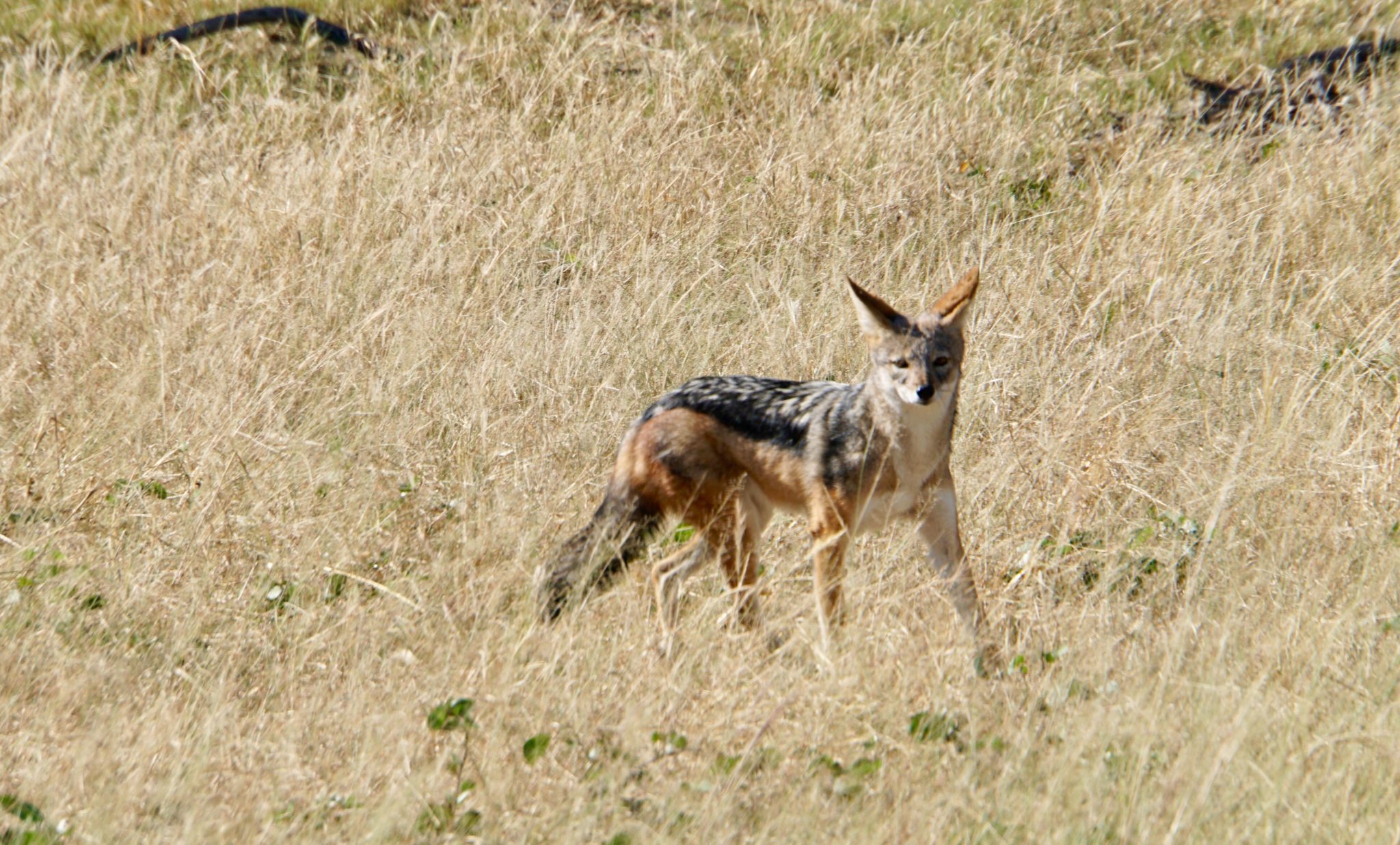
With the help of radio contacts, we are able to find a female lion and her cub, and follow them for more than half an hour, as they prepare to hunt. 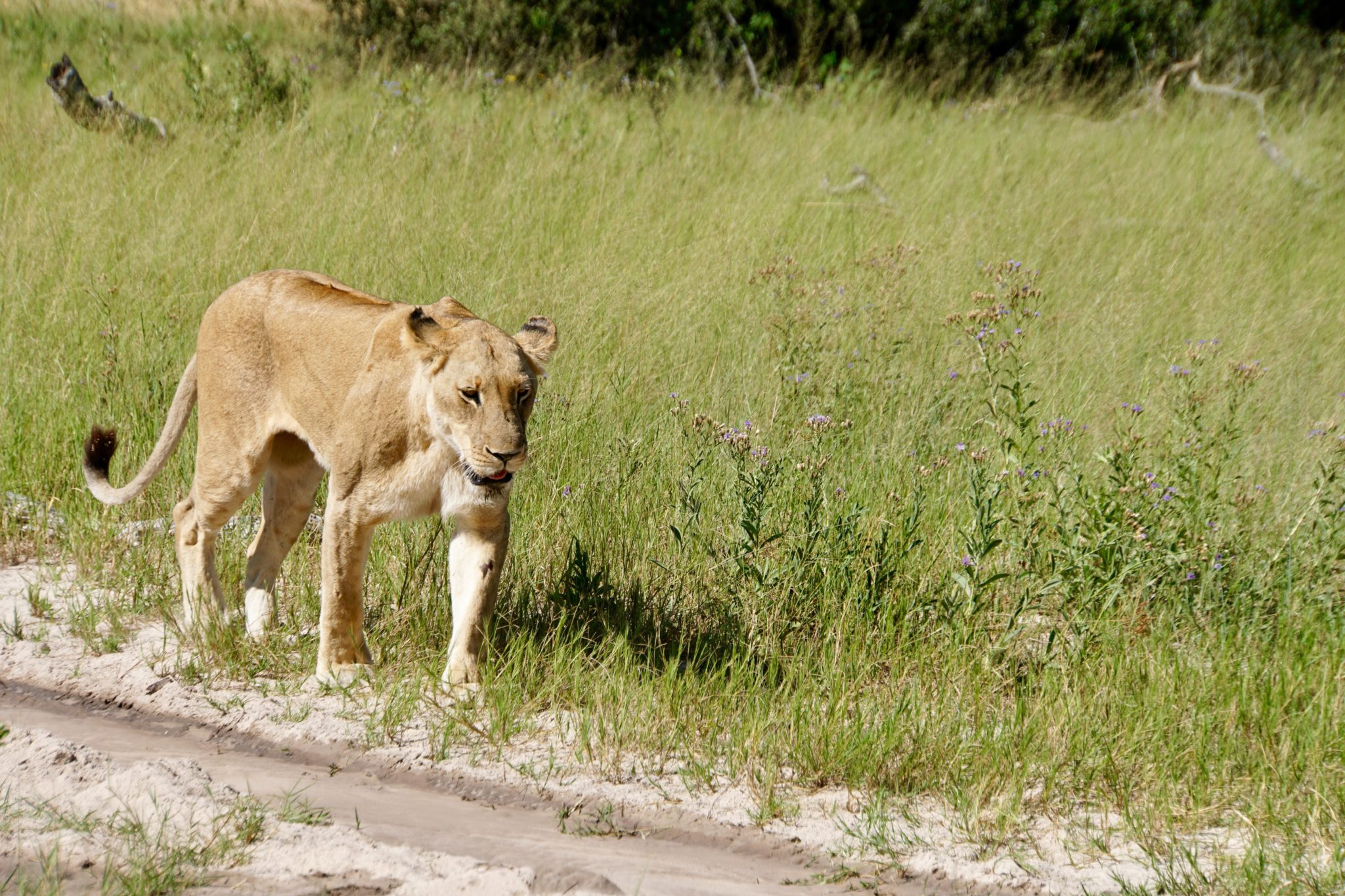 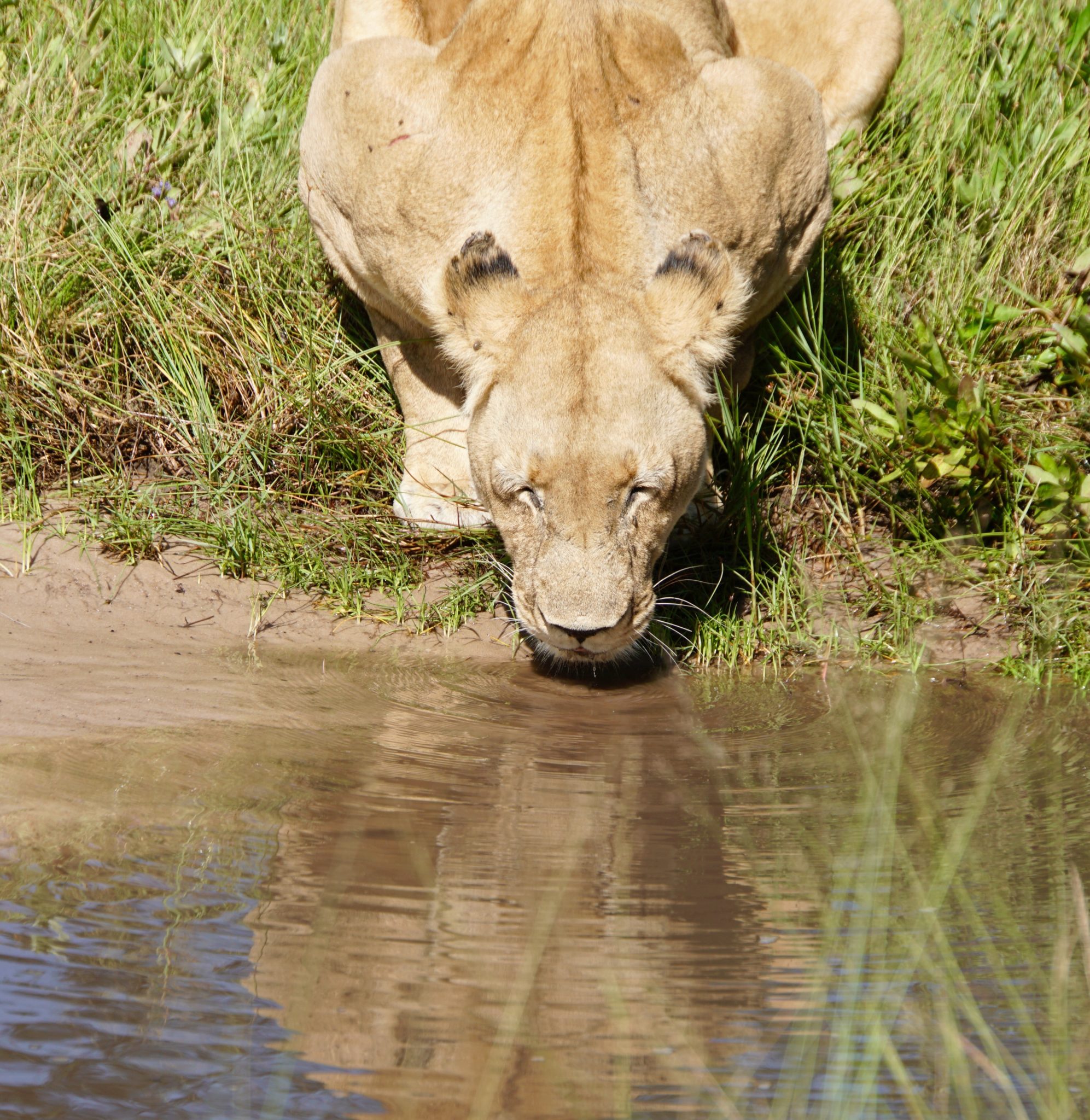 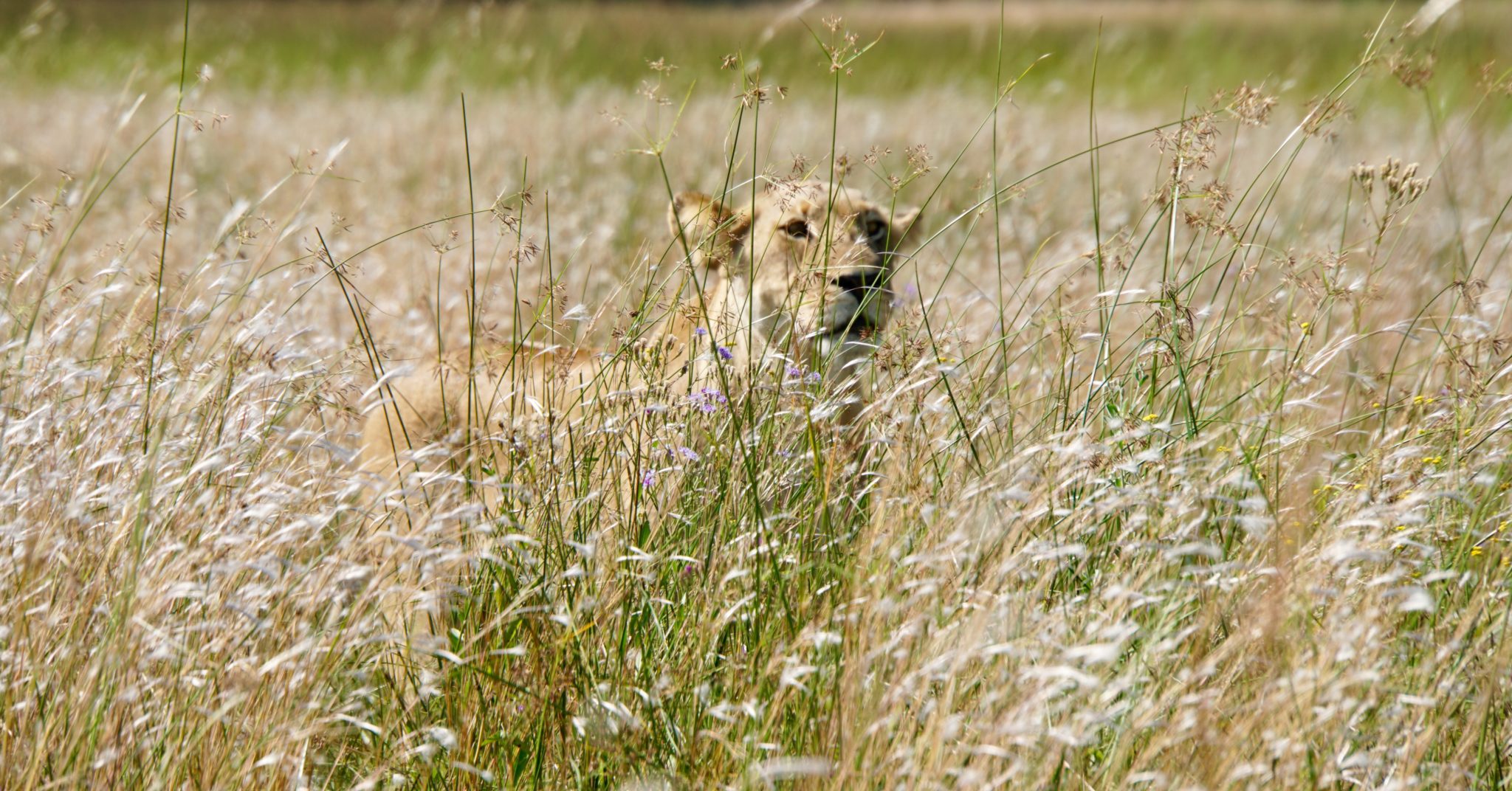 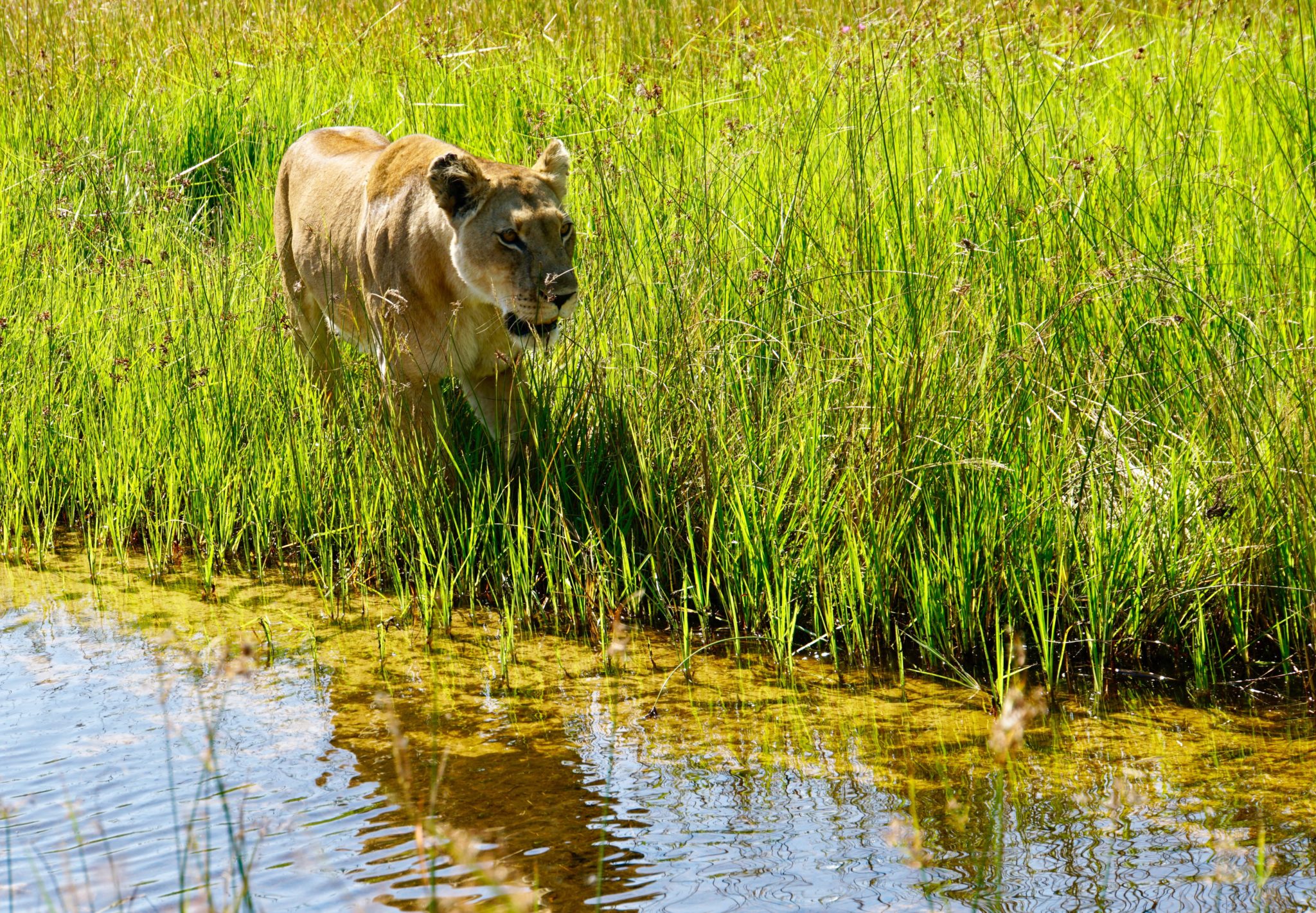 A saddle-billed stork also gets into the picture. A saddle-billed stork also gets into the picture.
Finally, on our way back to the camp for lunch, we encounter two beautiful wattled cranes.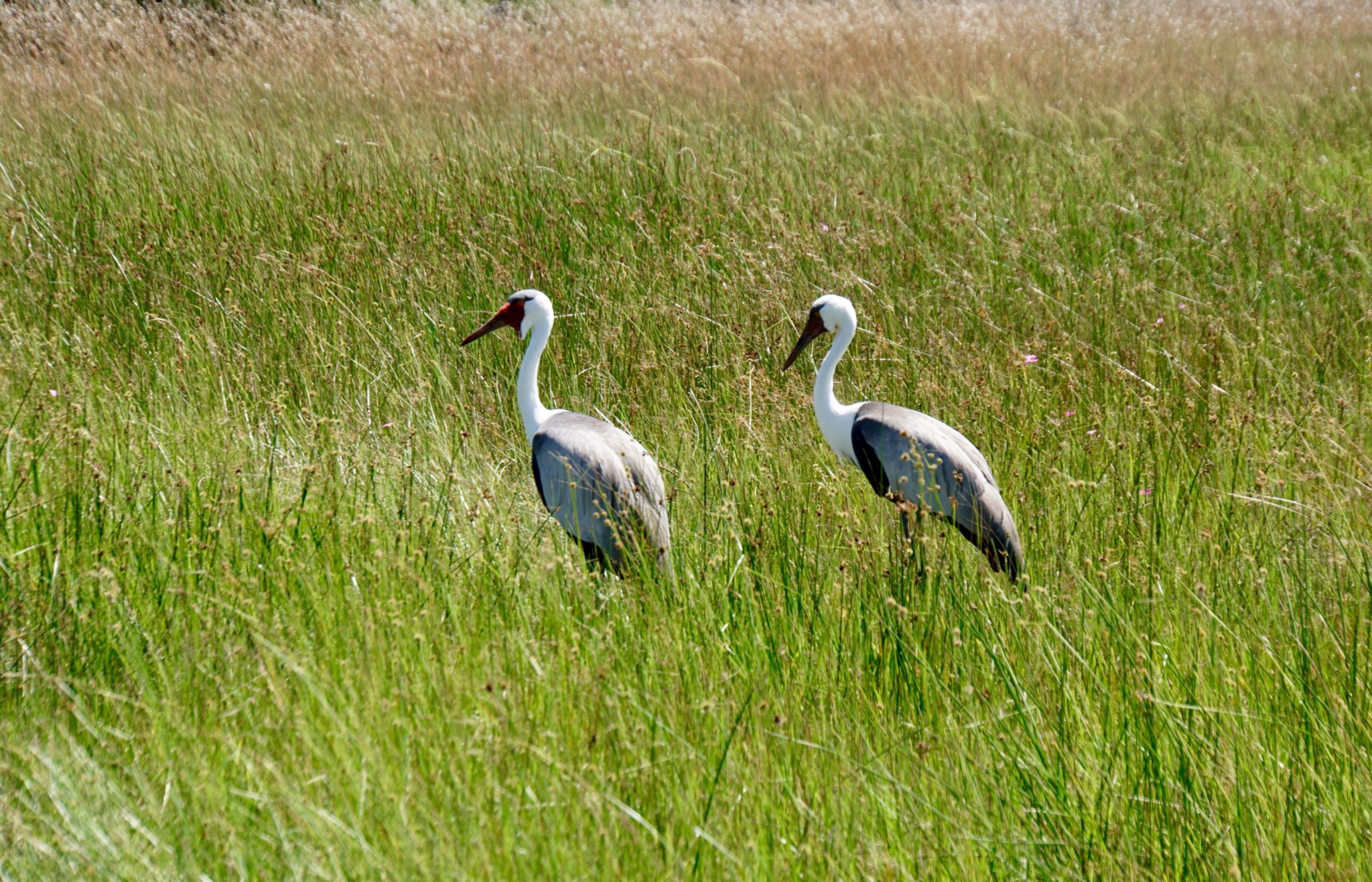
Back at the camp, we have a delicious buffet lunch, joined by G and Antoine, a South African, who along with his girlfriend, Laura, manage Little Vumbura. Back to the tent for siesta time, before our afternoon activity, mokoros.
Mokoros are dugout canoes and ours are poled along by local villagers employed by the camp for that purpose. It’s exceedingly quiet and peaceful. We see tiny frogs and little bee eaters at eye level. Phoebe and I share one mokoro and Carol is poled in the other. We stop at an island for drinks, then continue back to camp, completing our two-hour trip.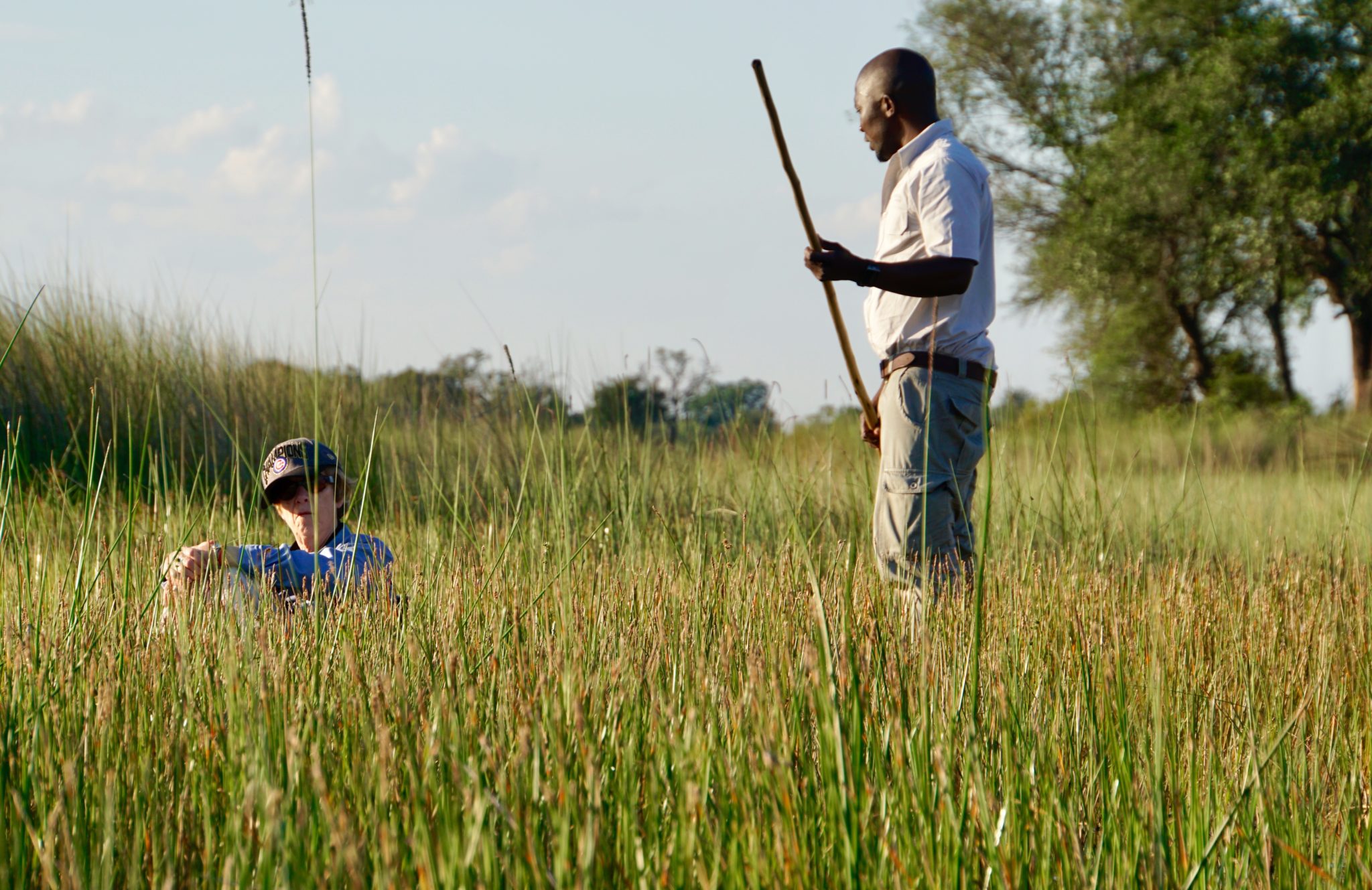 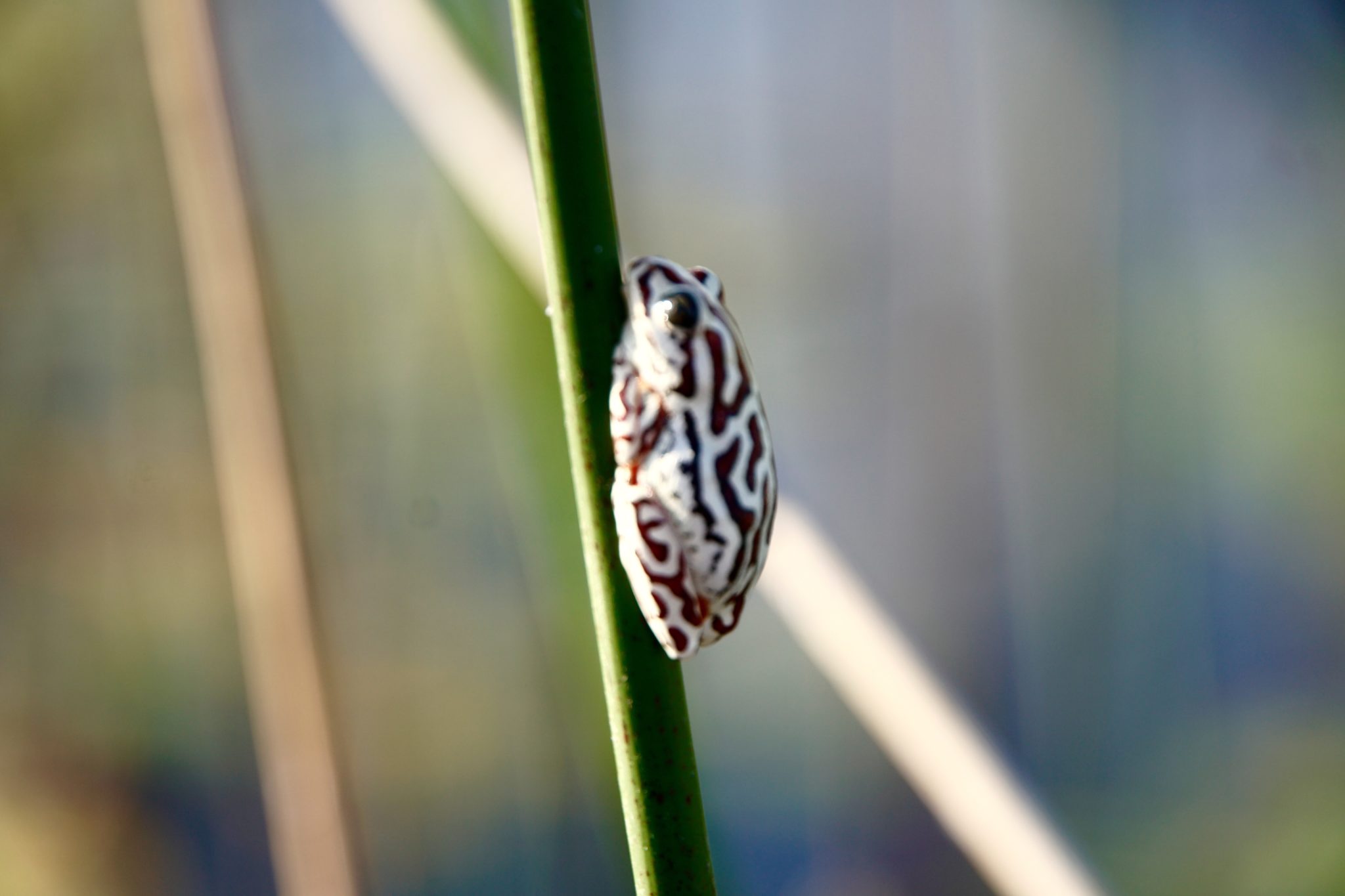 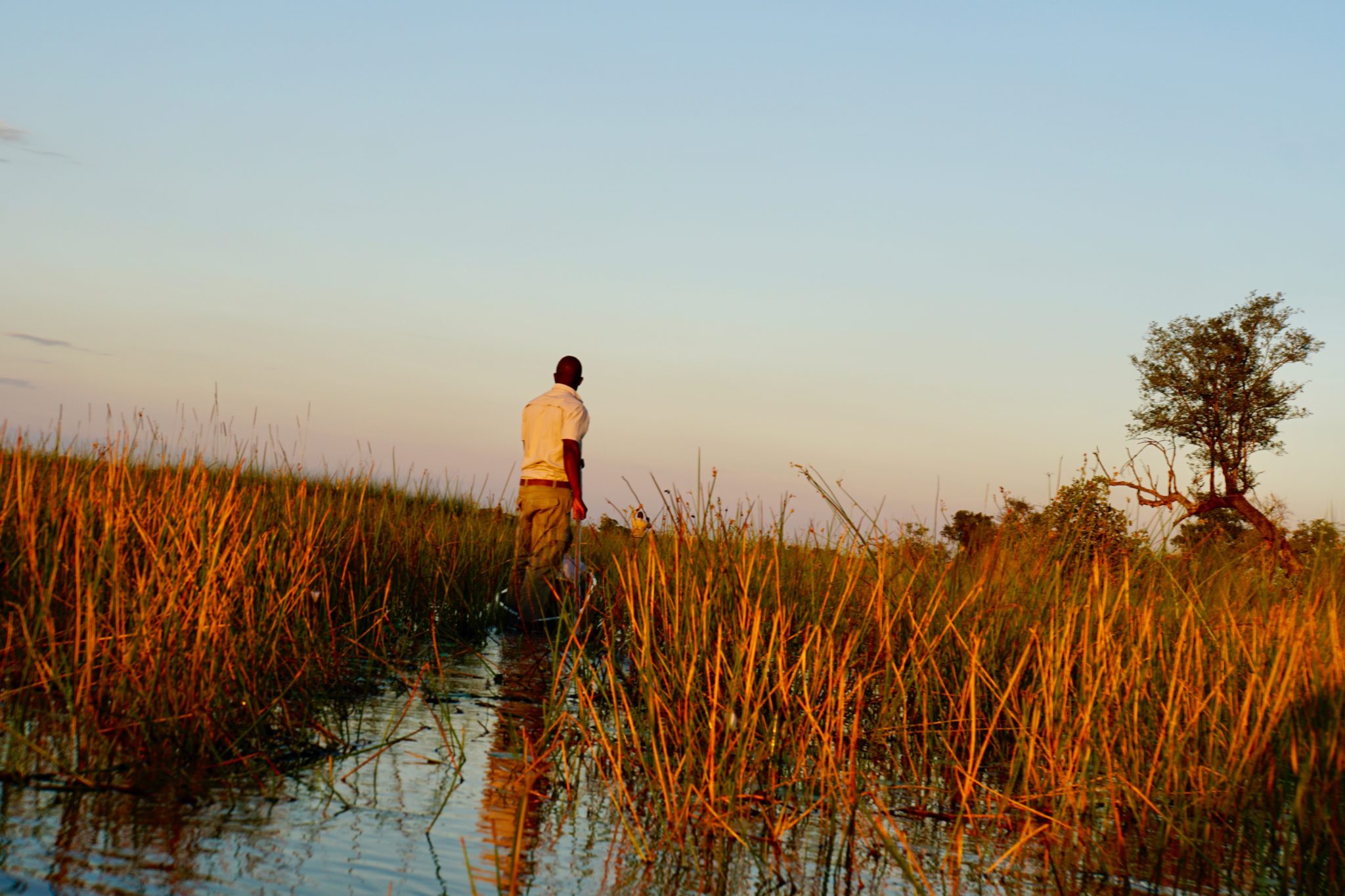
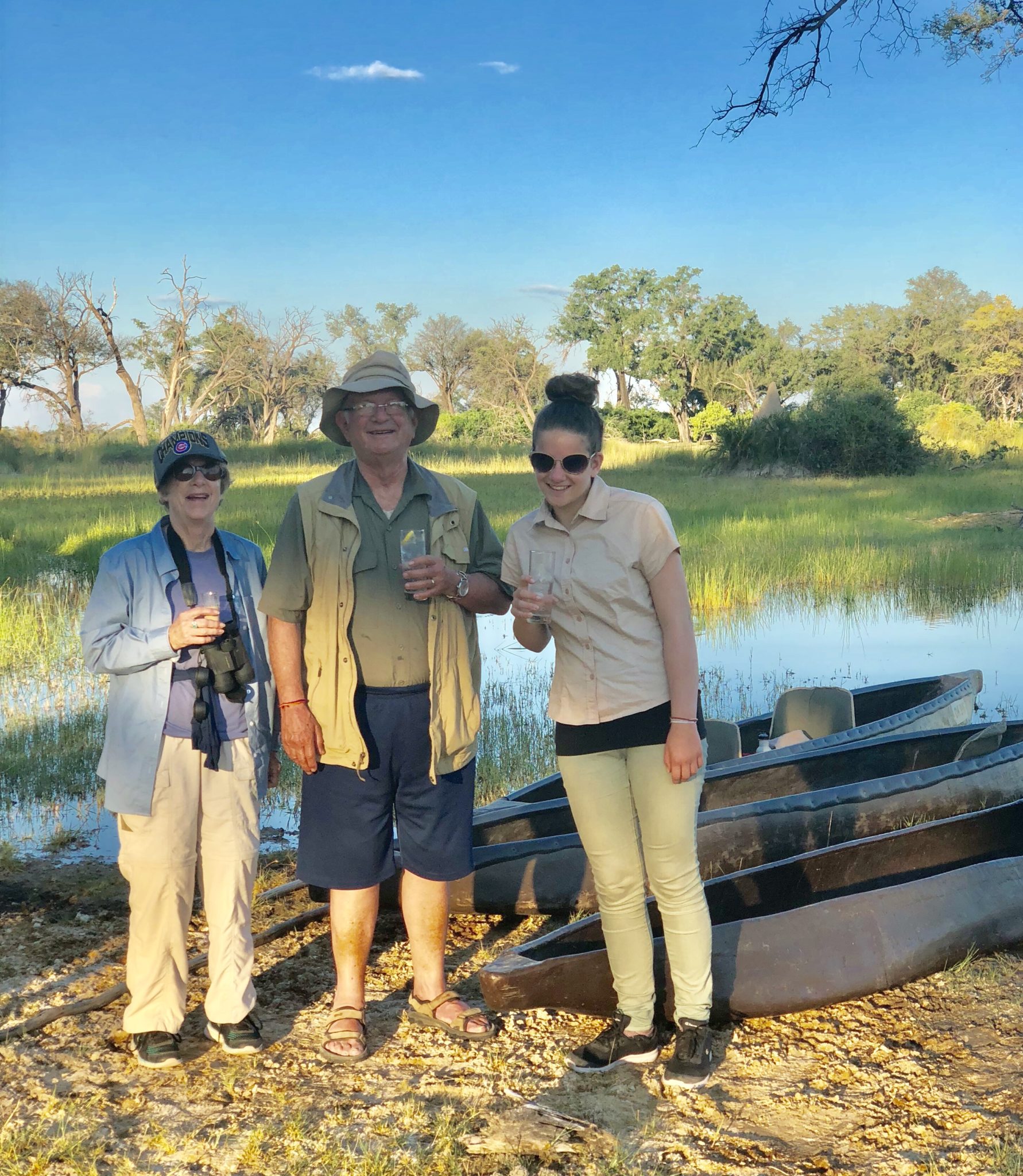 Back at the camp, Carol and I enjoy drinks by the fire under an incredible, starry sky, chatting with Laura and Antoine, We move to a delicious buffet dinner, talking with Bonnie and Ginny again, as well as their guide, Lettie. Phoebz learns how to make bracelets, which she makes for Maxi and friends. Back at the camp, Carol and I enjoy drinks by the fire under an incredible, starry sky, chatting with Laura and Antoine, We move to a delicious buffet dinner, talking with Bonnie and Ginny again, as well as their guide, Lettie. Phoebz learns how to make bracelets, which she makes for Maxi and friends.
We retire for showers, blogging, reading or whatever.
April 17.
After breakfast this morning, we take a 3-hour game drive to the airstrip. We locate our THIRD group of wild dogs and spend time watching them. We also spot a range of other game, including hippos, crocodiles and elephants, as well as many birds. All of this is still terrific, but becoming somewhat second nature to us by now. We’ve failed in our six-day quest to find a leopard, but that, too, seems like part of the experience.
Roger dons his new Cubs hat for our final drive. Before arriving at the air strip, though, we run into a traffic problem, as a herd of water buffalo block the road. Making it through the buffalo, we go into the VIP lounge until our plane arrives for our half hour flight to the final stop on our trip.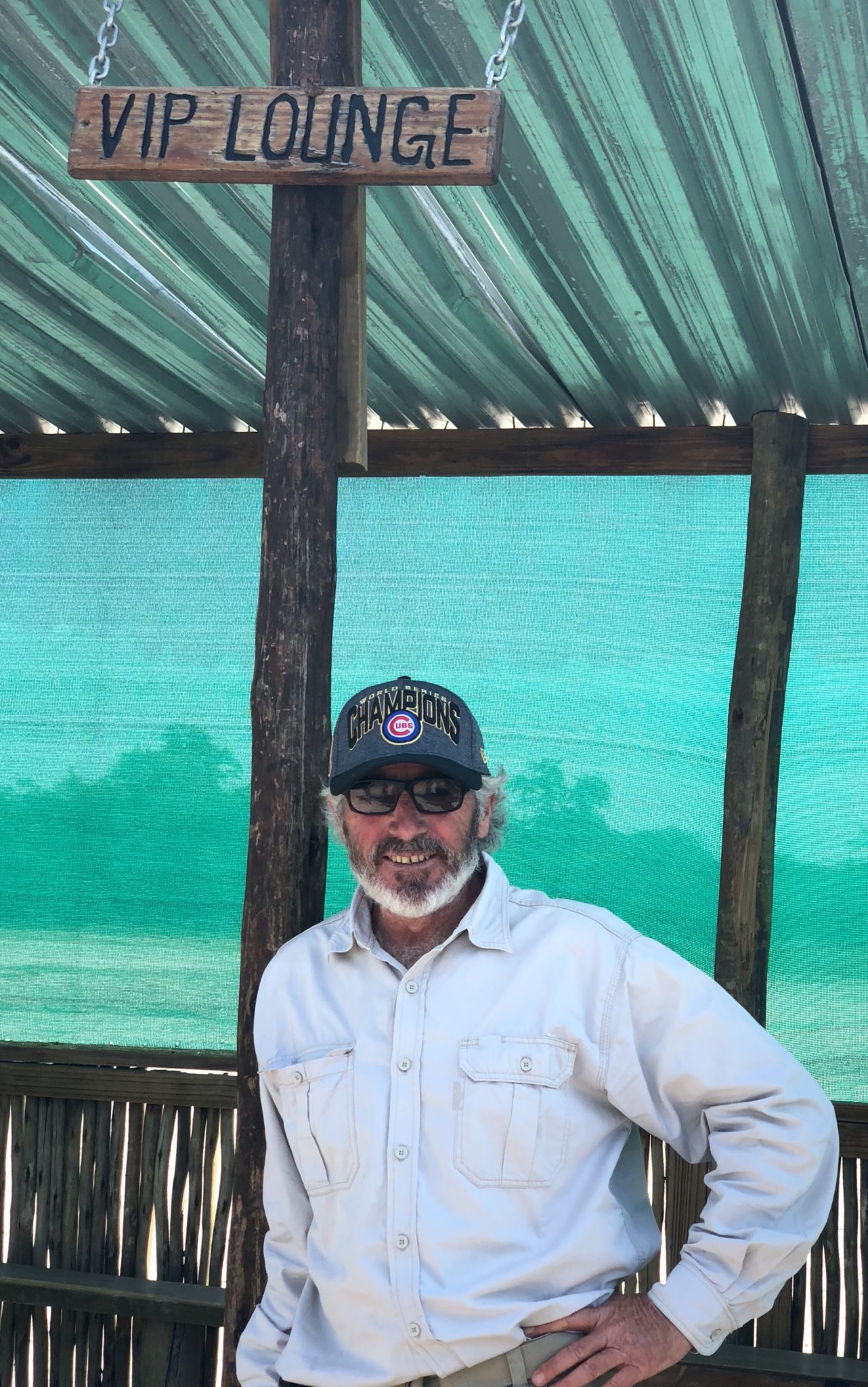 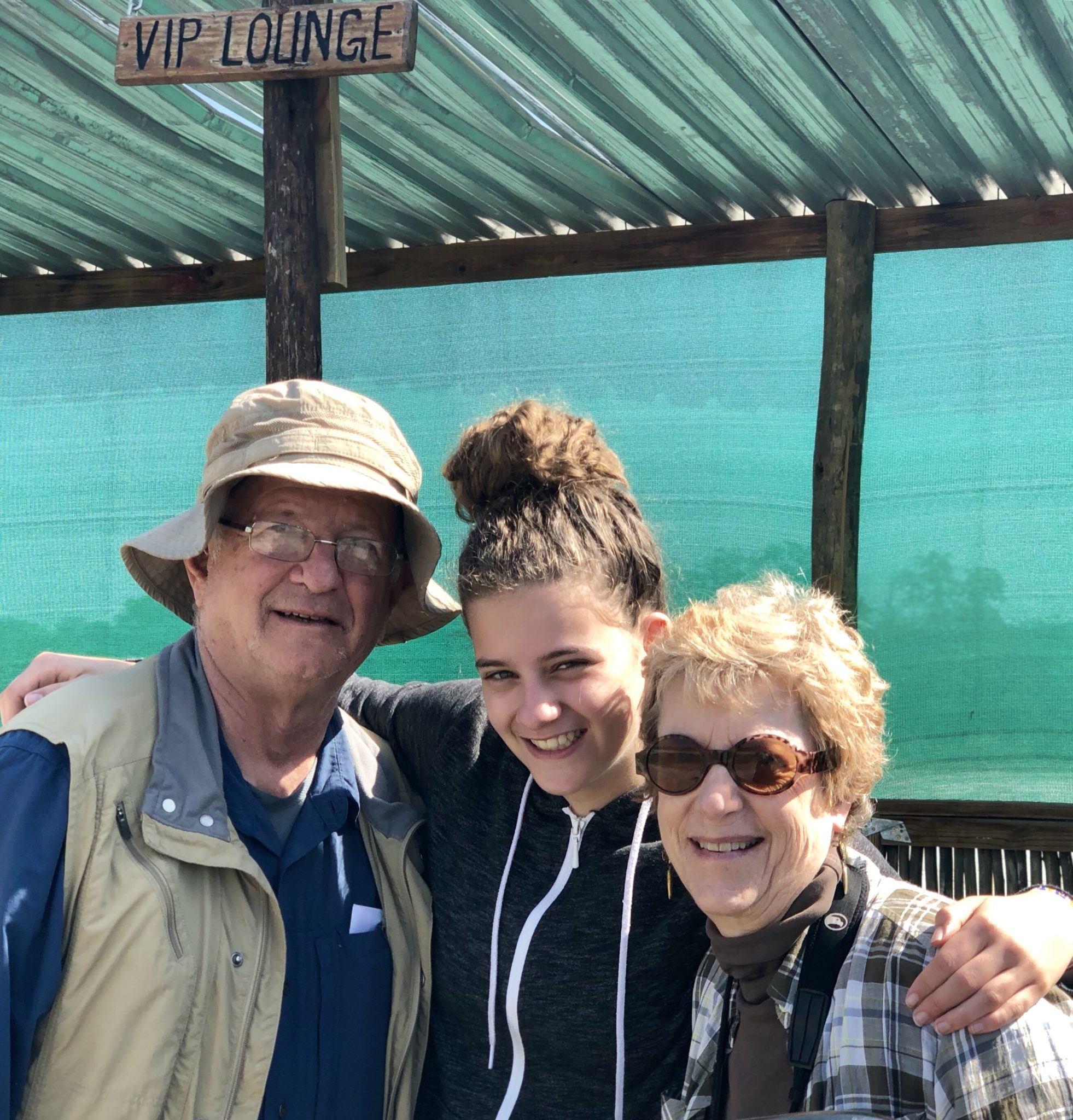
Our short flight affords great views of the Ocavango Delta. 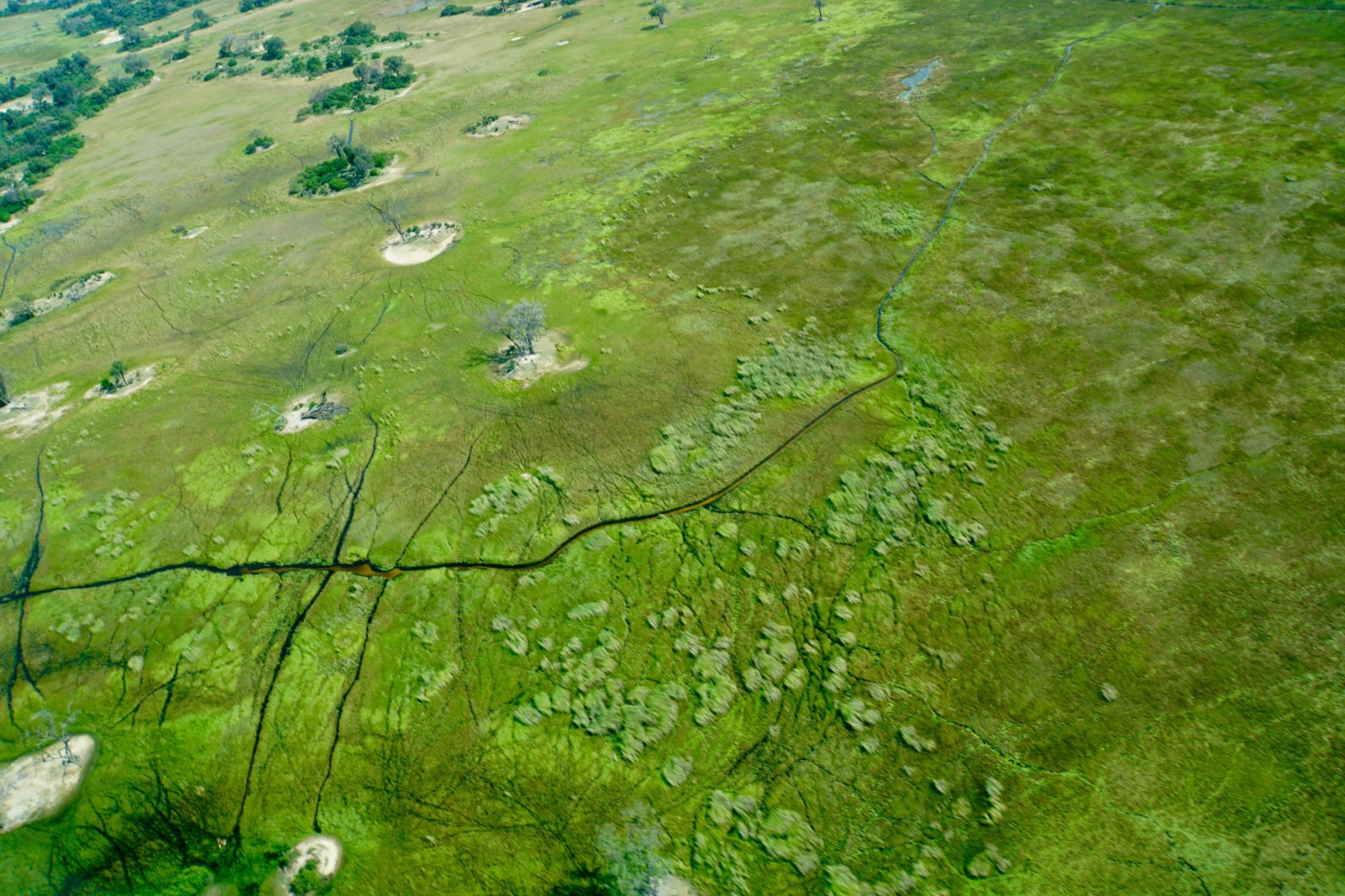 We ride about half an hour from the airport with G, who will be our guide, then have to take a short motor boat ride to reach the camp, which is located on an island. We ride about half an hour from the airport with G, who will be our guide, then have to take a short motor boat ride to reach the camp, which is located on an island.
Little Vumbura is located in a 60,000 hectare private concession in the northern Okavango Delta. Set on a wooded island under the canopy of an ancient forest, the camp blends into pristine surroundings: diverse habitats of permanent swamp, small palm islands, seasonal floodplains and acacia woodlands. The six elevated tents each feature private decks from which to watch the wildlife. Open-plan main areas include a lounge, bar and dining room and guests can savor delicious meals under star-studded skies in the boma (traditionally a livestock enclosure).
Carol and I remember Little Vumbura well and fondly, because we stayed there on our very first trip to Africa in 2003, with our friends Judd and Linda Miner, Bob Bennett and Harriet Trop. It was in no small part due to the success of that first trip that we have now been to Africa a dozen more times. This tented camp is luxurious, a far cry from our mobile safari digs. Our “family tent” is a very nicely appointed two-bedroom, two bath suite. Two red lechwes rest in the grass outside our room and behind them lies the Delta. This place is not shabby.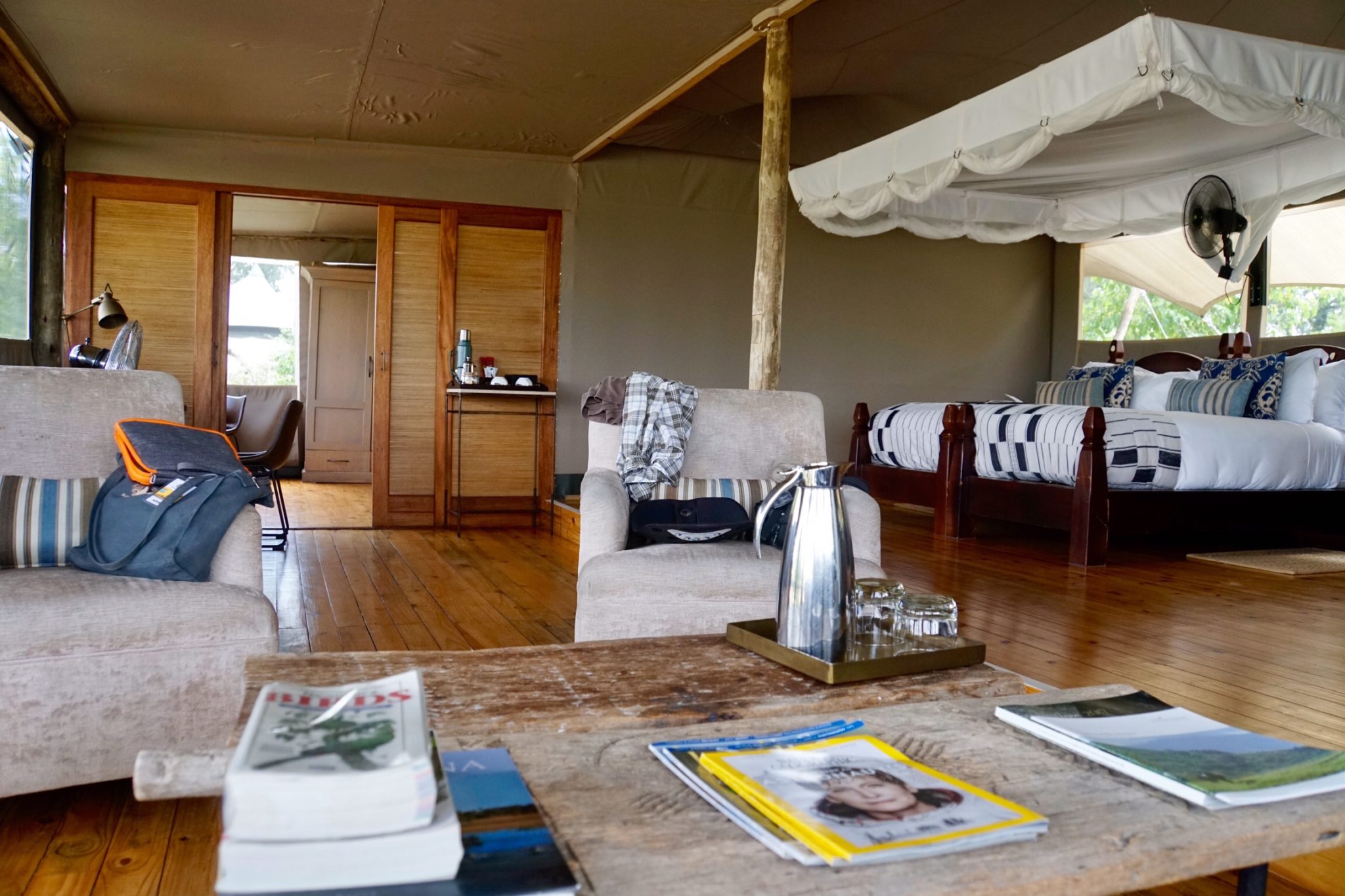 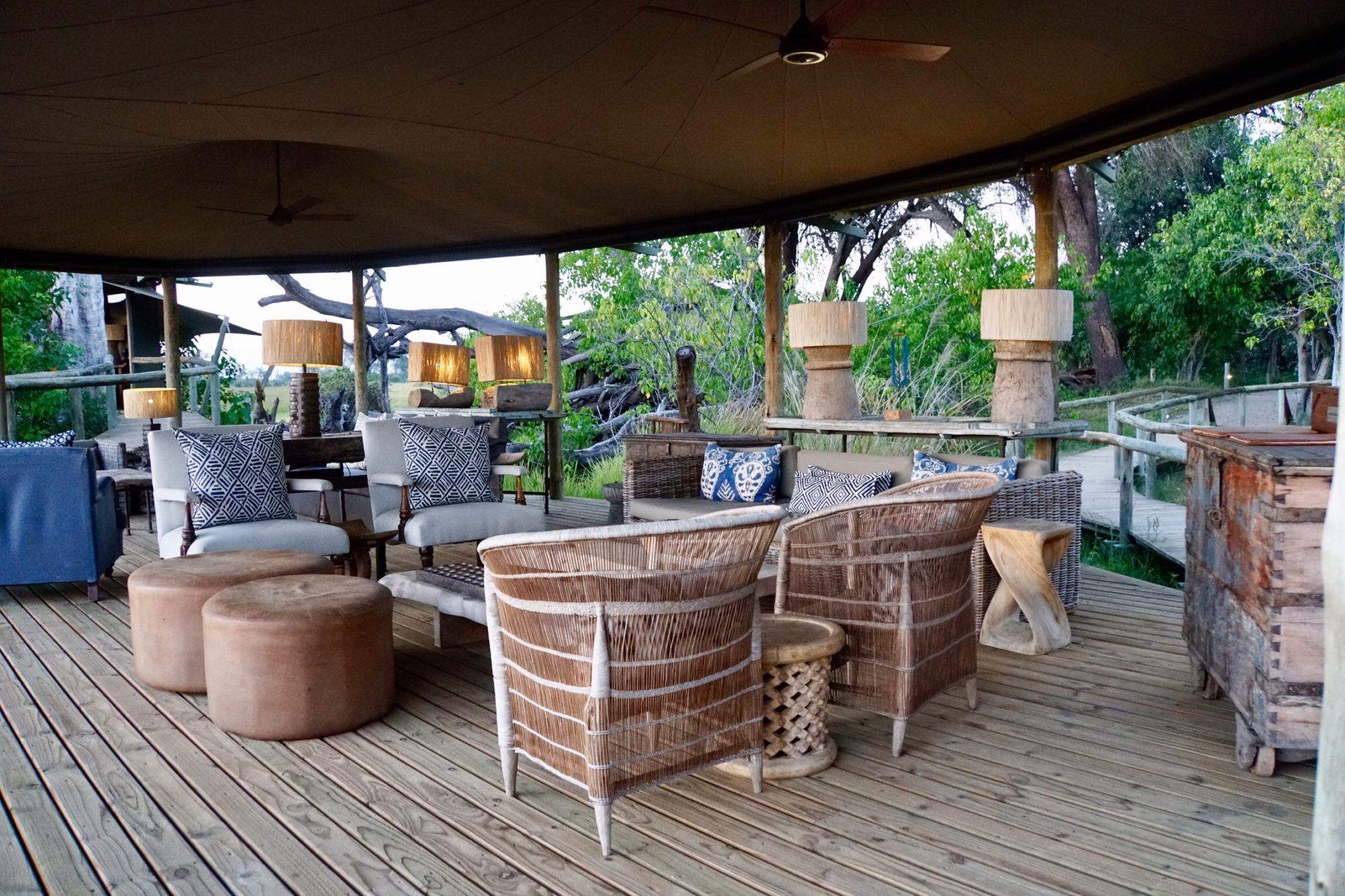
We have a delicious buffet lunch on the central deck, where we are joined by Bonnie and Ginny, two women from Cleveland, with whom we have a very pleasant conversation. We go to get settled in our room and rest a couple hours, sit outside for a while on our deck, with eight red lechwes now strolling beyond, before high tea, at 3:30. After tea, we take the boat across with G to set out on our afternoon game drive.
Our main objective is to locate a leopard, which guests at a sister camp have spotted in the morning. Our jeep makes it through high water and intercom radios connecting vehicles from our camp and sister camps feed information between one another. While, obviously, there’s a purpose to this communication, it’s rather off-putting coming off of the mobile tent safari experience. We locate the leopard, surrounded by tall grass and three other vehicles. Well, it IS a leopard, though, so we watch for quite some time, while nothing really happens.
Eventually, the three other vehicles leave, but we decide to stick it out for at least a while. Another twenty or so minutes pass and G asks us whether we want to stay or move on. We decide to stay. Another fifteen minutes passes, the leopard slowly rises walks over to a log, then climbs up to gain a better view. Our patience is rewarded by some incredible leopard shots. Her cub peeks out, too. A while later, the leopard leaves his perch and sets out in search of dinner. We follow her for a while, until she disappears, then, with the help of a vehicle from a sister camp, pick up the trail again, eventually losing it for good.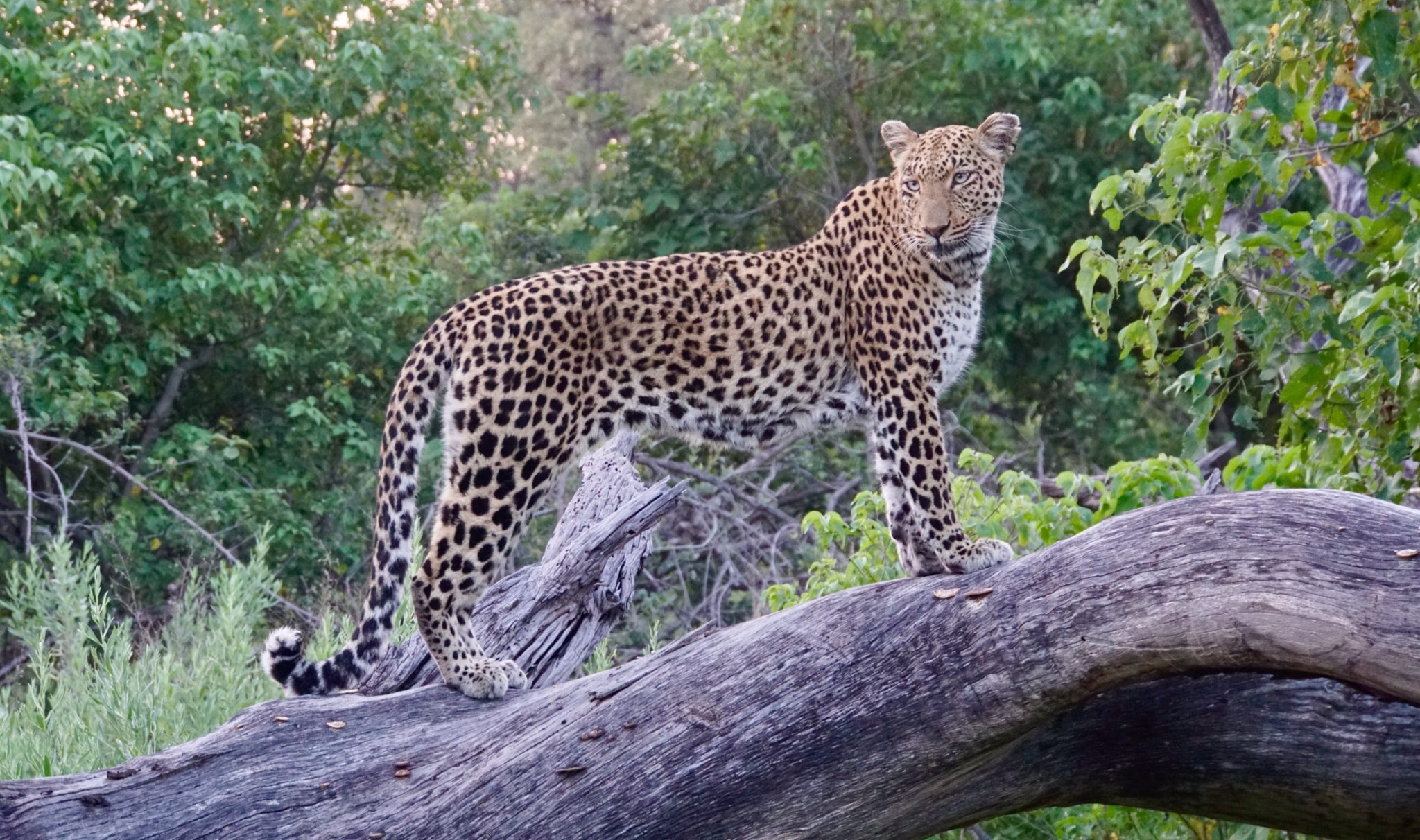 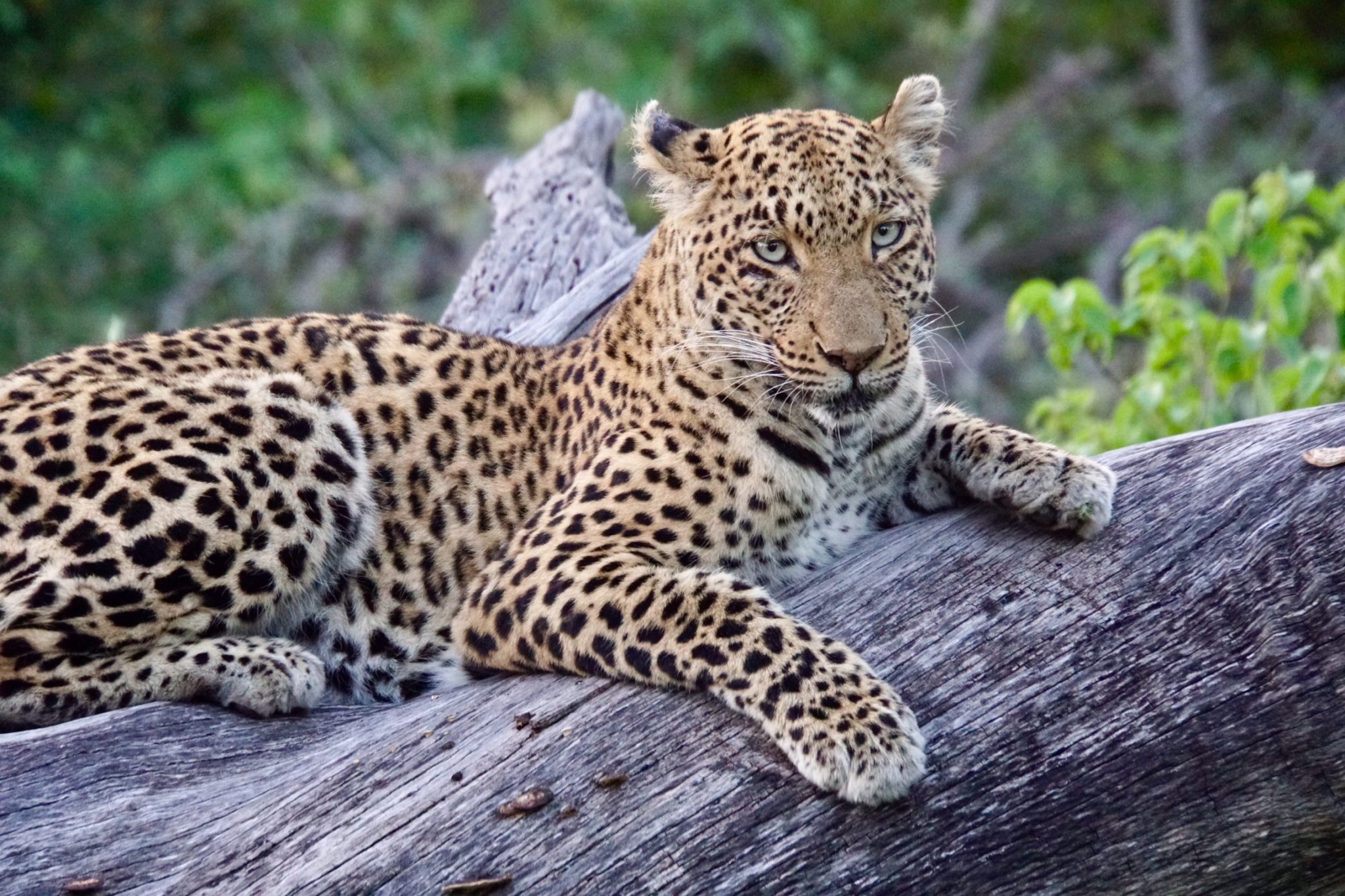 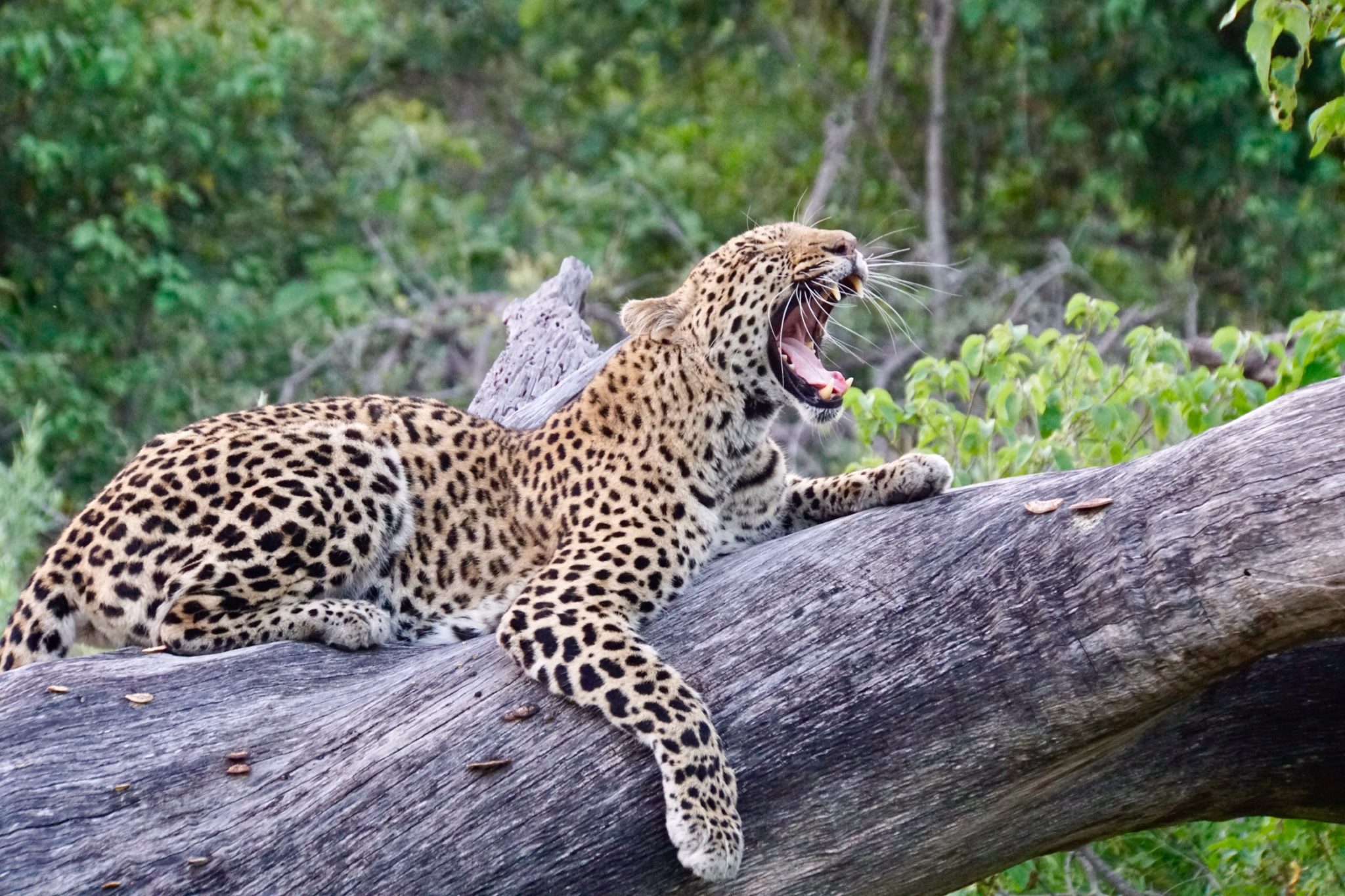
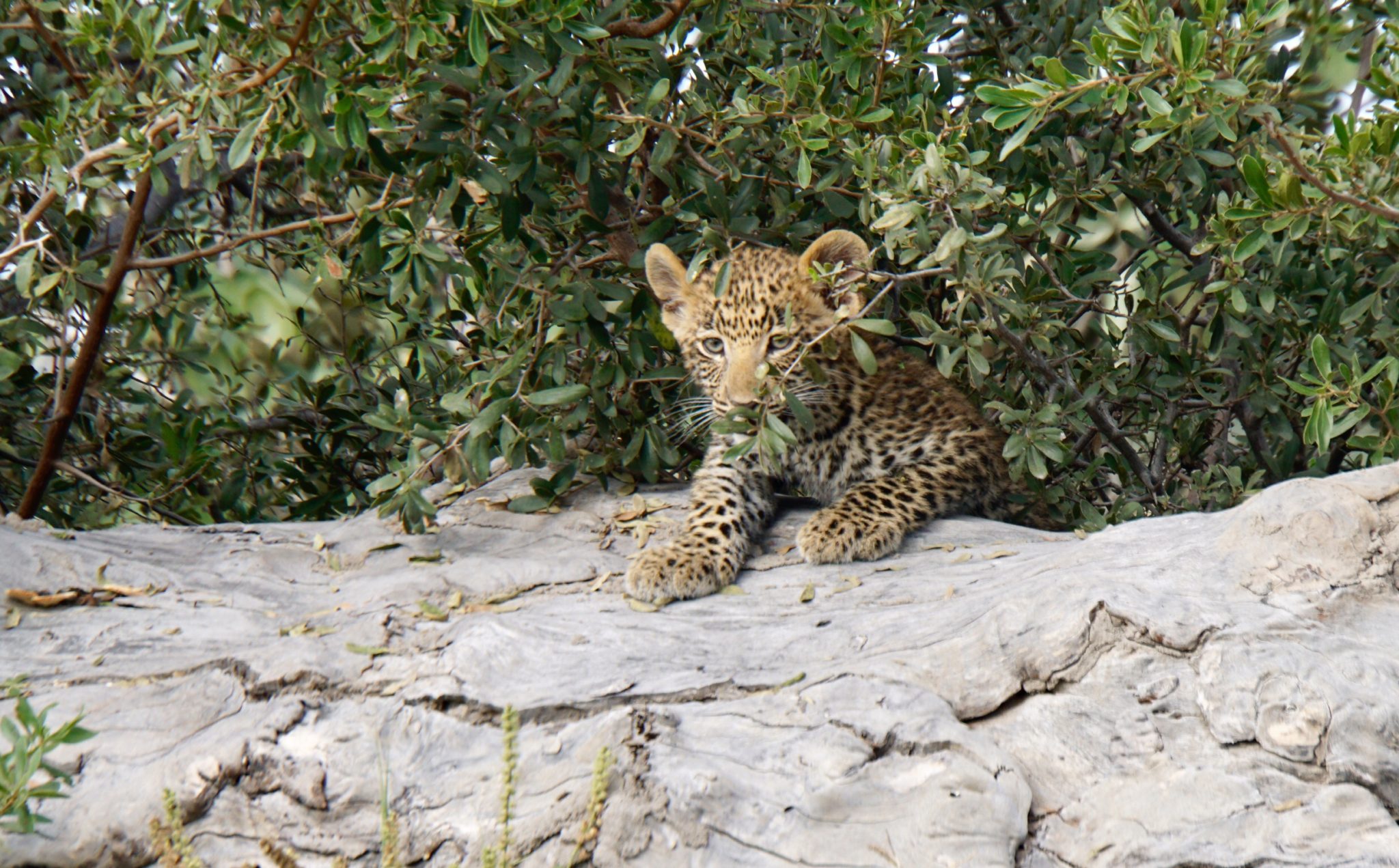 G does not rush us back, but borrows a night search light and drives us around. We spot another giant eagle owl, elephants, a crocodile and several other birds. Eventually, we make it back through the high water on the roads and have an excellent buffet dinner, with G, on the deck of the camp. We return to our comfortable rooms to shower and blog/read before retiring. Turns out to be a fabulous first day at Little Vumbura. G does not rush us back, but borrows a night search light and drives us around. We spot another giant eagle owl, elephants, a crocodile and several other birds. Eventually, we make it back through the high water on the roads and have an excellent buffet dinner, with G, on the deck of the camp. We return to our comfortable rooms to shower and blog/read before retiring. Turns out to be a fabulous first day at Little Vumbura.
ONLY FOR THOSE WHO WANT IT, a refresher on the Okavango Delta. A journey to the Okavango Delta – deep into Africa’s untouched interior, is like no other. It is the 1,000th UNESCO World Heritage Site thanks to its extraordinary wetland system and rare wildlife. Moving from wetland to dryland – traversing the meandering palm and papyrus fringed waterways, passing palm-fringed islands, and thick woodland, resplendent with lush vegetation, and rich in wildlife – reveals the many facets of this unique ecosystem which is the largest intact inland delta in the world.
The Okavango Delta is situated deep within the Kalahari Basin, and is often referred to as the ‘jewel’ of the Kalahari. That the Okavango exists at all seems remarkable. Shaped like a fan, the Delta is fed by the Okavango River, the third largest in southern Africa. It has been steadily developed over the millennia by millions of tons of sand carried down the river from Angola.
As old as time, the seasonal flood from the Angola Highlands is the heartbeat of Botswana. Seeping along the panhandle and into the largest inland delta system in the world, the water creates a uniquely beautiful site, the incoming tide of life bringing with it birth, transformation and replenishment. These ancient, cyclical changes provide an exceptional safari experience and the area supports vast herds of elephant, buffalo and hippo, as well as numerous antelope, giraffe, zebra and the ever present predators
From March the waters spread outwards, reaching the inner delta by June and peaking in July and August. The inbound flow creates a buzz of energy as it spans out towards Maun, the country as a whole conscious of the gift the waters bring, and caught up in the primordial movement.
Depending on nature’s temperamental dictates, the flood levels vary each year, never under the control of man. This makes it difficult to assess what will happen in the upcoming season: the Delta may swell up to 3 times its size. Under natural forces, the face of the earth renews itself, the landscape of channels, grasslands, reed islands and lagoons burst with life and vitality. As the levels recede in October, the earth starts to dry altering the scenery and game viewing. The summer months bring life from a new angle, and the November/December rains come, announcing the green season, and a land lush and verdant. Whether flood or rain, water, the very essence of life, plays a vital role in the Okavango Delta.
April 13-16. The remainder of our time on mobile Safari was equally magical. One might think that it would become tiresome, or at least less interesting, as time progresses, but in fact the opposite is true. You settle into your routine and become more comfortable in the environment. This process of settling in takes a few days. You figure out how to organize and get around your tent, when and how to wash up, shower, take your malaria pill, etc. you become far more adept at locating and identifying birds and animals.
I have to admit that, after the first day, I wondered whether three days of this might be quite enough. But it would not. In order to get the real experience of the tent safari, it takes six days. And, while certainly, there are great similarities between going on safari from lodges or permanent tents and the mobile tent safari, the latter is a far more immersive experience.
A few of the highlights were:
the fabulous range and variety of bird life that we saw (more than 100 different birds)
45 minutes spent with a family of elephants
the sighting of a giant eagle owl
finding a pride of lions by following their tracks, watching them for a long time as they finished off eating the red lechwe they’d killed, until they roamed off, then calling them back, twice, by Roger making the sound of a water buffalo to lure them back
group of young vervet monkeys playing games with each other
21/2 hour boat ride in the delta with marvelous landscape of grasses, many bird sightings and a totally different environment
visiting dead tree island on which all of the trees had been killed over years of periodic flooding, creating a unique landscape and a habitat occupied by many animals, including a very large herd of red lechwe on the afternoon we were there
locating a large bull elephant, accompanied by fluttering cattle egrets and flying ducks, who eats, takes a mud bath and then sprays himself with water
locating our second different group of about fifteen wild dogs, who have just killed an impala and are eating, resting and playing for the forty minutes we spend with them
finding a small pond in which yellow-billed storks, sacred Ibis and a spoonbill were all wading and fishing together at the same time
On April 14, we woke up at 6:00, and enjoyed coffee and breakfast by the campfire while the camp was being taken down around us. We embarked on a leisurely, full-day game drive with a picnic lunch, arriving at our new destination with the camp miraculously resurrected by our staff, our shower water hot, a campfire blazing, and our dinner being prepared. Xakanaxa is situated at the far end of the nearly endless Mophane woodland in the Moremi Game Reserve. This is the site we occupy for the next three days.
I’ve decided not to give you a day by day account of the remainder of our mobile tent safari, because I think the best way to capture what we experienced is through the many photos, which I’ve included below.
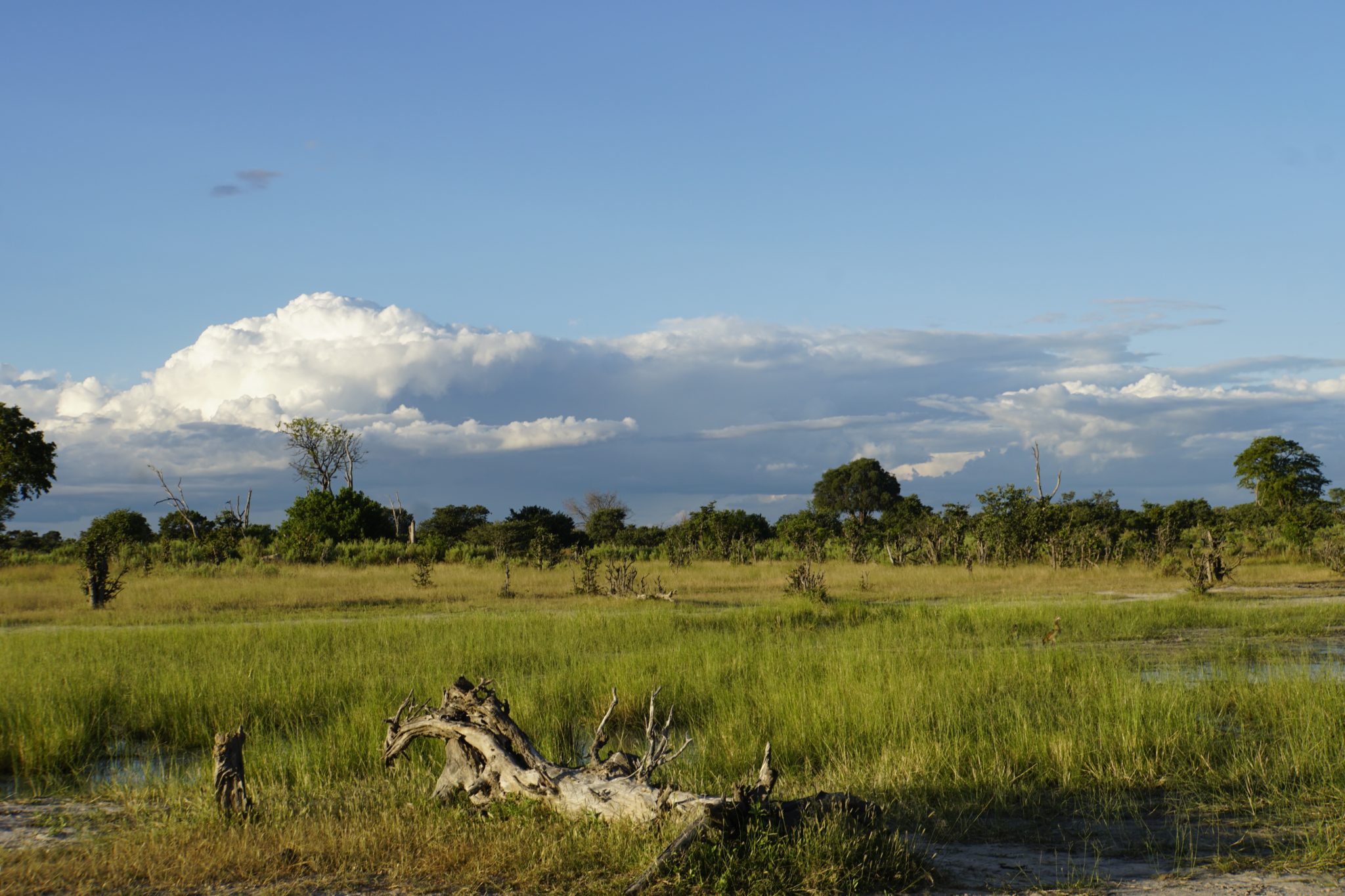 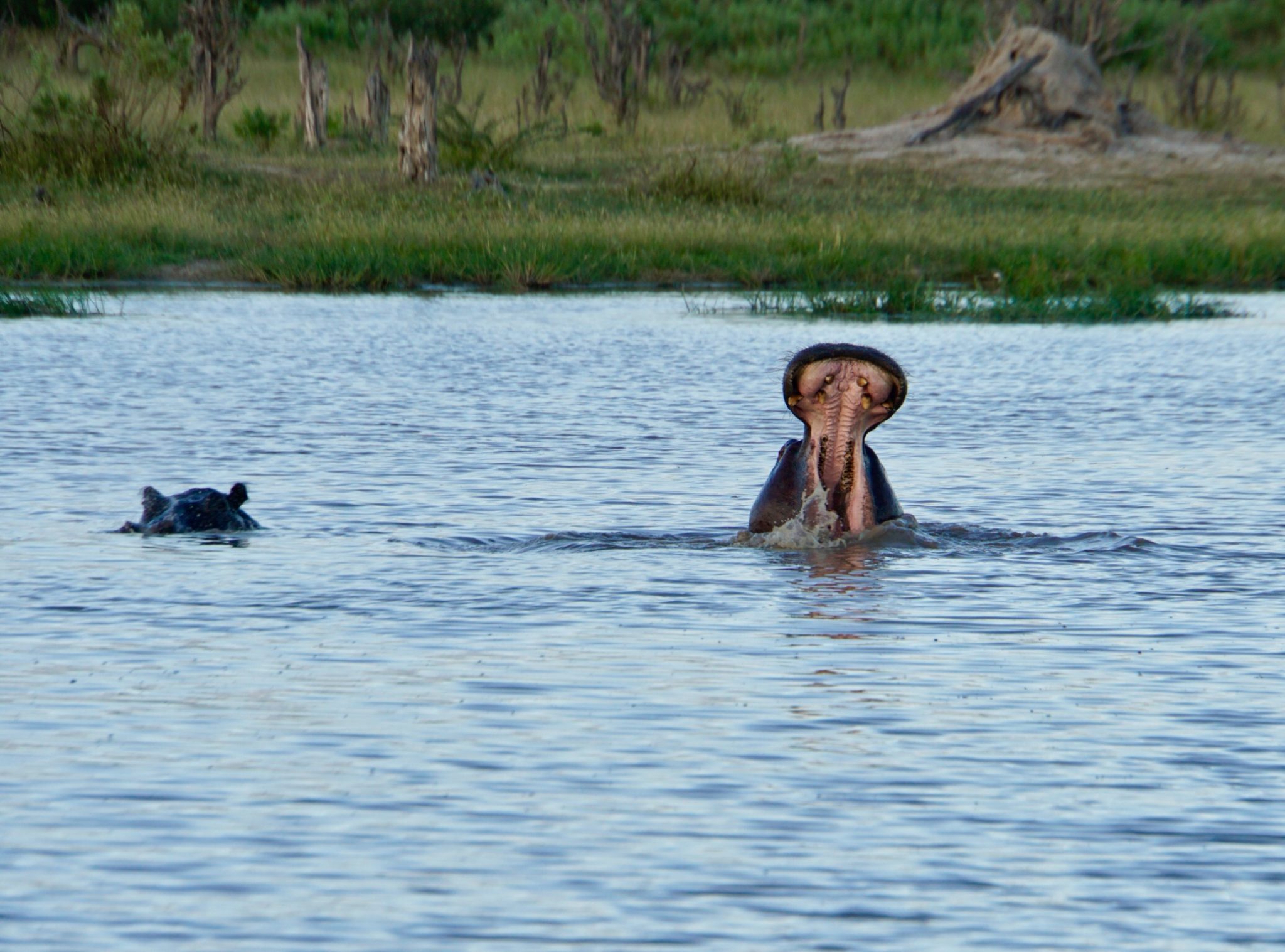 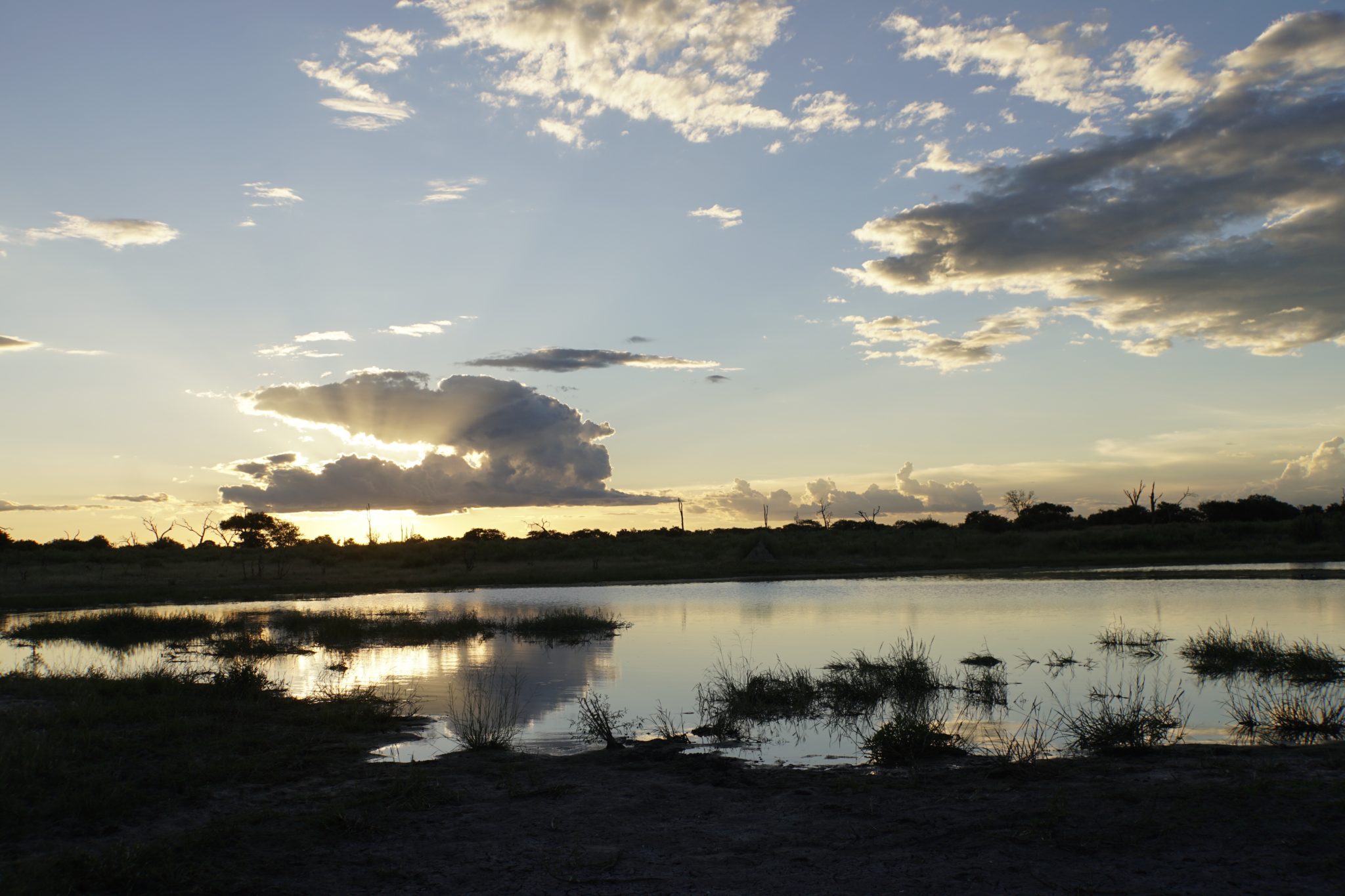 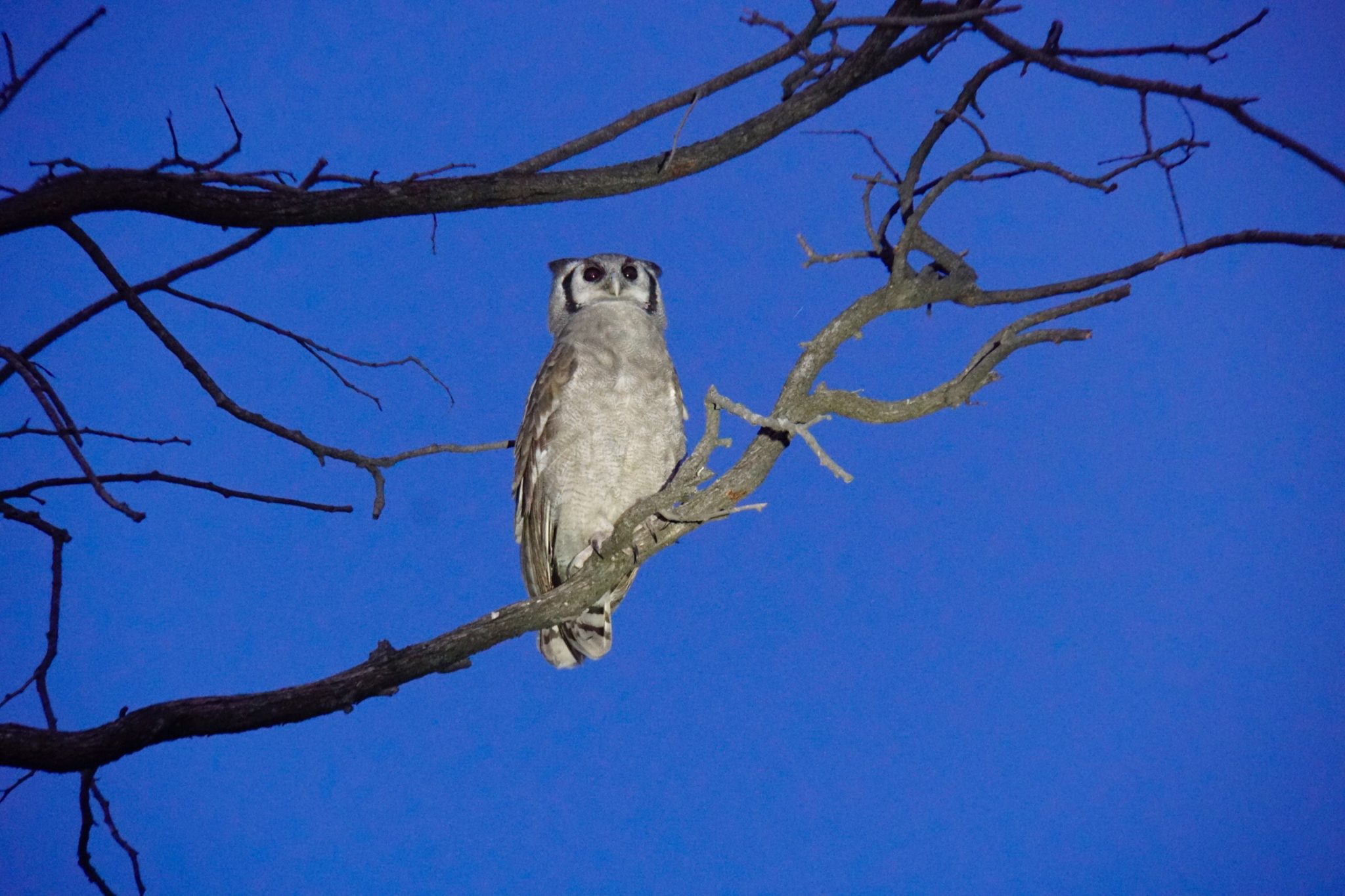
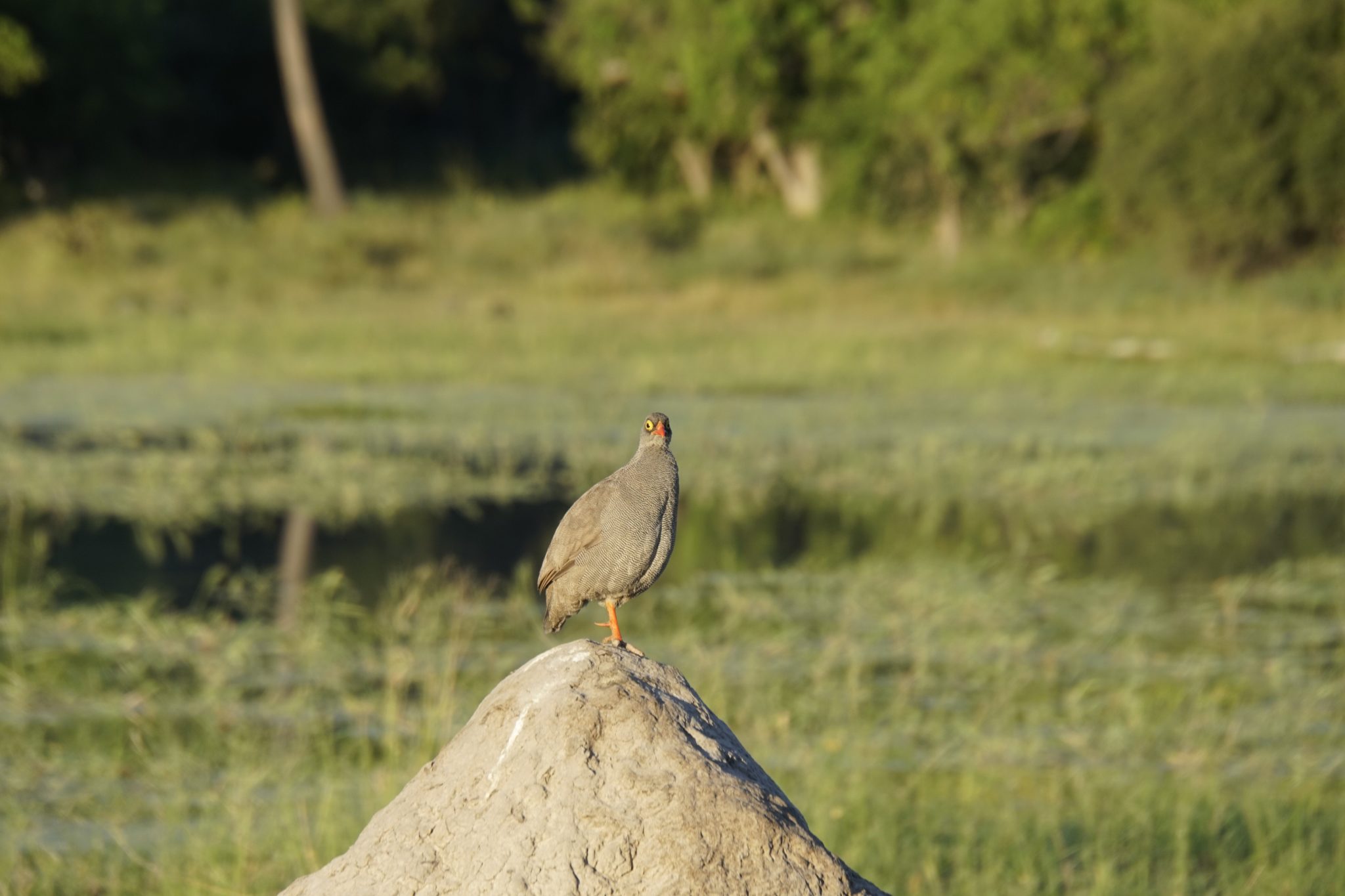 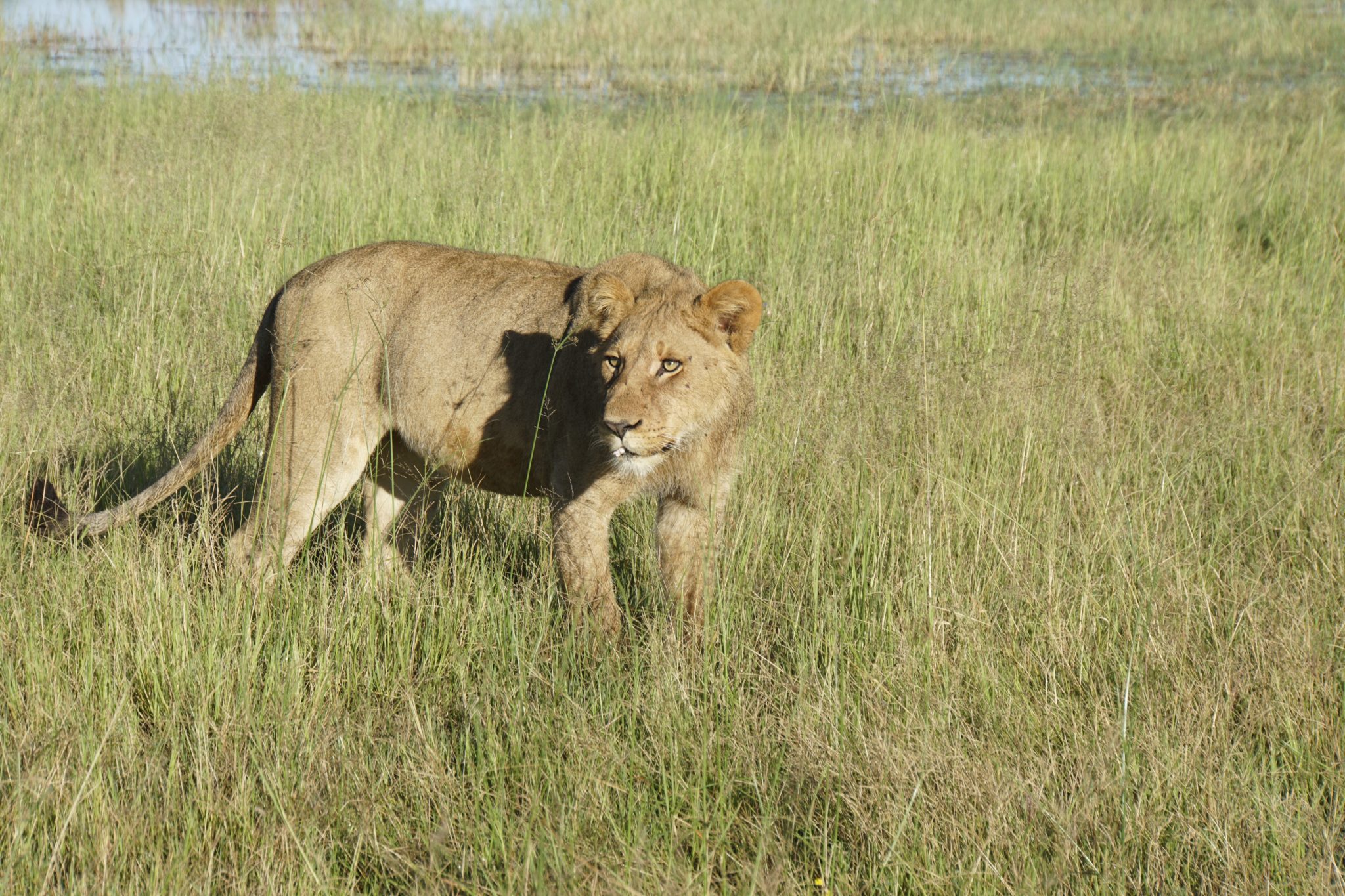 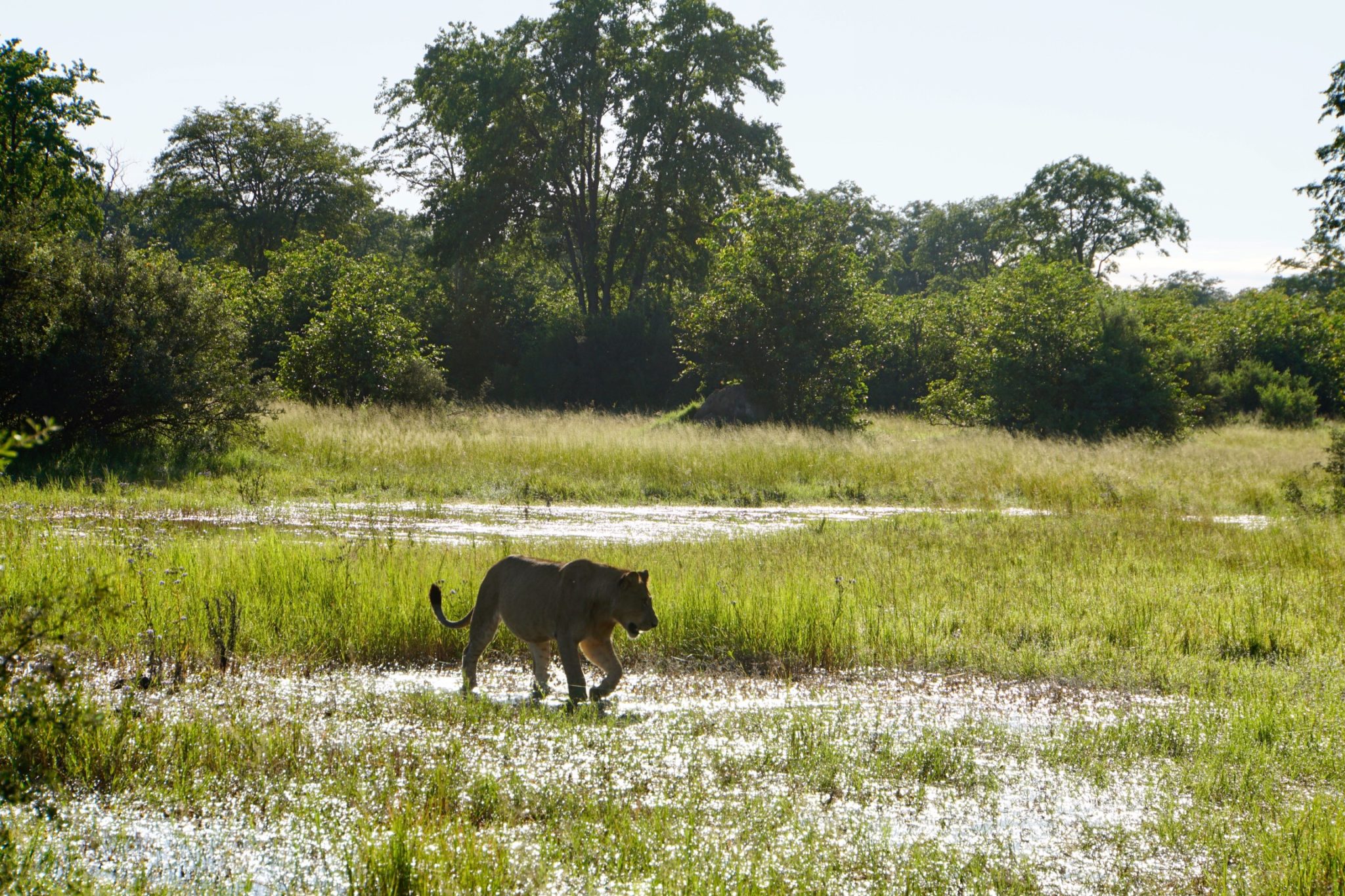 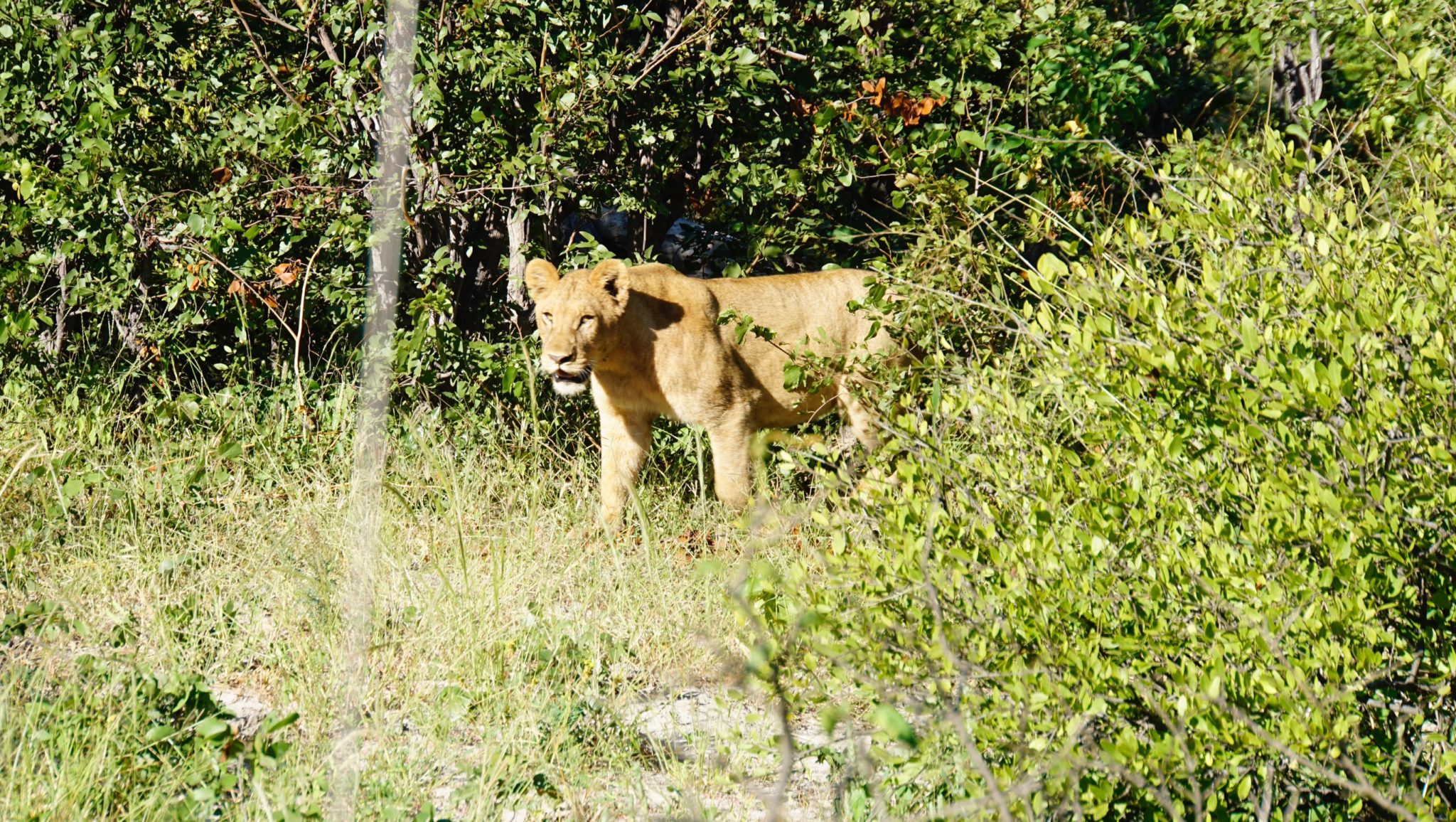 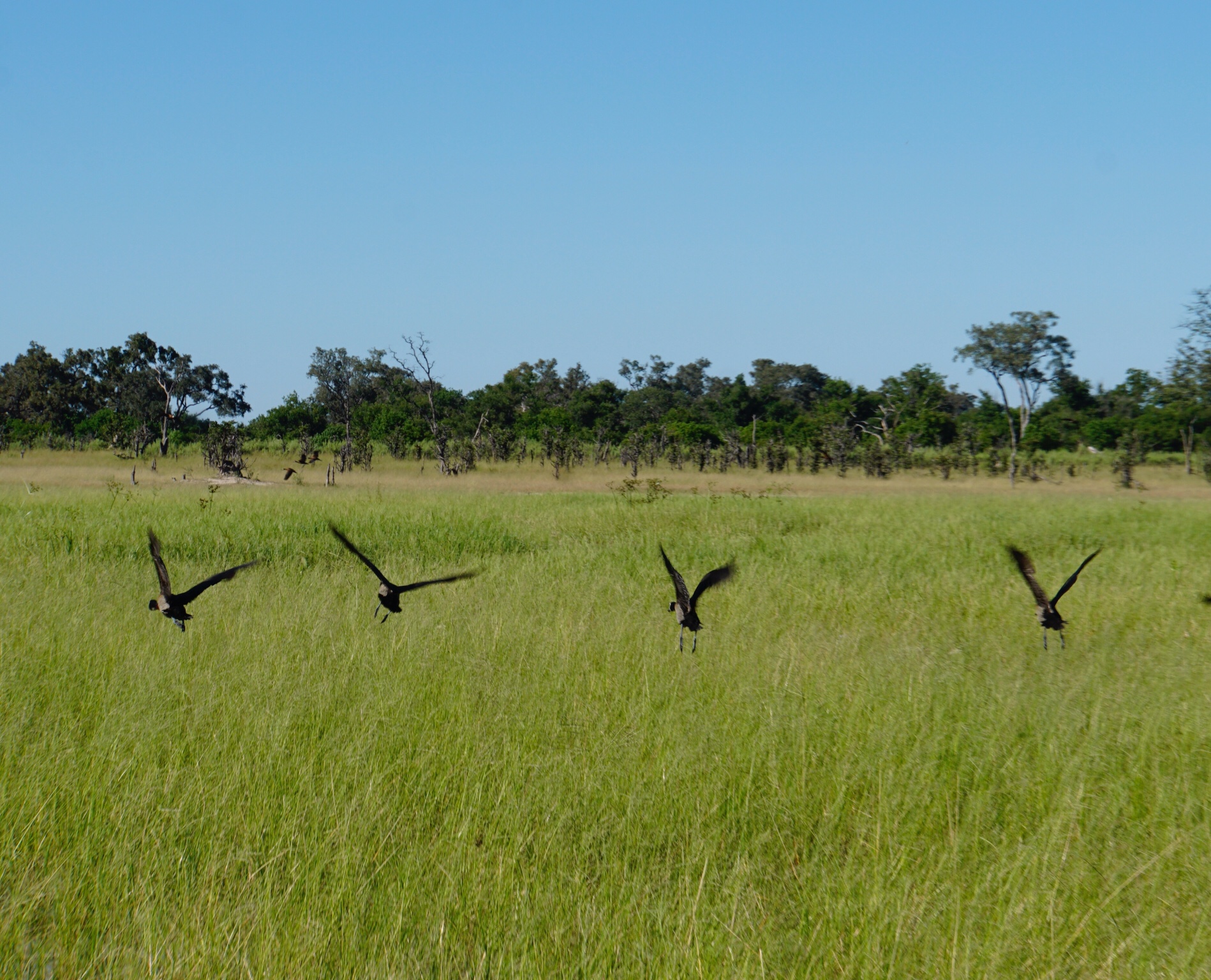 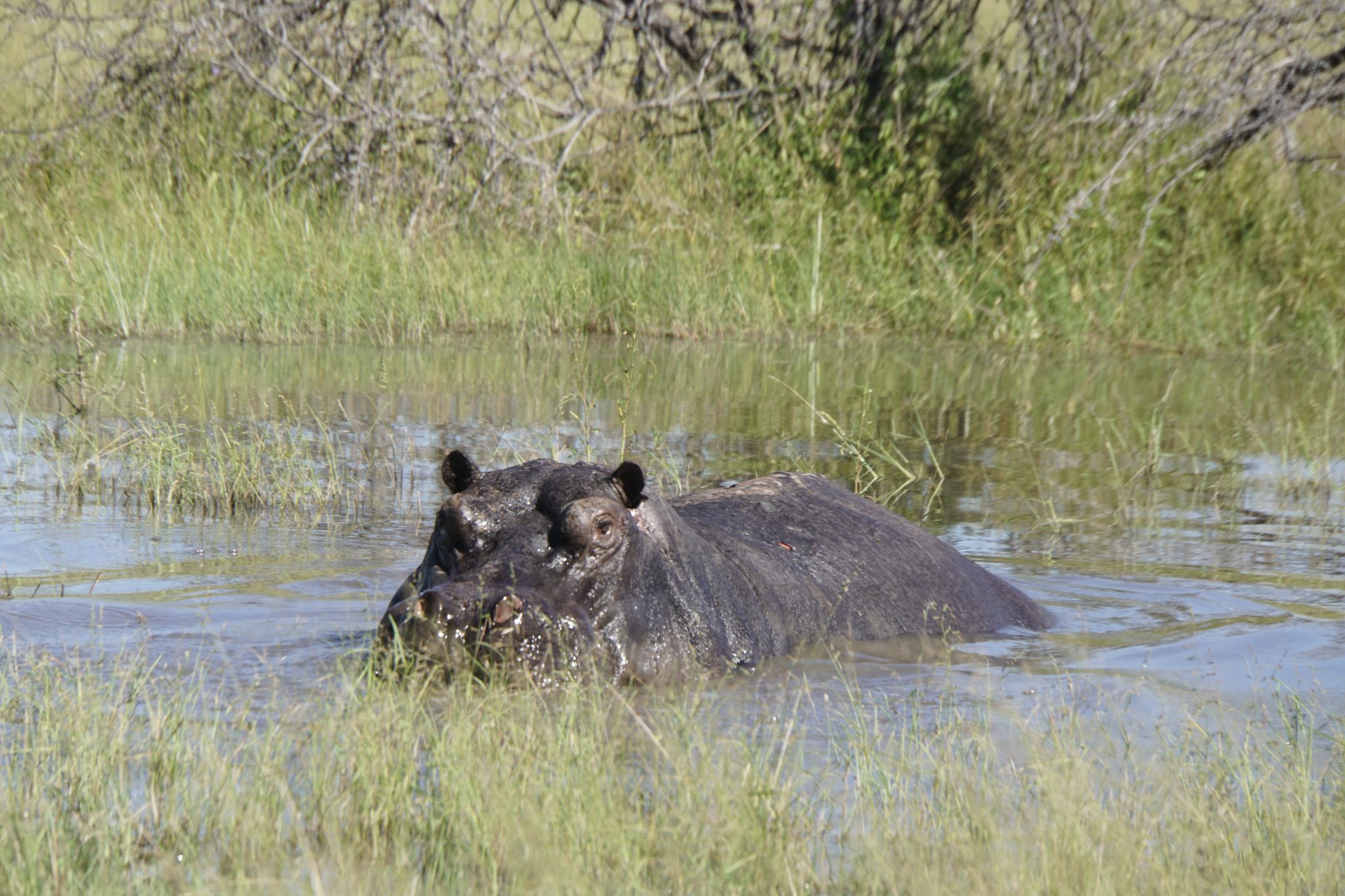 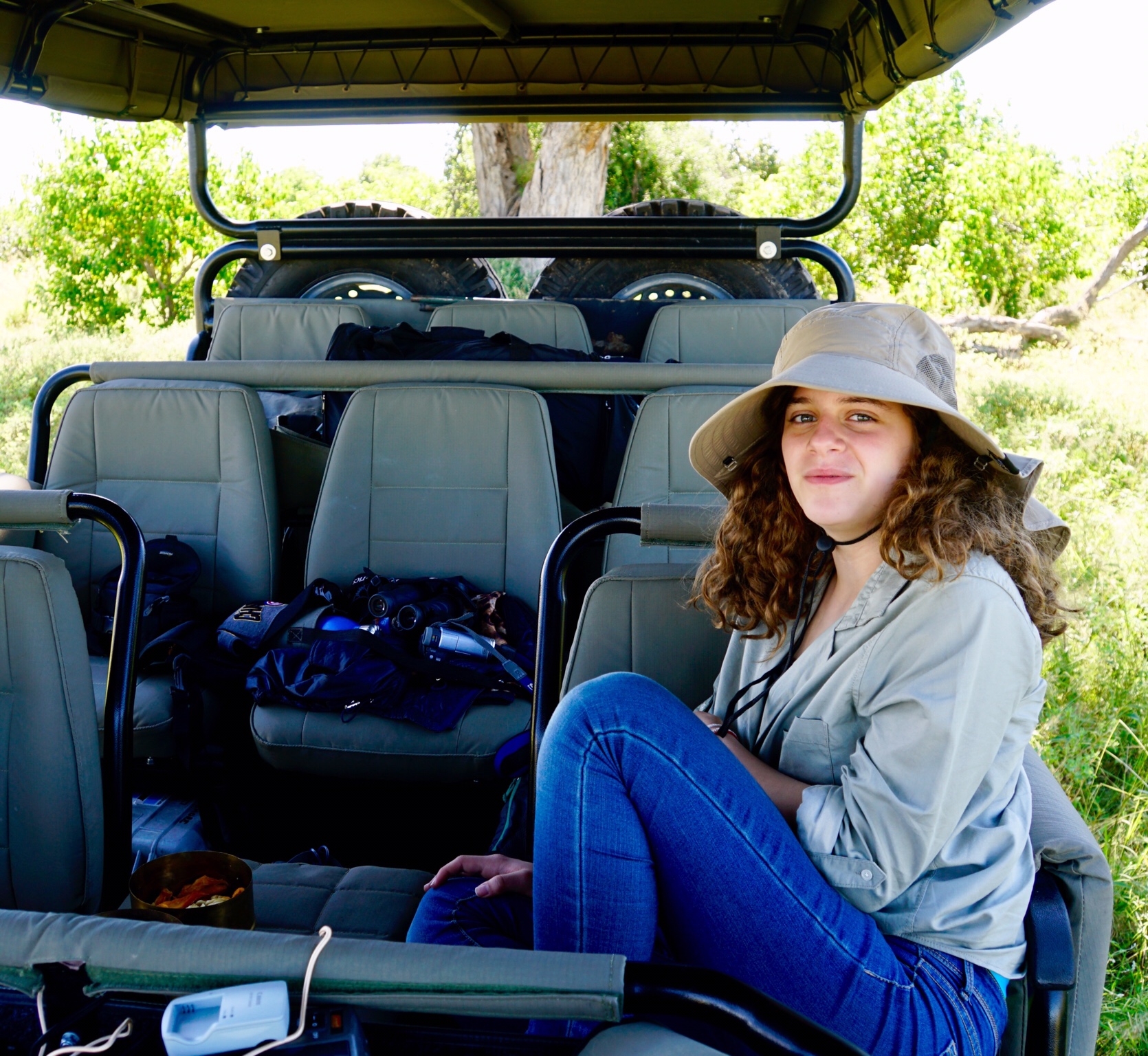 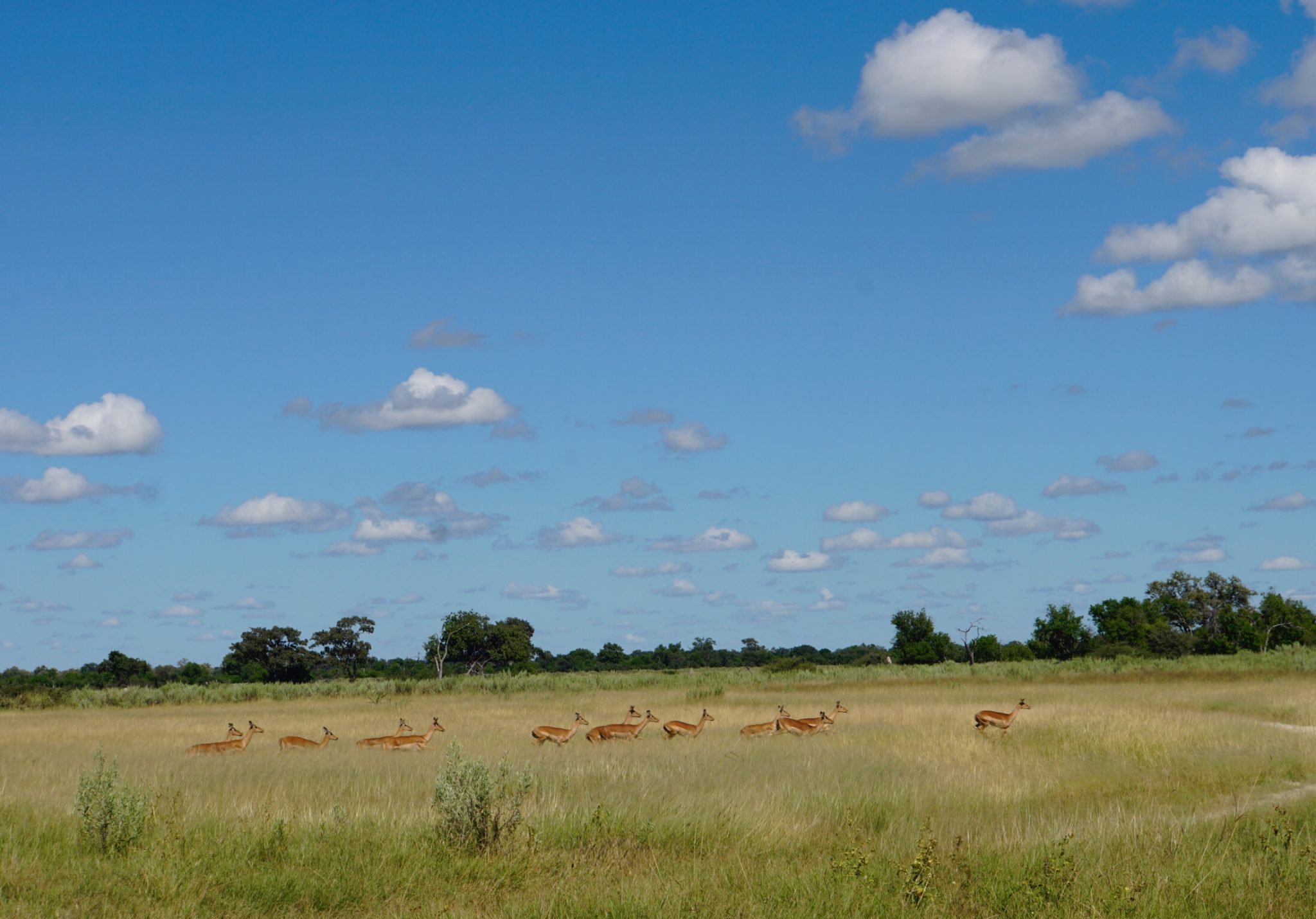 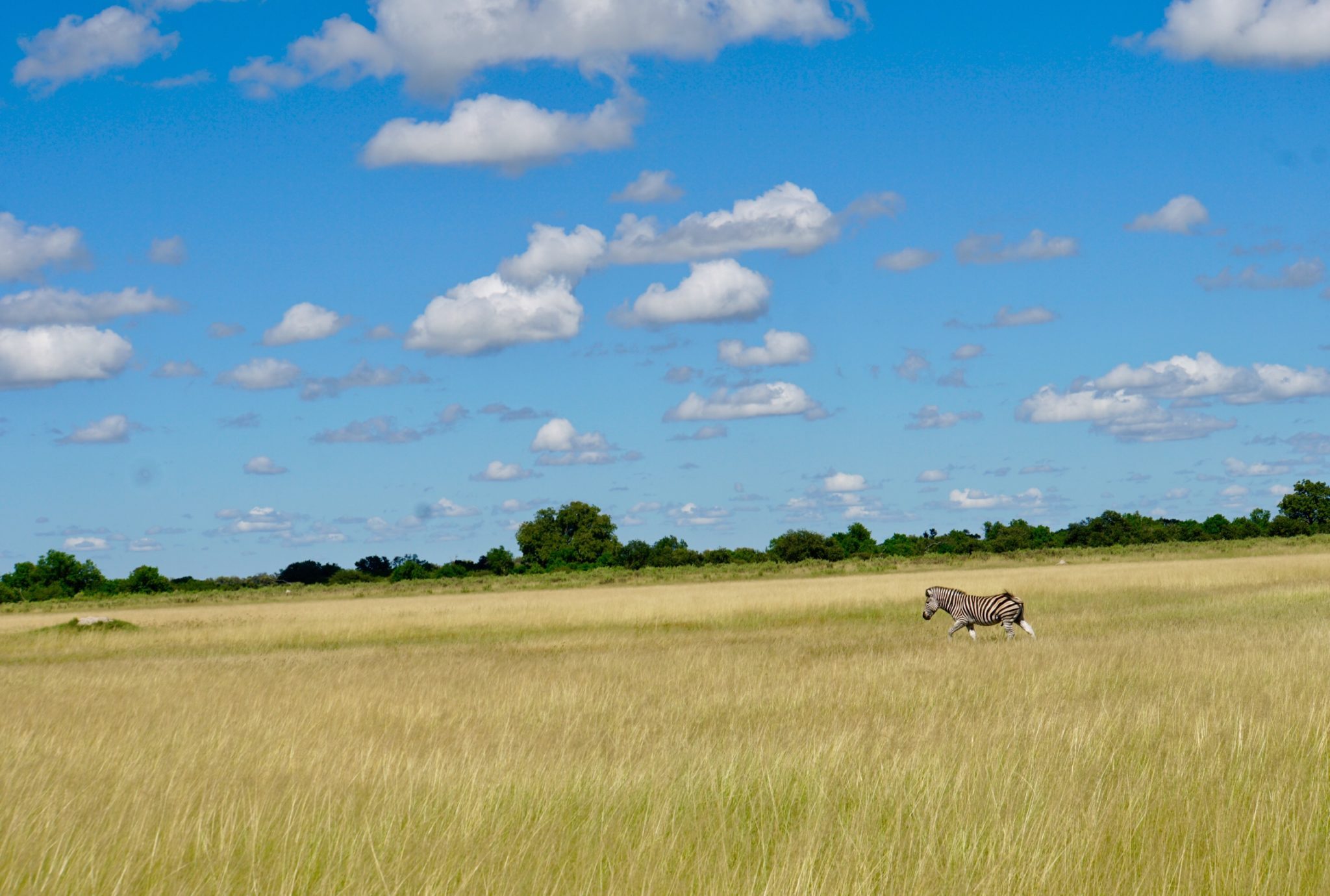 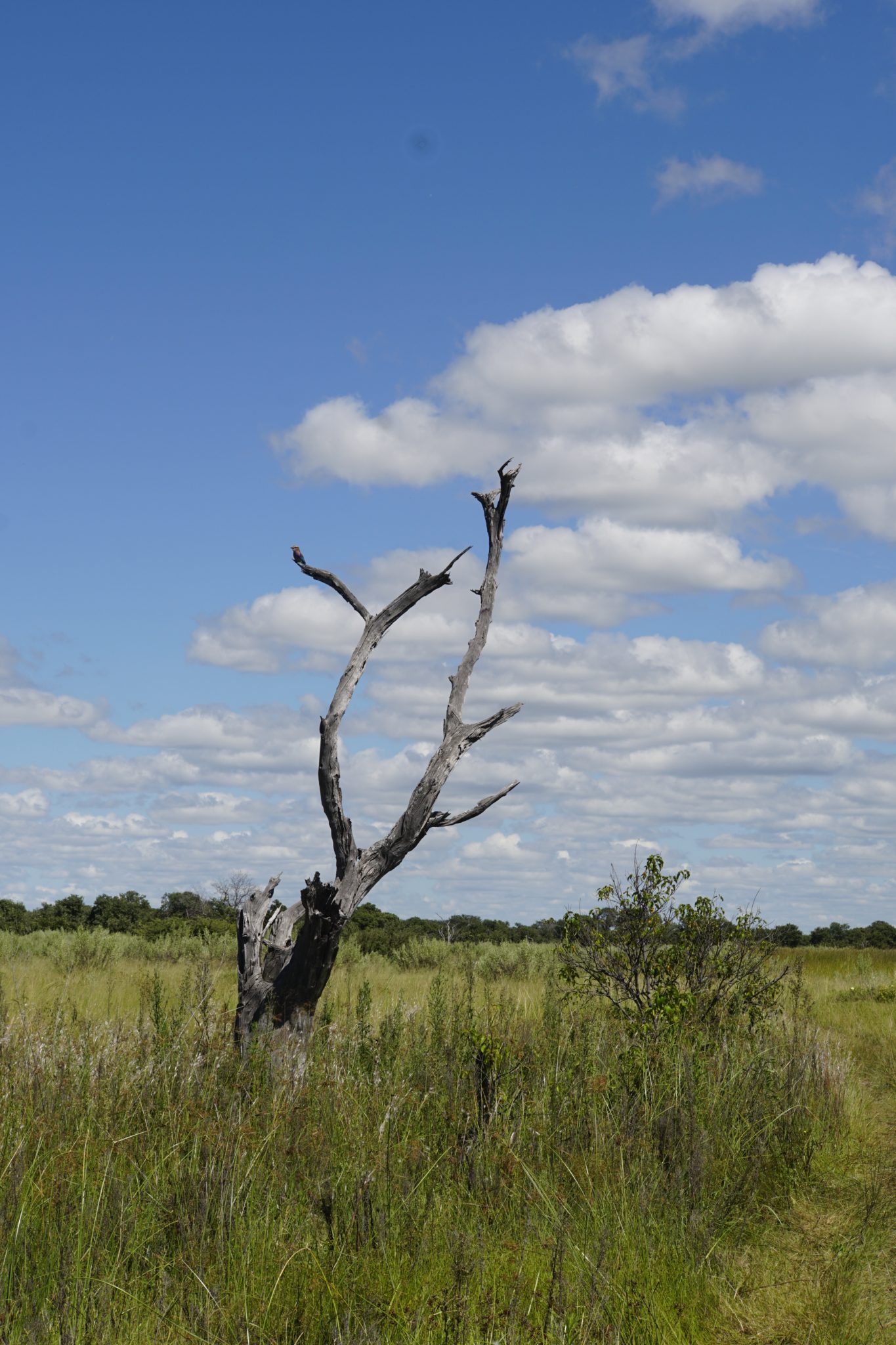 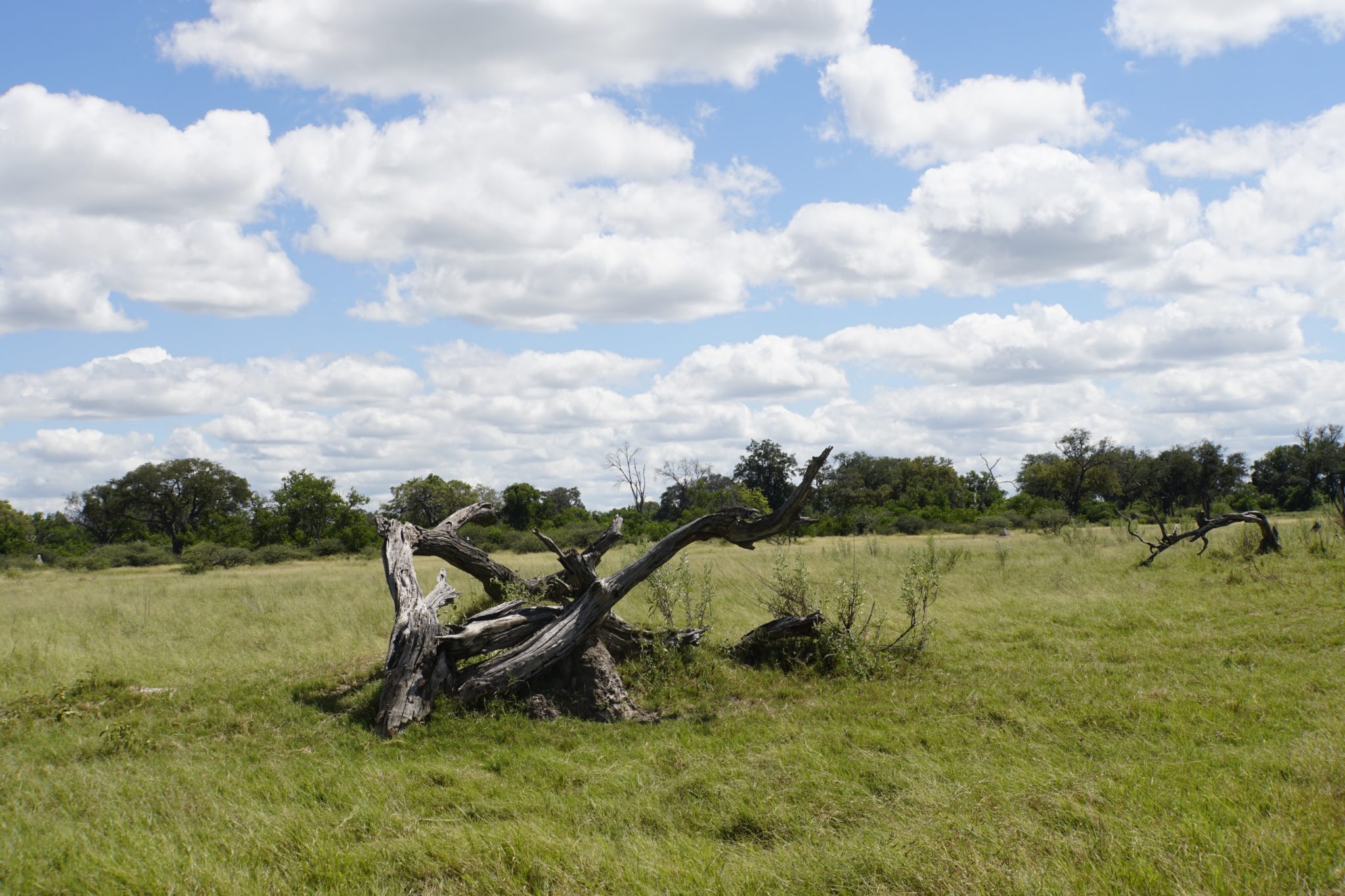 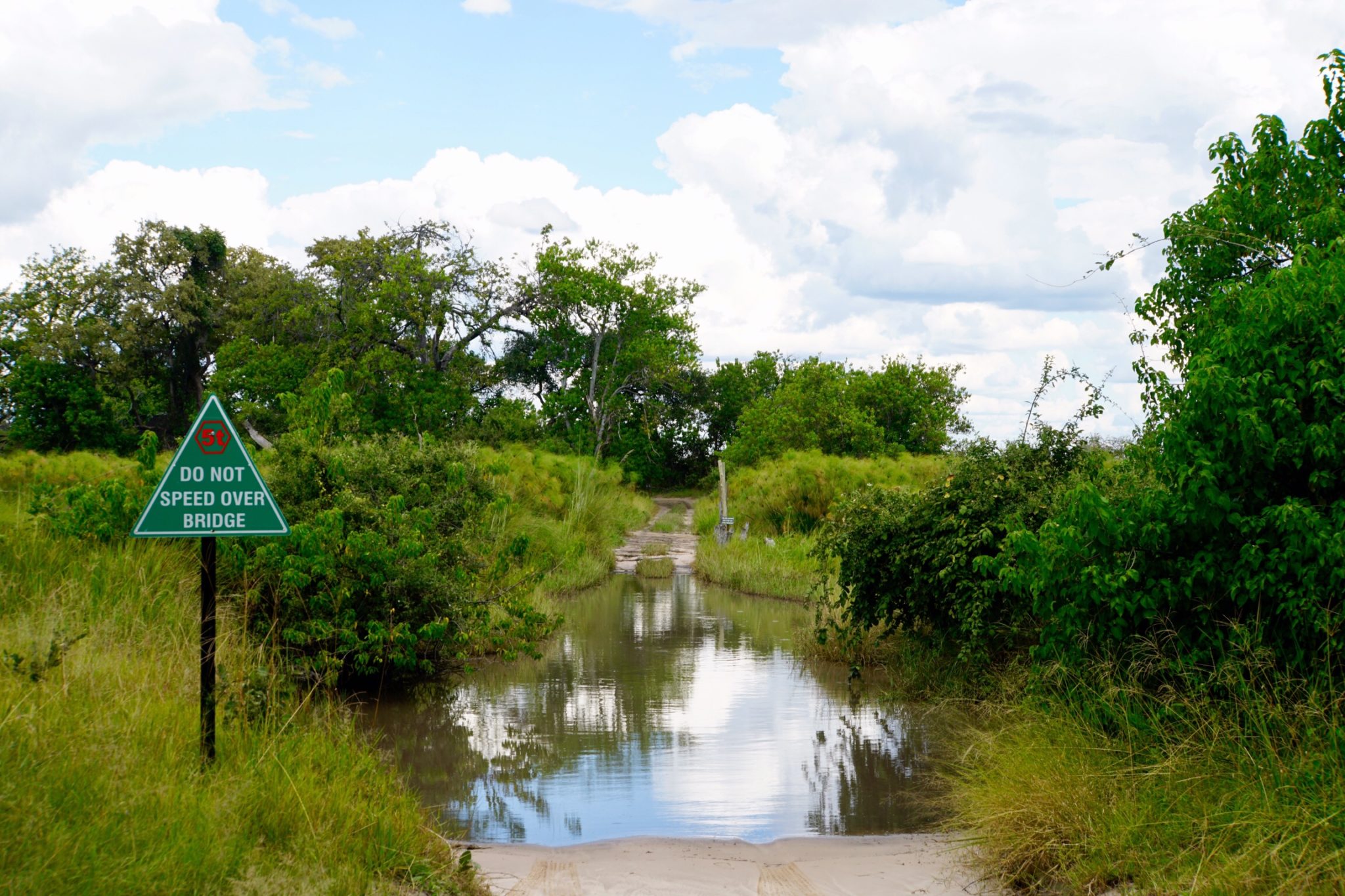 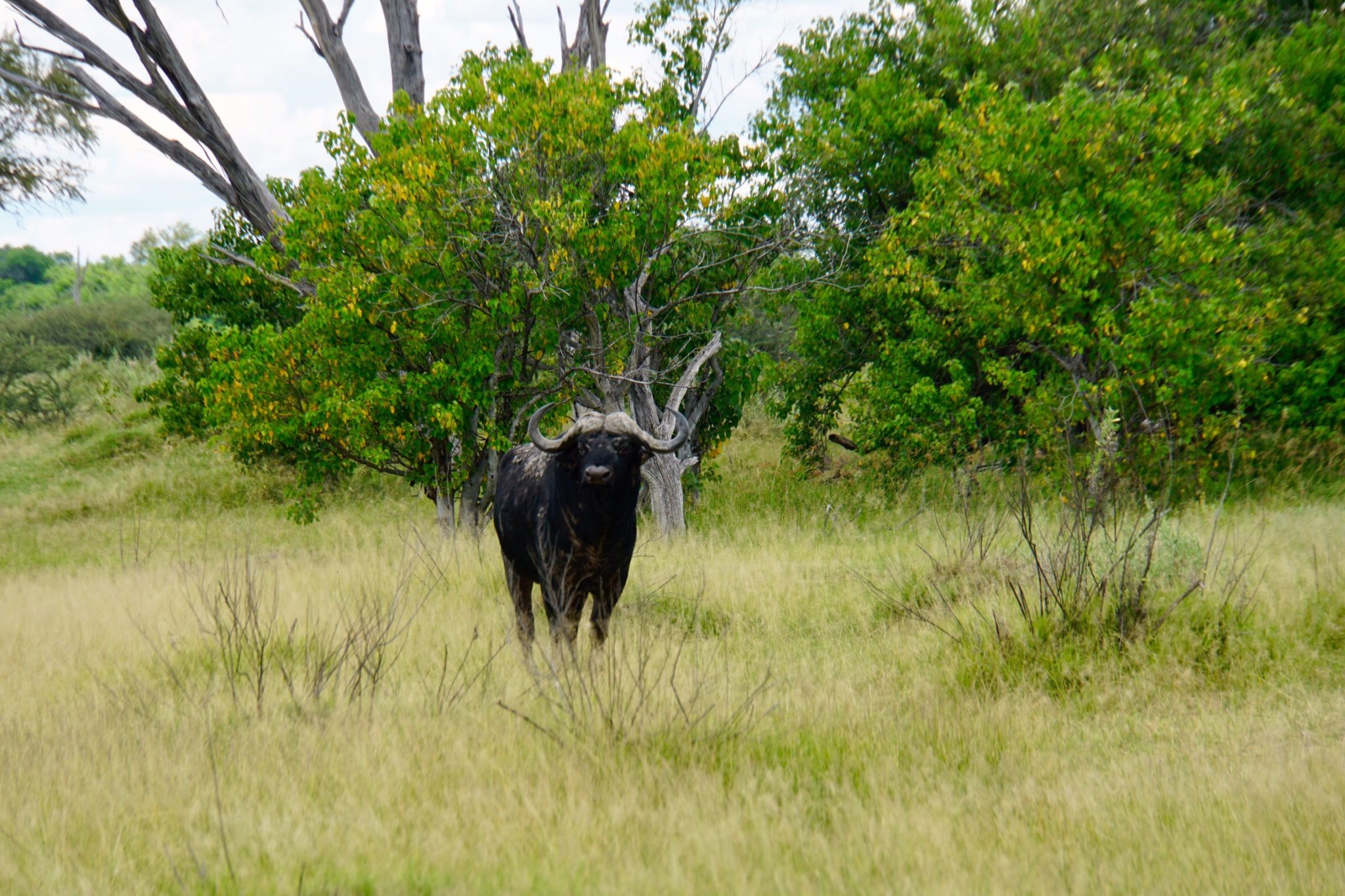 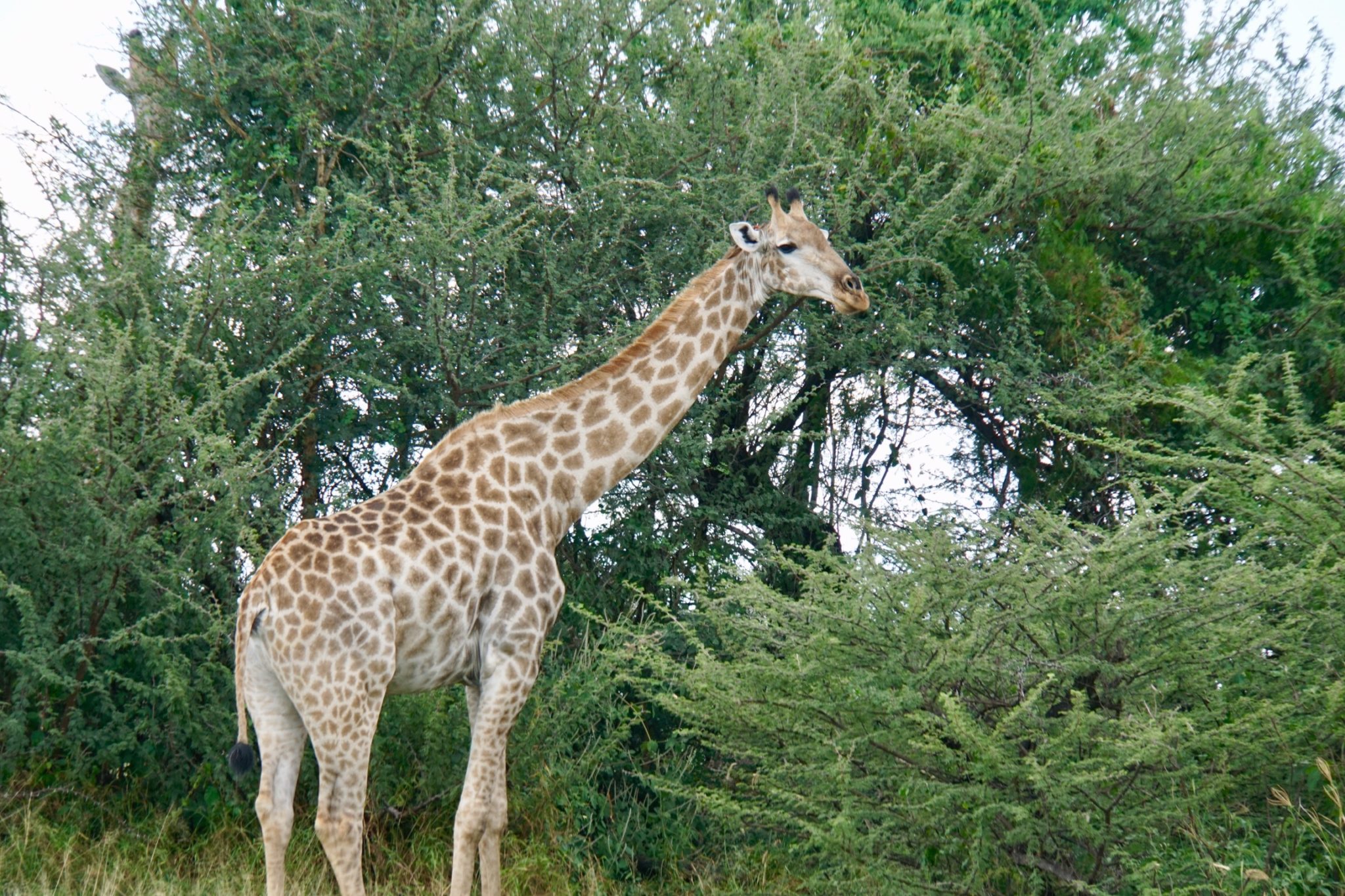 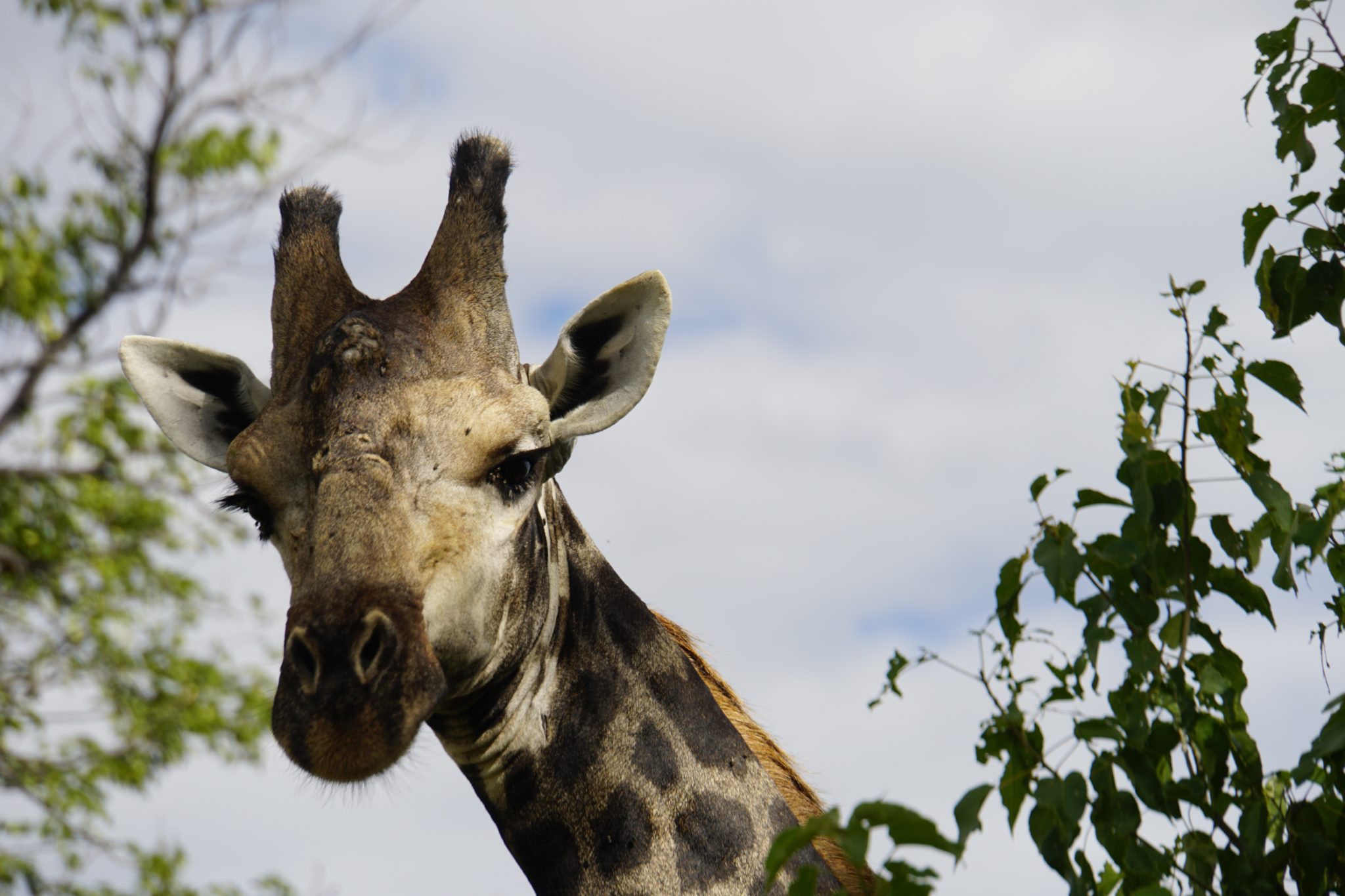 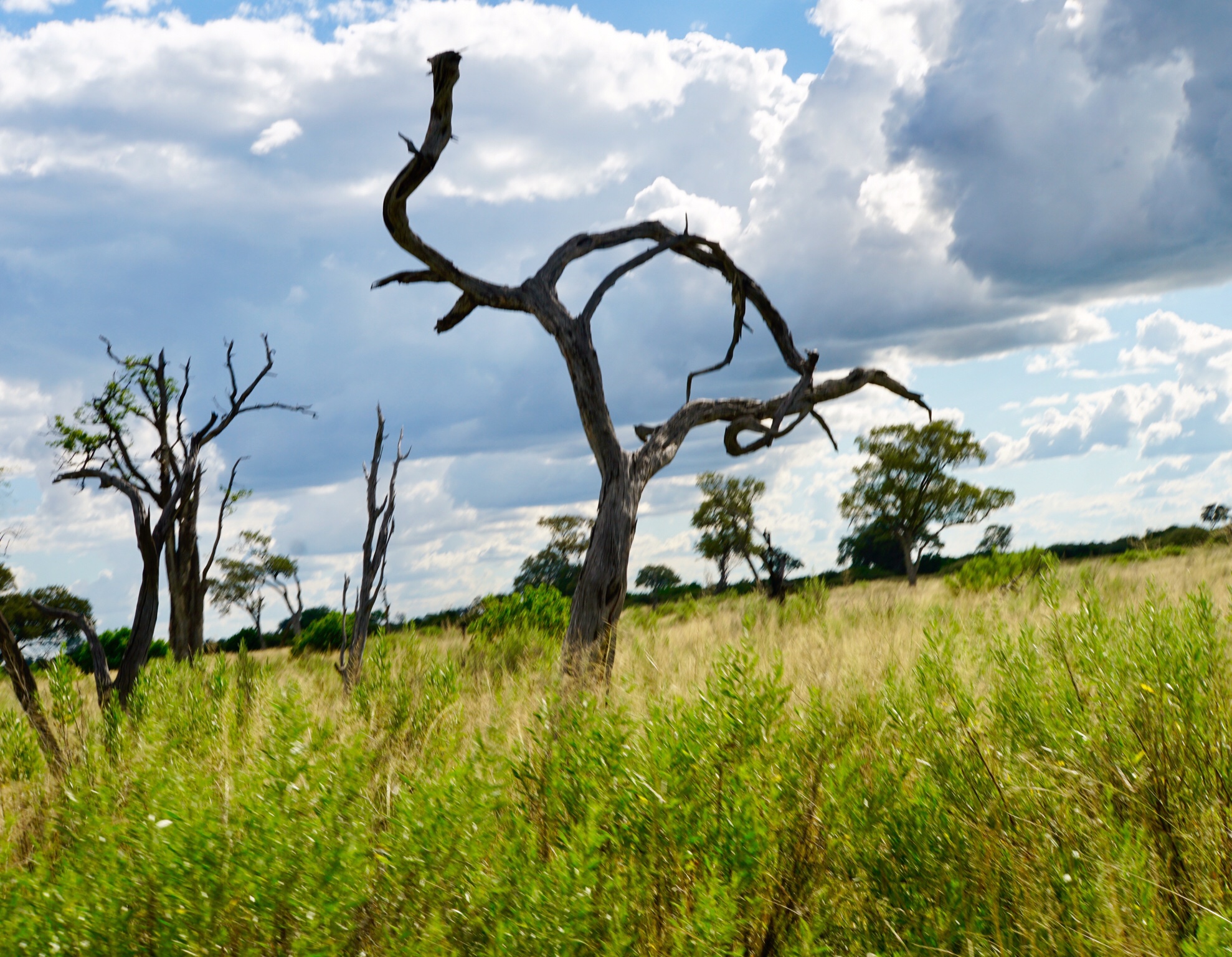 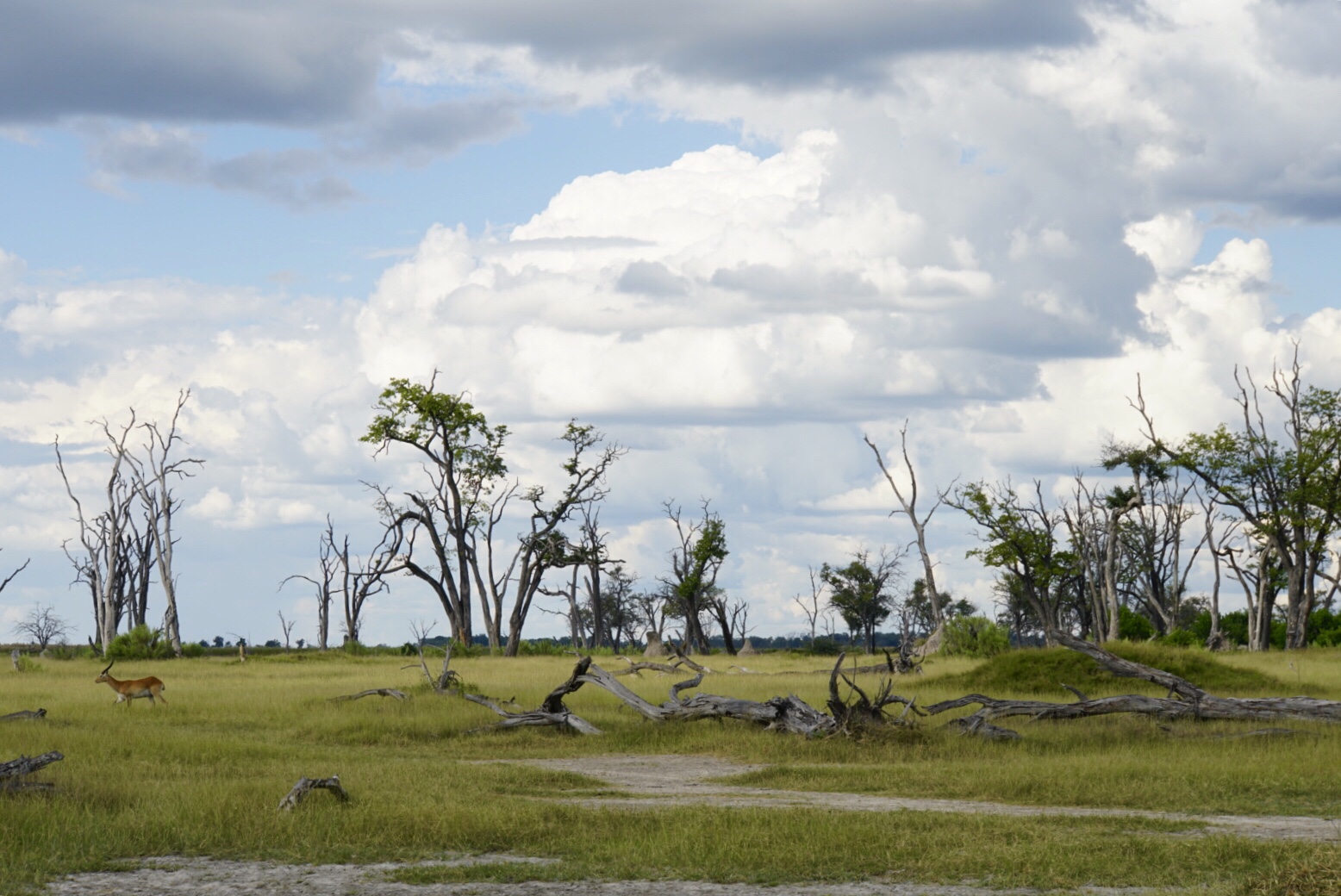 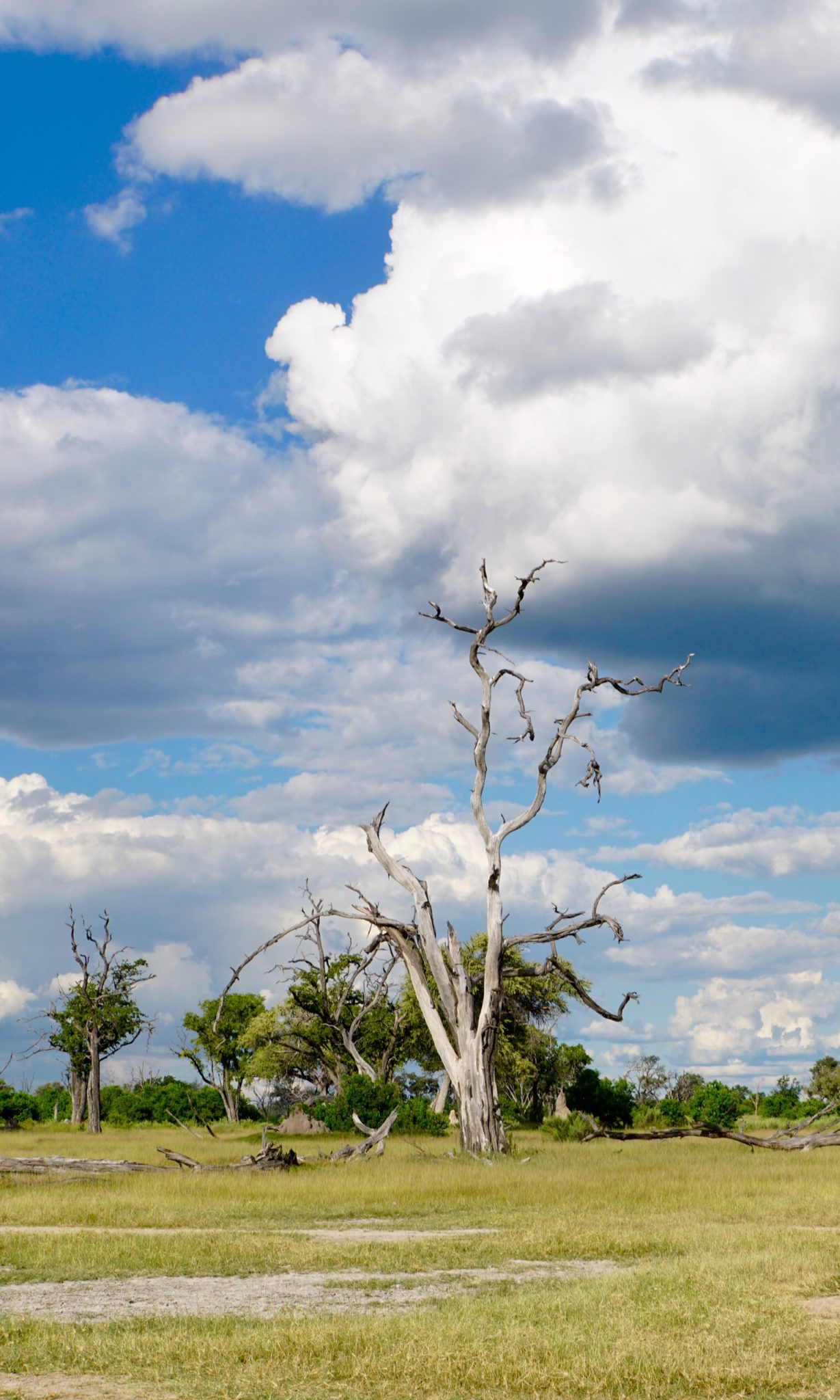 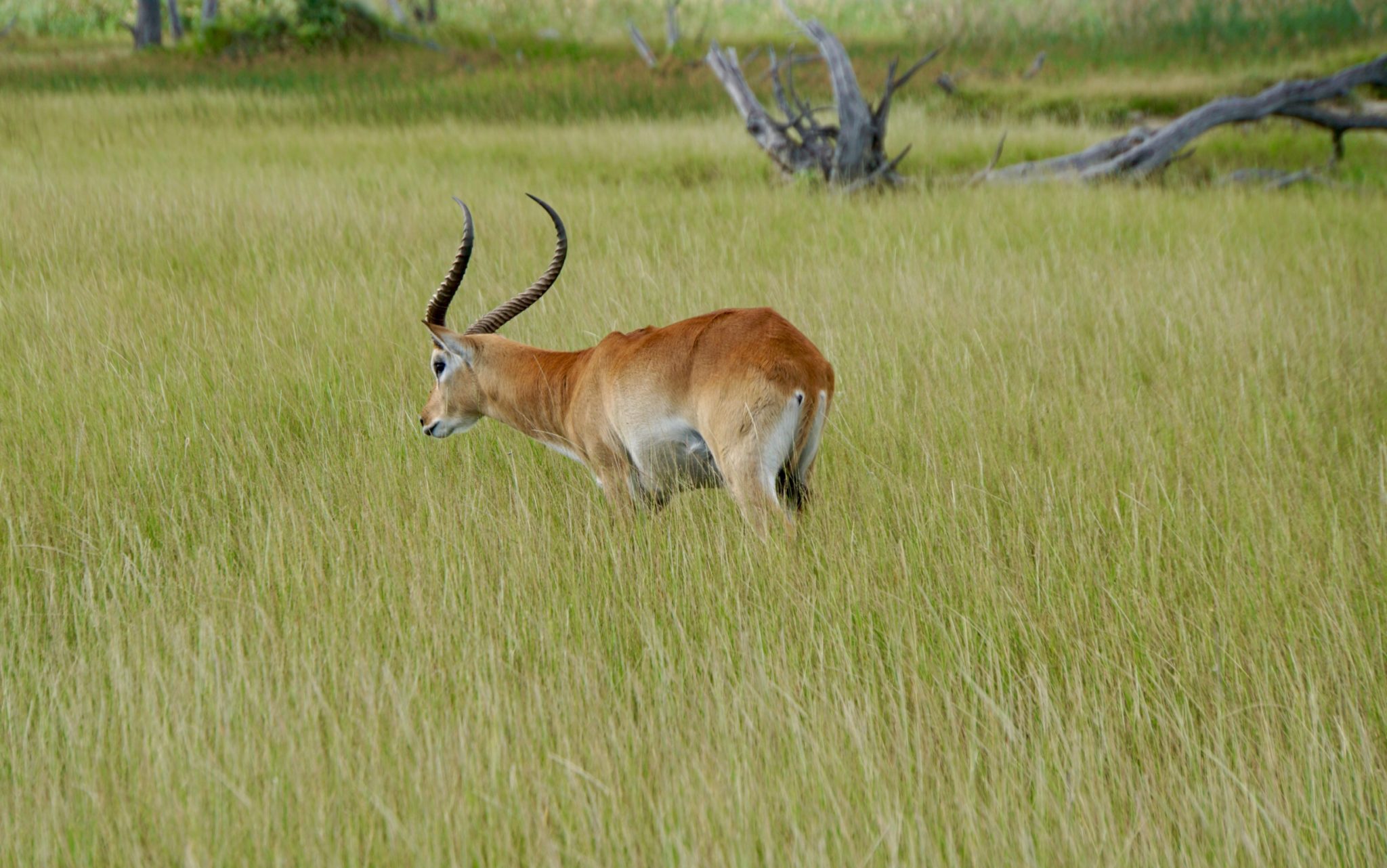 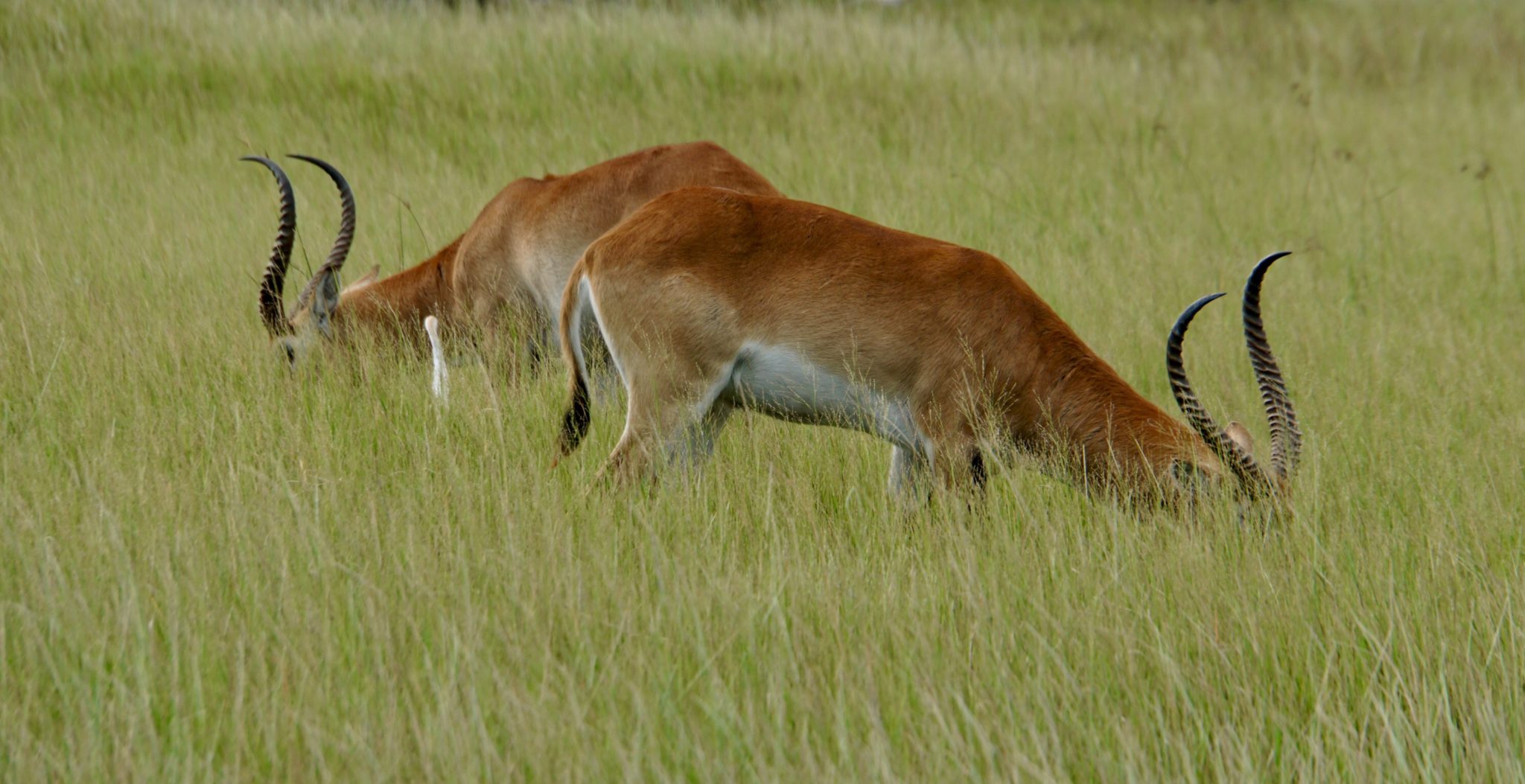 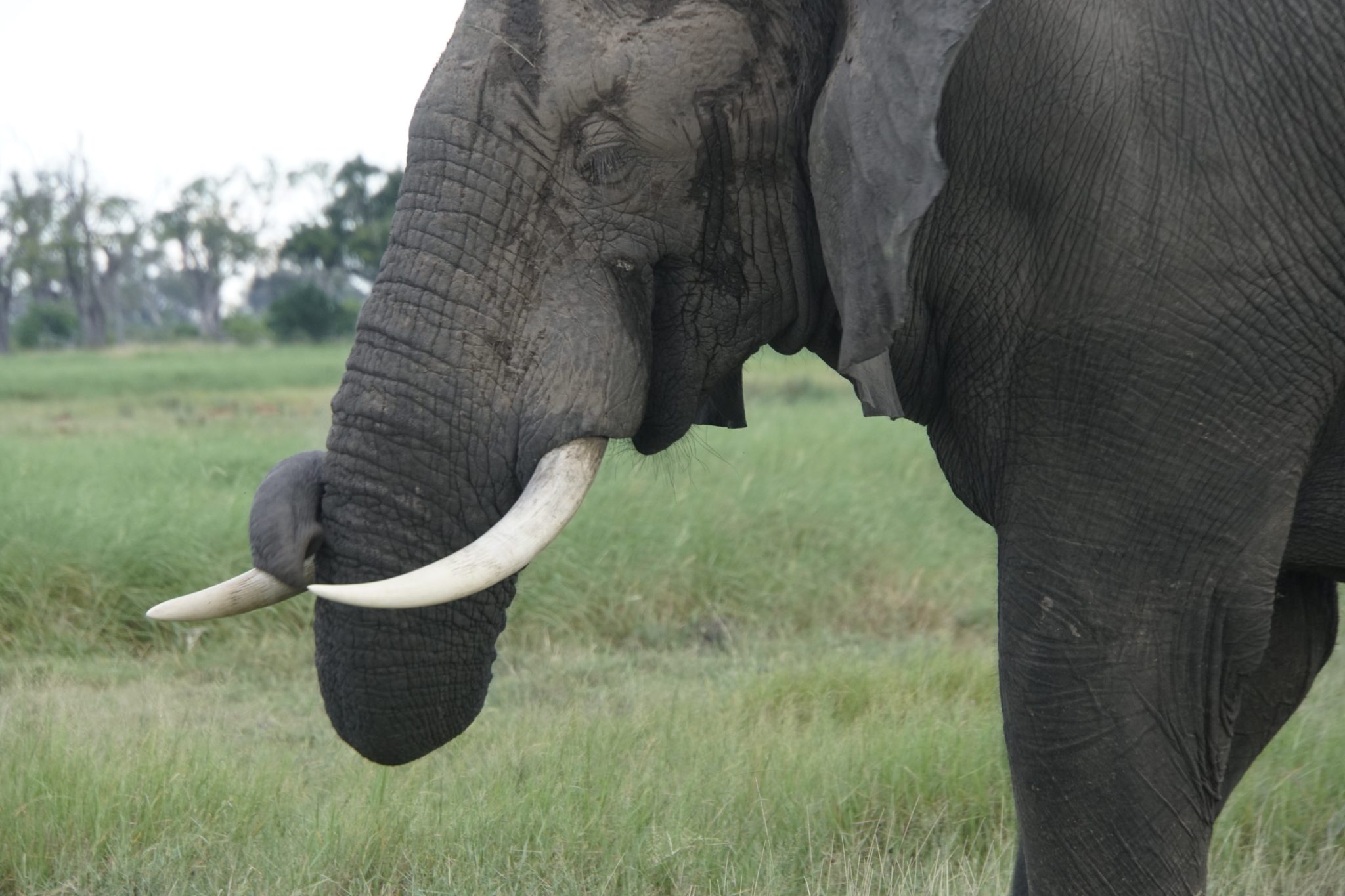 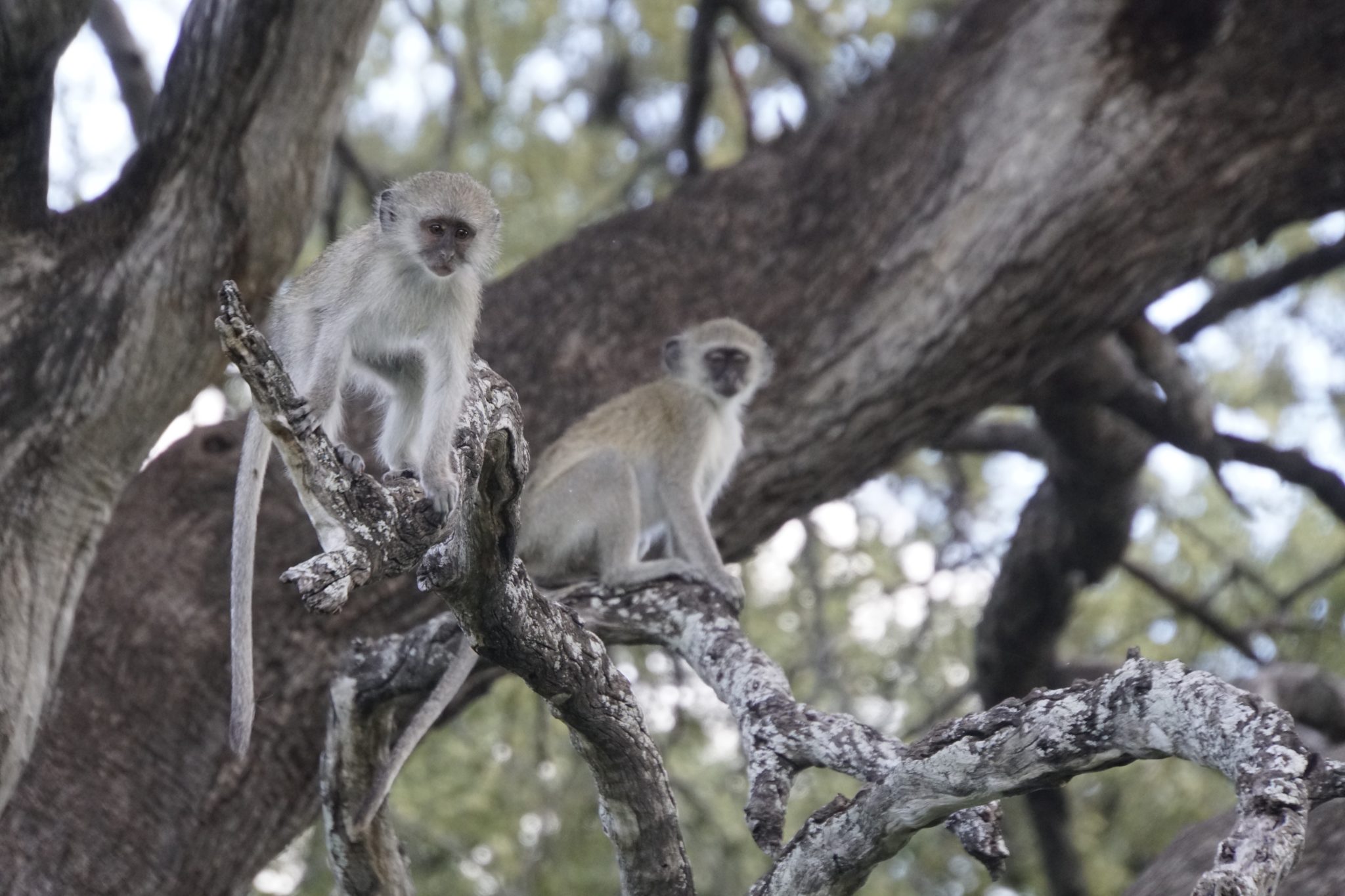 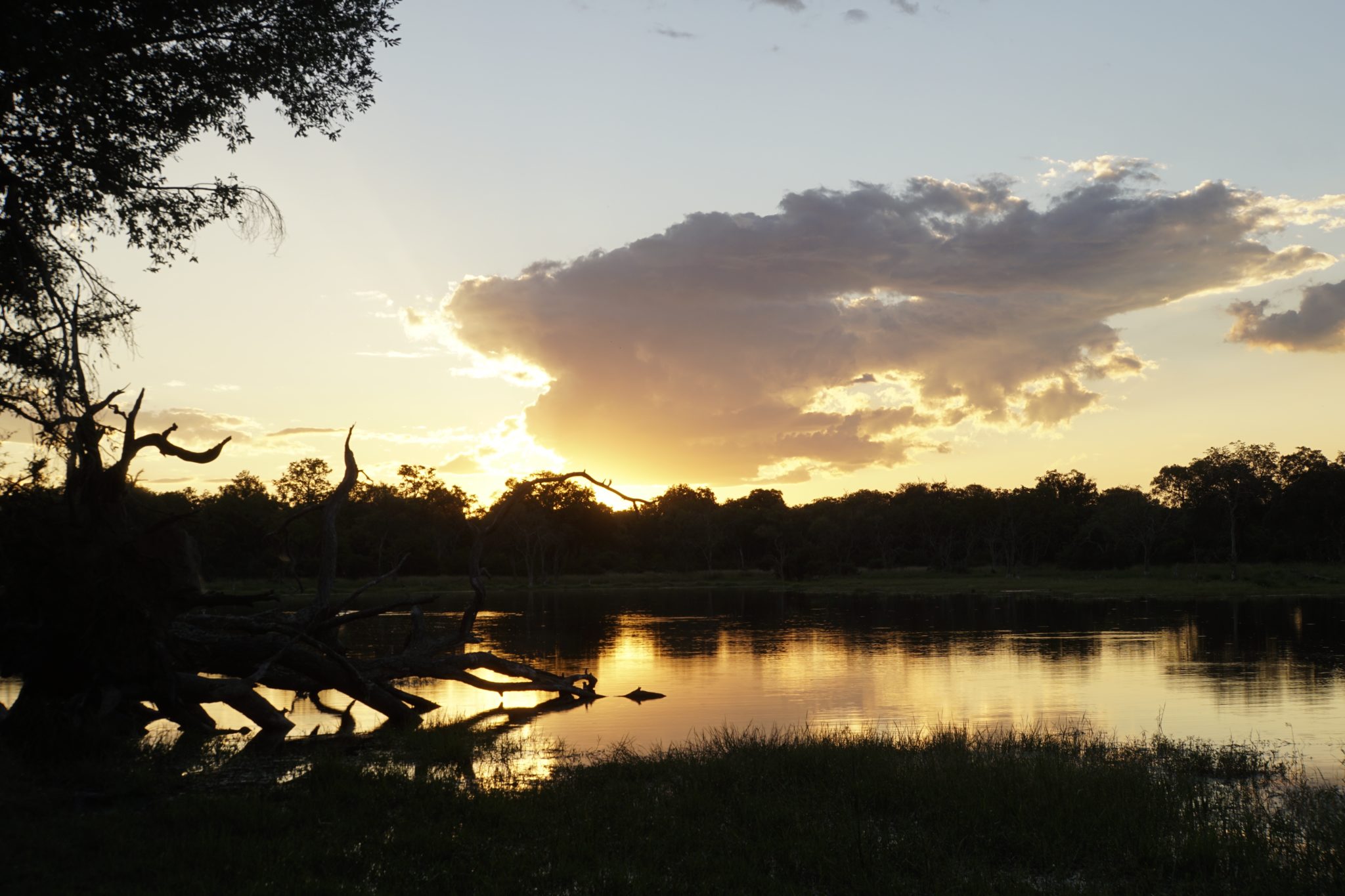 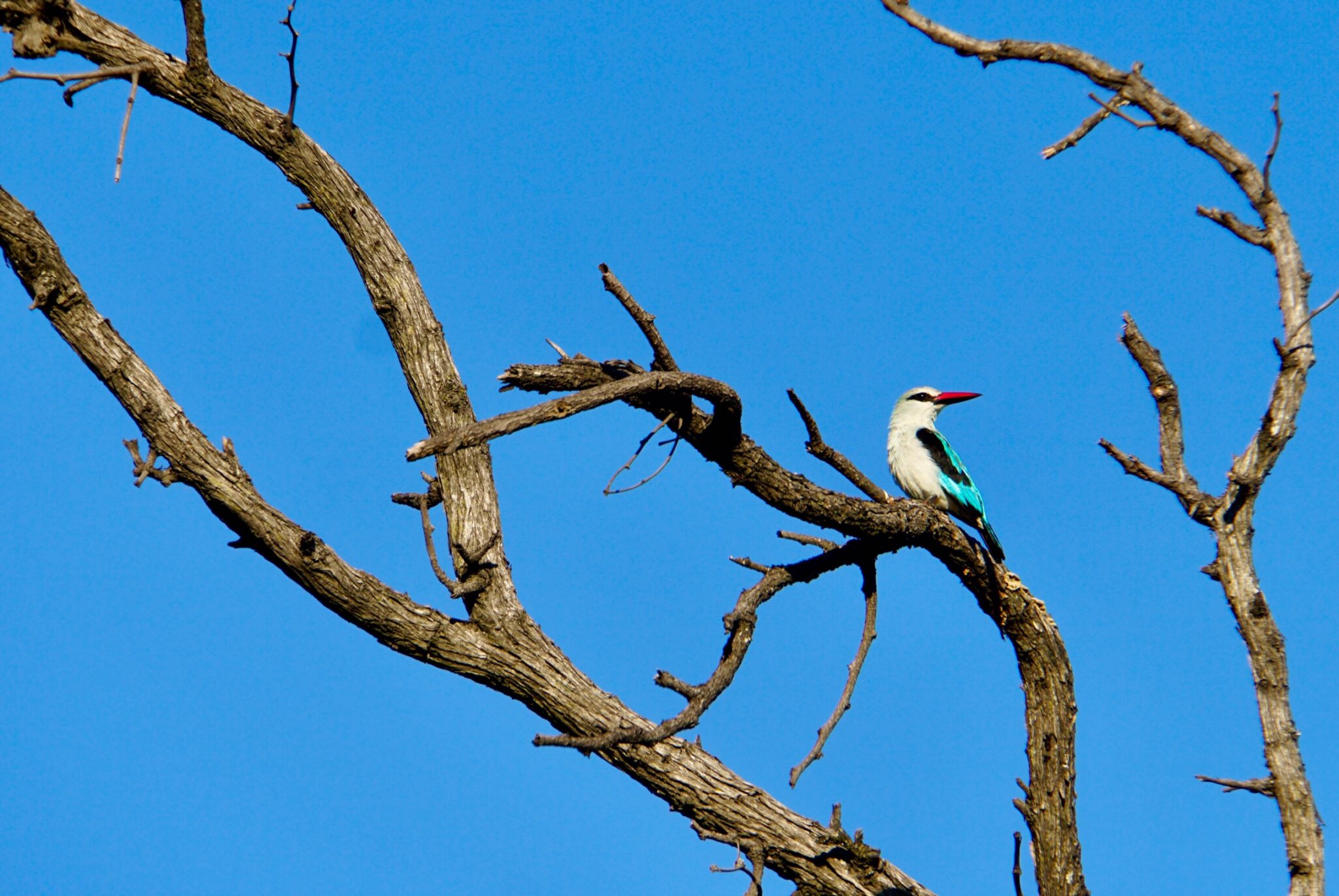 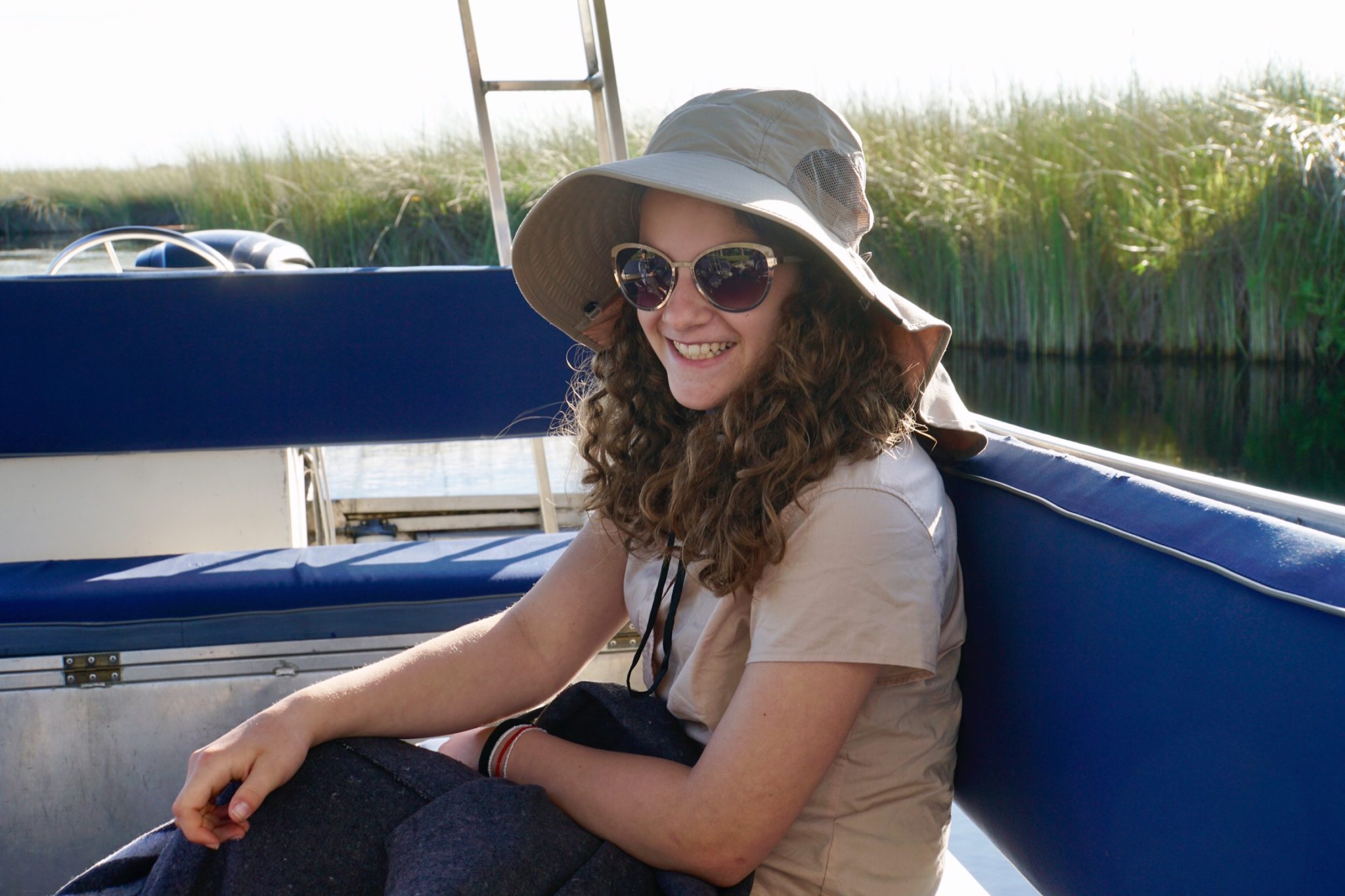 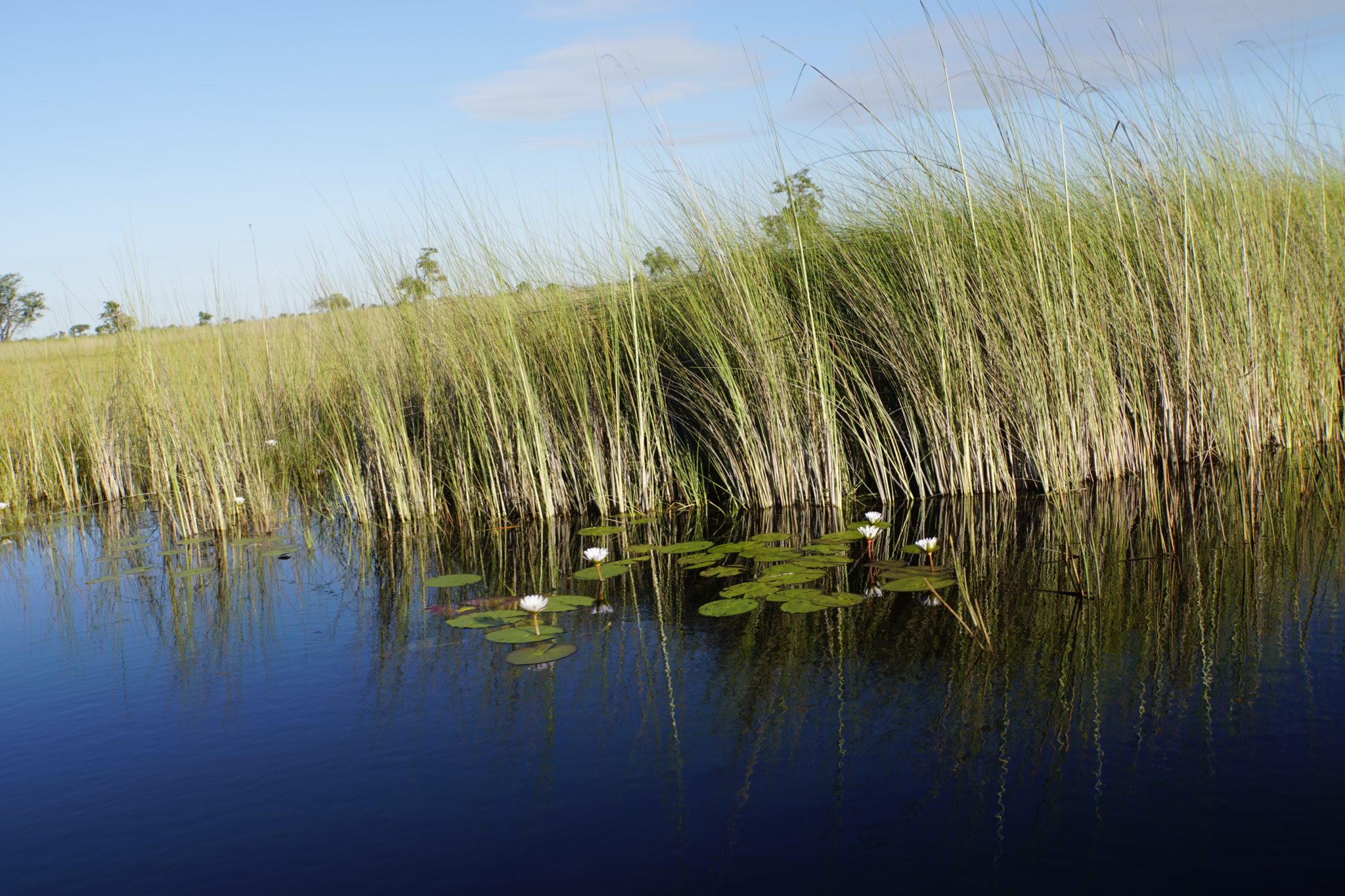 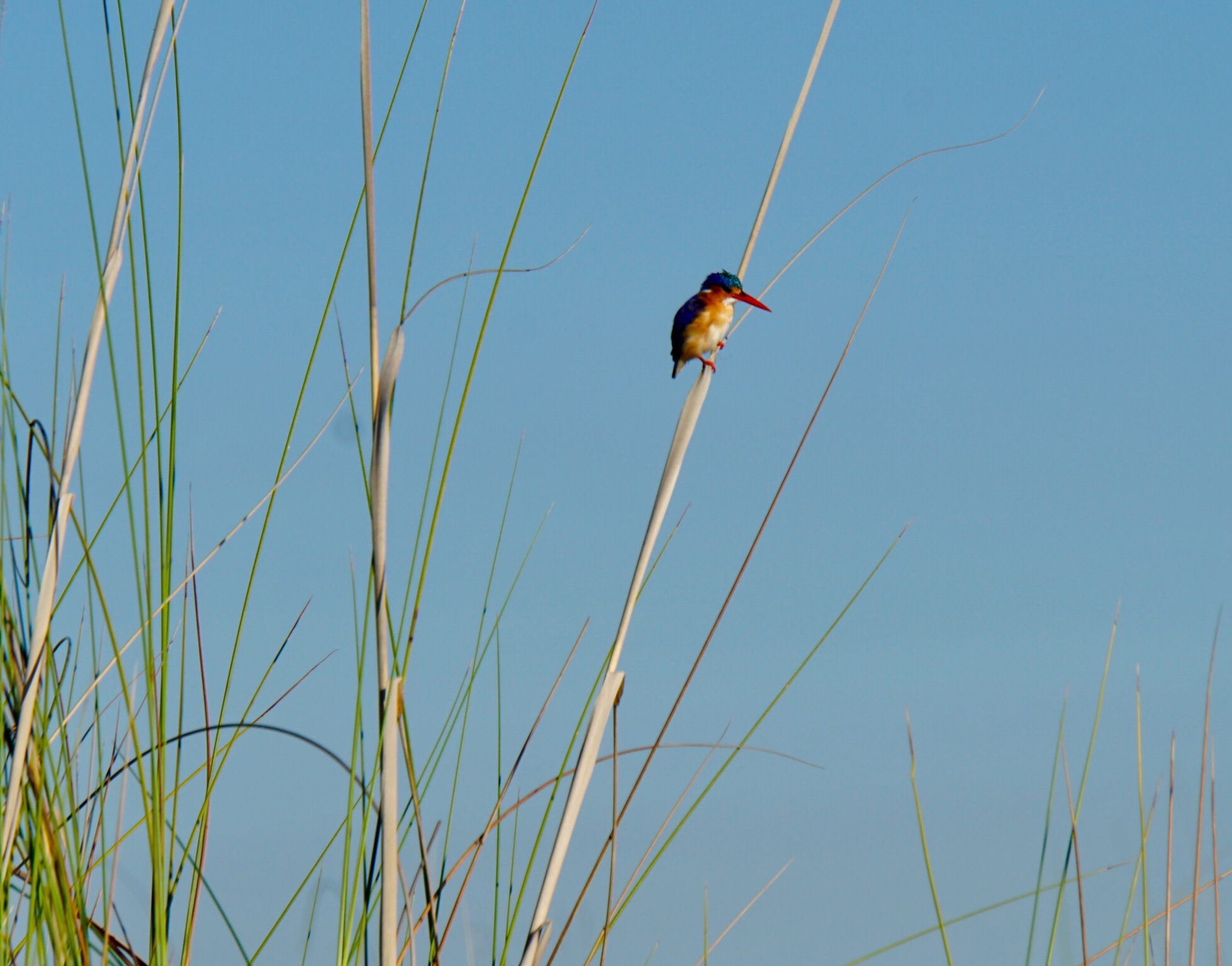 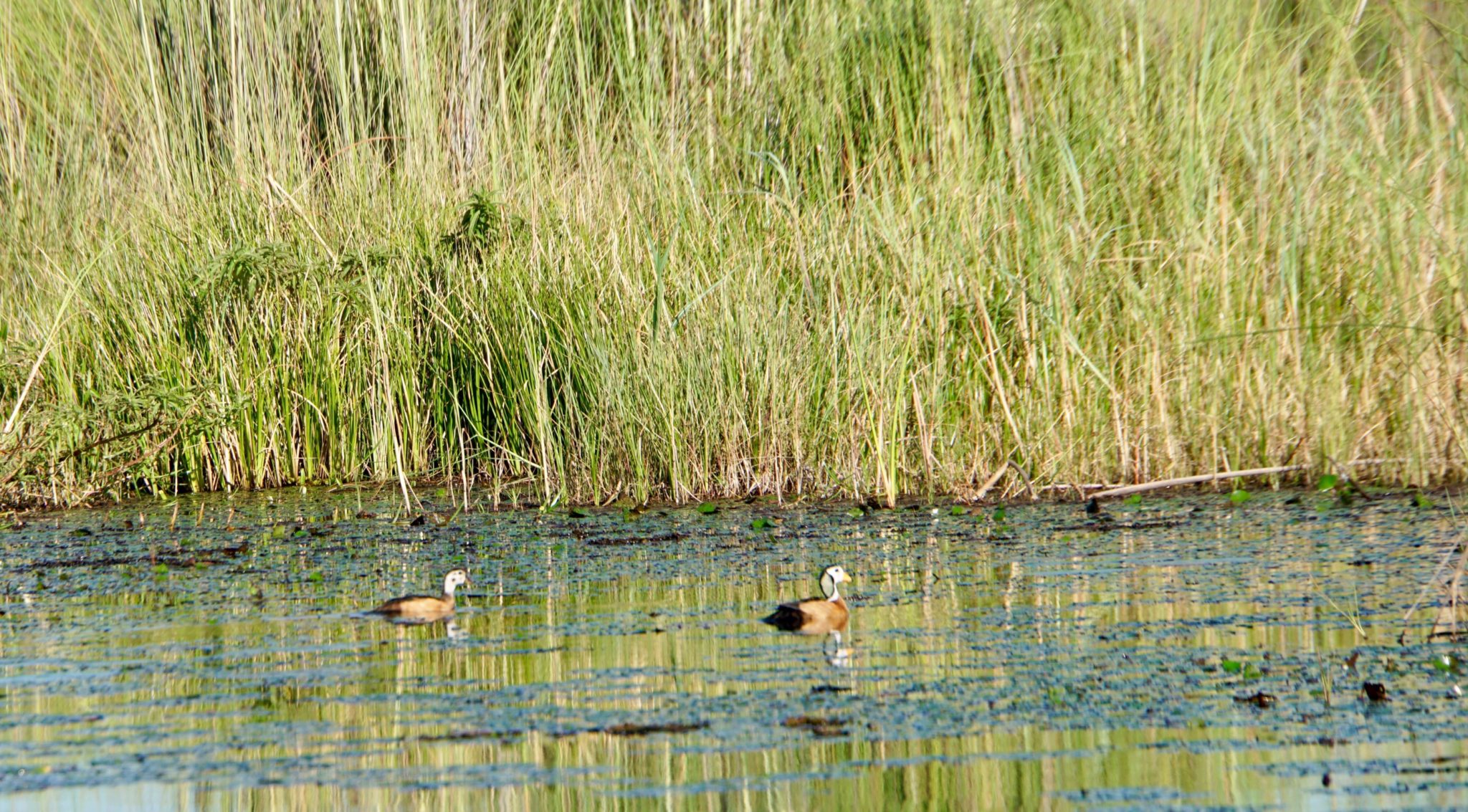 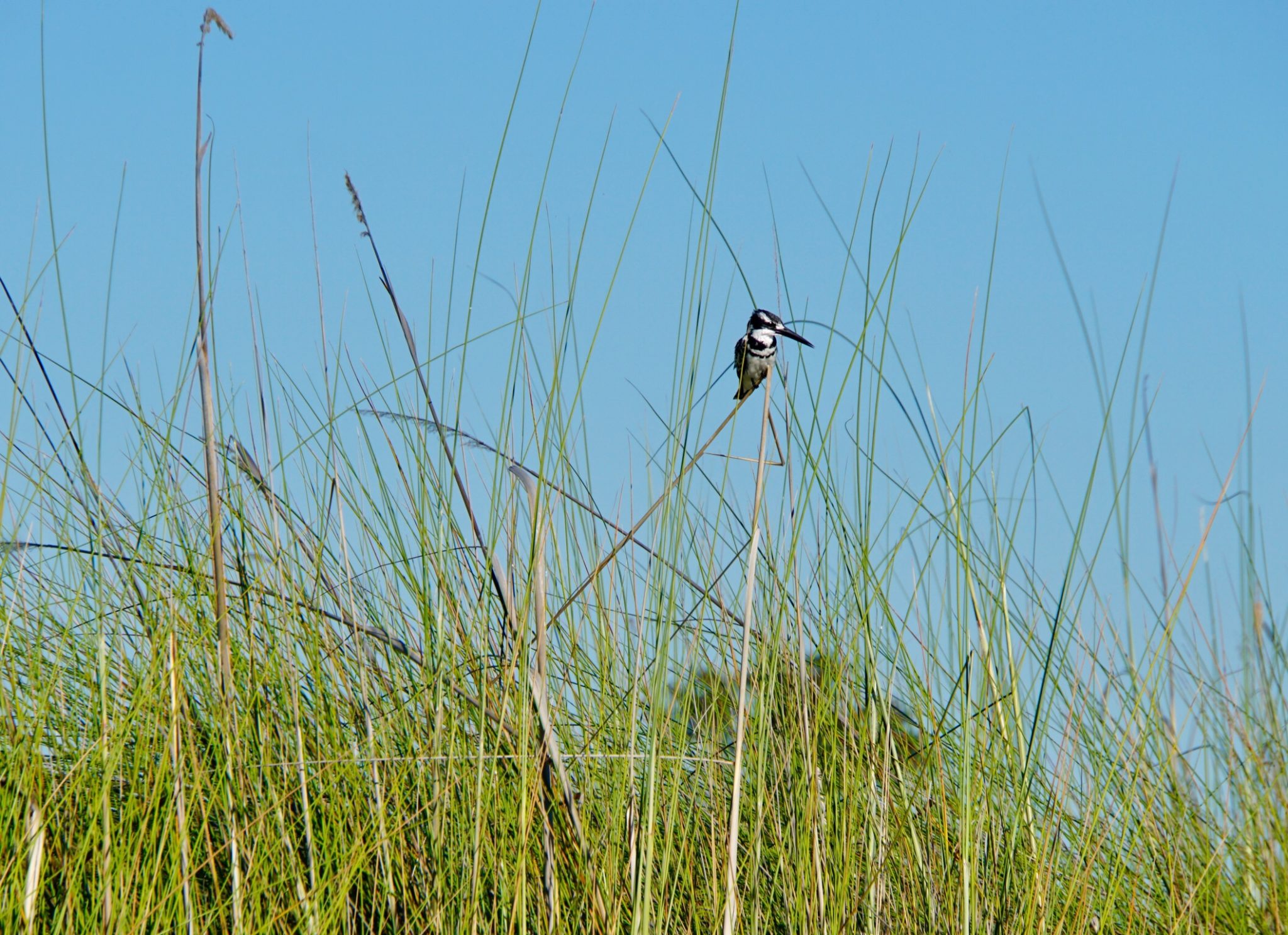 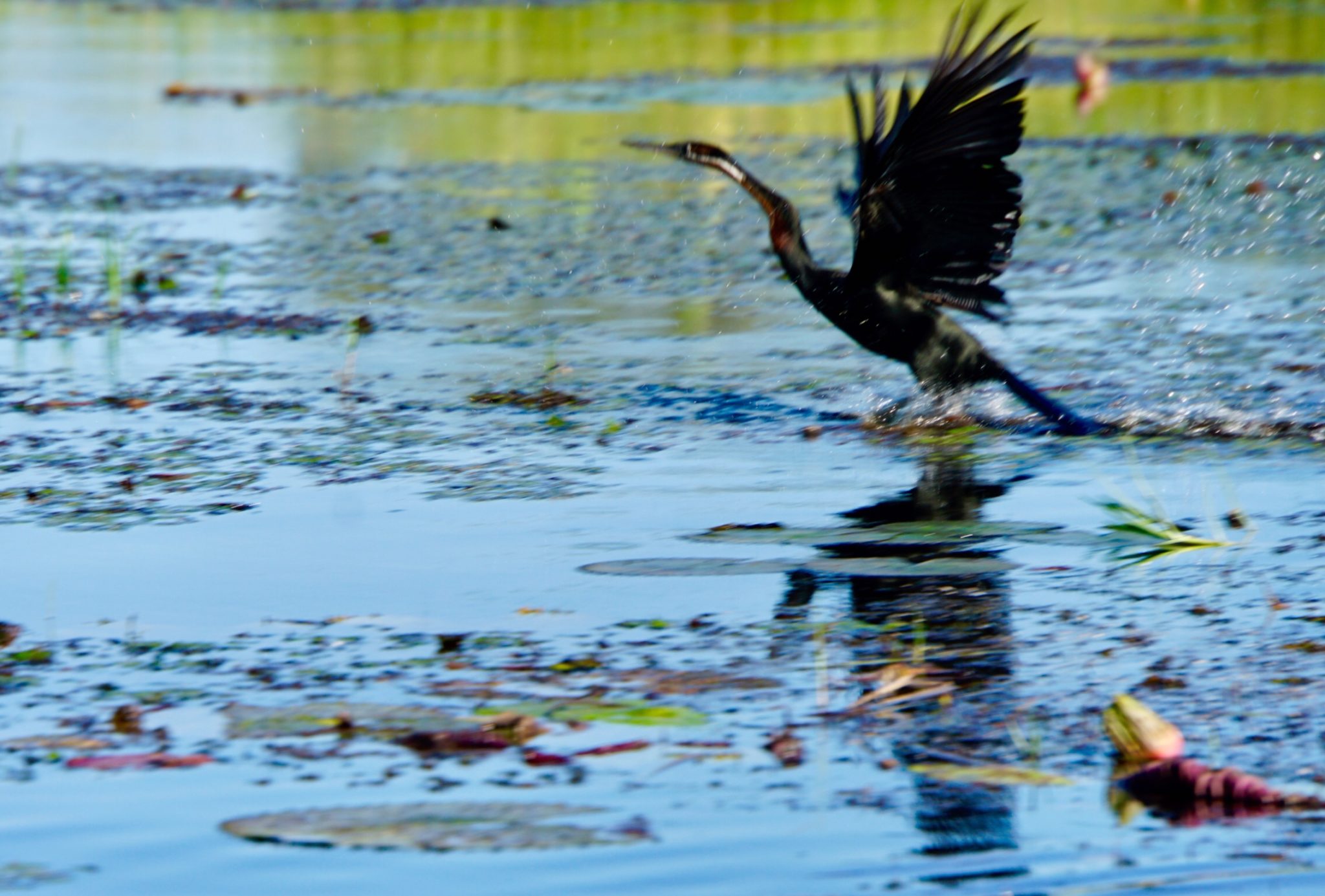 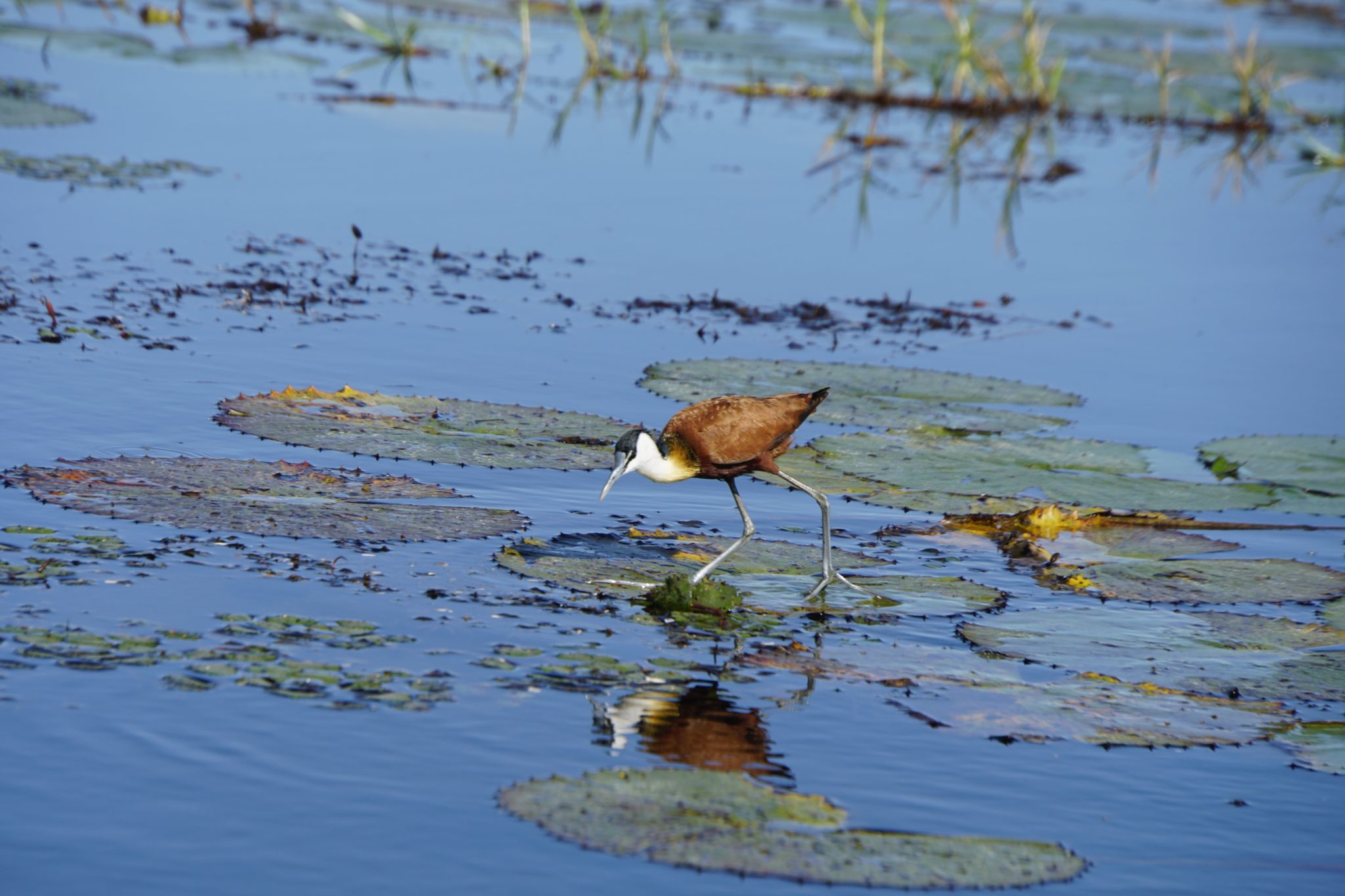 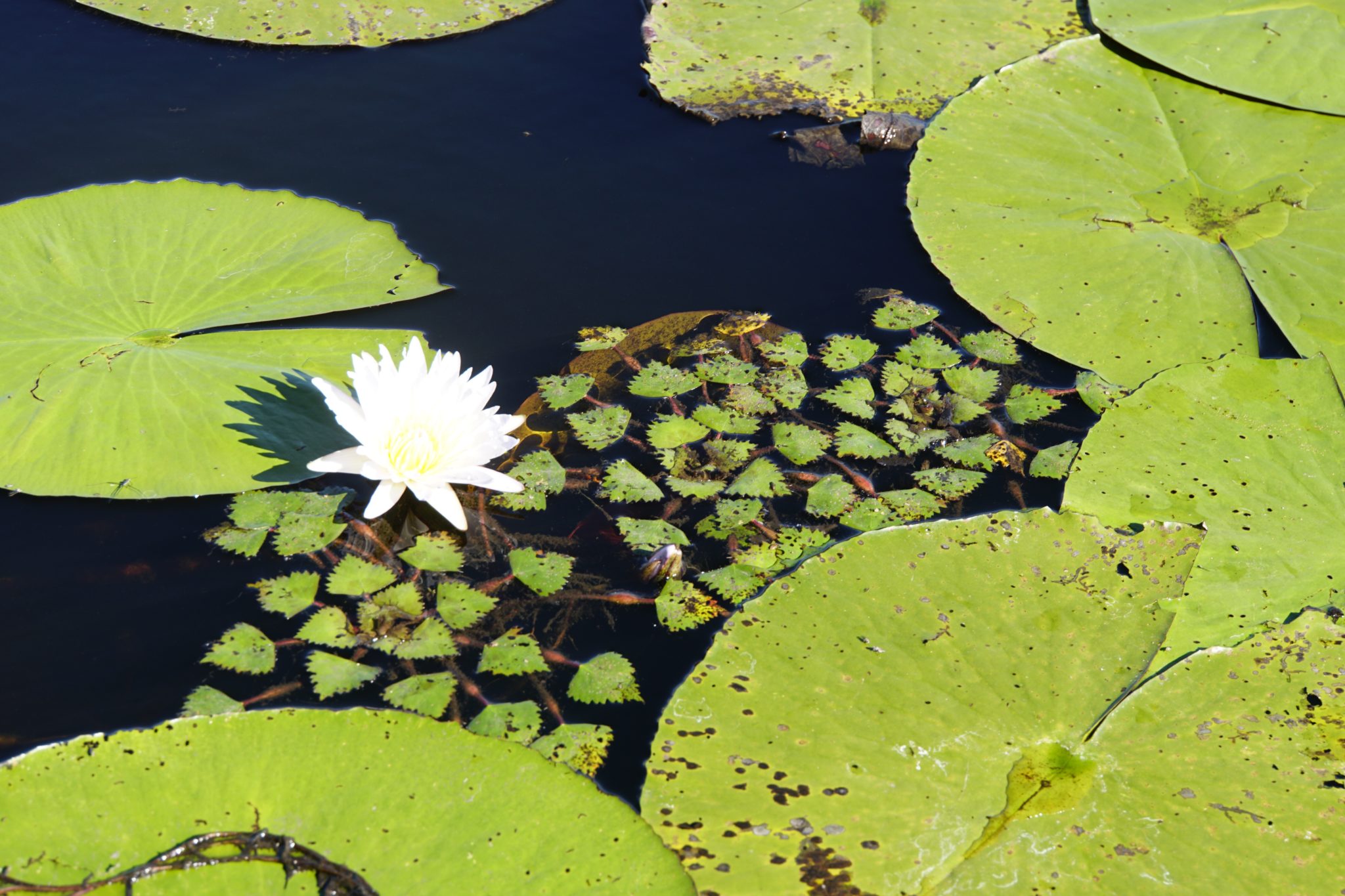 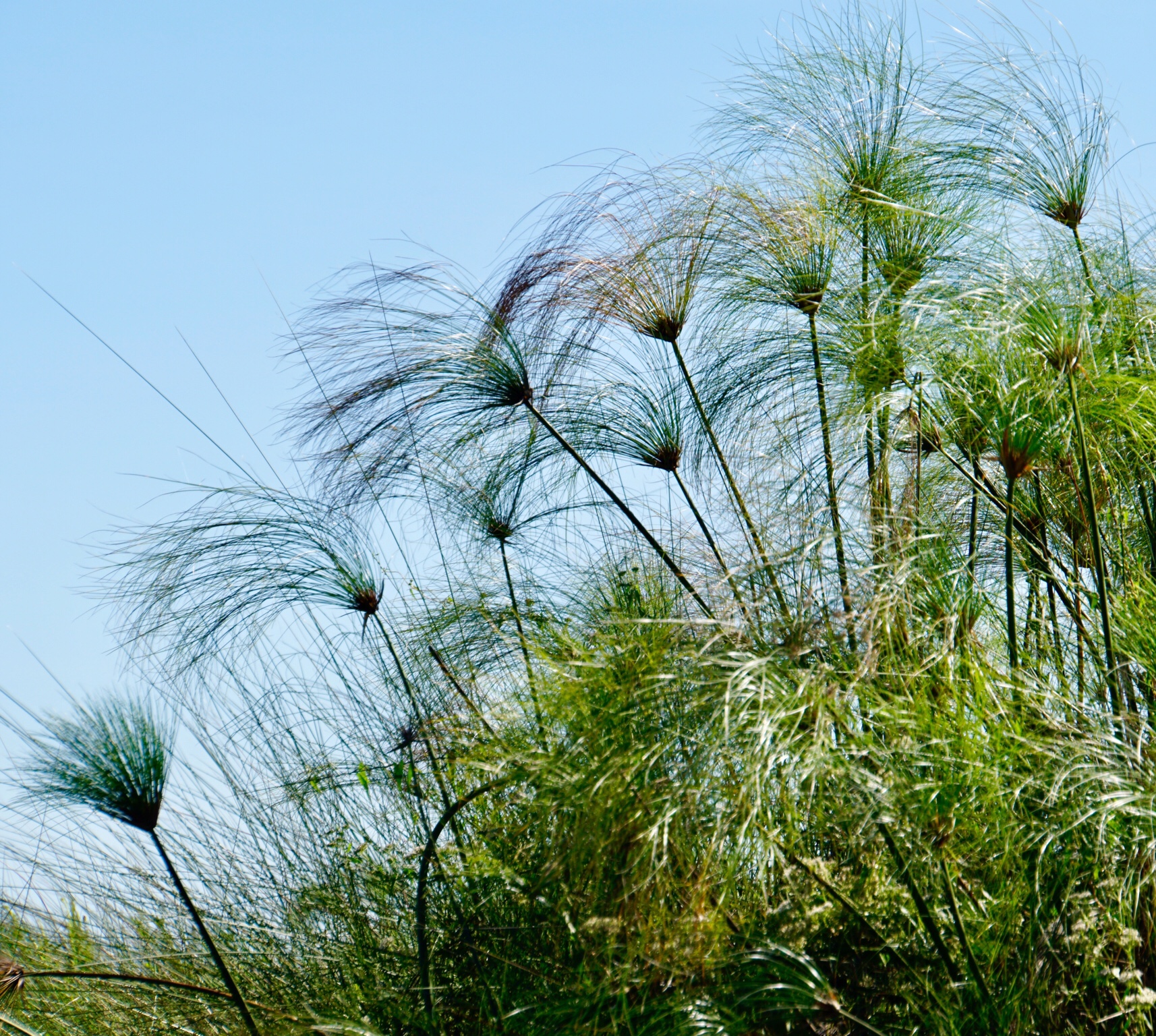 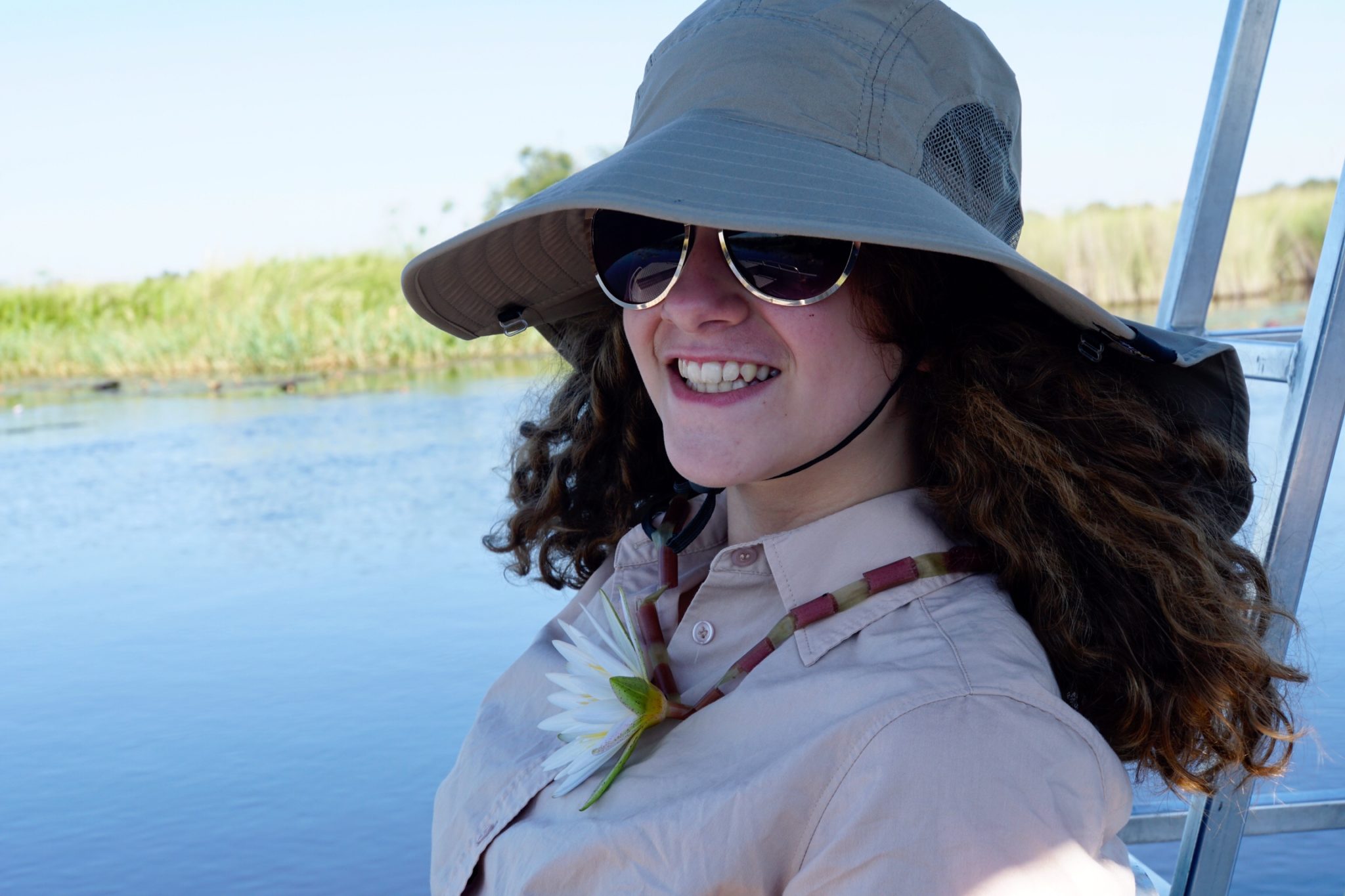 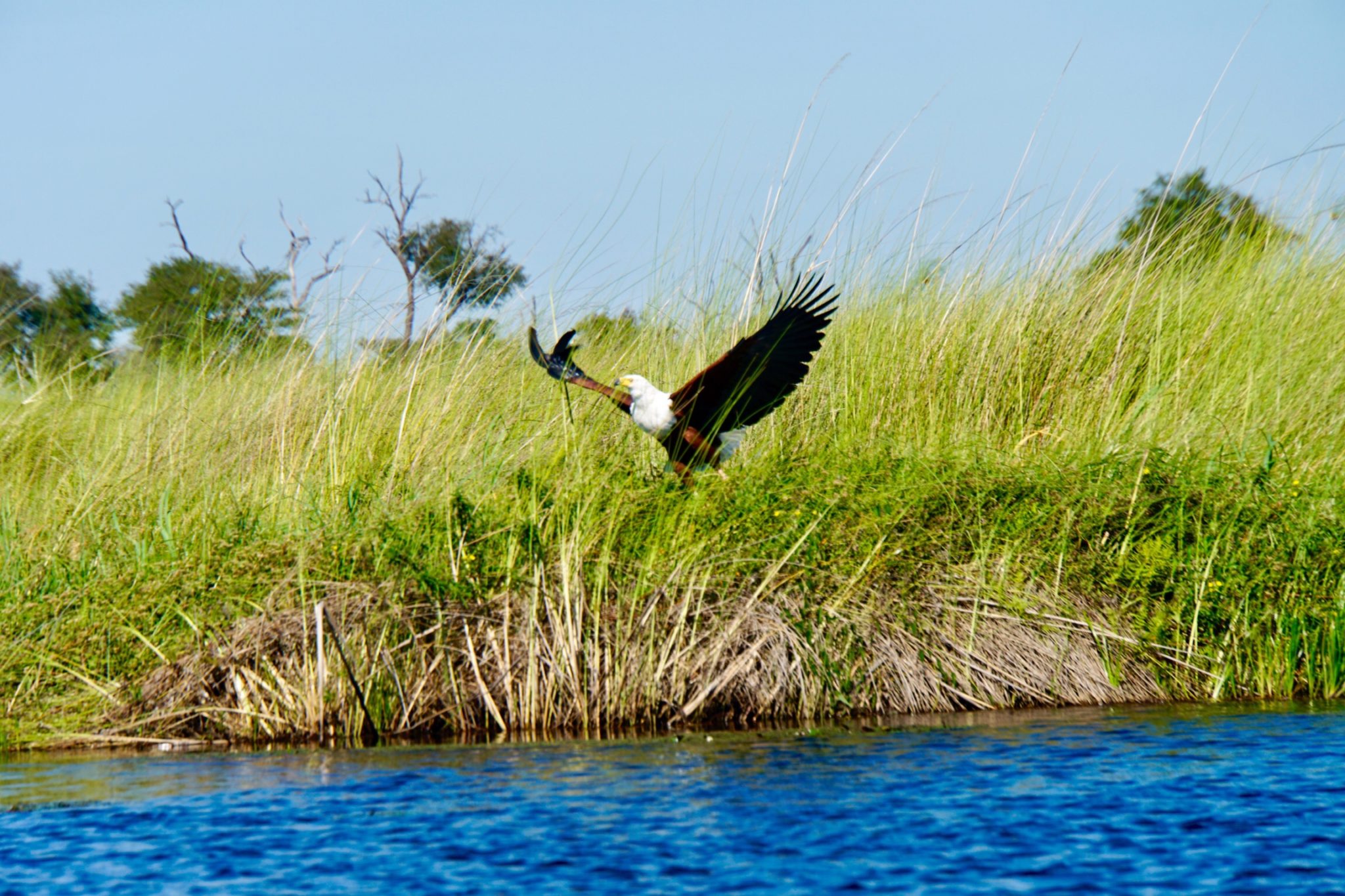 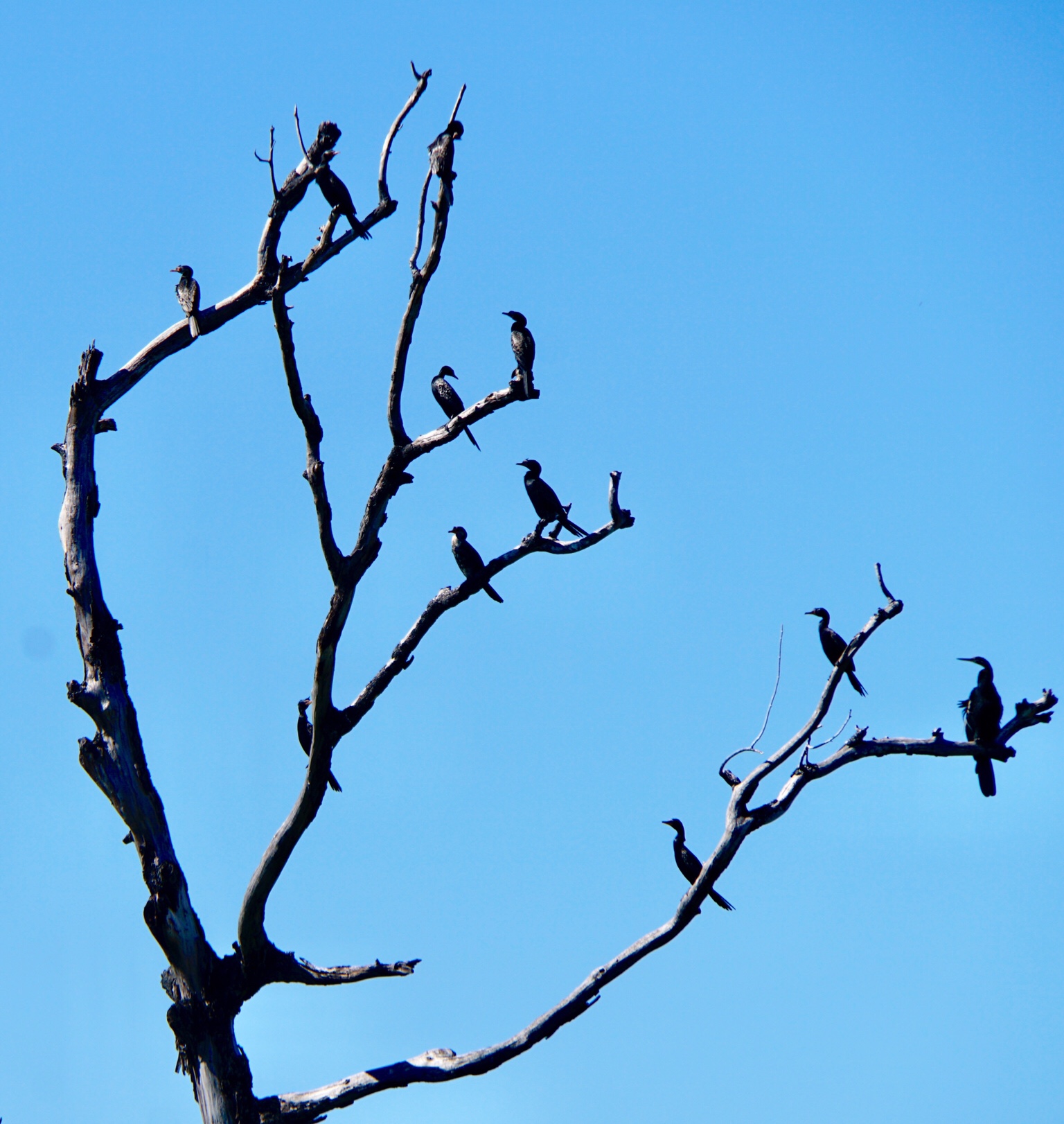 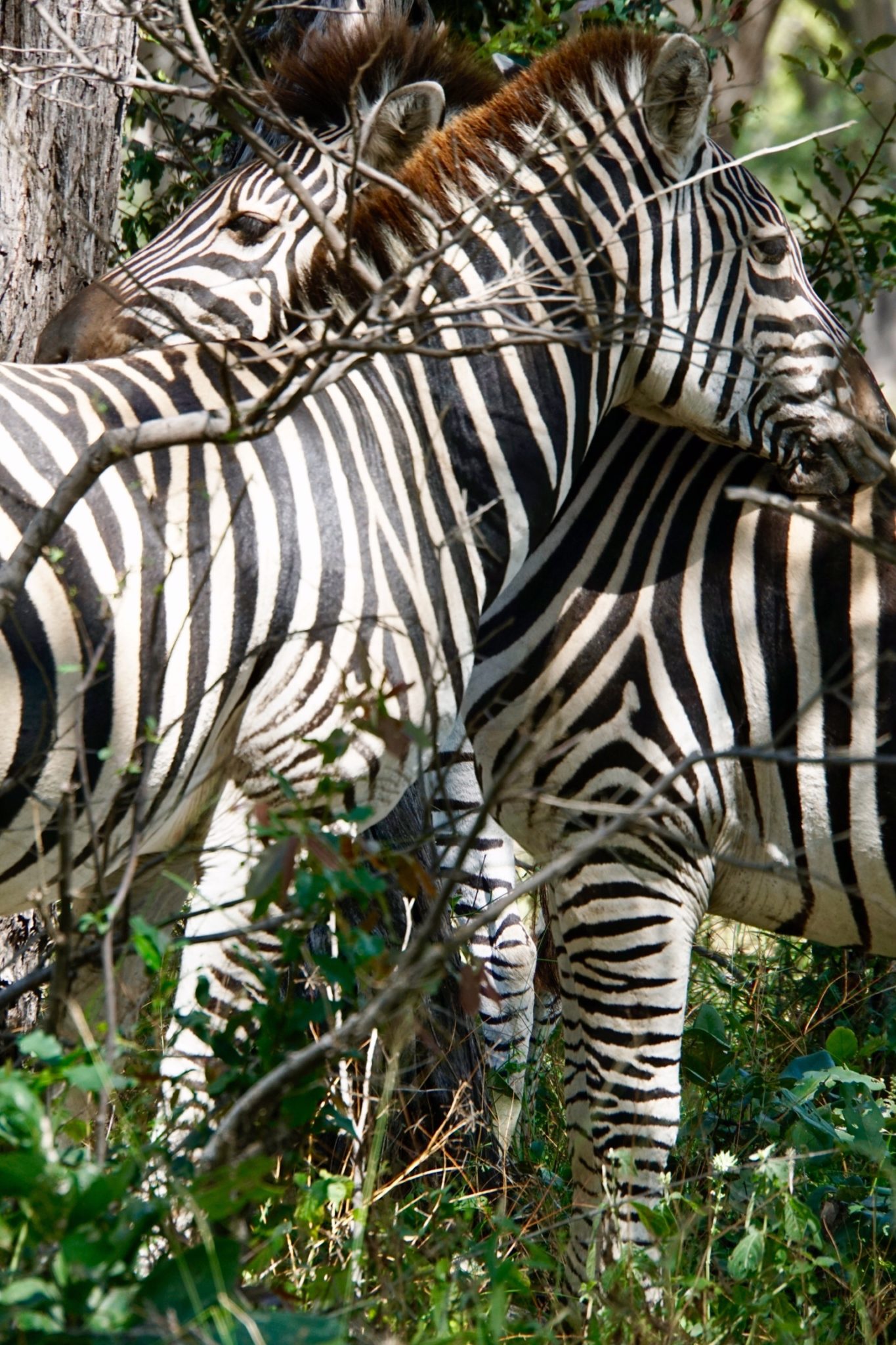 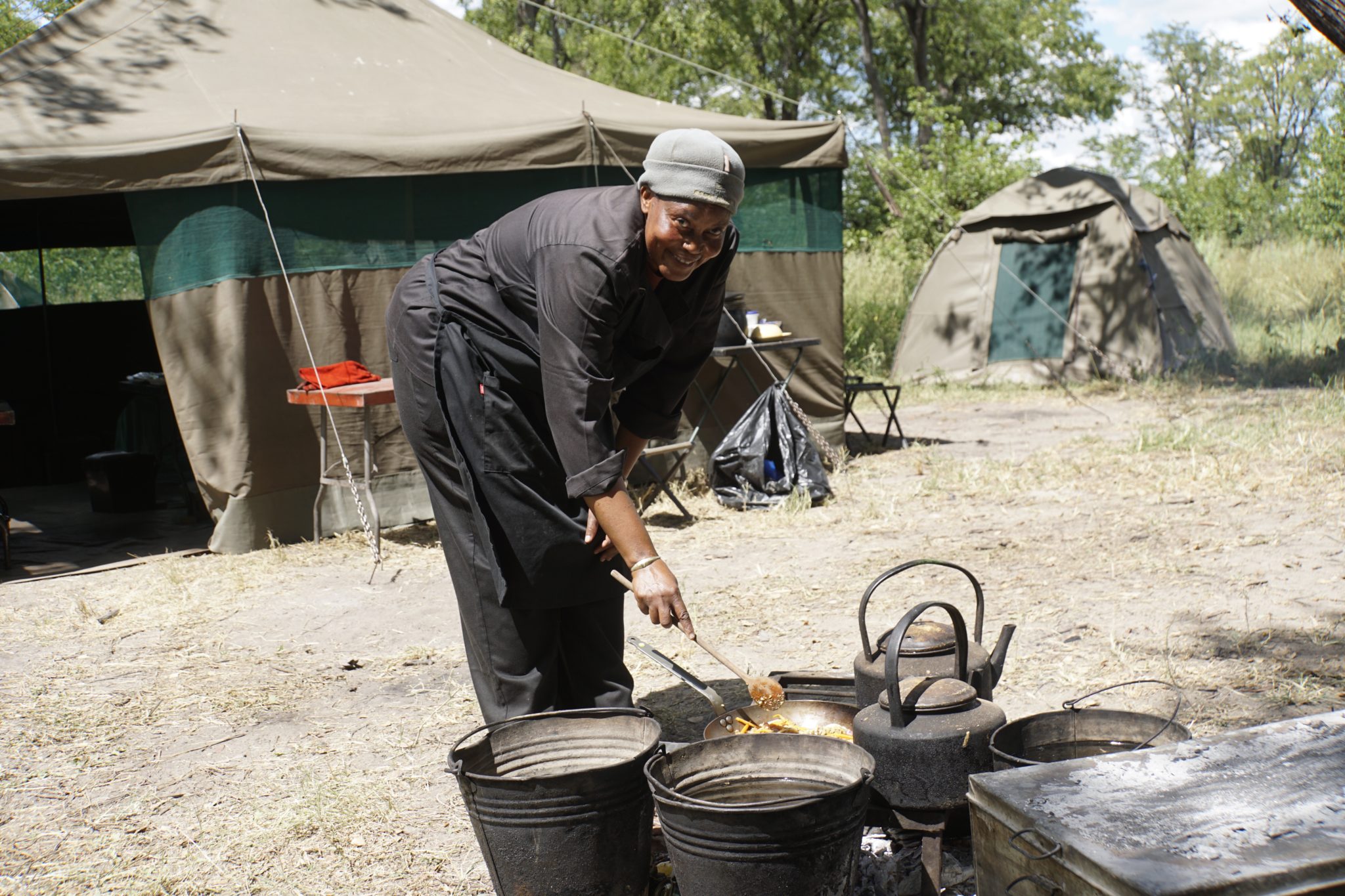 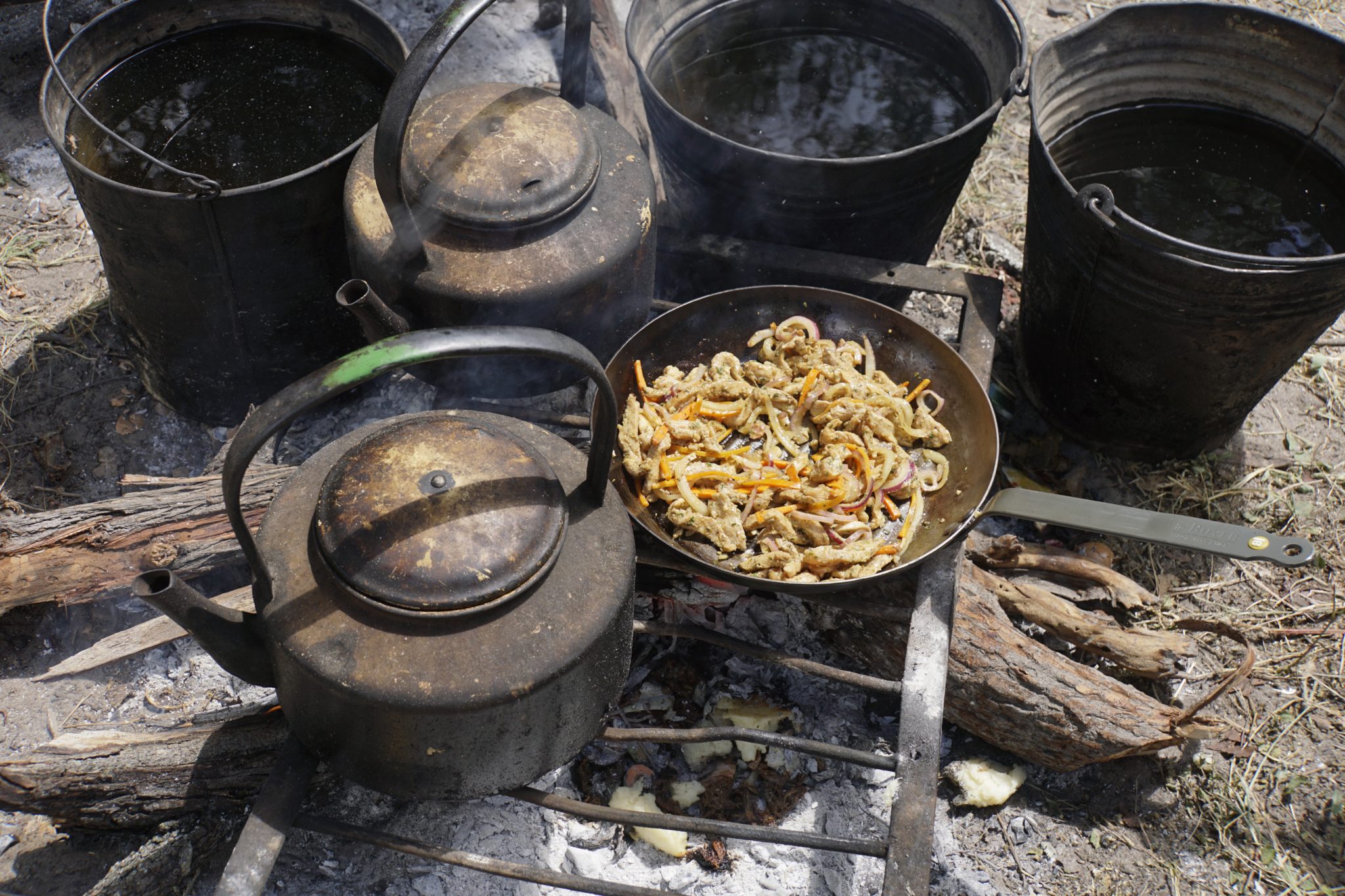 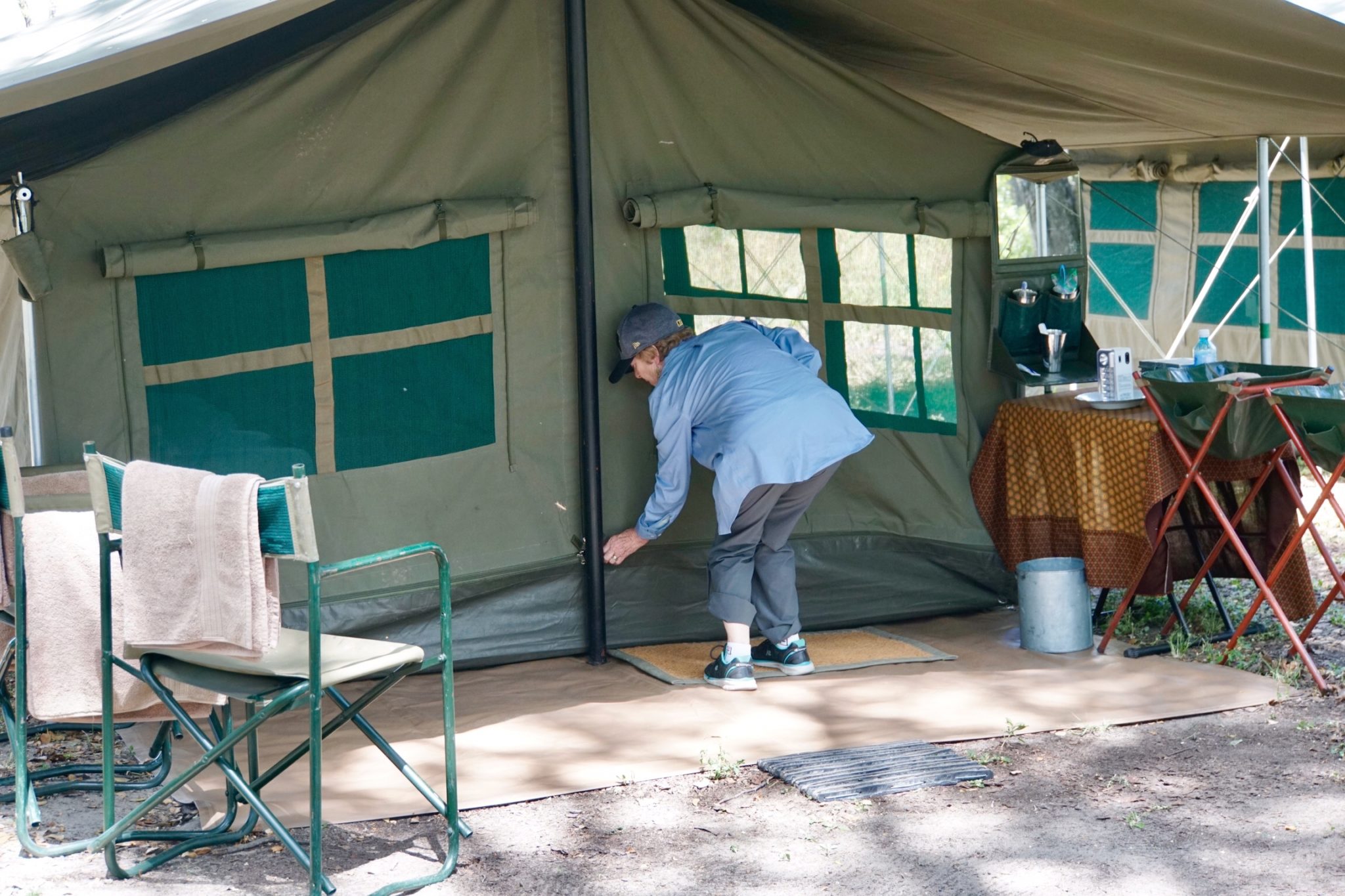 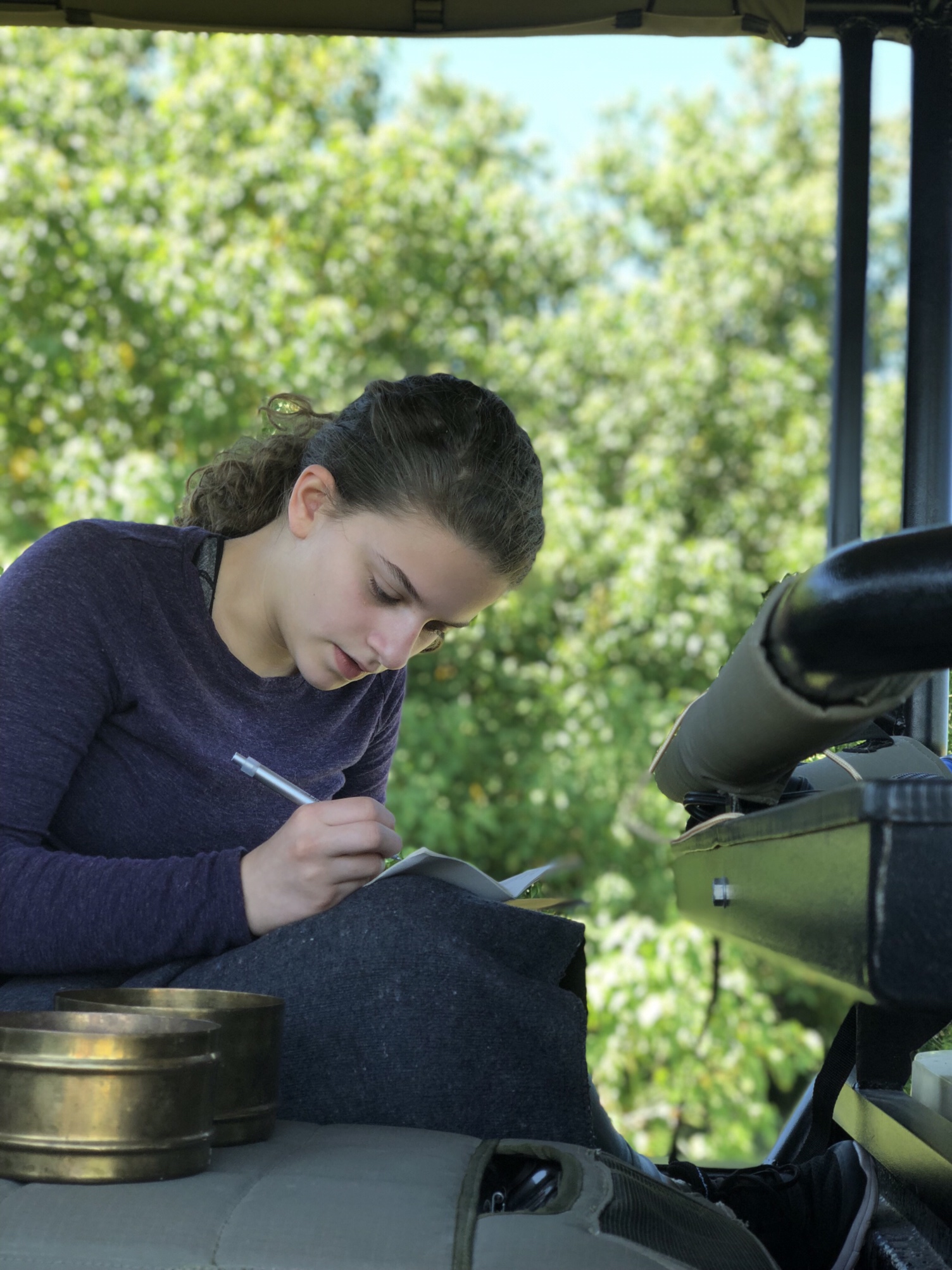 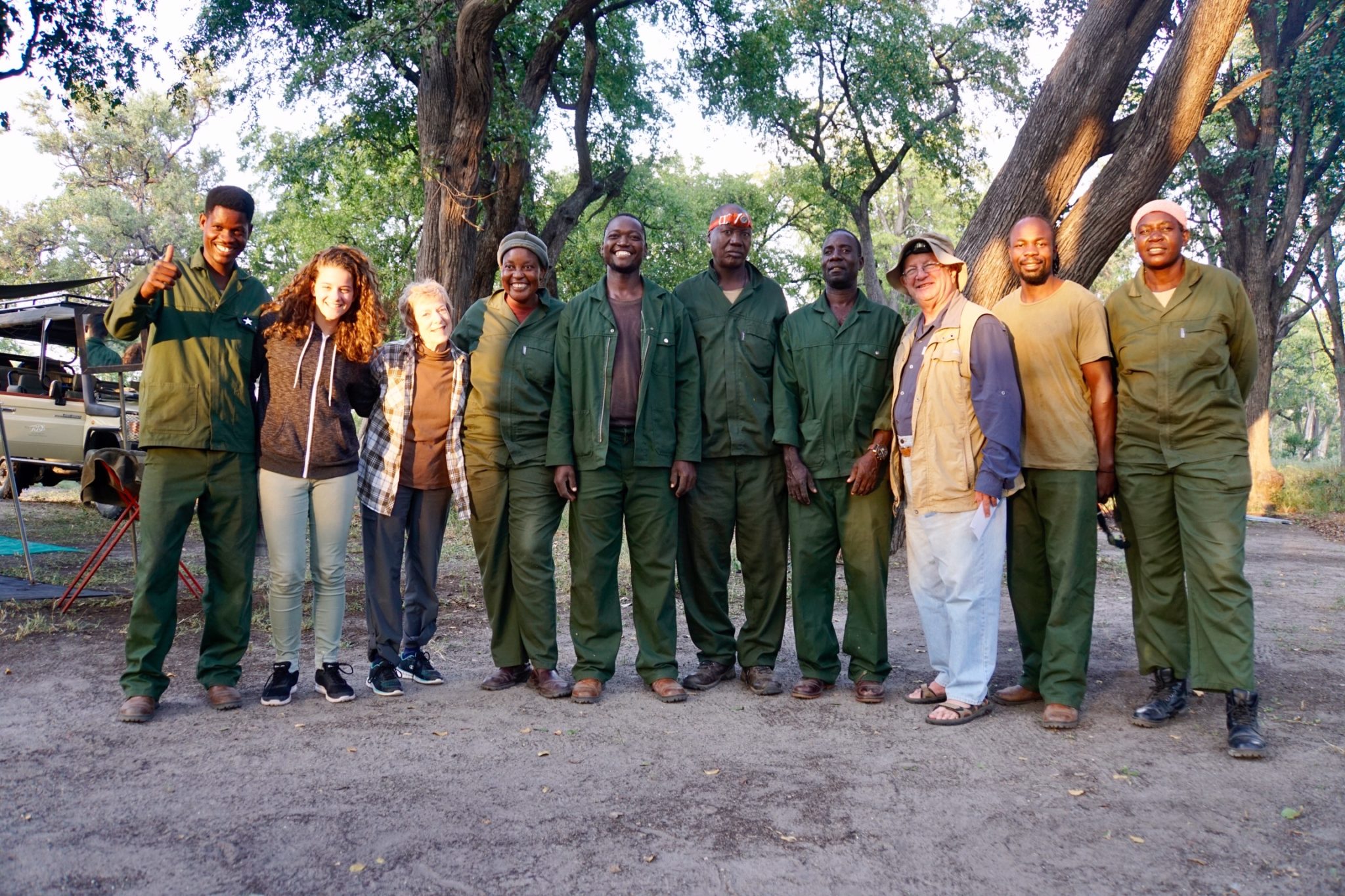 In case you are wondering, Phoebe is totally into the experience. She’s taken literally thousands of photos, many of which are very good and some of which are better than mine. We’re going to need to do something about that. She is excellent at spotting animals and birds and does better on naming them than some people; me, for instance. In Atlanta, Phoebe sometimes gets anxious about situations. She’s shown no anxiety on this trip, despite ample opportunity for it, if one were so inclined. Evidently, the kid is born for the wilderness. In case you are wondering, Phoebe is totally into the experience. She’s taken literally thousands of photos, many of which are very good and some of which are better than mine. We’re going to need to do something about that. She is excellent at spotting animals and birds and does better on naming them than some people; me, for instance. In Atlanta, Phoebe sometimes gets anxious about situations. She’s shown no anxiety on this trip, despite ample opportunity for it, if one were so inclined. Evidently, the kid is born for the wilderness.
Roger is a solid “A” in all respects. For starters, he’s just a pleasant, comfortable person to spend time with. He lacks all pretense, and clearly loves what he does. He’s a good conversationalist with an excellent sense of humor. We discuss creating an Urban Safari Company, and what that would entail, he accepts a Cubs hat to give to Meghan at her wedding (which Roger will attend at Windsor next month) and says he’ll take a copy of our Africa book of poems and photos to Harry, if we can get one to him before he leaves.
Roger knows about all the animals, birds, trees and plant life. He’s able to identify animals and birds instantly and is very patient in explaining them to us and in indicating how and where to find them. He’s able to find them, tracking and calling them, and intuiting their presence from the way other birds and animals are behaving. He understands their behaviors and why they do what they do, regularly saying things like, “if I were a leopard, I’d want to be right here because…..”. Oh, yes, and he does all of this while driving our jeep on narrow, bumpy roads, around and over numerous holes, avoiding (or driving over) bushes and trees that encroach on the path and sometimes driving through water that is up to the hood of the car, somehow avoiding getting stuck in the mud for about nine hours a day (from 7 until about 12:30and 3:30 to 7).
April 12. We survive our first night in a tent in the bush. I’d be lying if I said I was giving serious thought to making this my permanent new life style, but for six nights it will be a great and fun experience.
We’re awakened at 6AM, have a light breakfast and are off in the jeep by seven. We’d been told by our travel agents that mornings would be cold and we needed to pack sweaters and a jacket. In fact, I was very comfortable in a short sleeve shirt and shorts, and did not use the blanket that had been put into the jeep for us. The jeep is designed for nine guests so, being only three, we have lots of room. We are able to charge iPhones, iPads and camera batteries in the jeep, but will have no internet access while we’re here.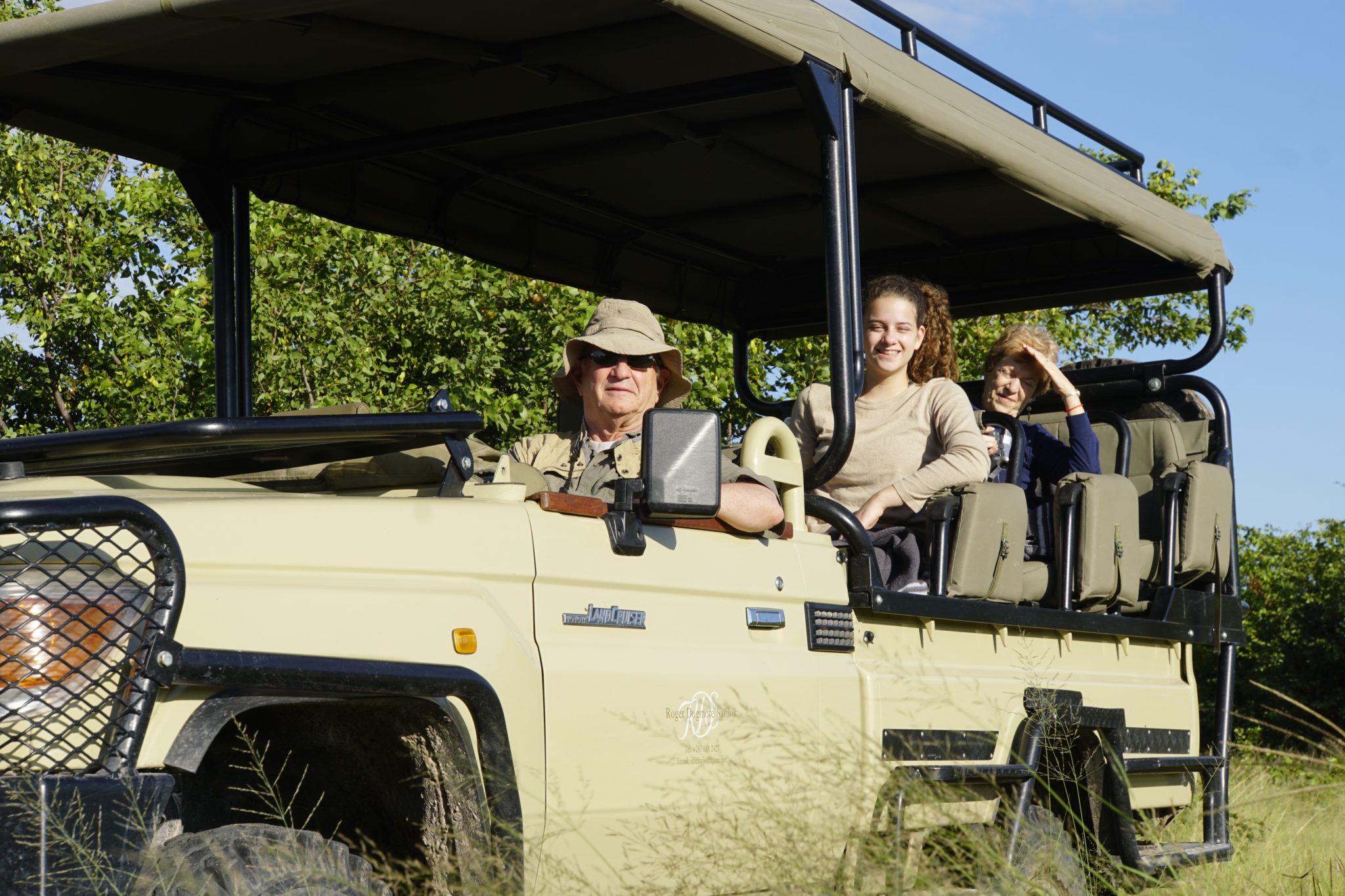 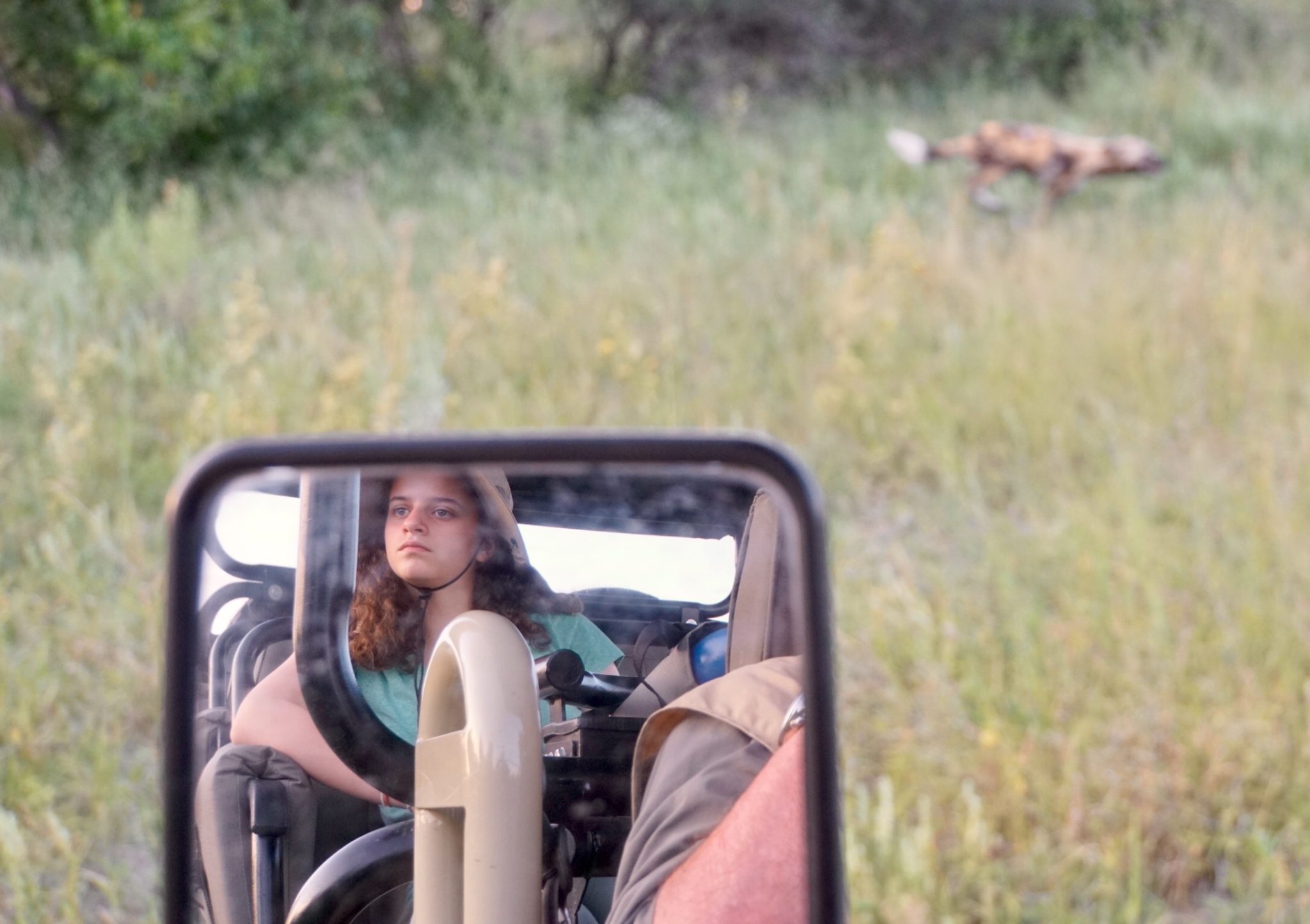
Describing the safari experience is very difficult for folks who have not been on one, and unnecessary for those who have. I’ll give a brief explanation a shot, though.
Out on safari, you are in a world completely different from the one you’ve inhabited. Time is irrelevant and space is enormous and everywhere. The air is clear and clean. Dead trees appear as modern sculptures. Sunsets seem unreal, painted for your enjoyment. The sounds you hear could be a soundtrack for an African safari movie, played on an endless loop. Even the smells you encounter are new—fresh sage, basil and grasses of all sorts. In short, you are transported into an entirely new sphere.
It’s not an exaggeration, I think, to say that the safari experience would be wonderful if you never saw an animal. You’re not assaulted every minute by Donald Frigging Trump, and whether the Cubs won or lost last night doesn’t even seem that important. You pretty-much forget all of those things on your plate back at home; they just don’t exist. And you won’t have an email or a Facebook post for a week and a half. You’ve sorta forgotten how good those days were.
Of course, you do see animals and birds, and they are amazing. For those tempted to think, “big deal, I can go to the zoo,” I don’t mean to sound condescending, but you just don’t get it. It would be similar to saying, “I really don’t need to go to the Grand Canyon; I saw my sister-in-law’s snapshots.”
Part of the appeal of the safari is its total unpredictability. We set out hoping to see elephants, giraffes and, perhaps, lions this morning. We saw none of them. But we saw some of the most incredible birds—the little bee eaters, the lilac-breasted rollers and the pied kingfisher jump to mind as outstanding, but we probably saw at least forty different birds this morning. And, it’s not as if we didn’t see animals, hippos, zebras, red lechwe and wildebeests, to name a few. Roger is expert at finding and identifying birds and animals and has a delightful, easy manner and a good sense of humor.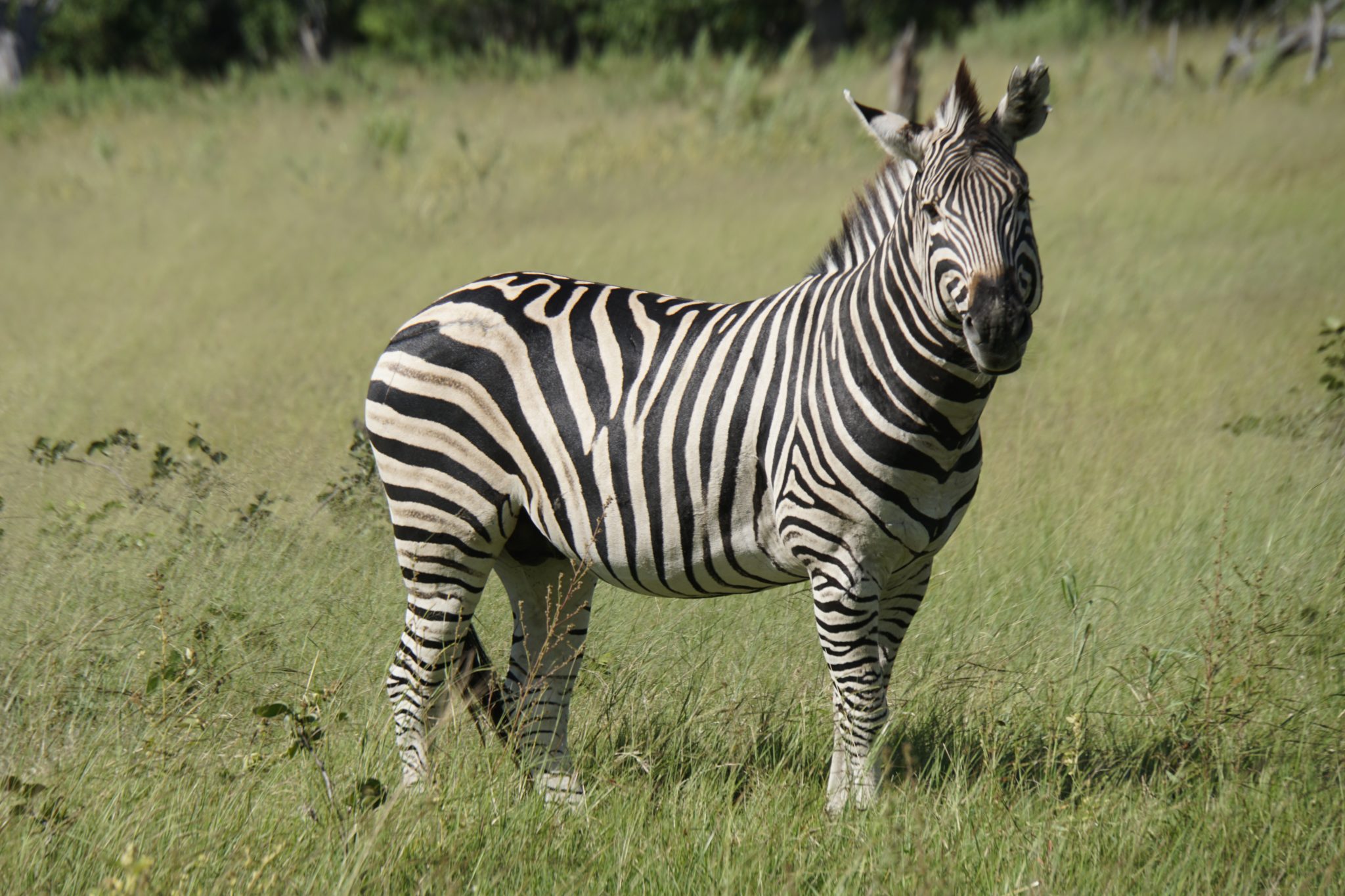 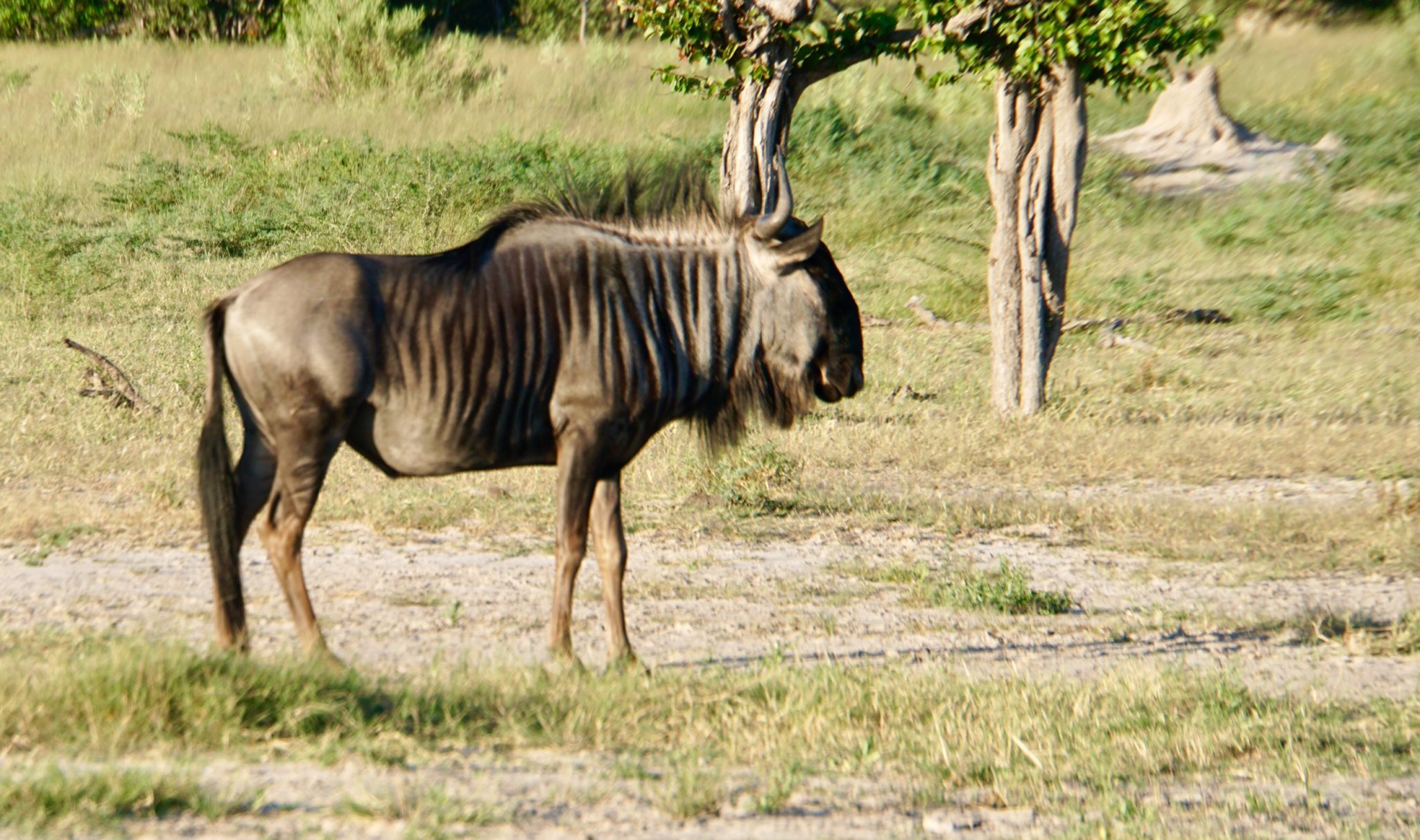 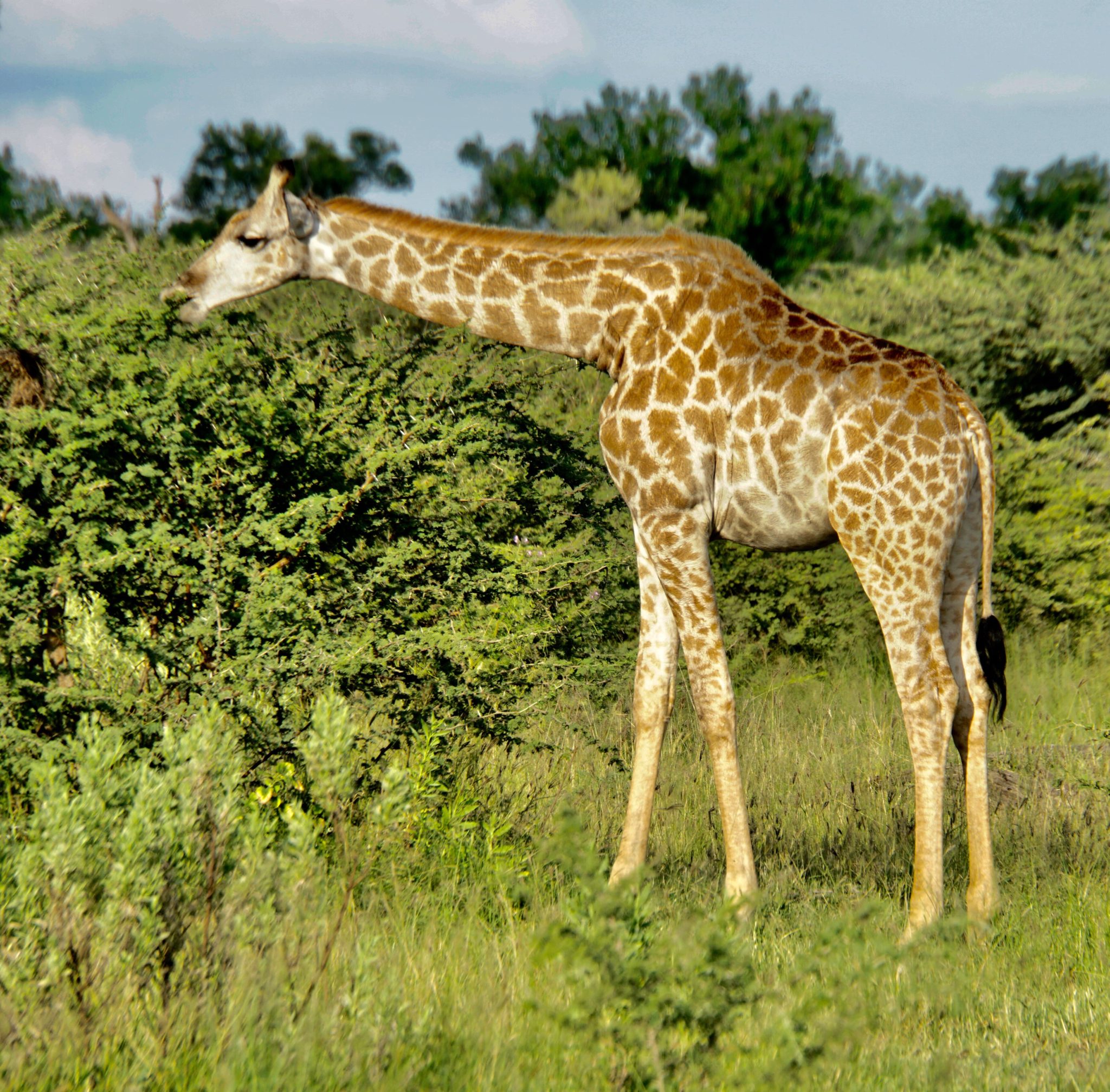
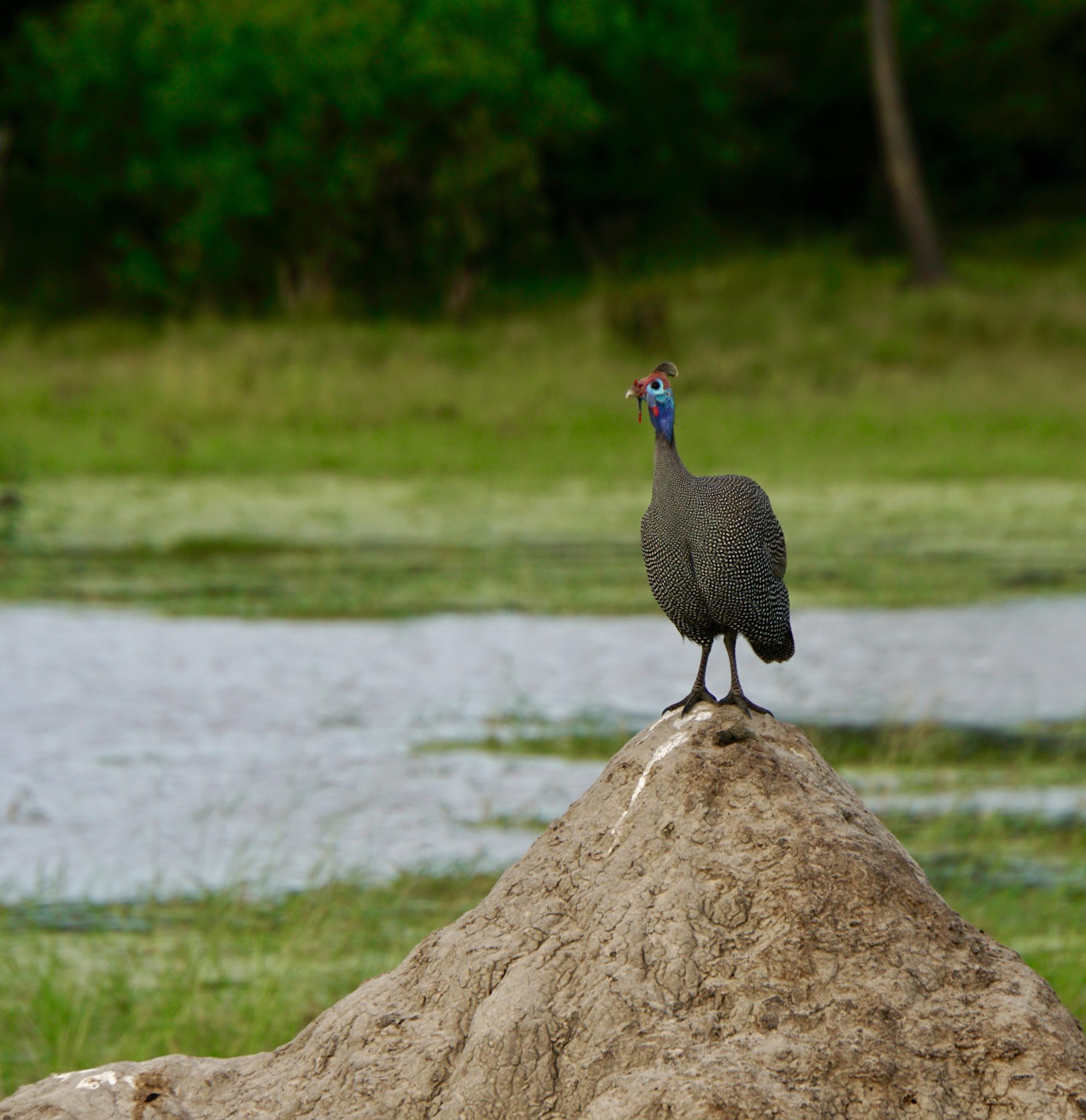 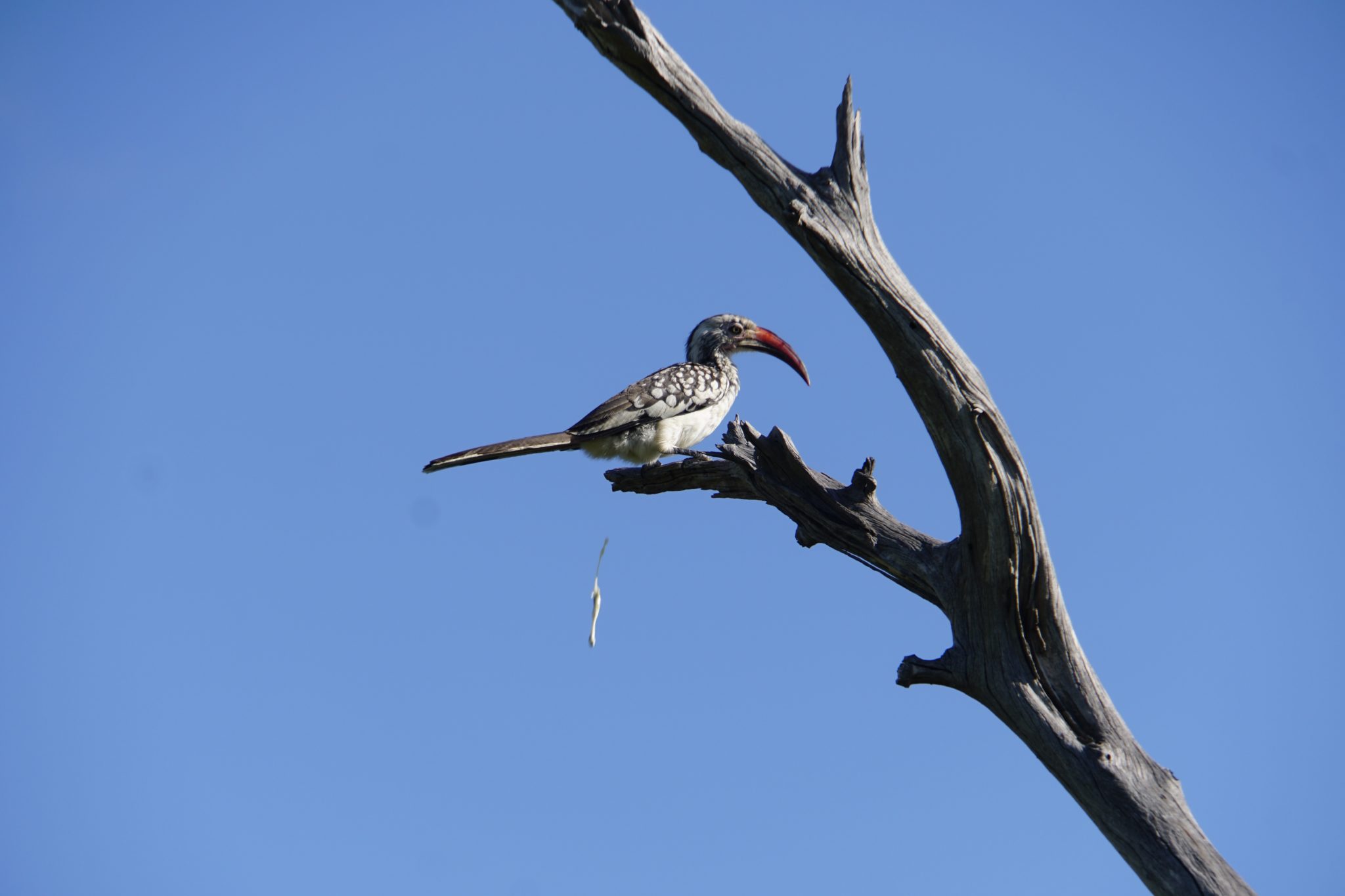 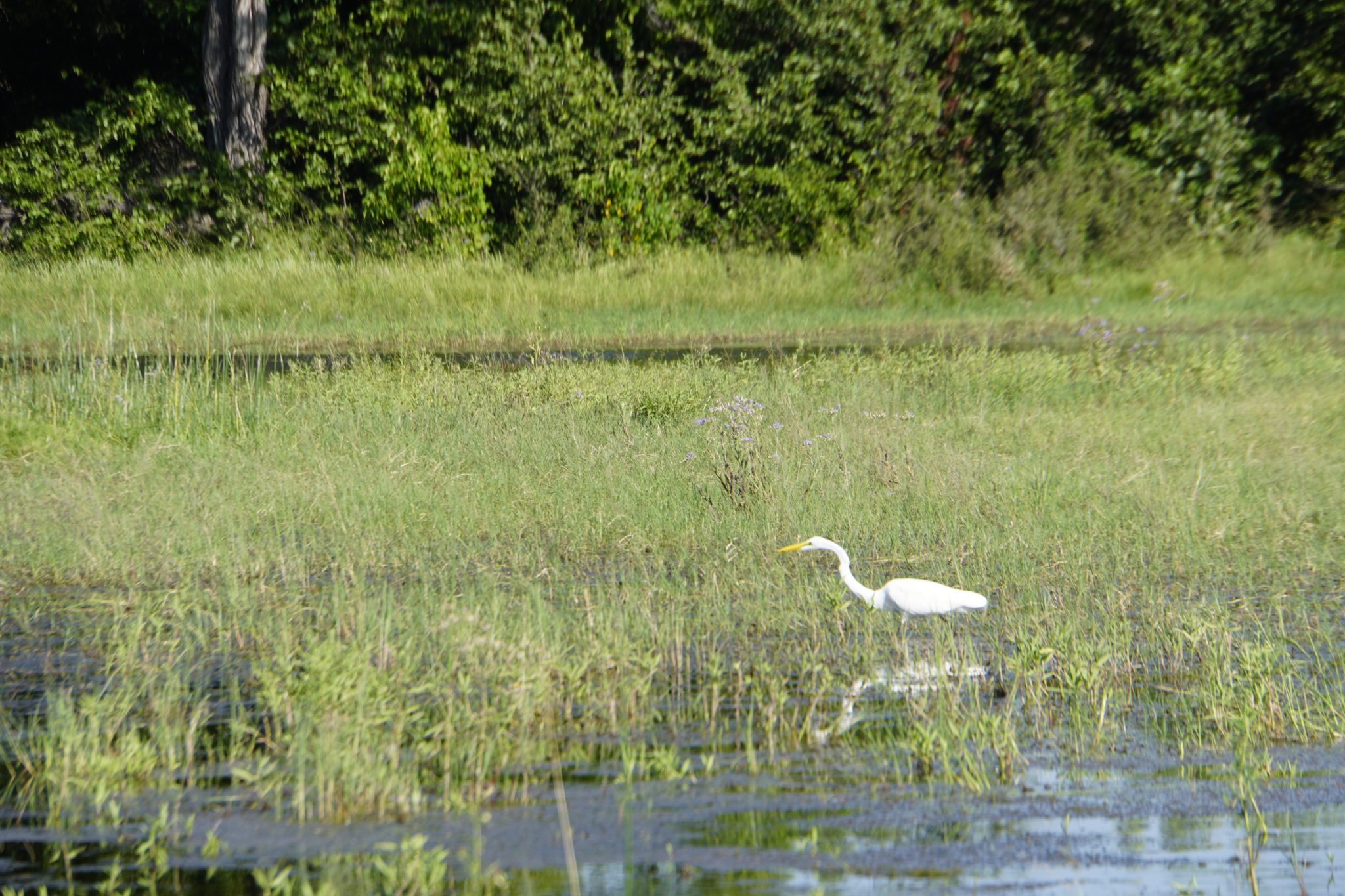 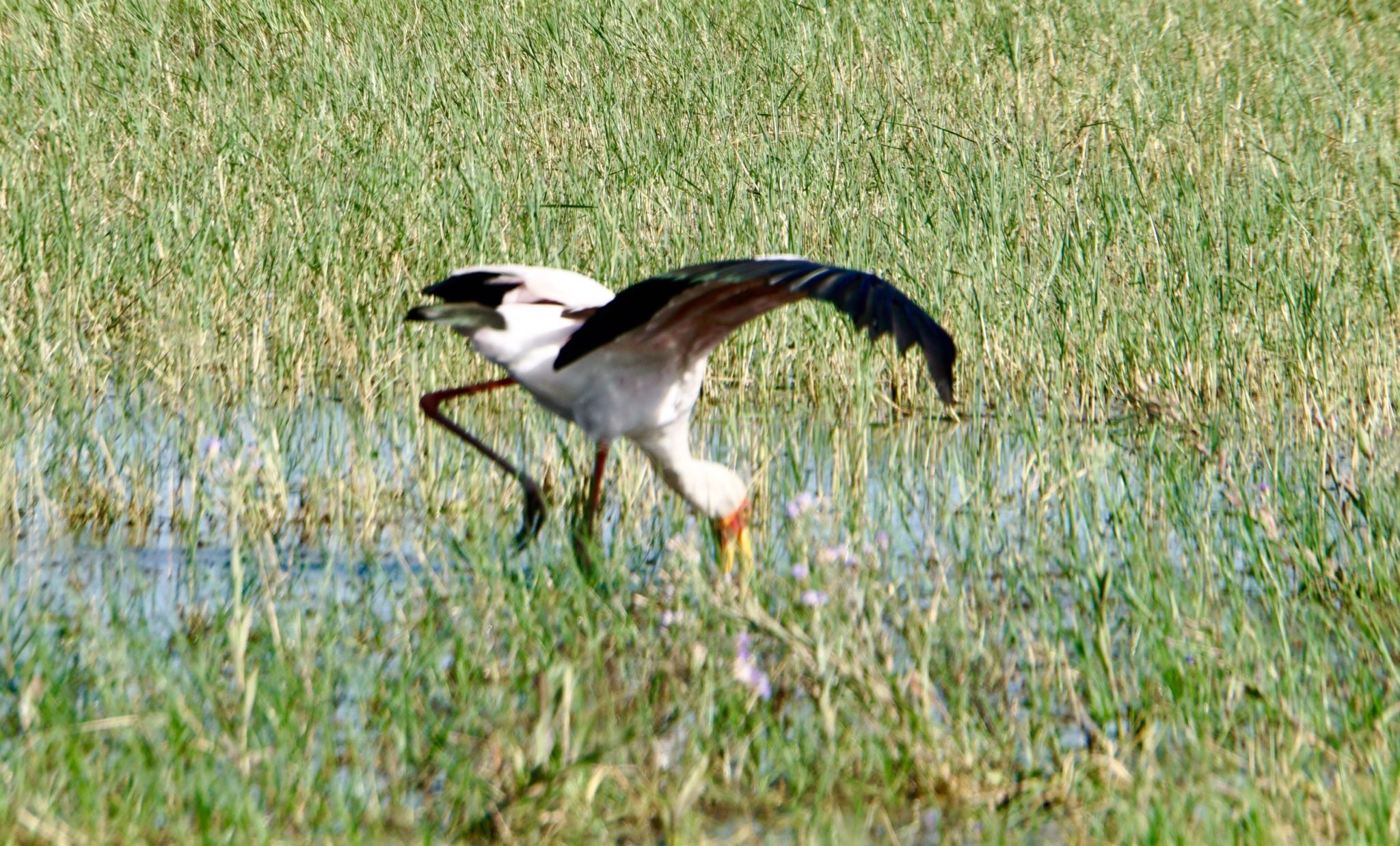 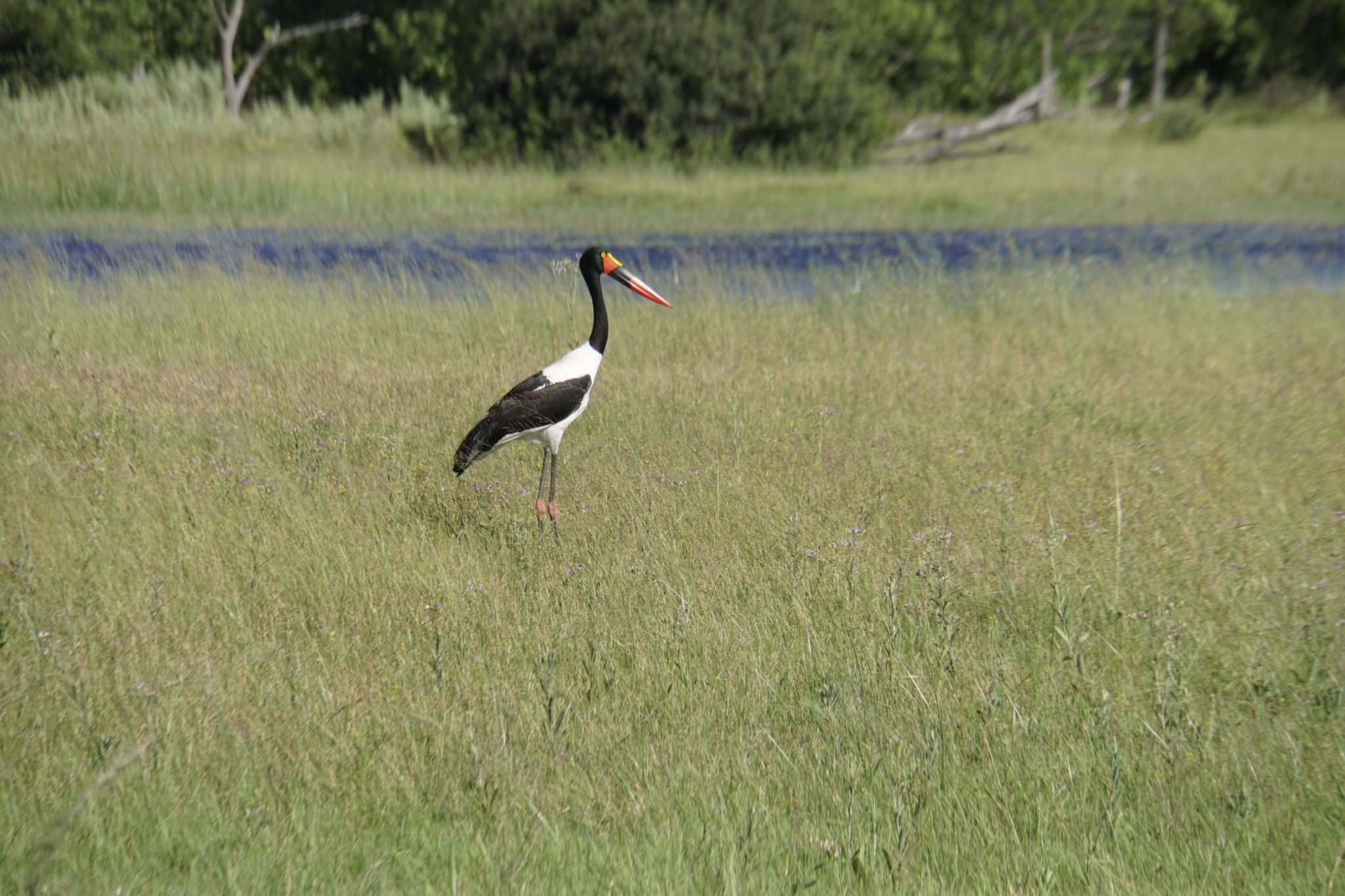 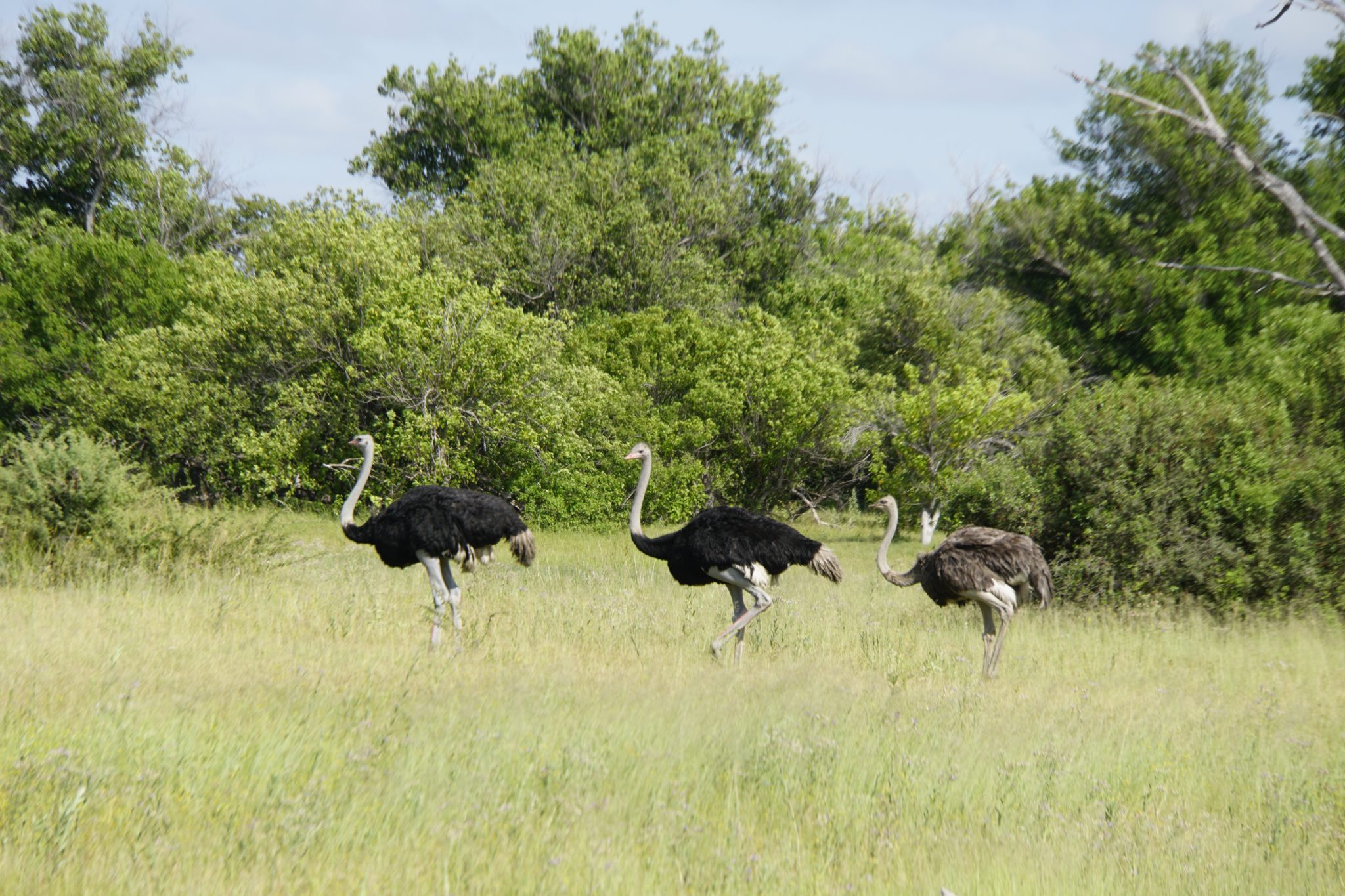 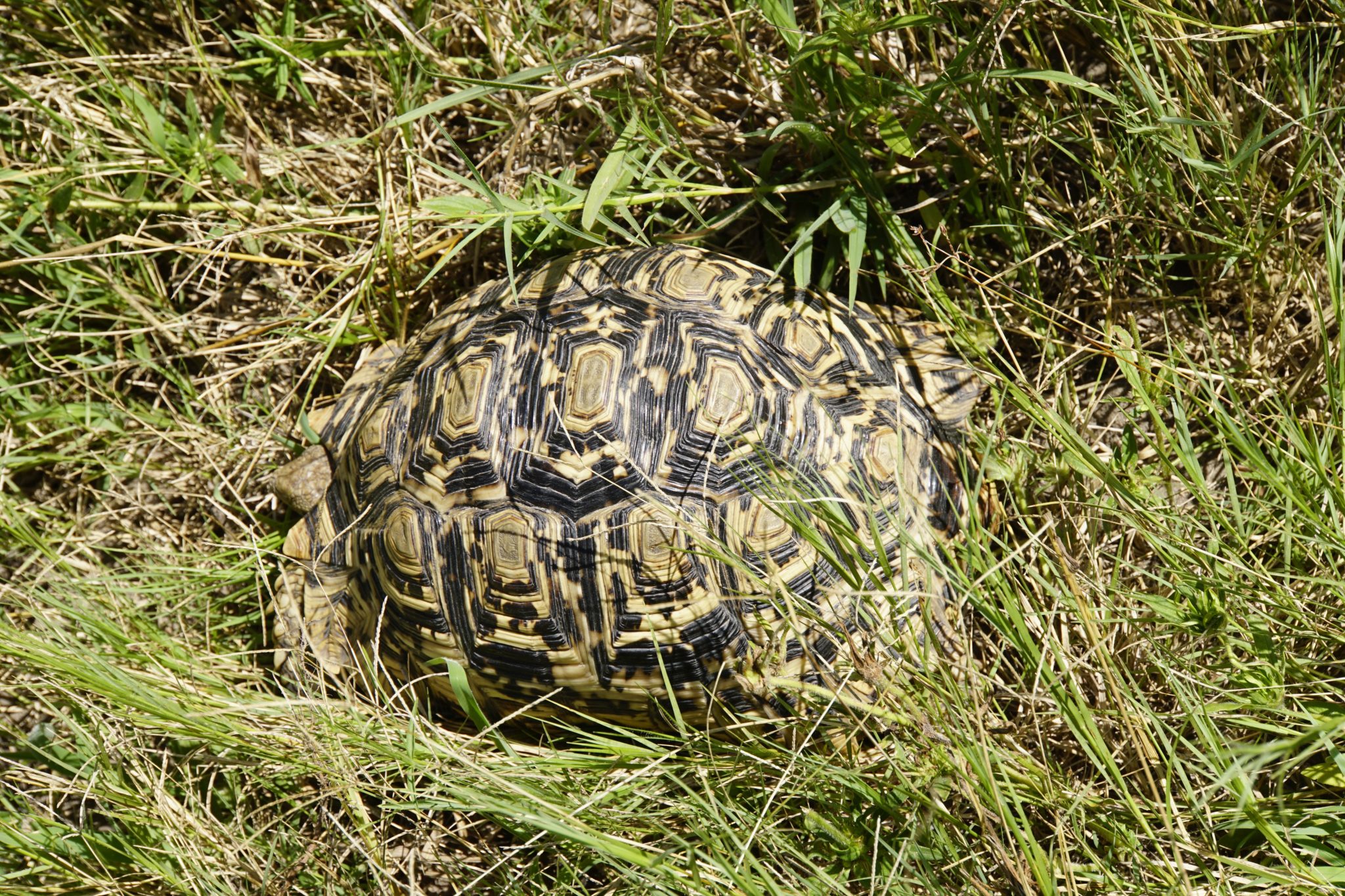 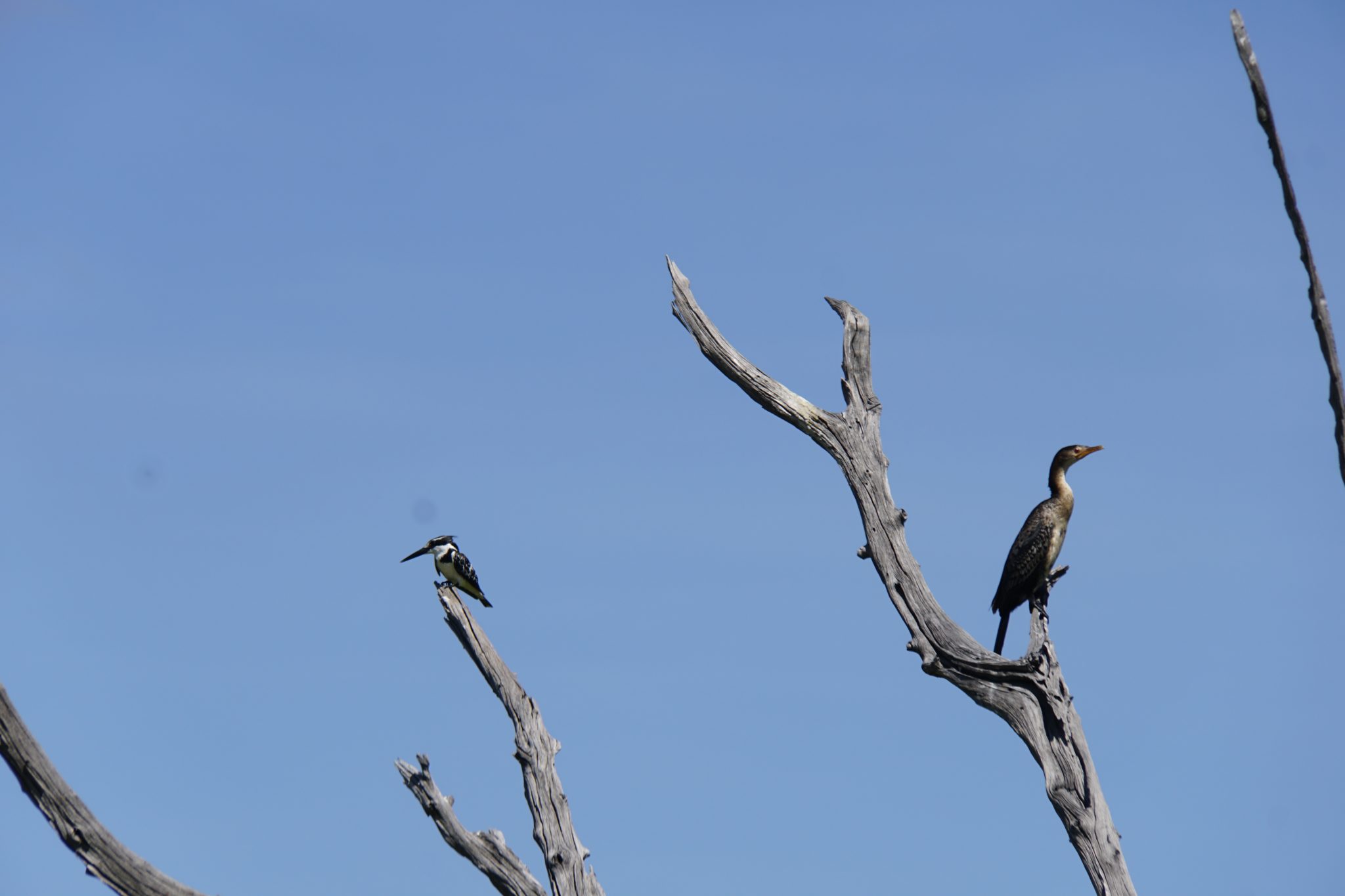 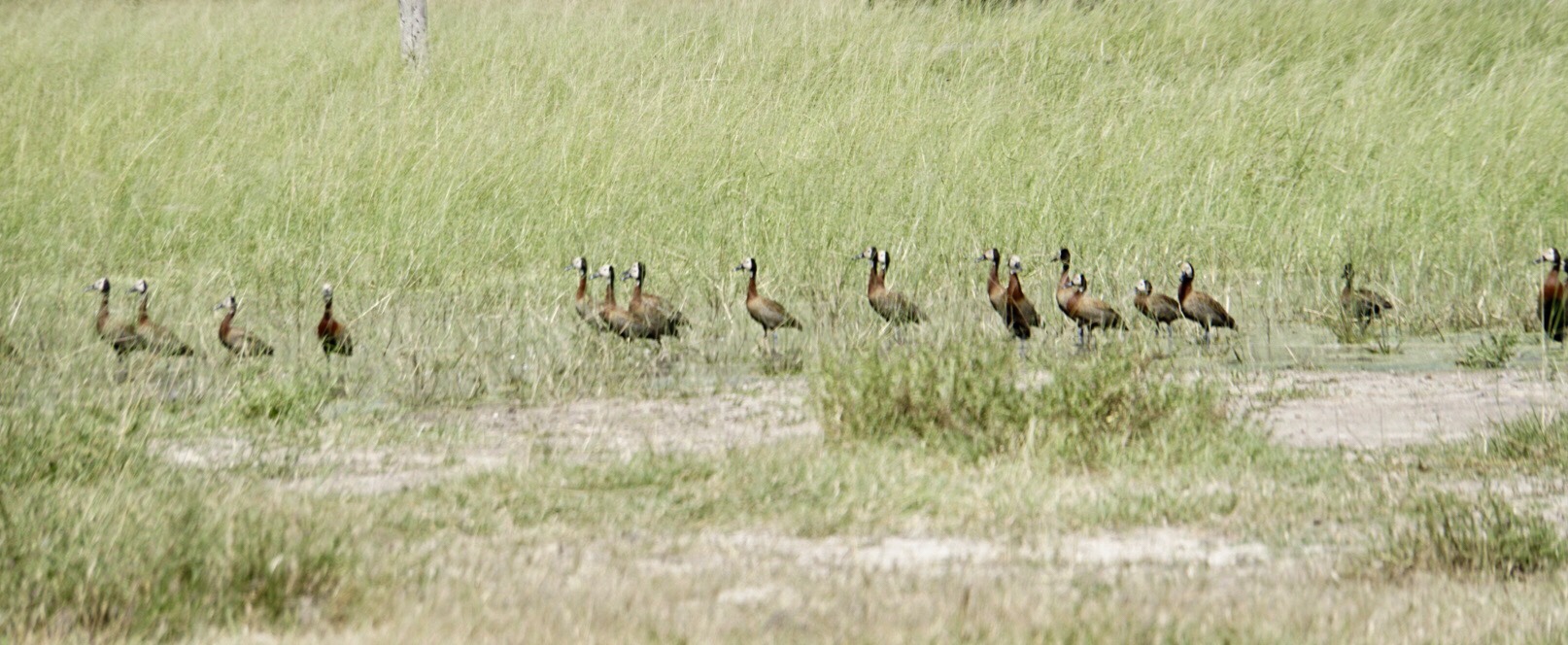 We rolled back into camp at a bit after noon (five hours after leaving) and had an excellent cooked lunch . We have several hours to relax, blog, read, shower and nap before we set out once more at four this afternoon. We rolled back into camp at a bit after noon (five hours after leaving) and had an excellent cooked lunch . We have several hours to relax, blog, read, shower and nap before we set out once more at four this afternoon.
The clear highlight of the afternoon was running into a pack of twenty-two wild dogs who were on a hunt. Seeing any wild dogs is an unusual treat, but seeing so many and staying with them and watching their techniques, explained to us by Roger, for at least an hour was incredible. They were hunting impala and were not successful up to the point at which we could no longer follow them. Chances are, though, they eventually succeeded, because Roger said they were the best of all hunters, succeeding in over 90% of their hunts. To give you an idea of how unusual the experience is, Roger said that there are an estimated 2000 wild dogs in the world; so we saw more than one percent of them.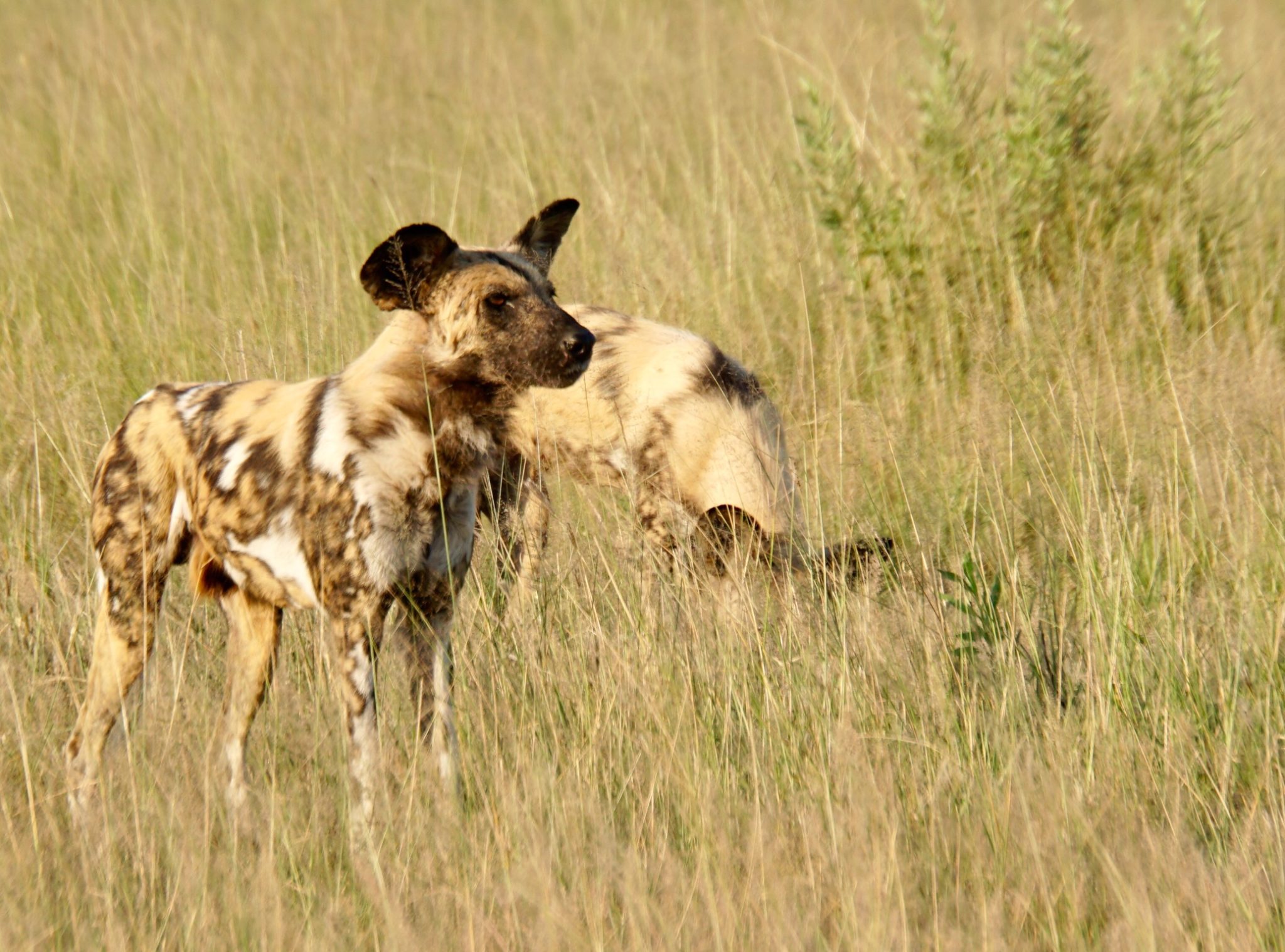 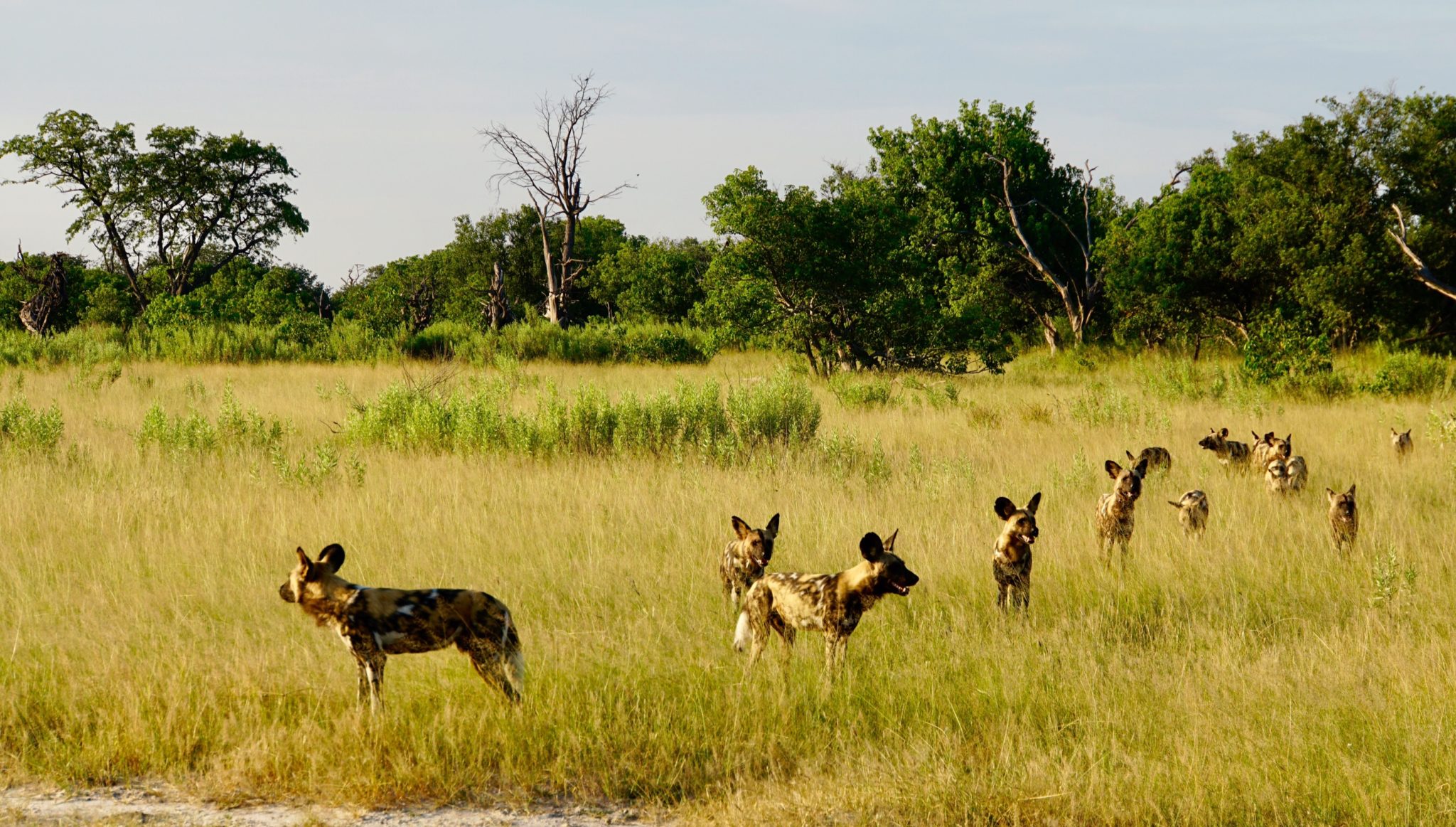 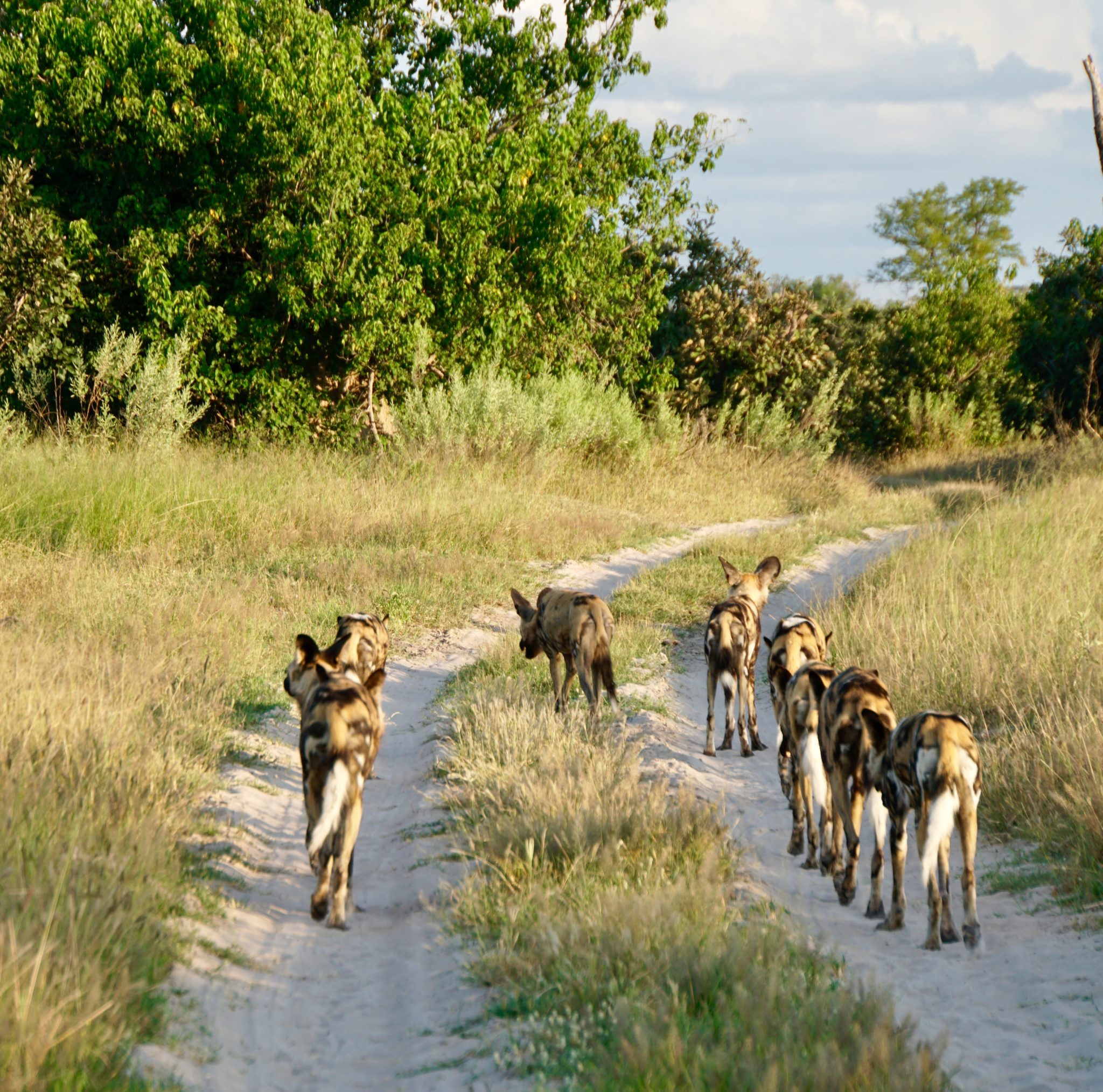
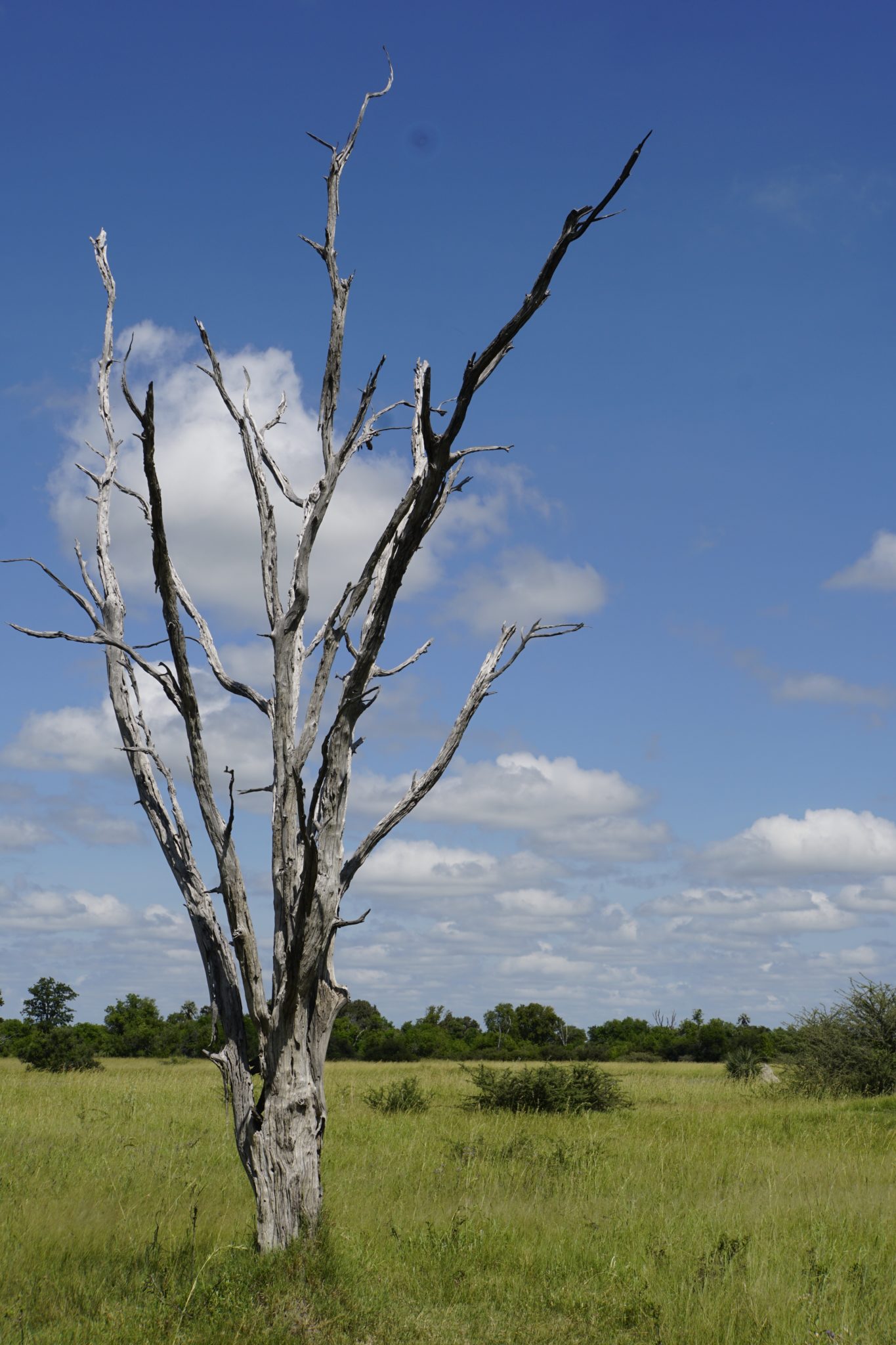 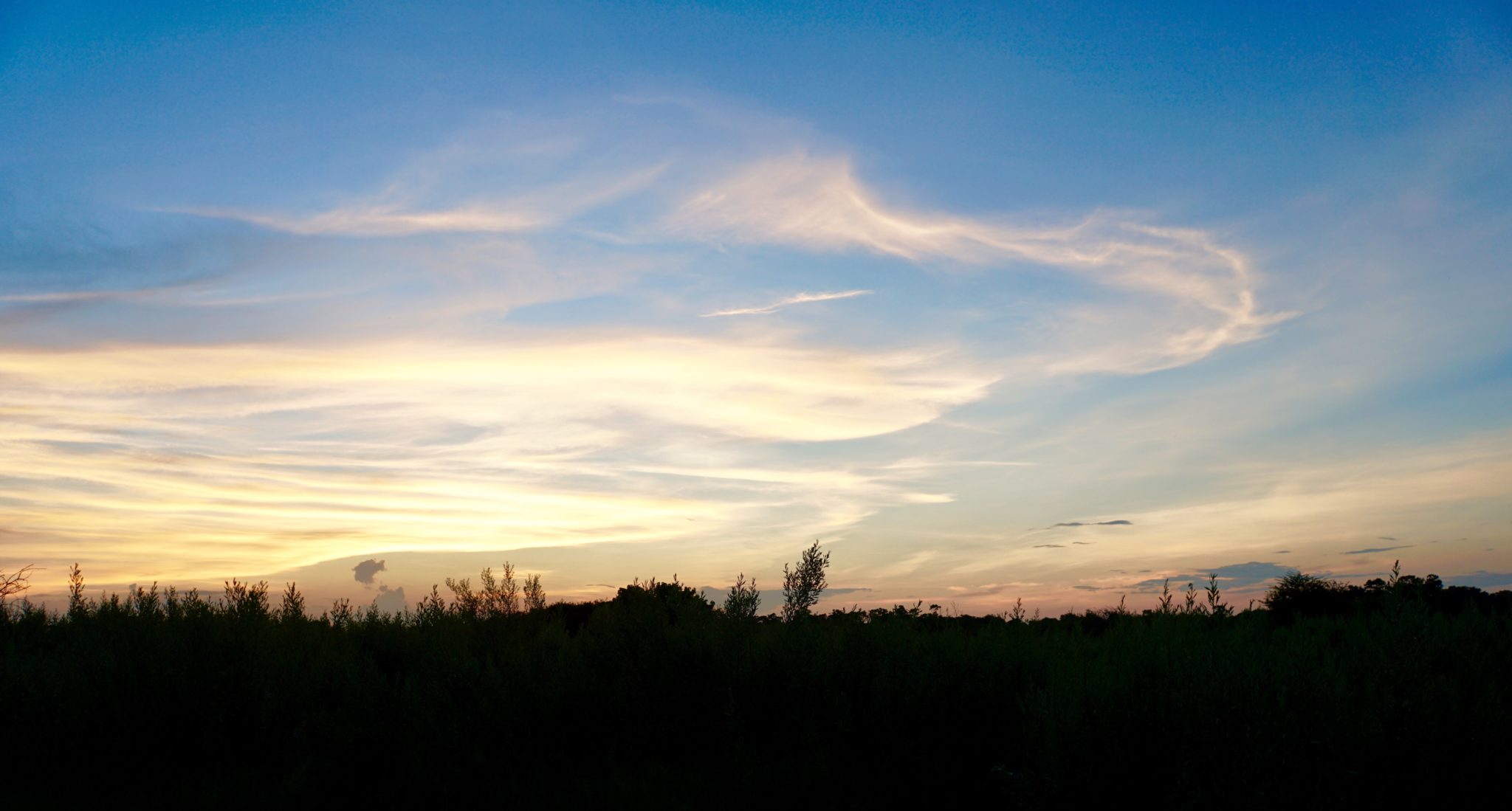 We returned to camp, where I took a hot bucket shower before another excellent dinner, then retired. The soups at dinner are terrific, but they’re put completely over the top by pouring into them a bit of sherry with chilis in it. (This becomes a nightly treat.) We returned to camp, where I took a hot bucket shower before another excellent dinner, then retired. The soups at dinner are terrific, but they’re put completely over the top by pouring into them a bit of sherry with chilis in it. (This becomes a nightly treat.)
|
|









 A saddle-billed stork also gets into the picture.
A saddle-billed stork also gets into the picture.



 Back at the camp, Carol and I enjoy drinks by the fire under an incredible, starry sky, chatting with Laura and Antoine, We move to a delicious buffet dinner, talking with Bonnie and Ginny again, as well as their guide, Lettie. Phoebz learns how to make bracelets, which she makes for Maxi and friends.
Back at the camp, Carol and I enjoy drinks by the fire under an incredible, starry sky, chatting with Laura and Antoine, We move to a delicious buffet dinner, talking with Bonnie and Ginny again, as well as their guide, Lettie. Phoebz learns how to make bracelets, which she makes for Maxi and friends.

 We ride about half an hour from the airport with G, who will be our guide, then have to take a short motor boat ride to reach the camp, which is located on an island.
We ride about half an hour from the airport with G, who will be our guide, then have to take a short motor boat ride to reach the camp, which is located on an island.




 G does not rush us back, but borrows a night search light and drives us around. We spot another giant eagle owl, elephants, a crocodile and several other birds. Eventually, we make it back through the high water on the roads and have an excellent buffet dinner, with G, on the deck of the camp. We return to our comfortable rooms to shower and blog/read before retiring. Turns out to be a fabulous first day at Little Vumbura.
G does not rush us back, but borrows a night search light and drives us around. We spot another giant eagle owl, elephants, a crocodile and several other birds. Eventually, we make it back through the high water on the roads and have an excellent buffet dinner, with G, on the deck of the camp. We return to our comfortable rooms to shower and blog/read before retiring. Turns out to be a fabulous first day at Little Vumbura.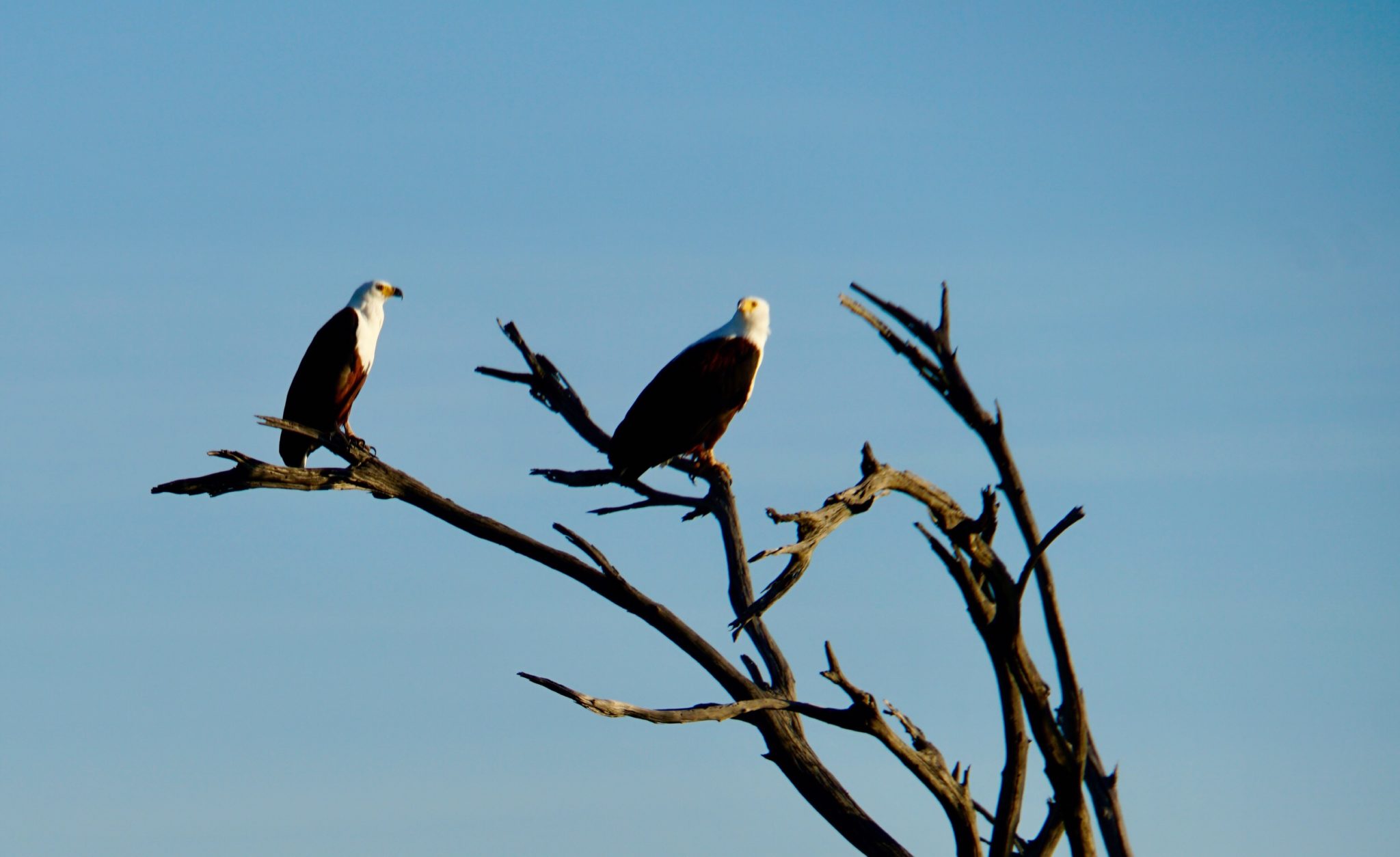
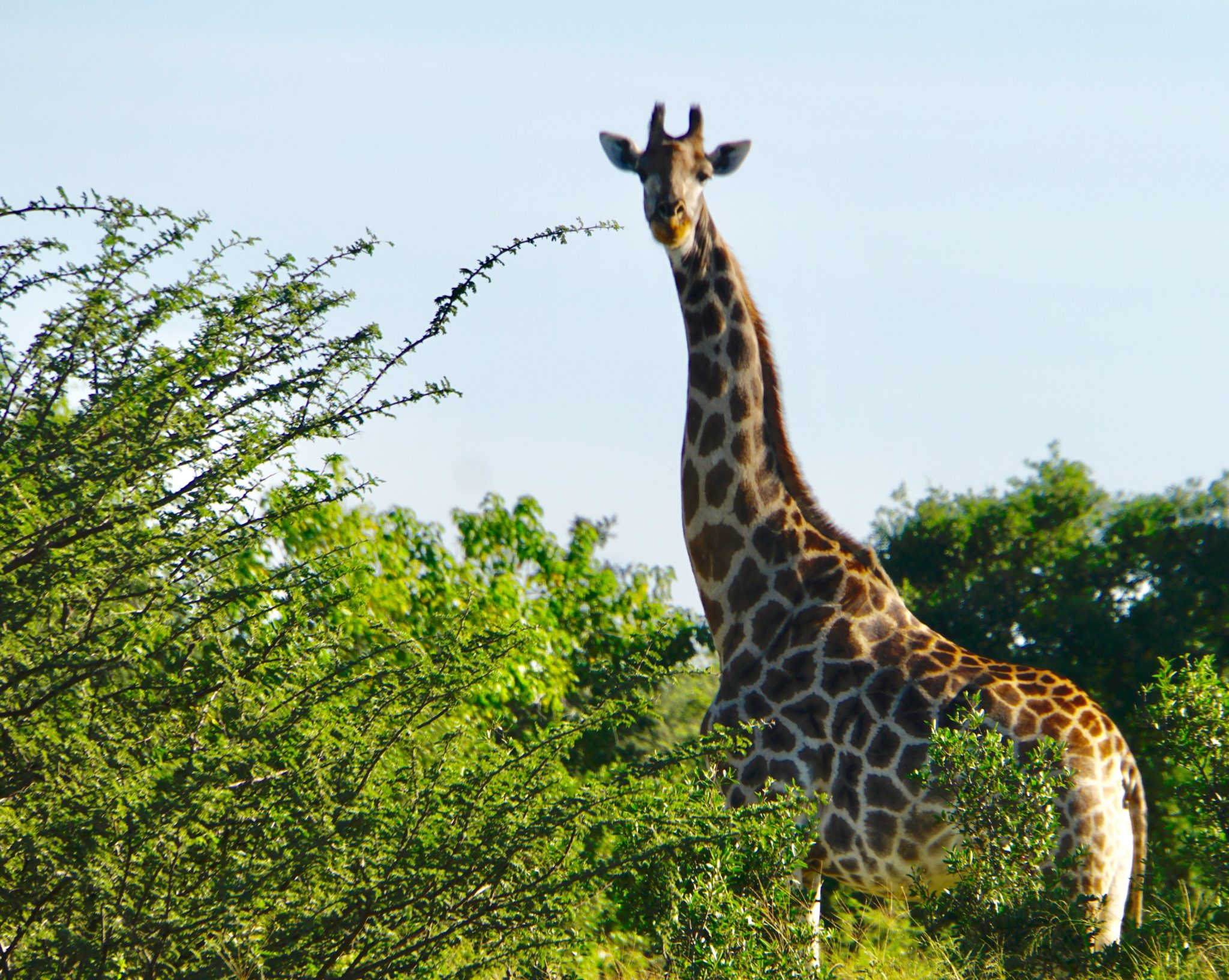
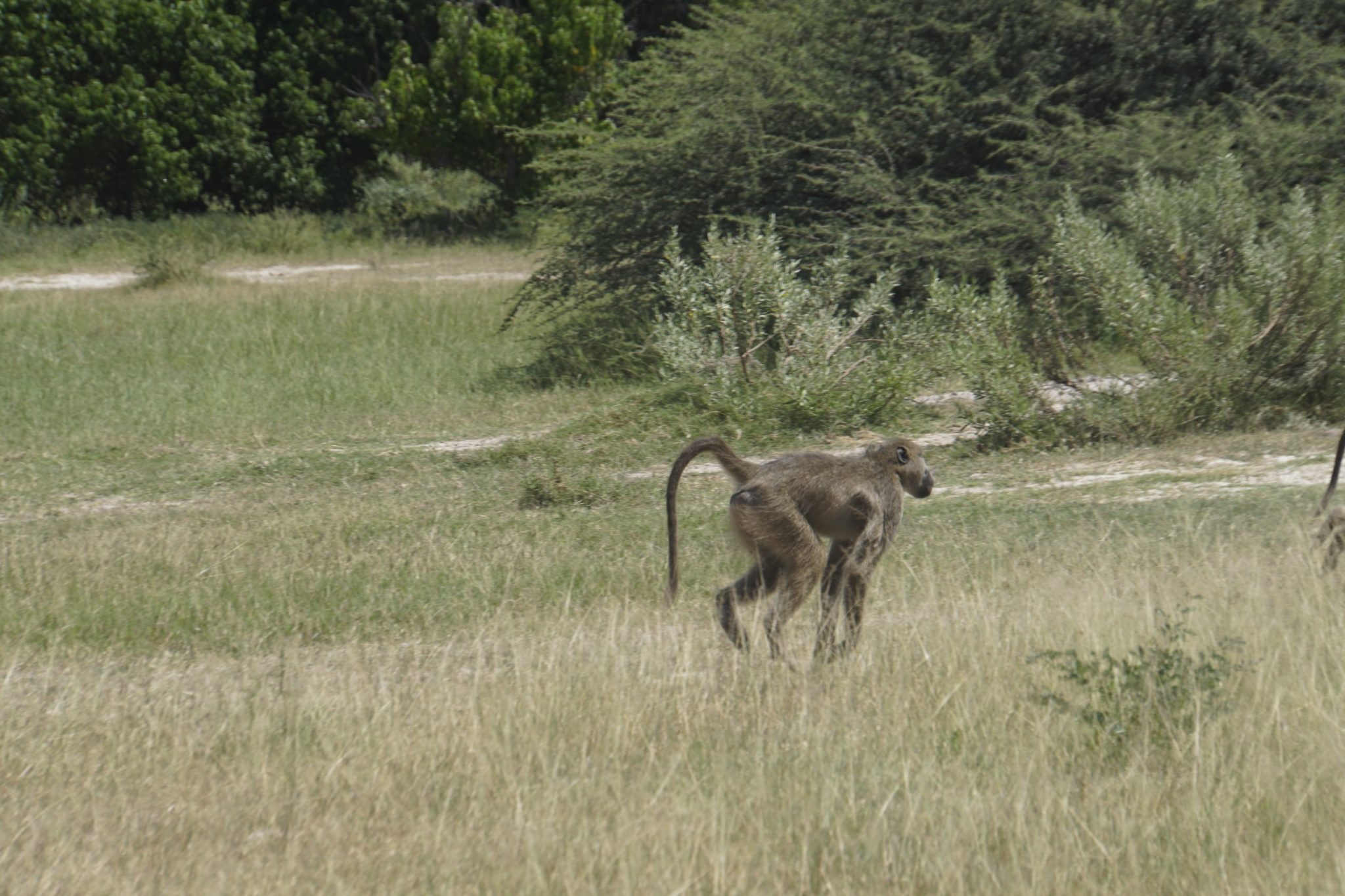
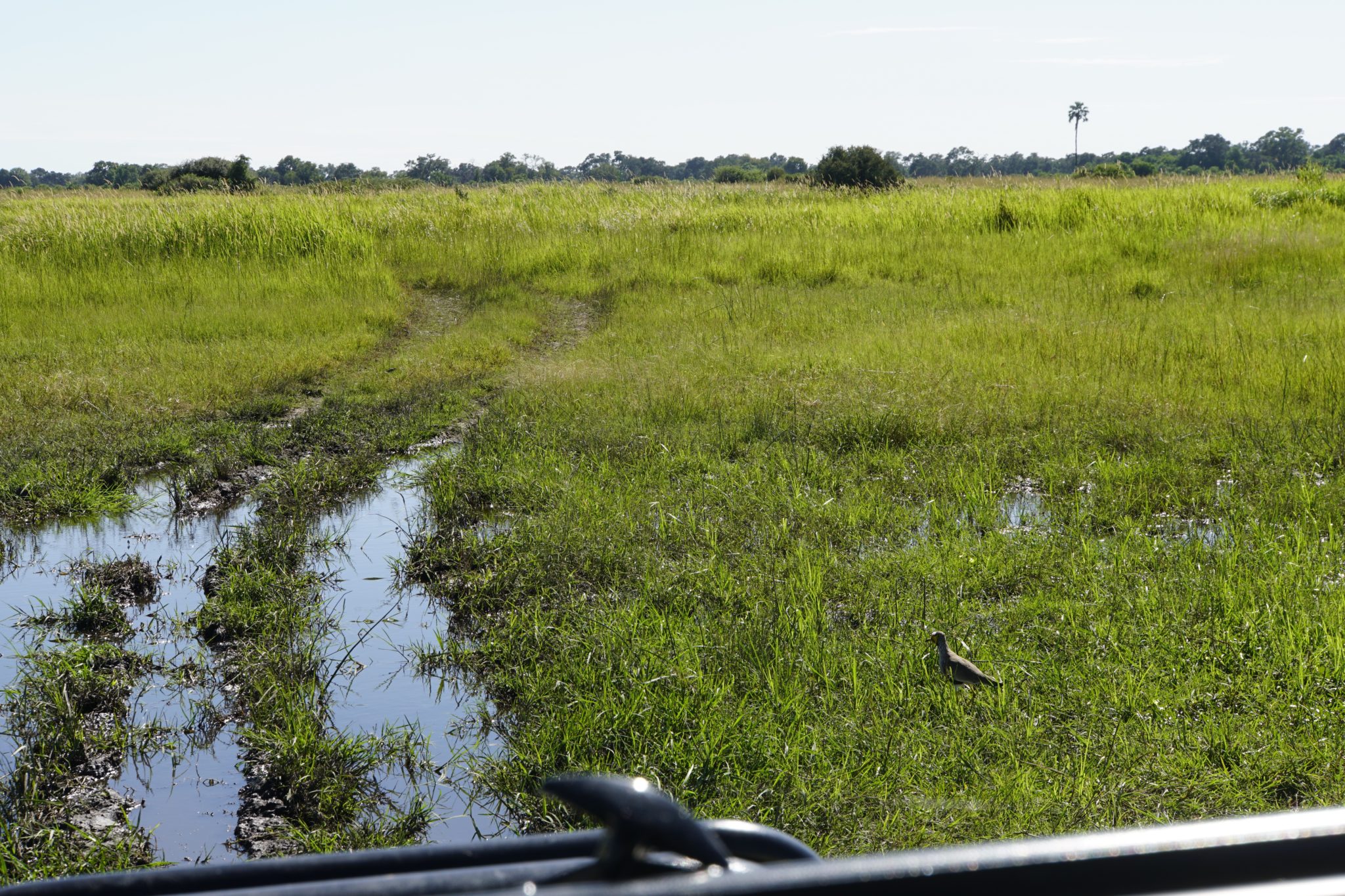
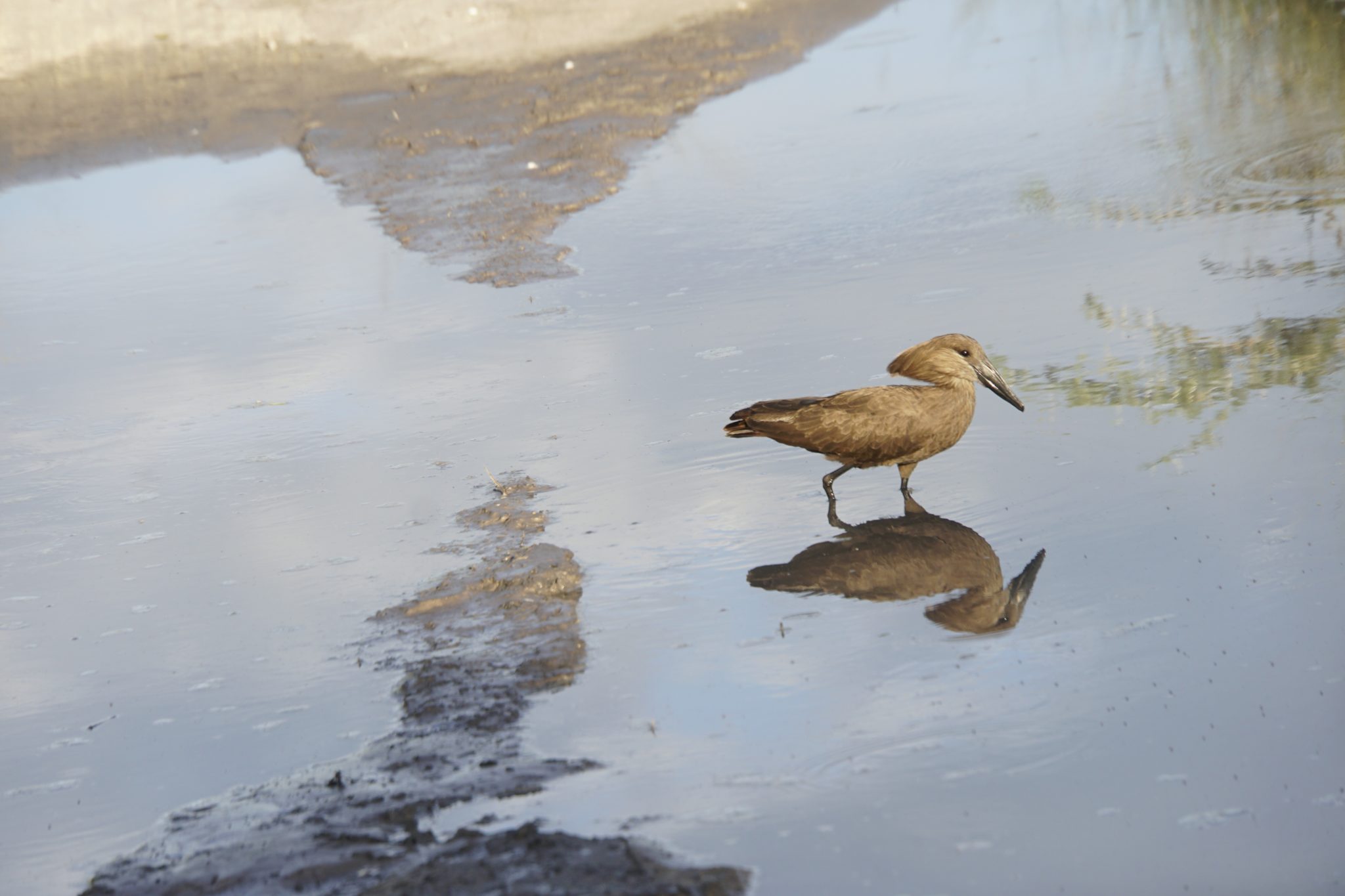
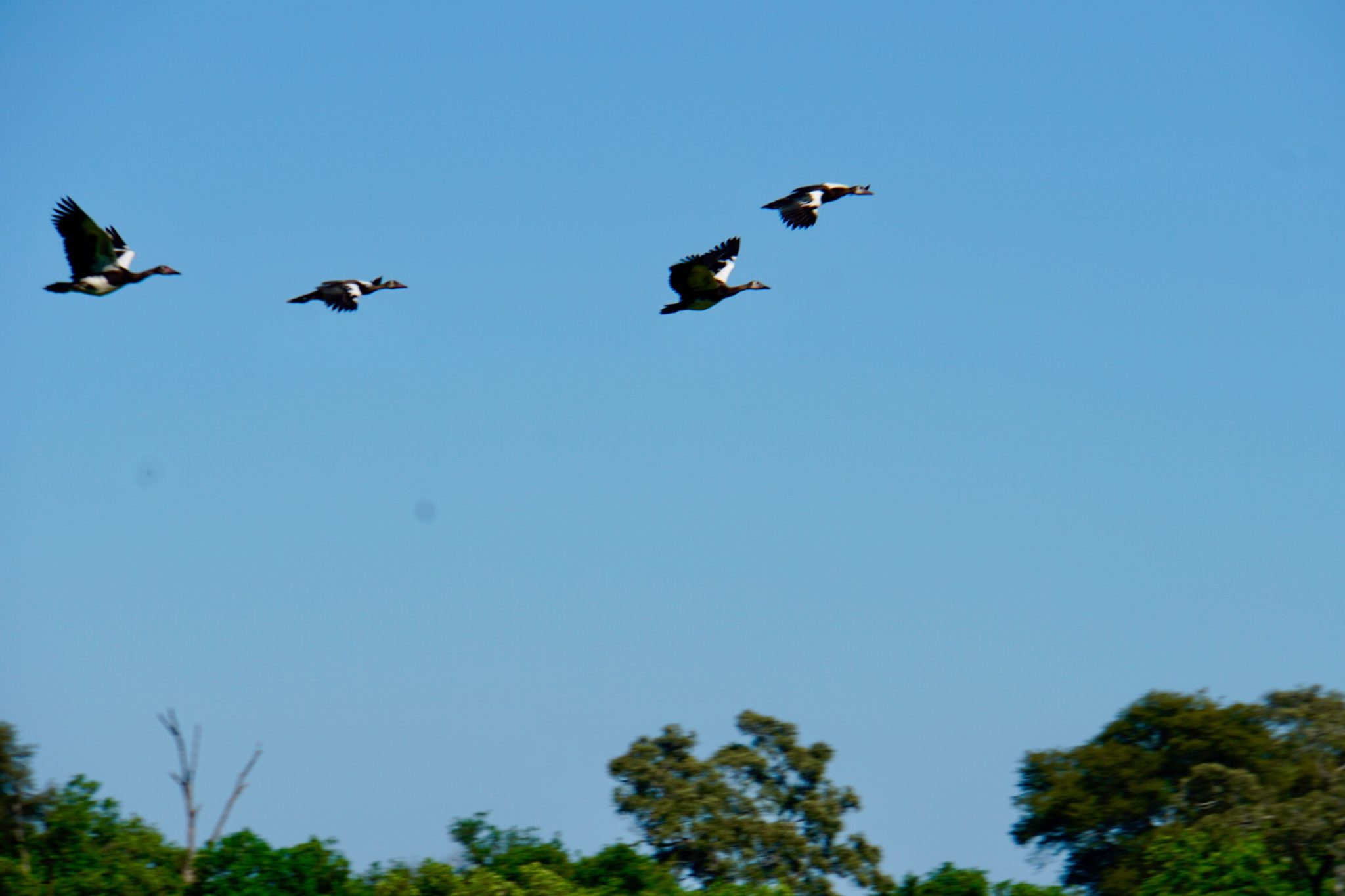
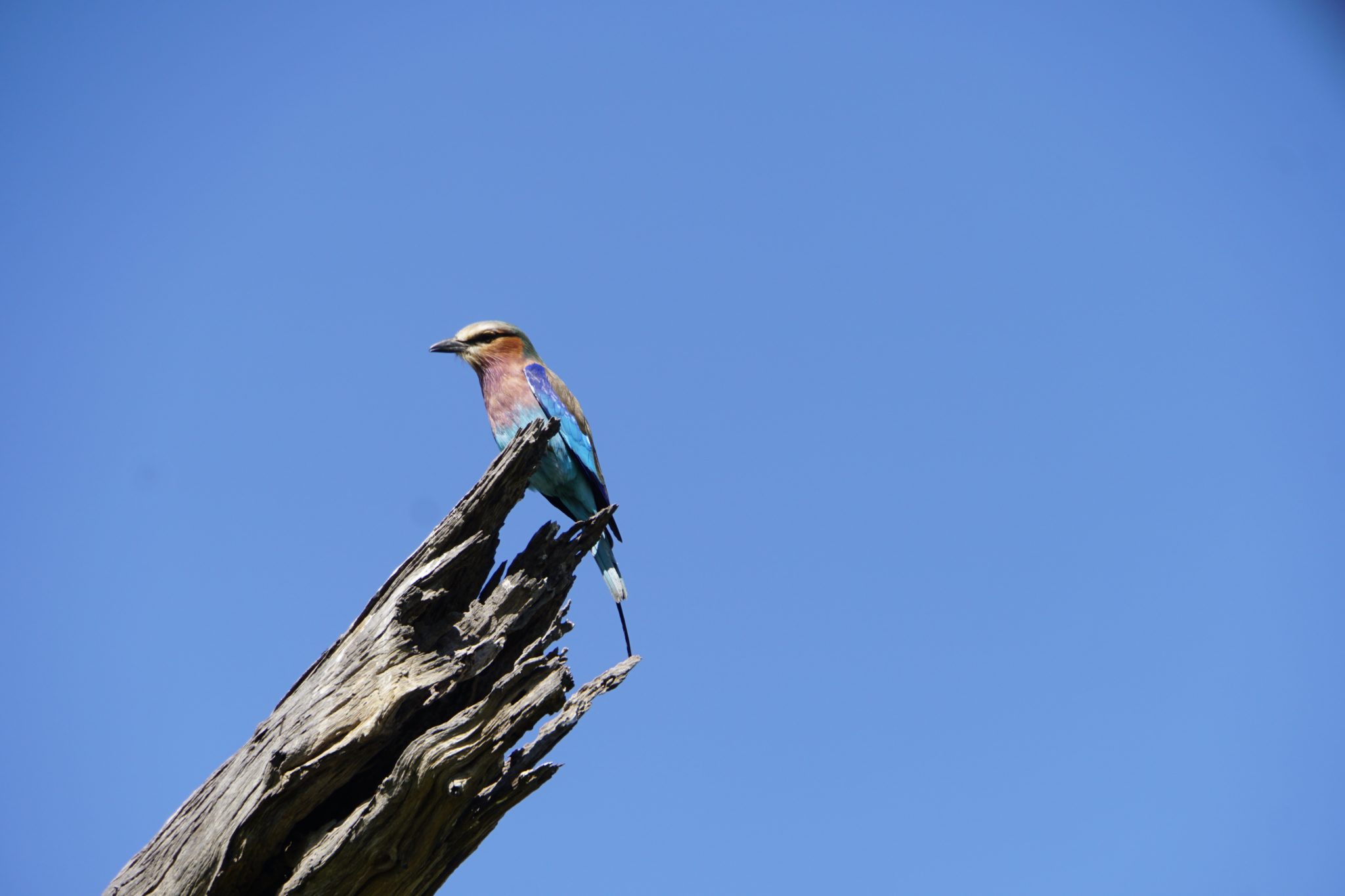

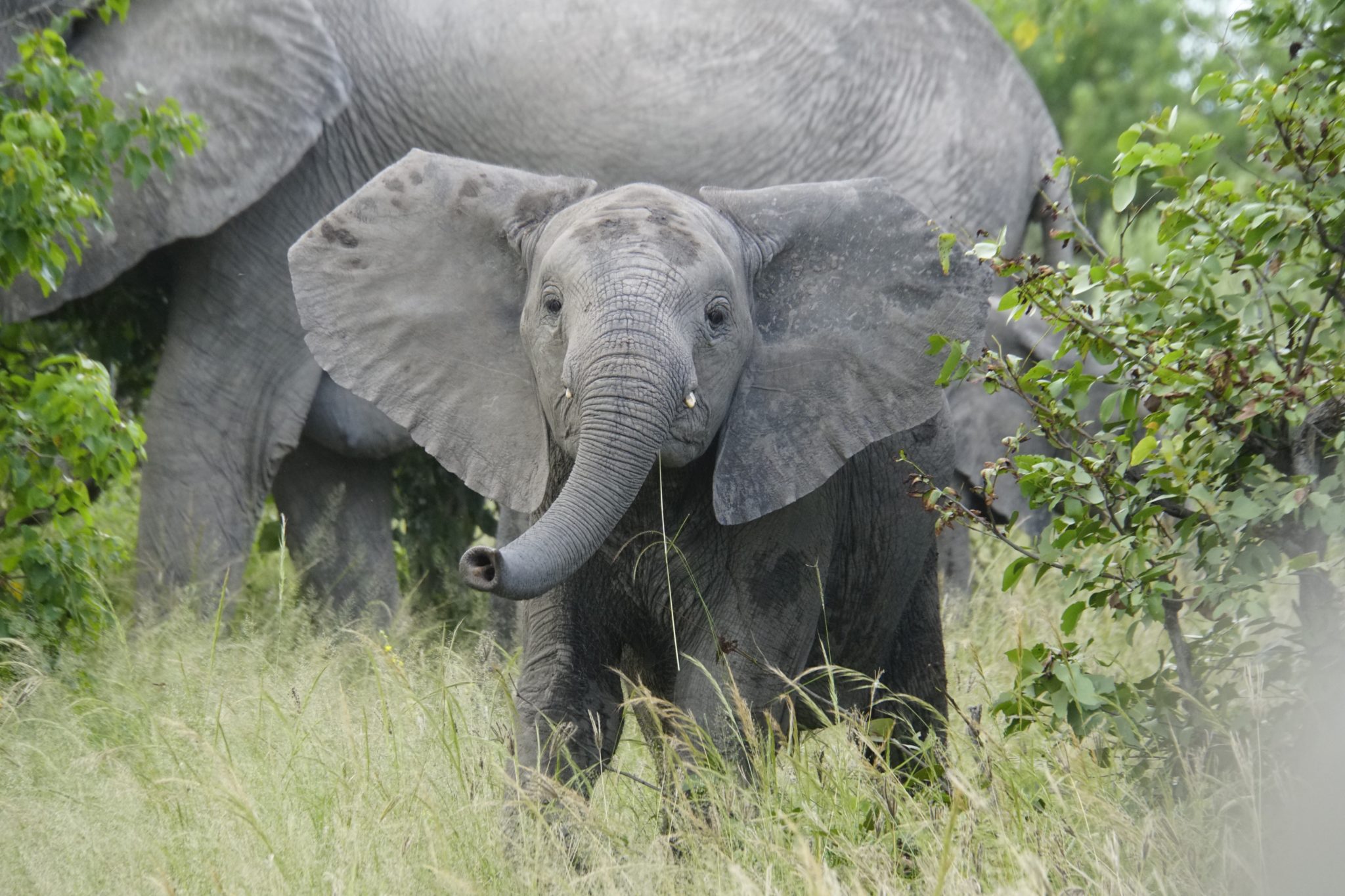
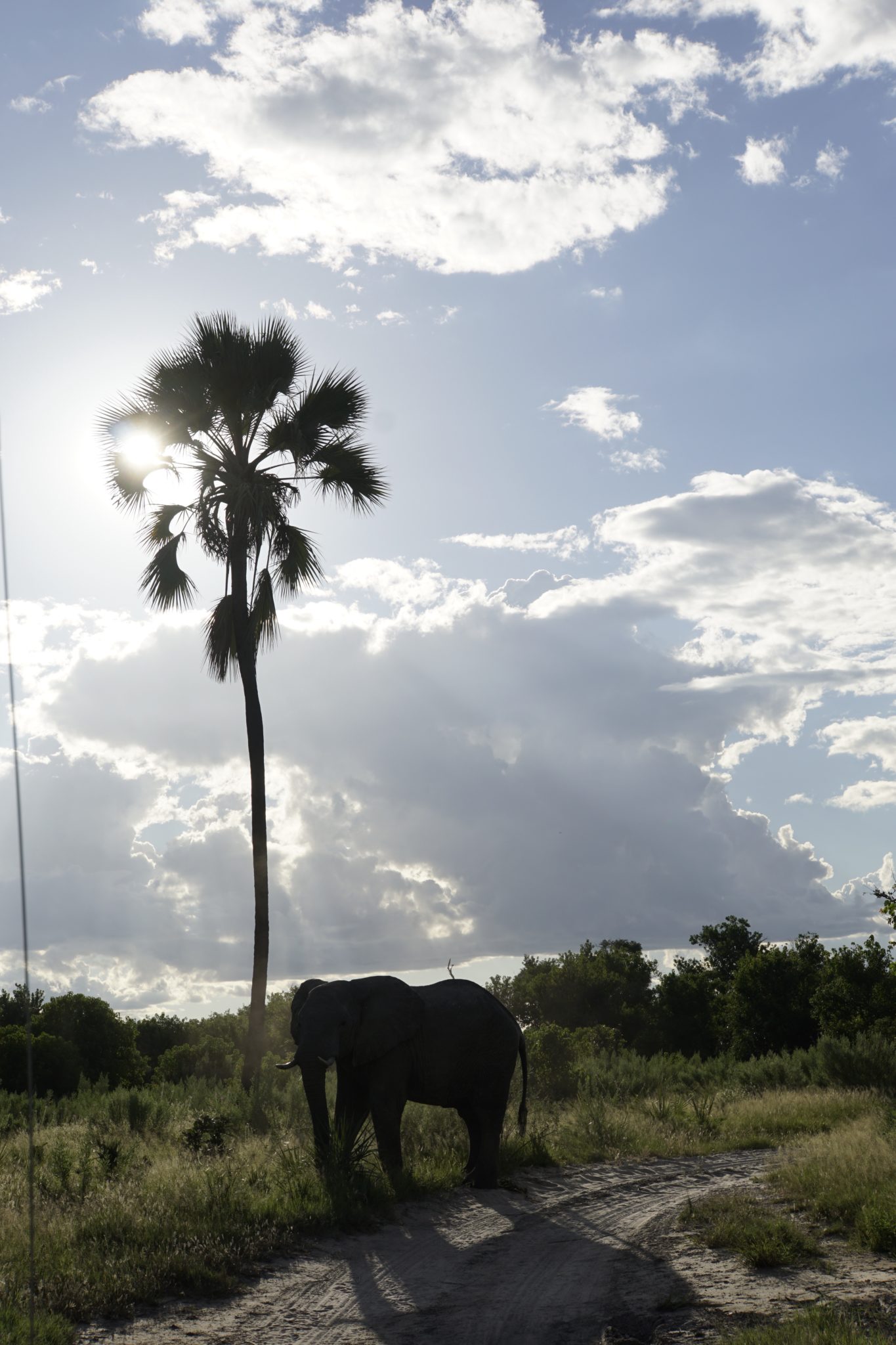
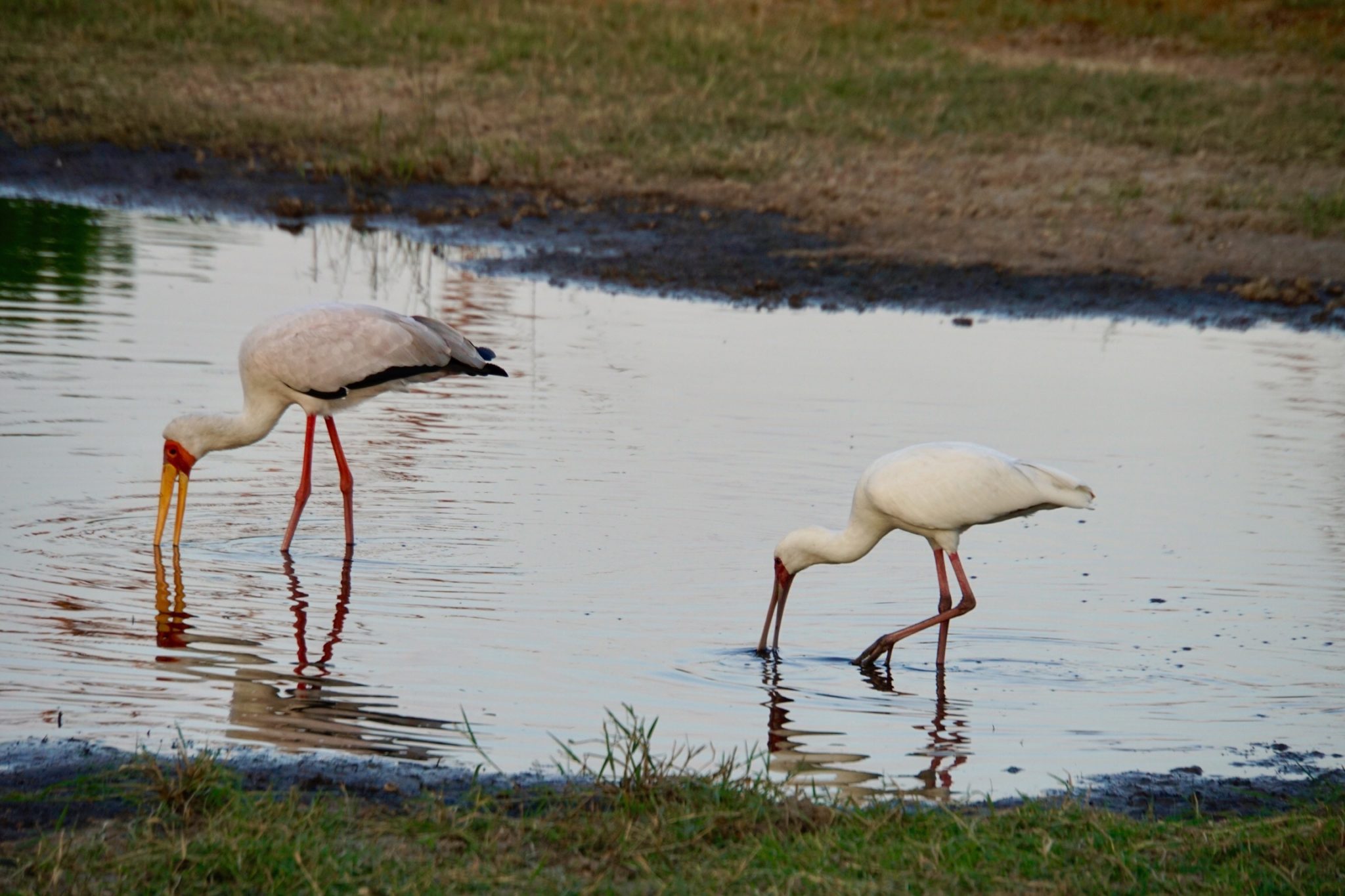
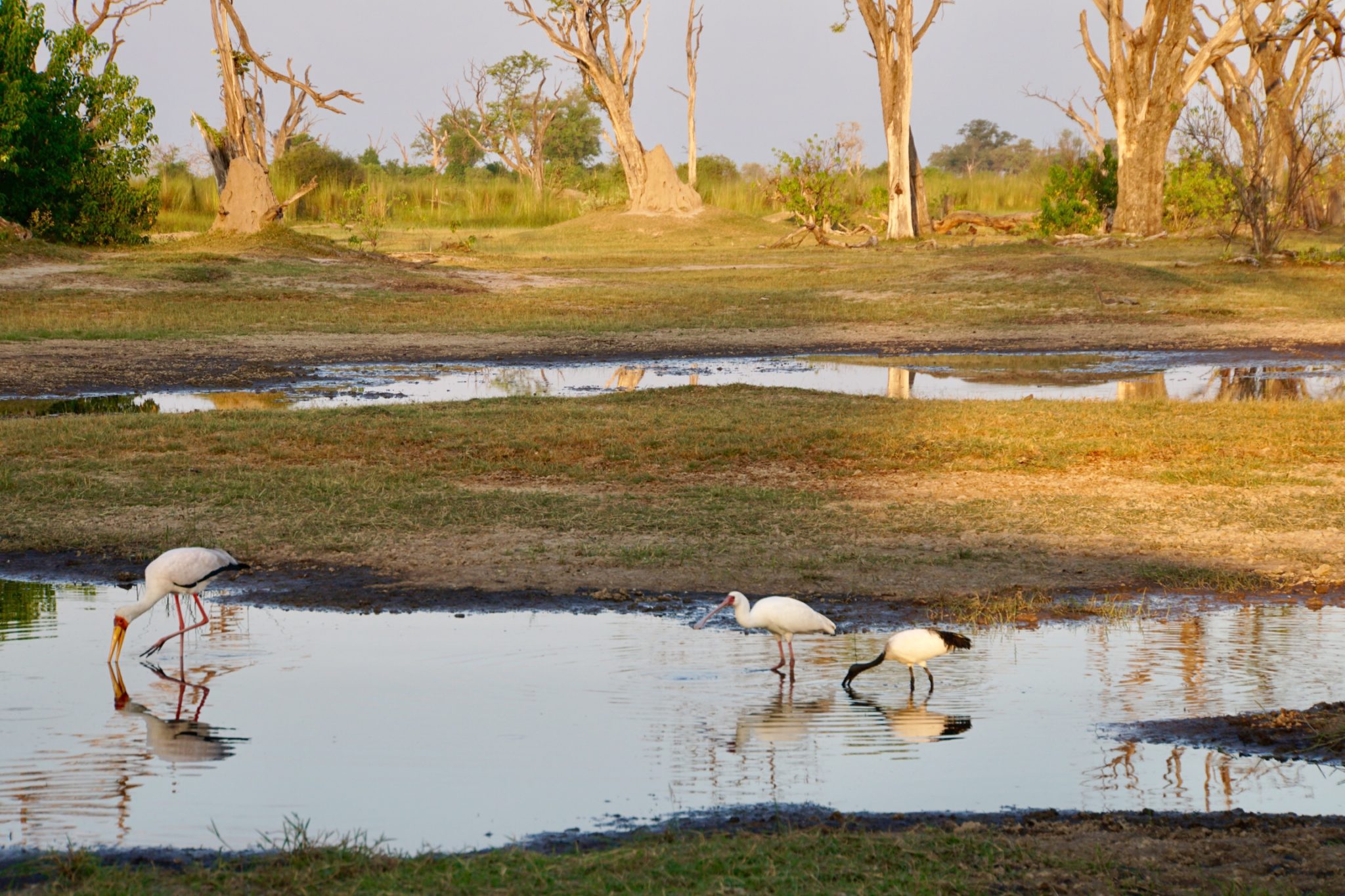
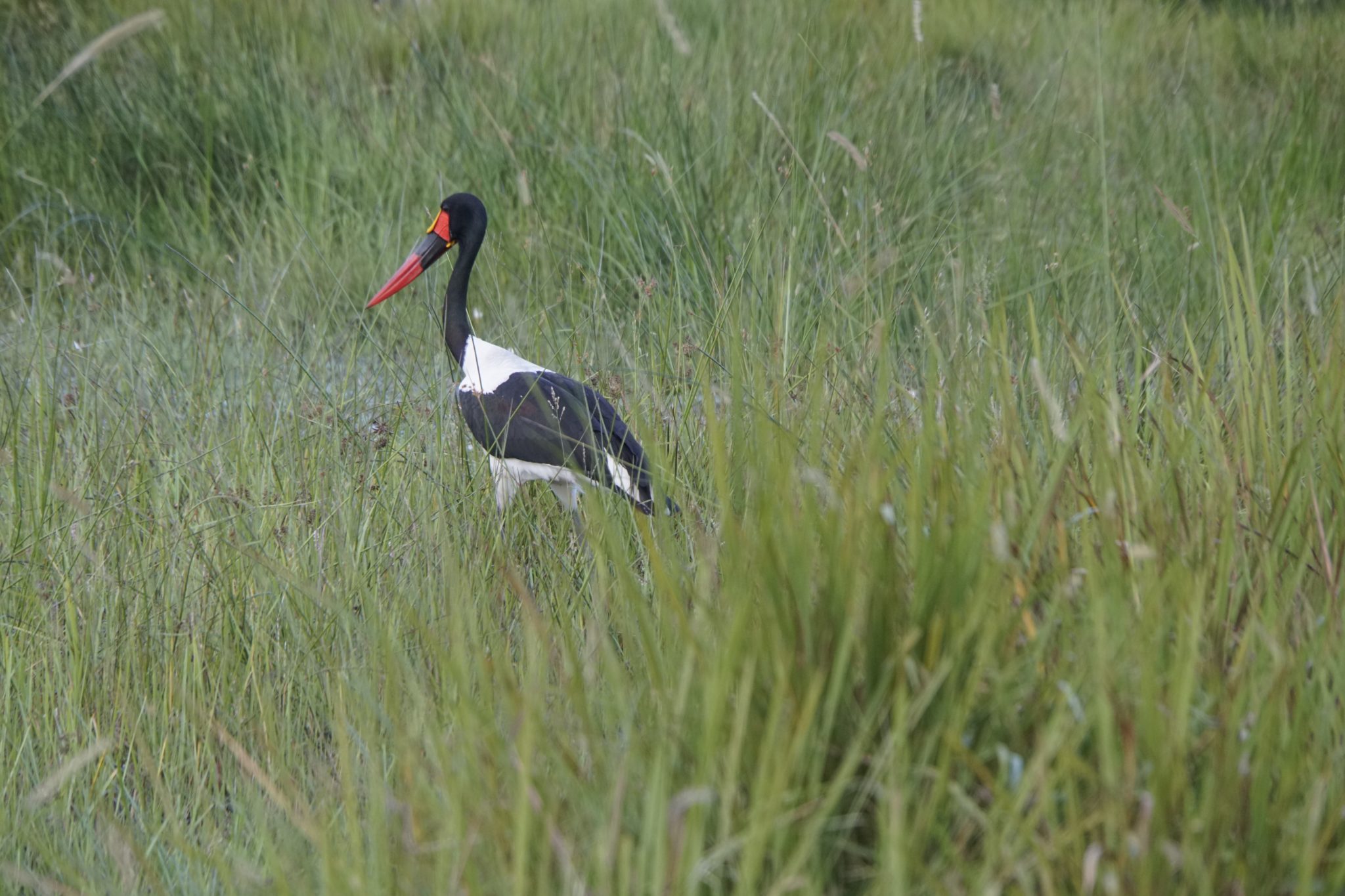
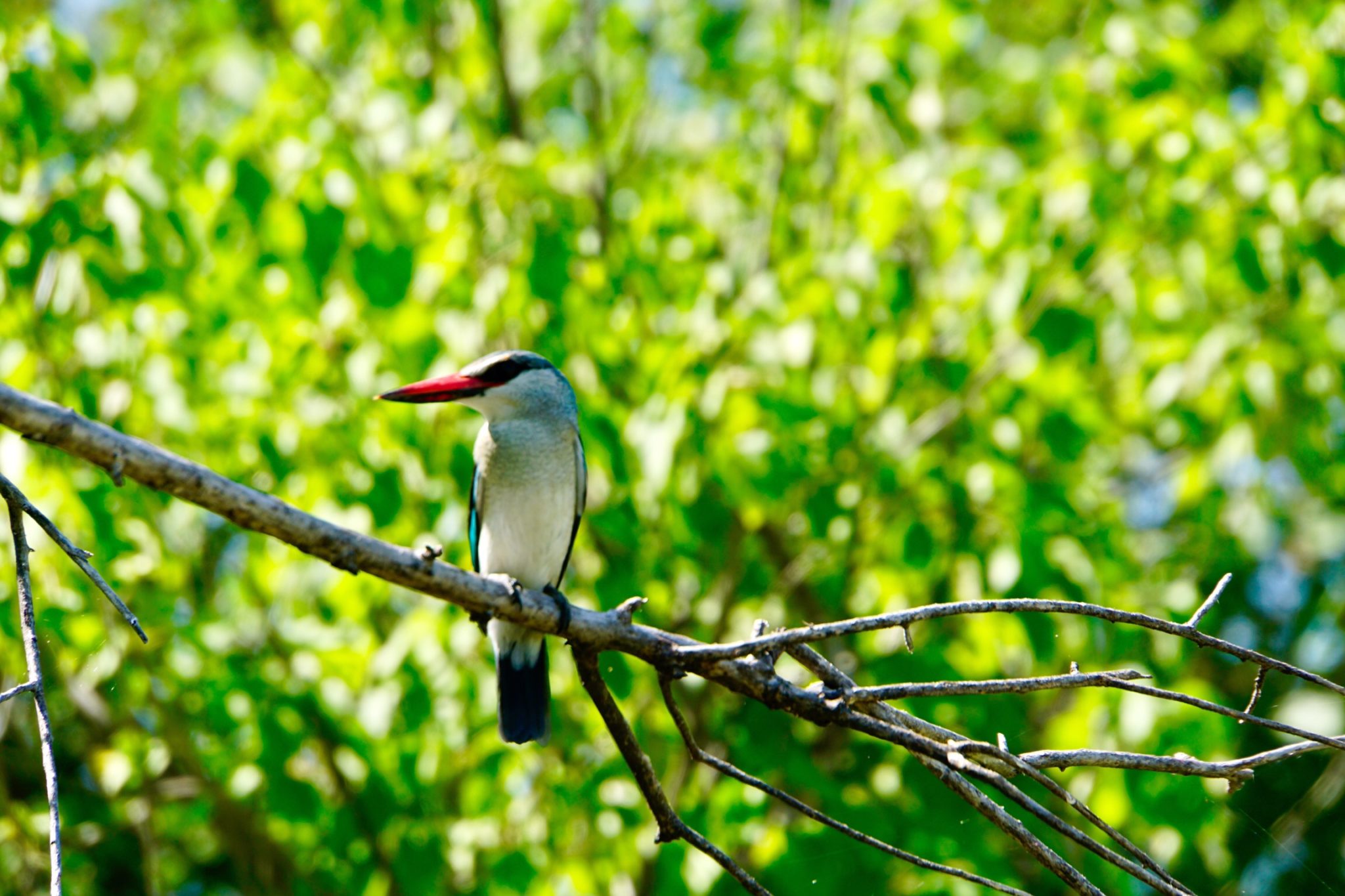
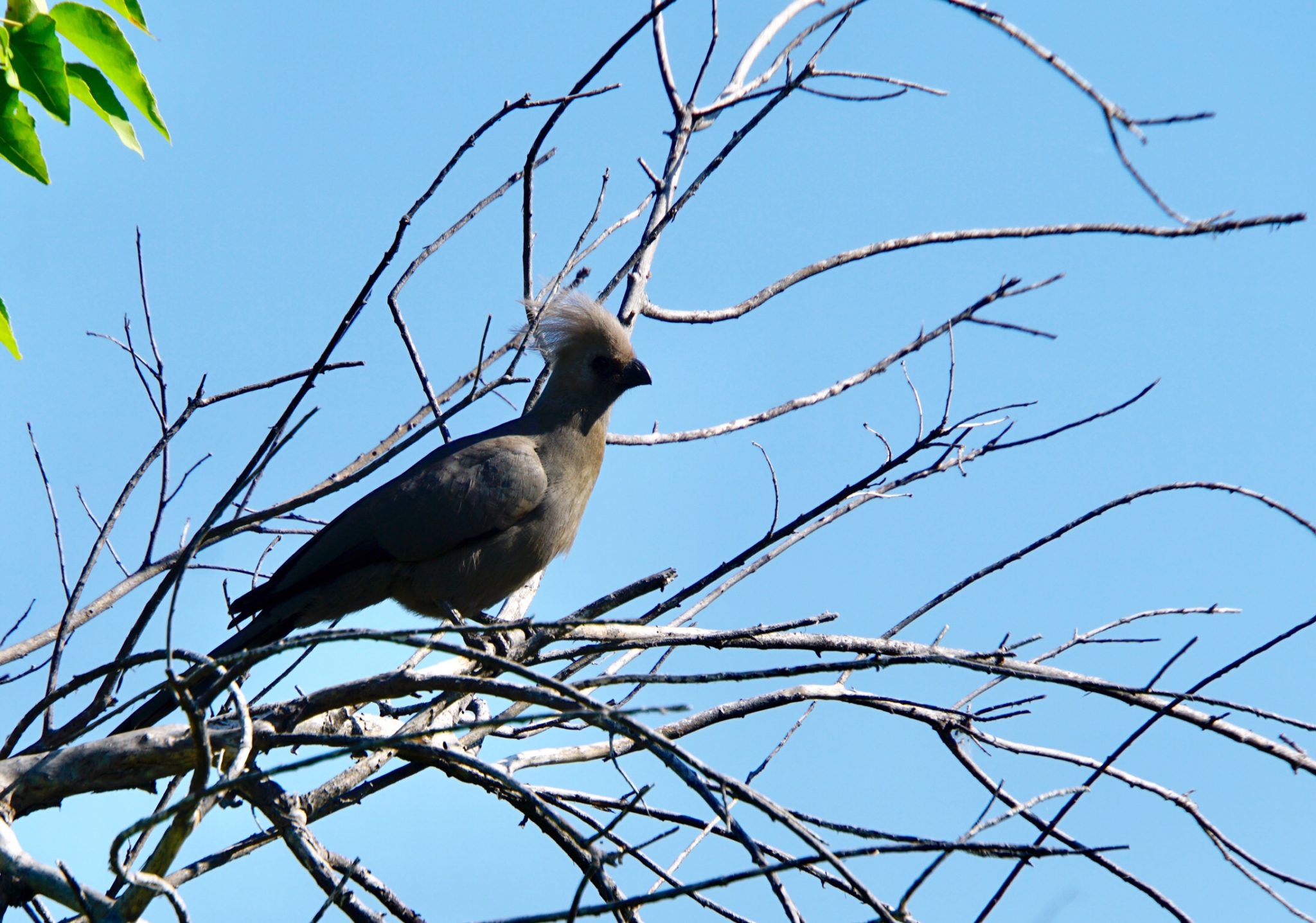
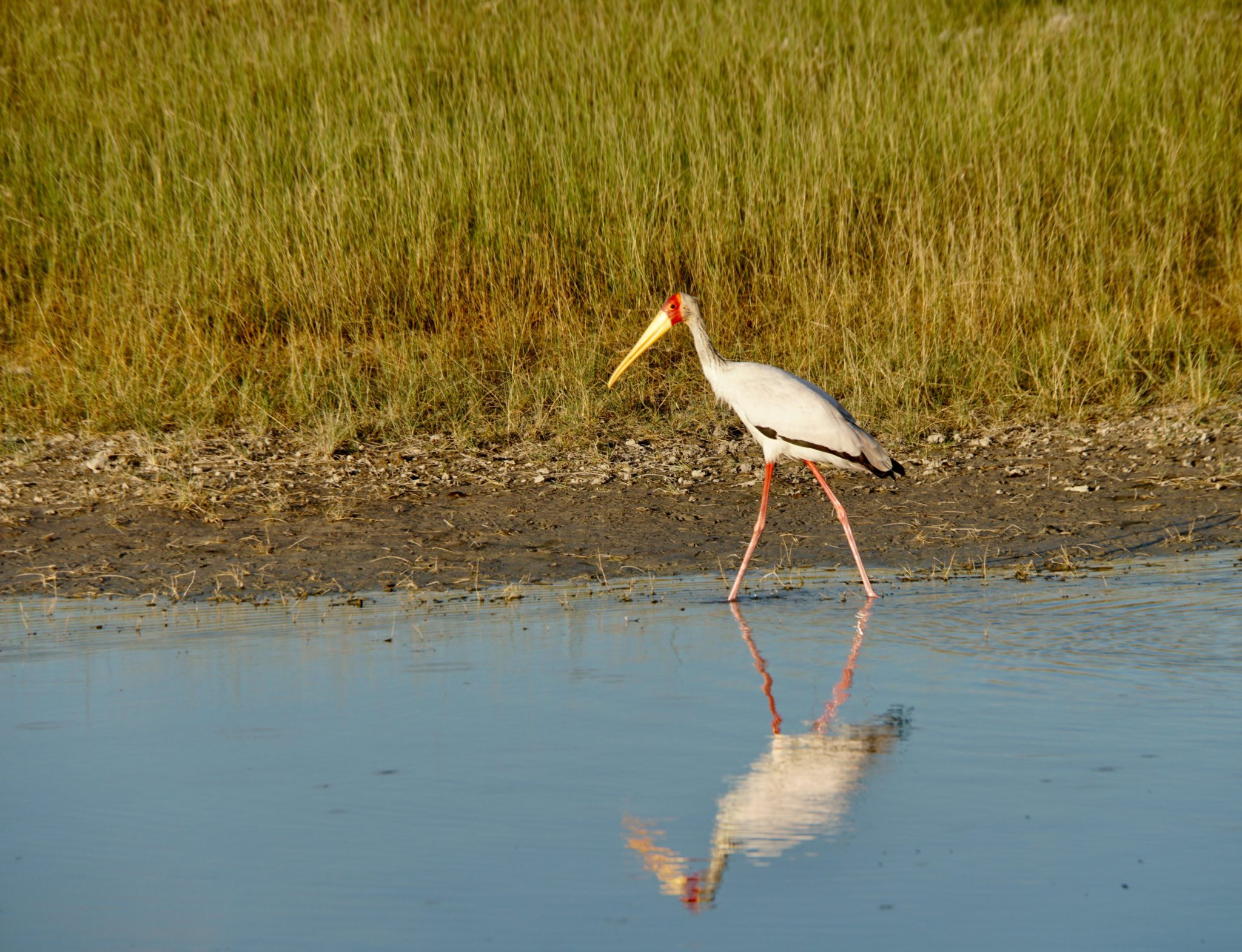
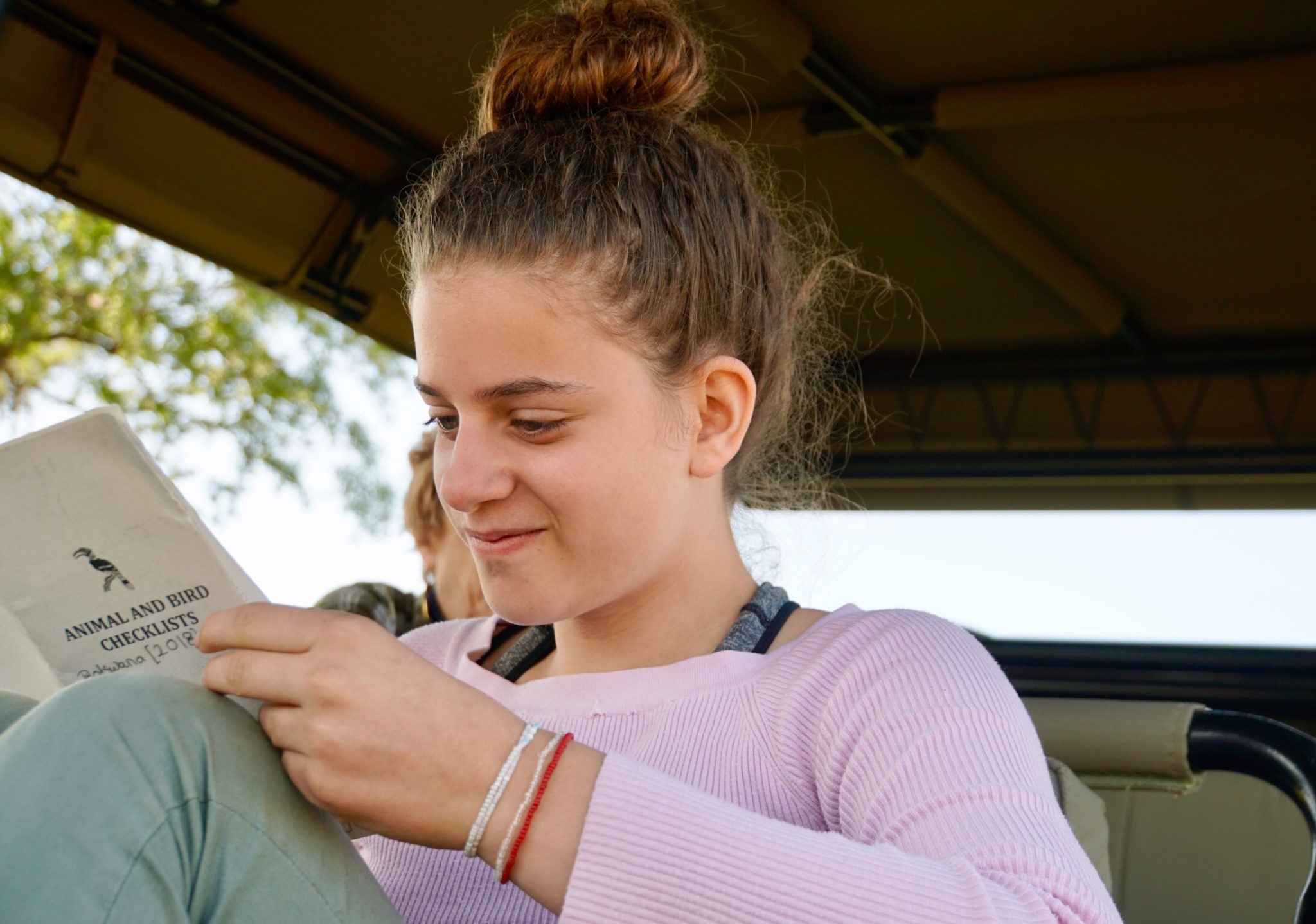
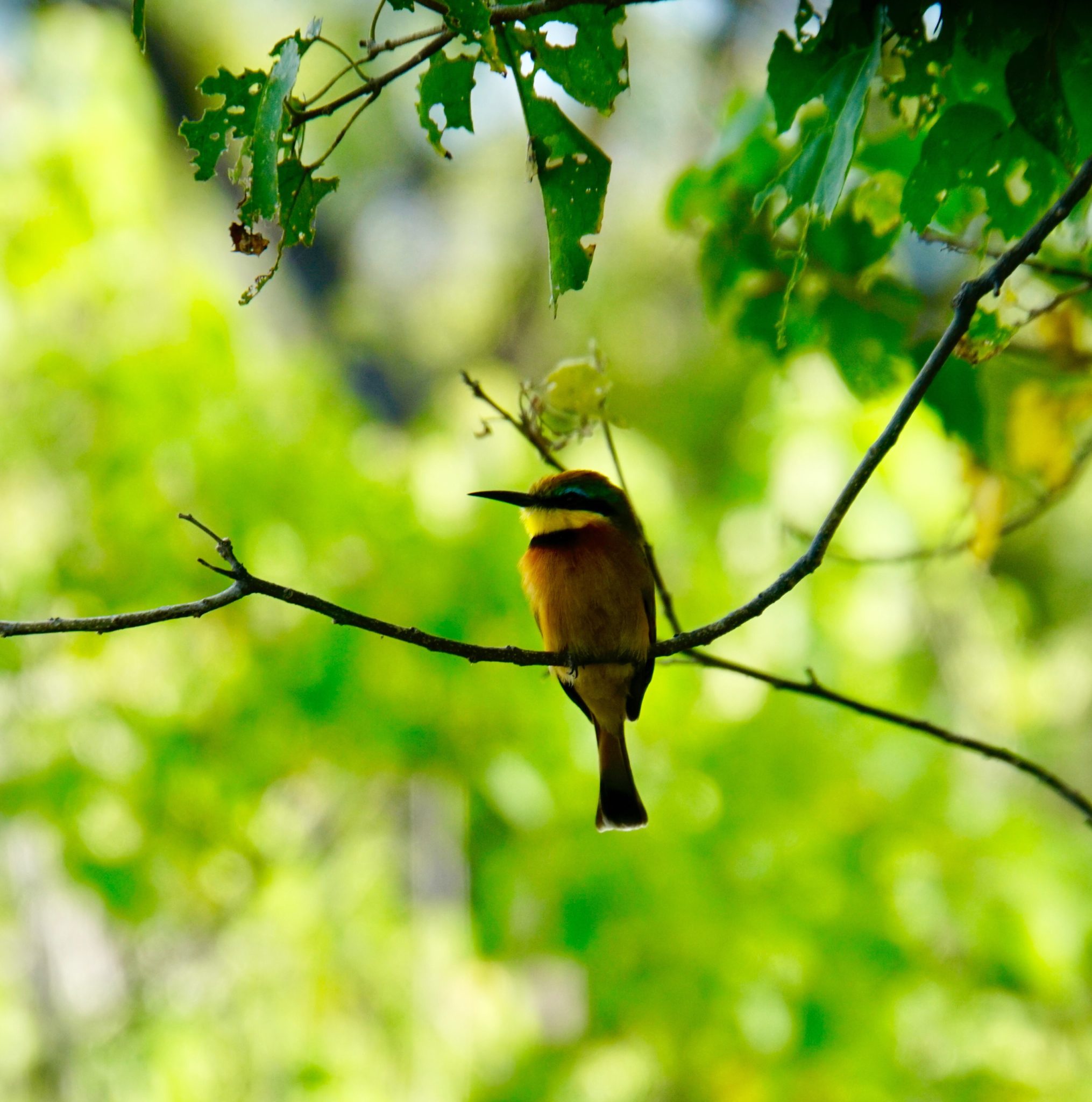
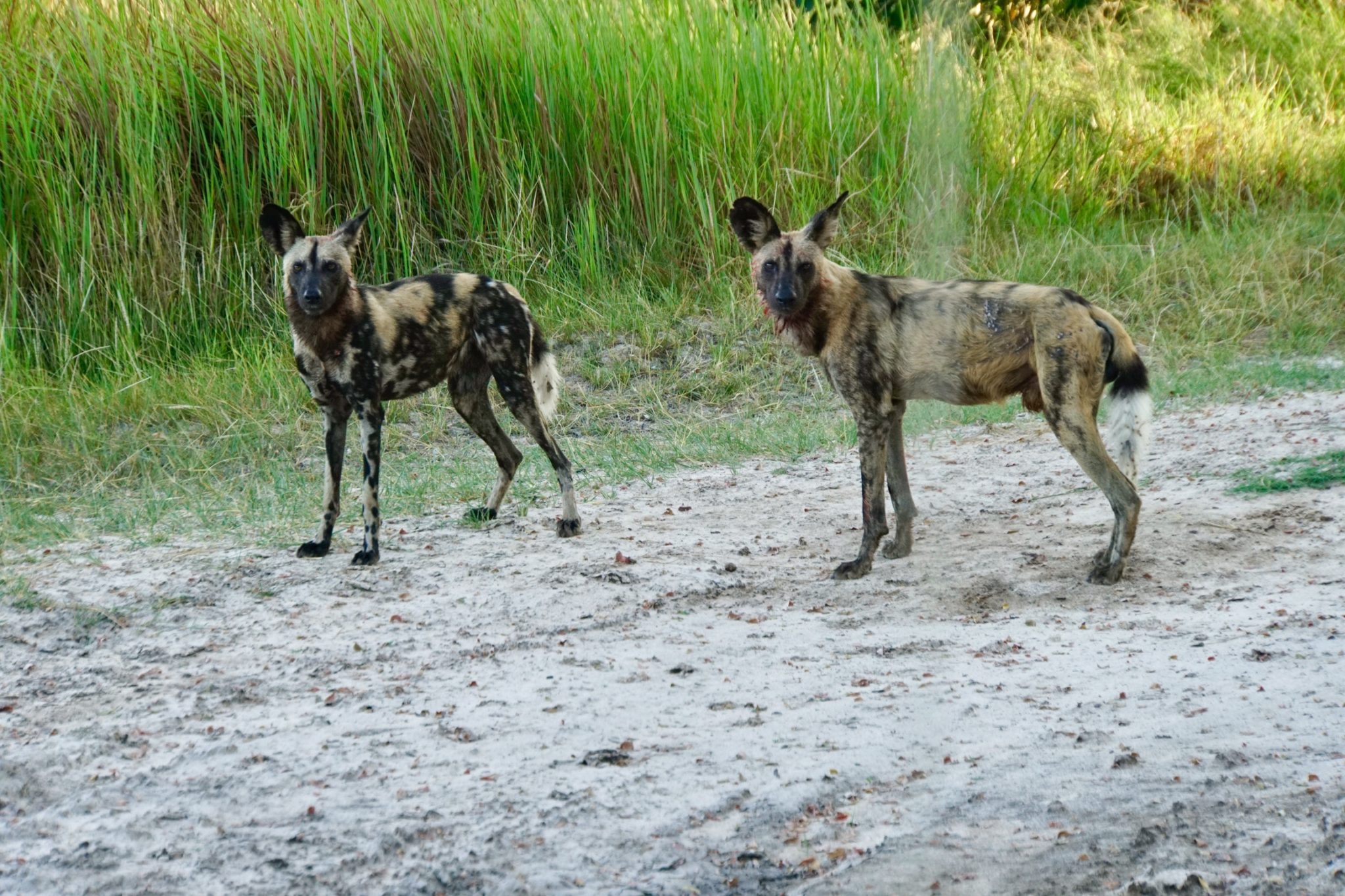
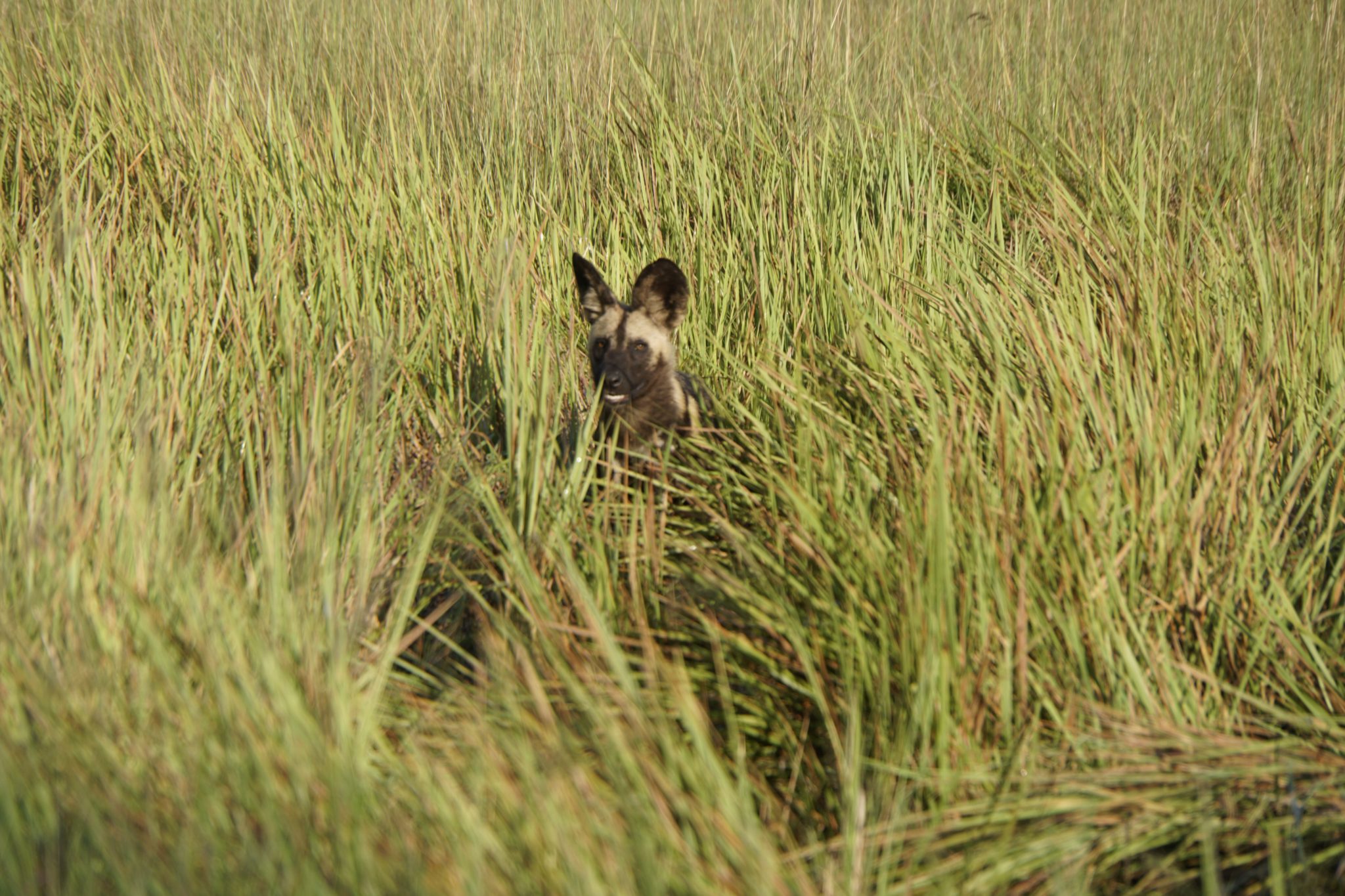
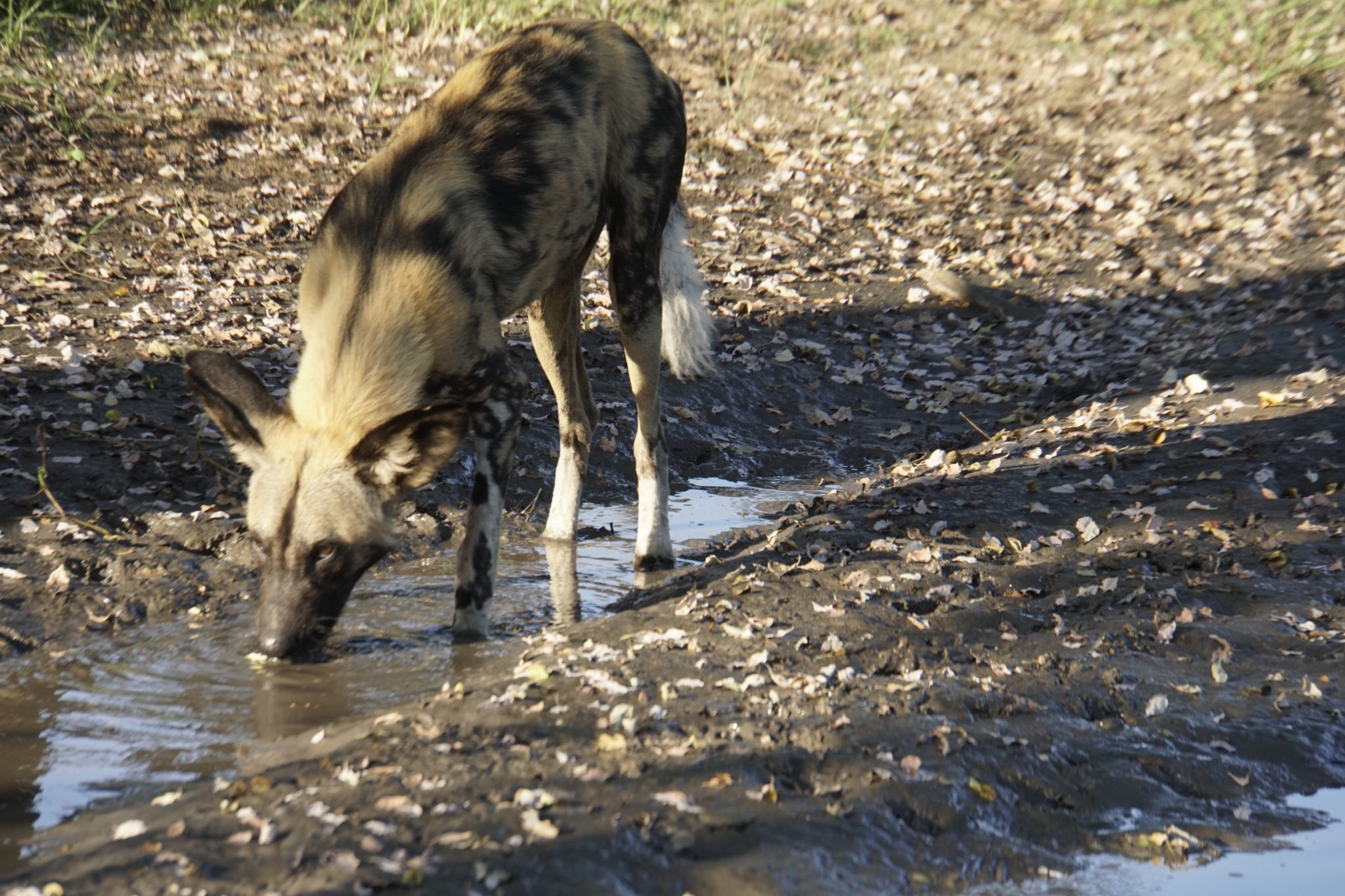
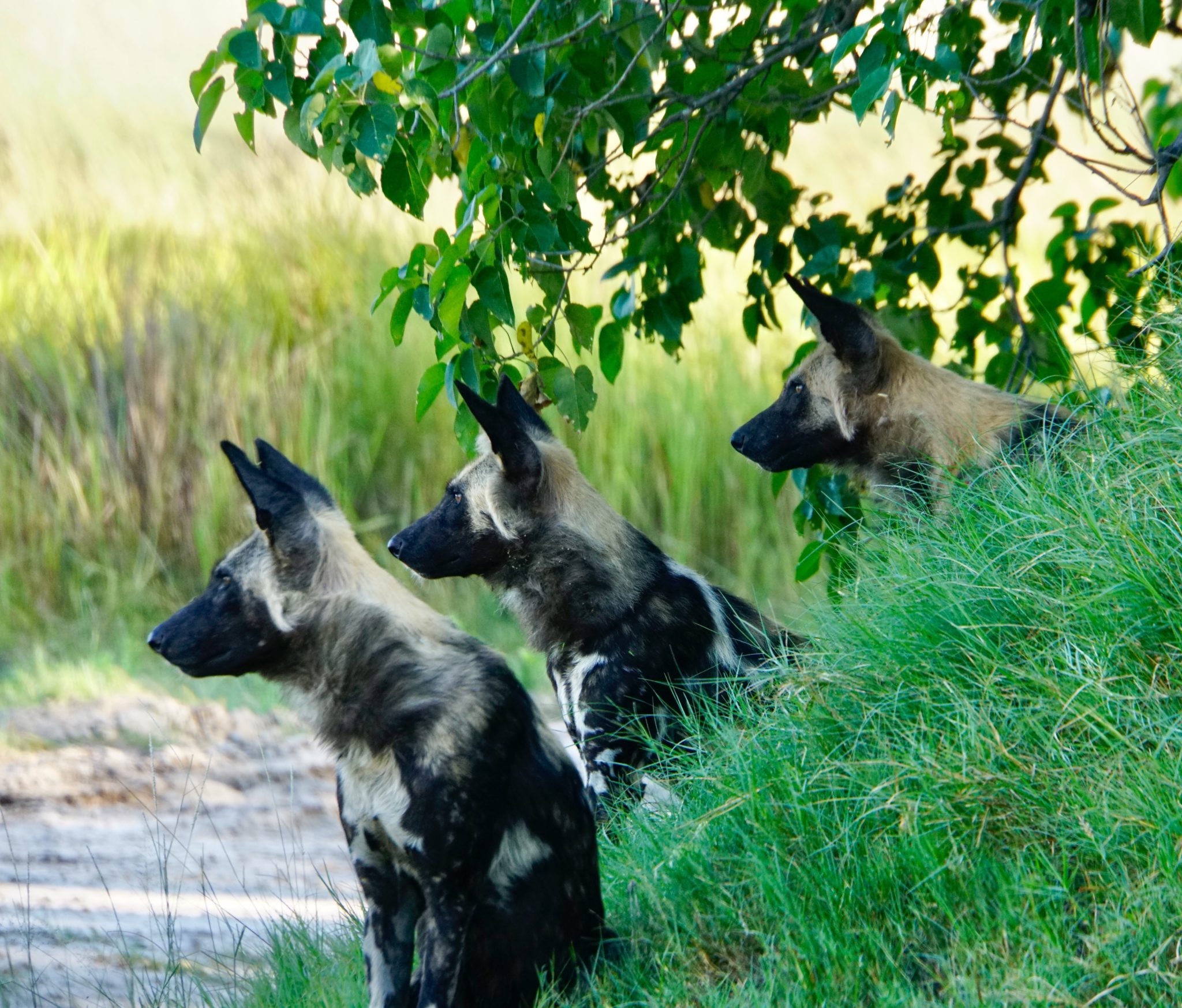
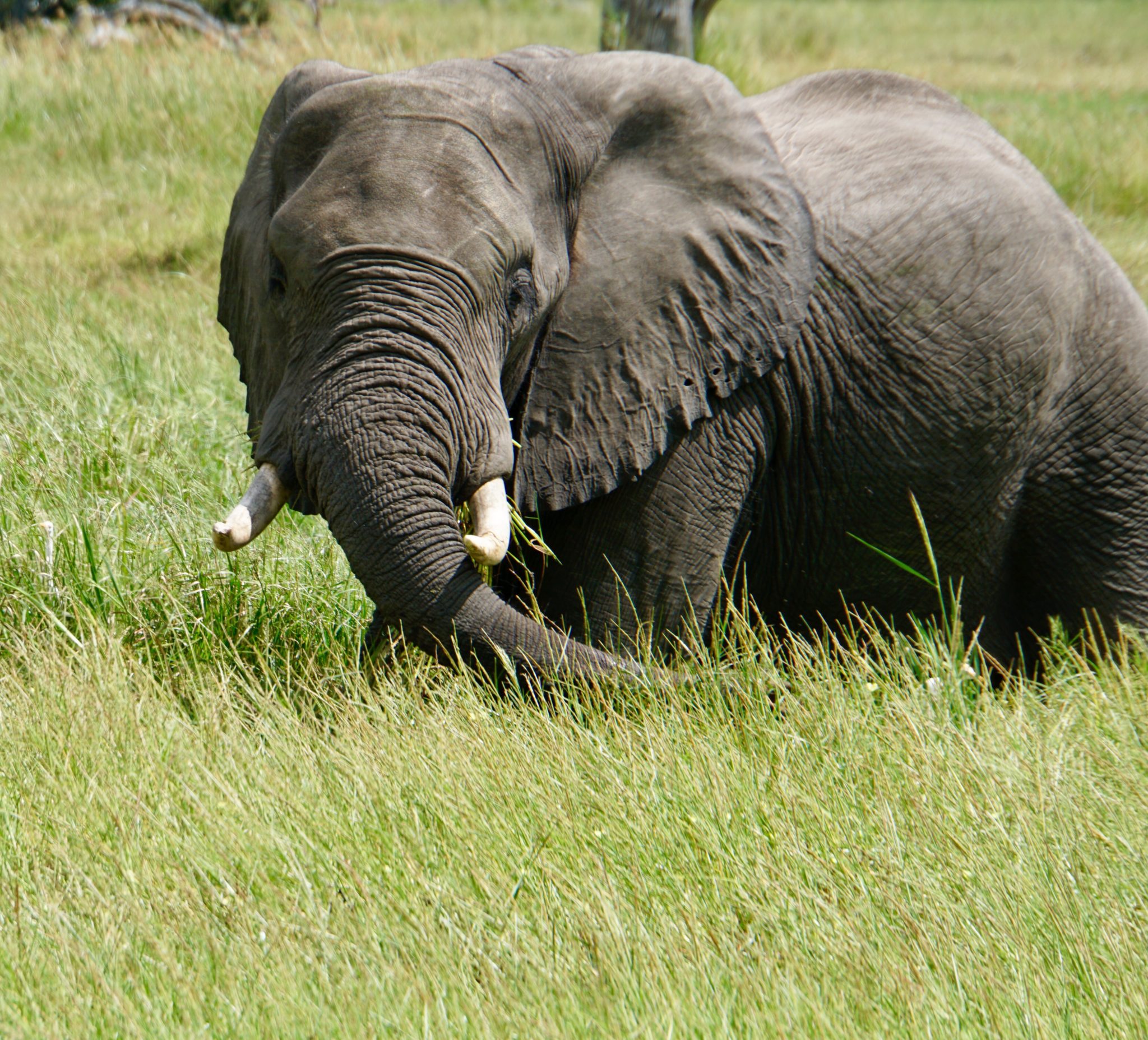

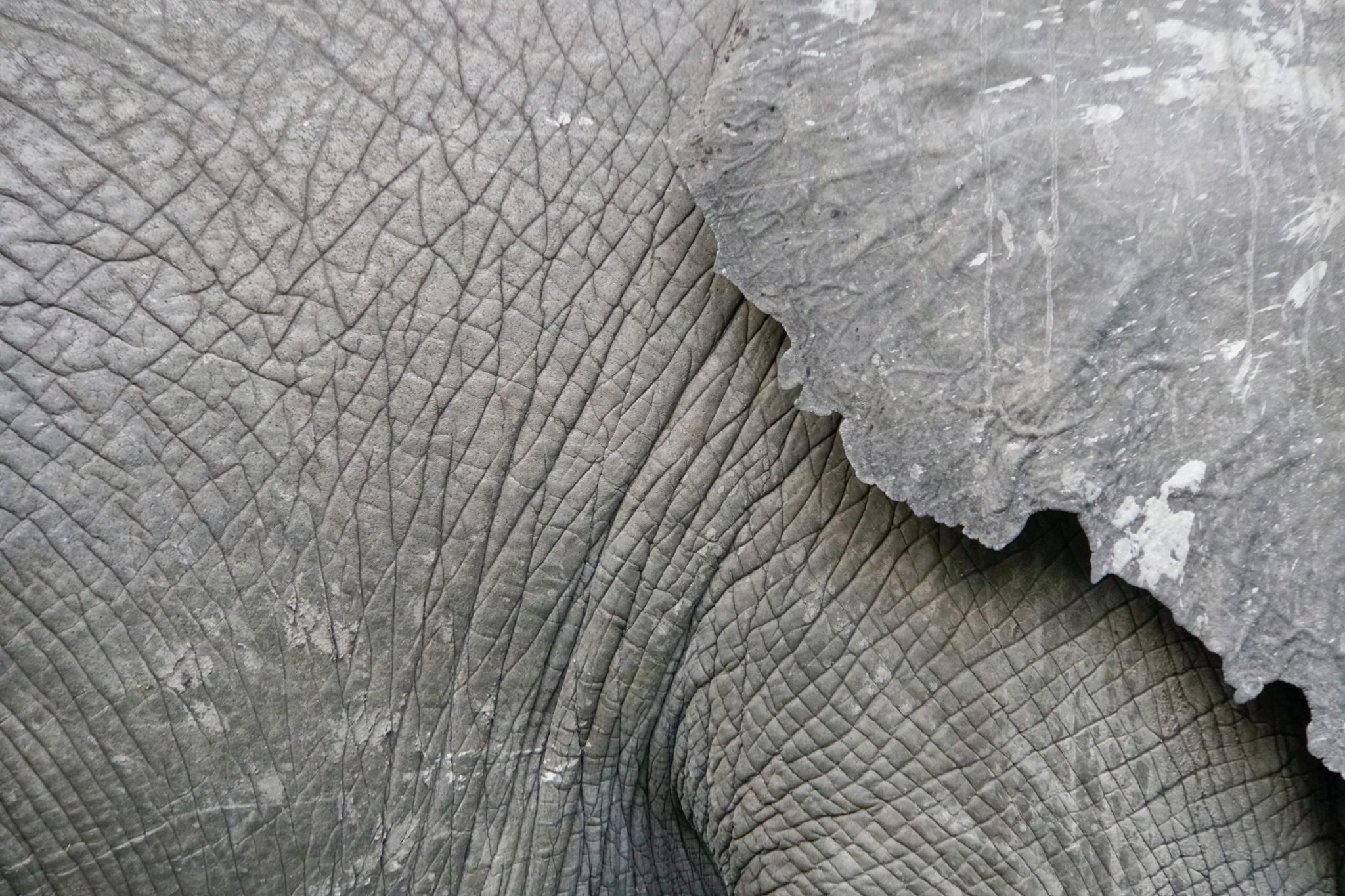
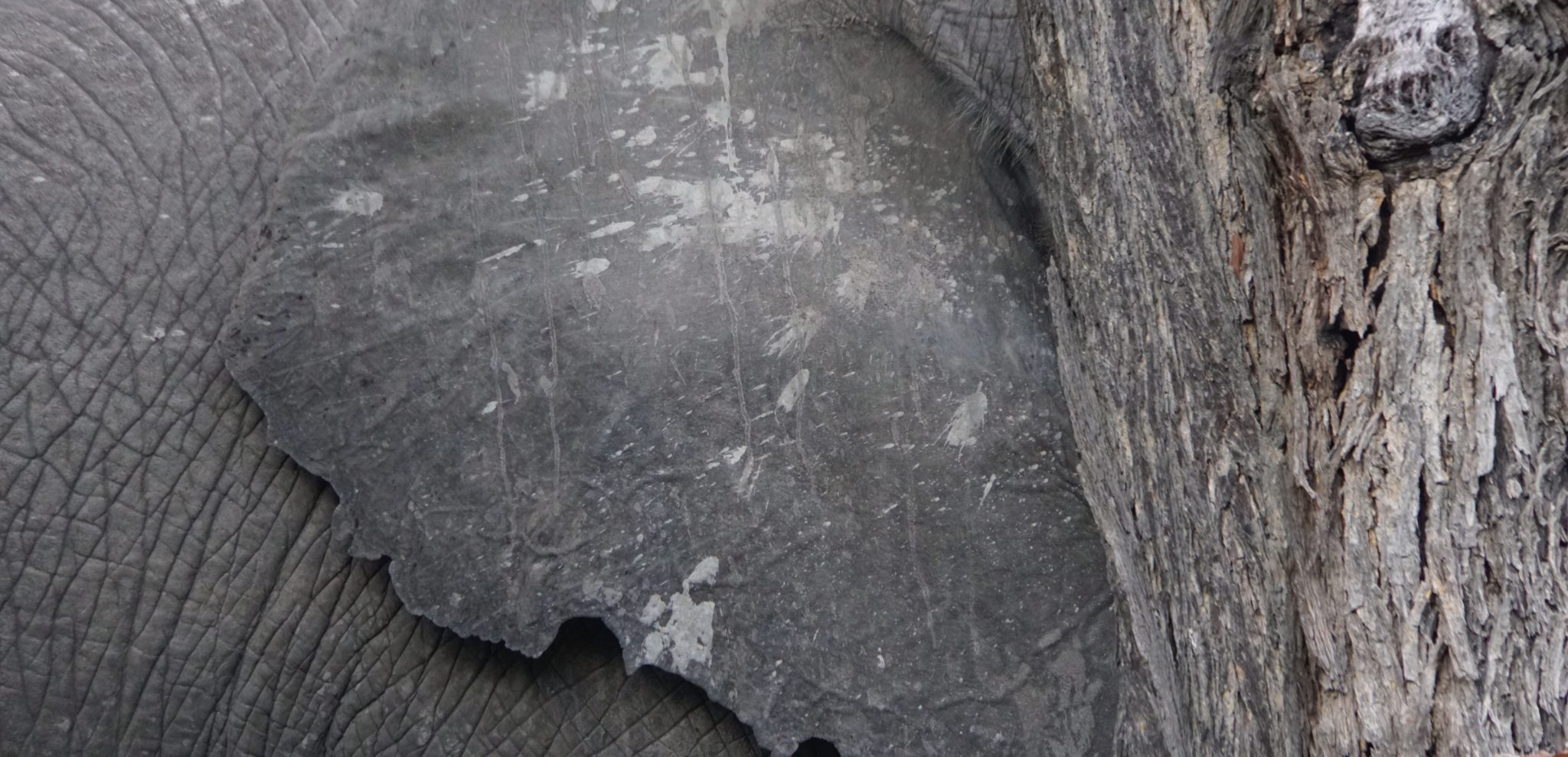
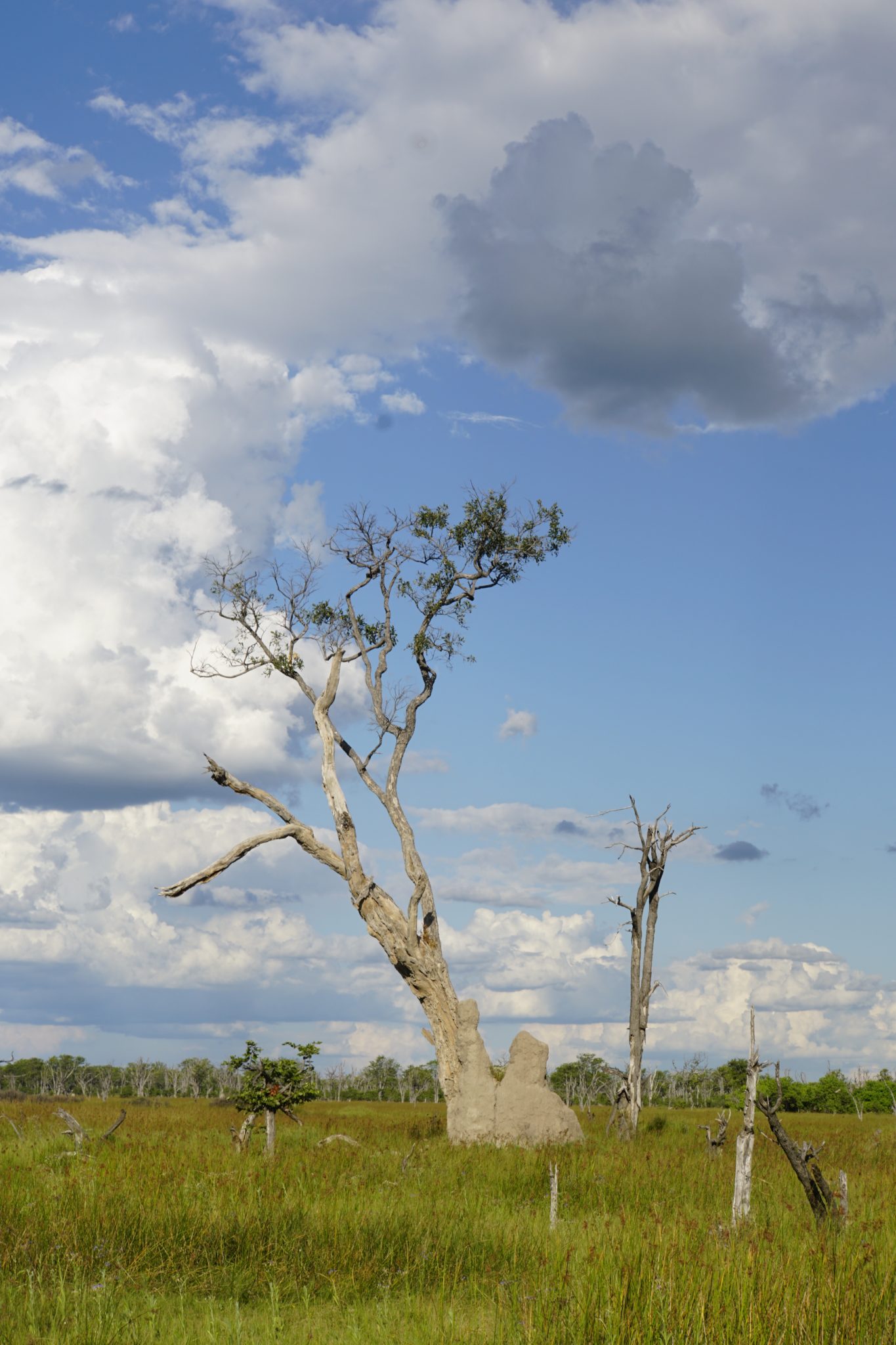
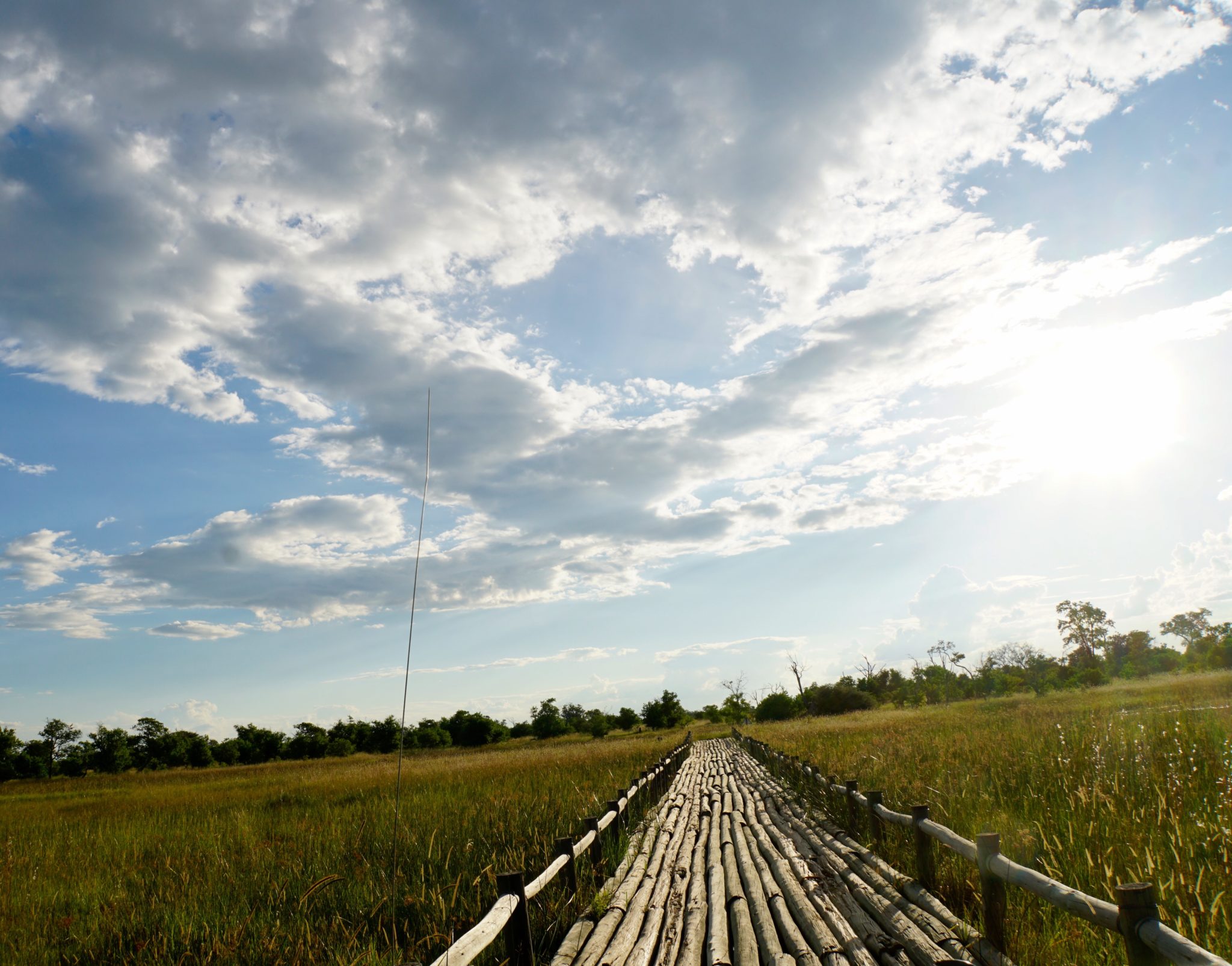
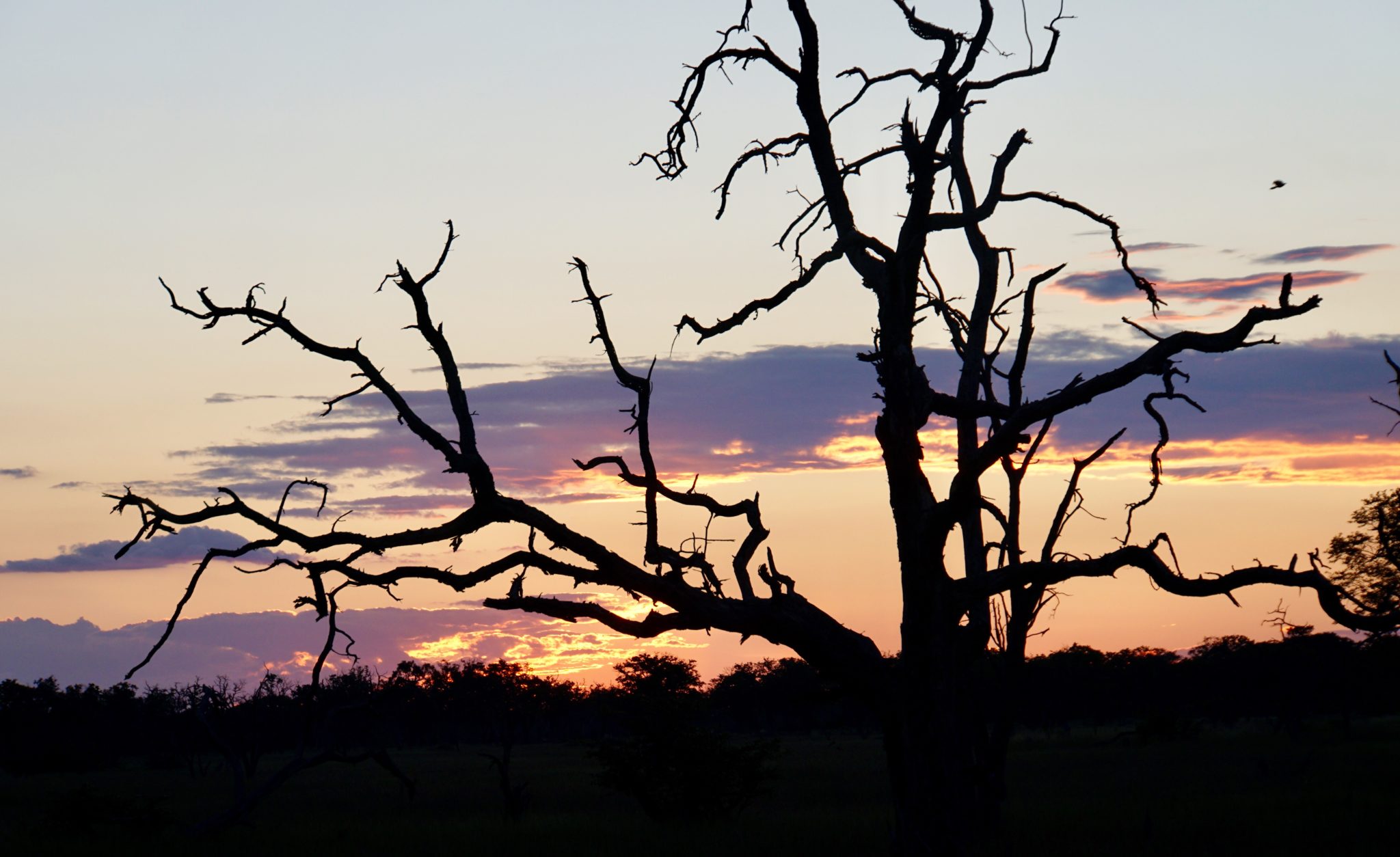













































 In case you are wondering, Phoebe is totally into the experience. She’s taken literally thousands of photos, many of which are very good and some of which are better than mine. We’re going to need to do something about that. She is excellent at spotting animals and birds and does better on naming them than some people; me, for instance. In Atlanta, Phoebe sometimes gets anxious about situations. She’s shown no anxiety on this trip, despite ample opportunity for it, if one were so inclined. Evidently, the kid is born for the wilderness.
In case you are wondering, Phoebe is totally into the experience. She’s taken literally thousands of photos, many of which are very good and some of which are better than mine. We’re going to need to do something about that. She is excellent at spotting animals and birds and does better on naming them than some people; me, for instance. In Atlanta, Phoebe sometimes gets anxious about situations. She’s shown no anxiety on this trip, despite ample opportunity for it, if one were so inclined. Evidently, the kid is born for the wilderness.












 We rolled back into camp at a bit after noon (five hours after leaving) and had an excellent cooked lunch . We have several hours to relax, blog, read, shower and nap before we set out once more at four this afternoon.
We rolled back into camp at a bit after noon (five hours after leaving) and had an excellent cooked lunch . We have several hours to relax, blog, read, shower and nap before we set out once more at four this afternoon.



 We returned to camp, where I took a hot bucket shower before another excellent dinner, then retired. The soups at dinner are terrific, but they’re put completely over the top by pouring into them a bit of sherry with chilis in it. (This becomes a nightly treat.)
We returned to camp, where I took a hot bucket shower before another excellent dinner, then retired. The soups at dinner are terrific, but they’re put completely over the top by pouring into them a bit of sherry with chilis in it. (This becomes a nightly treat.)